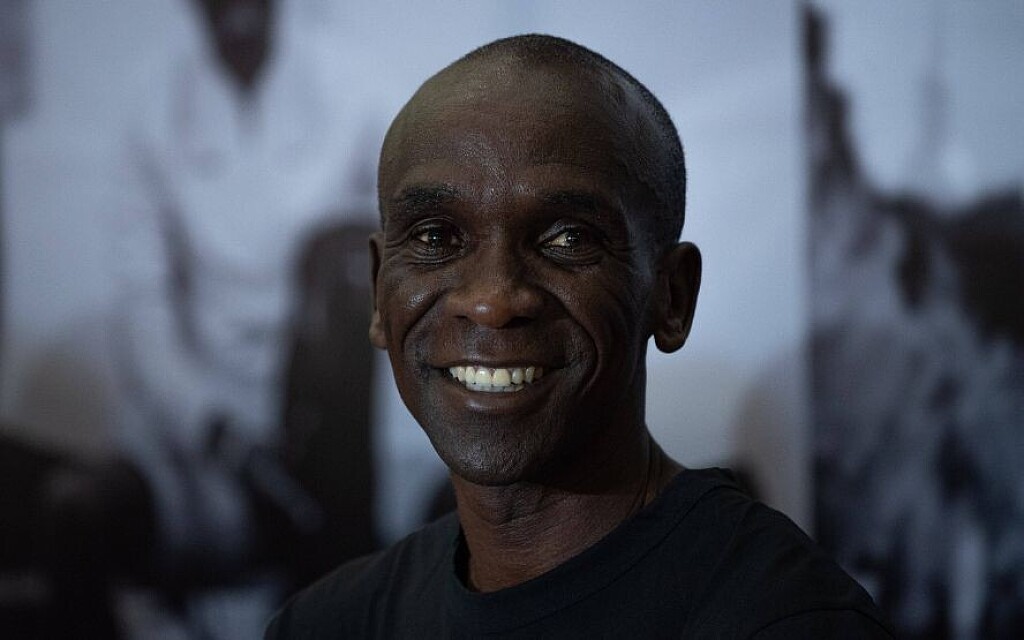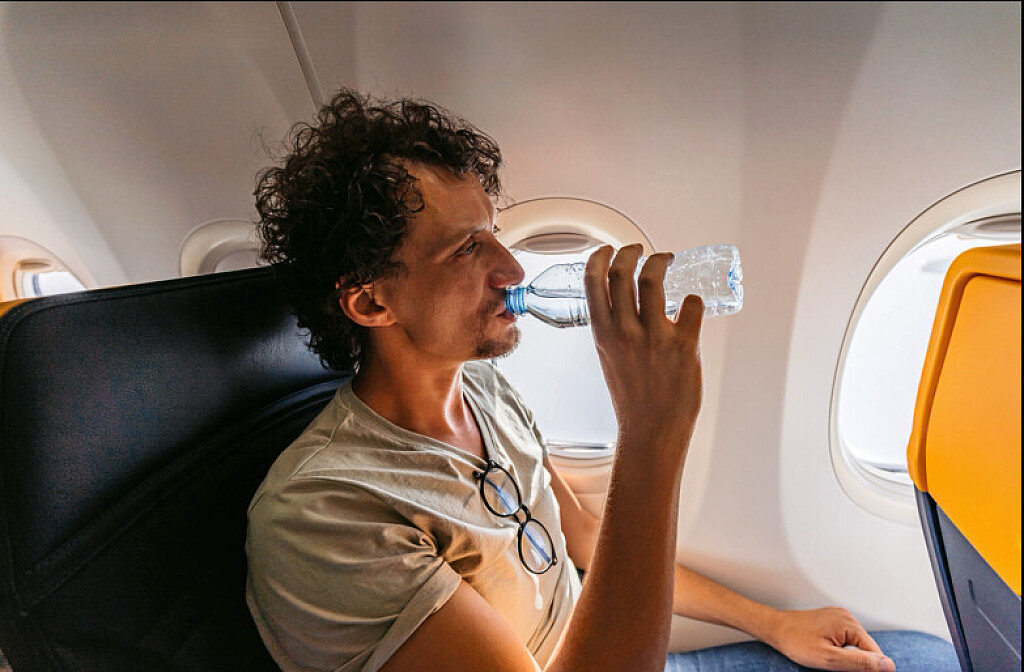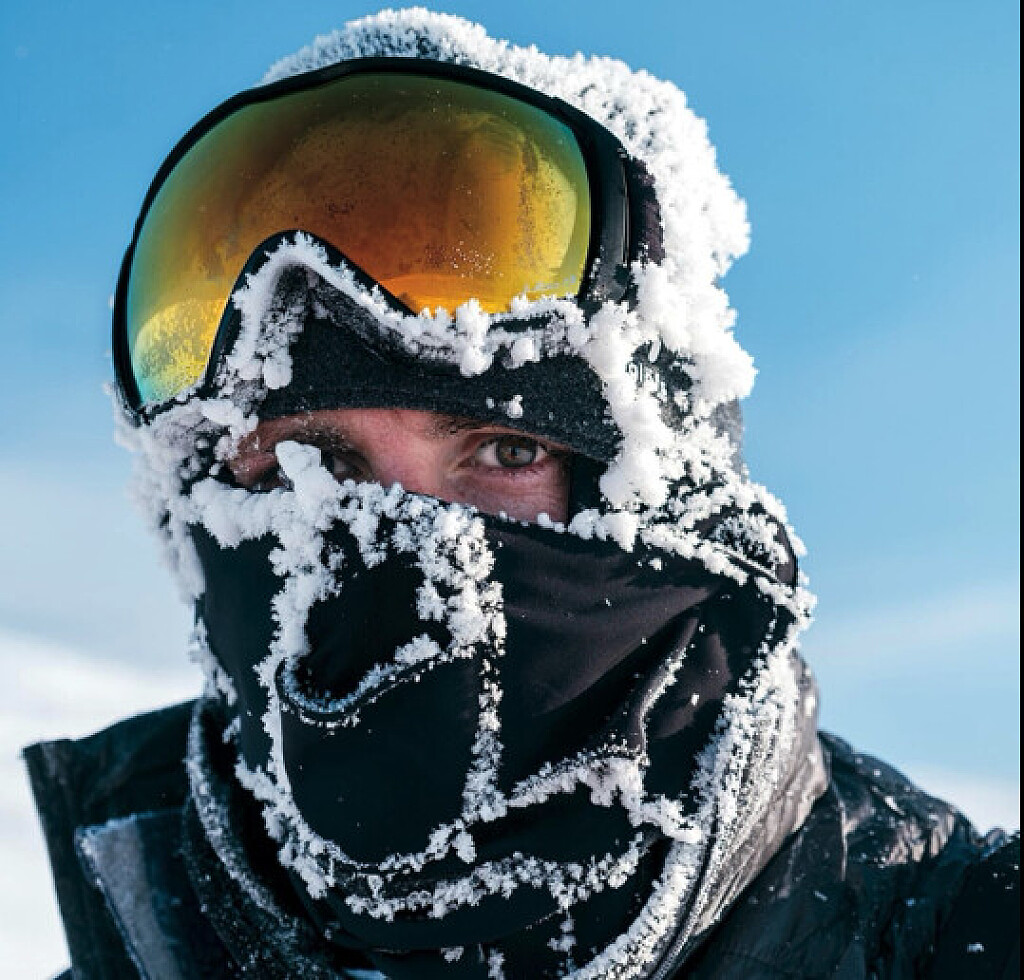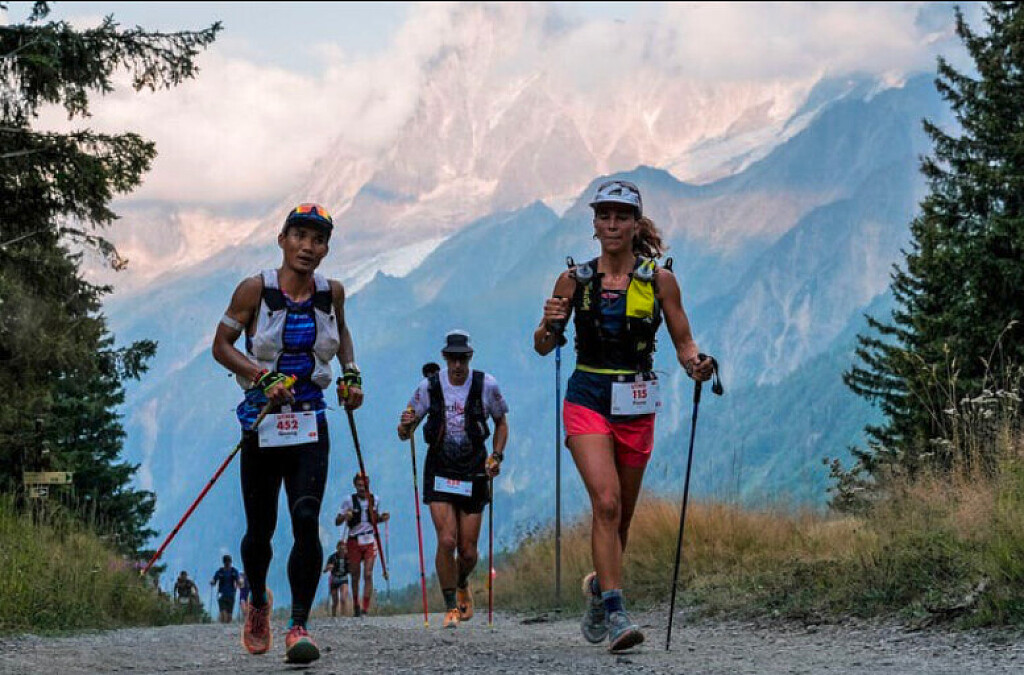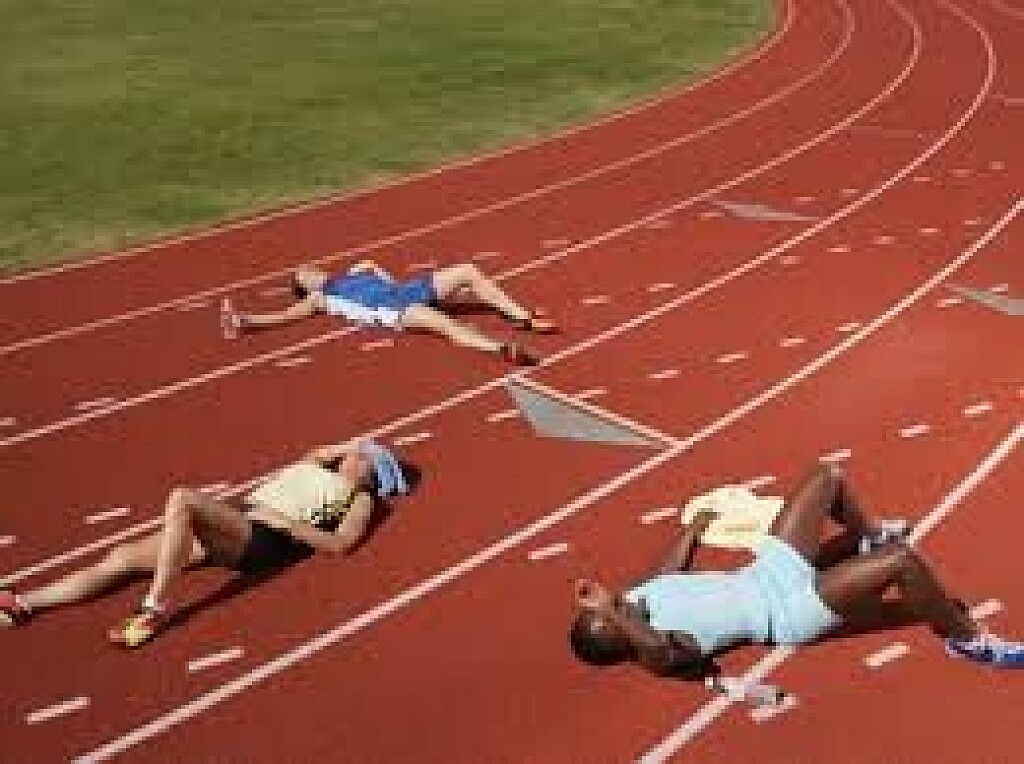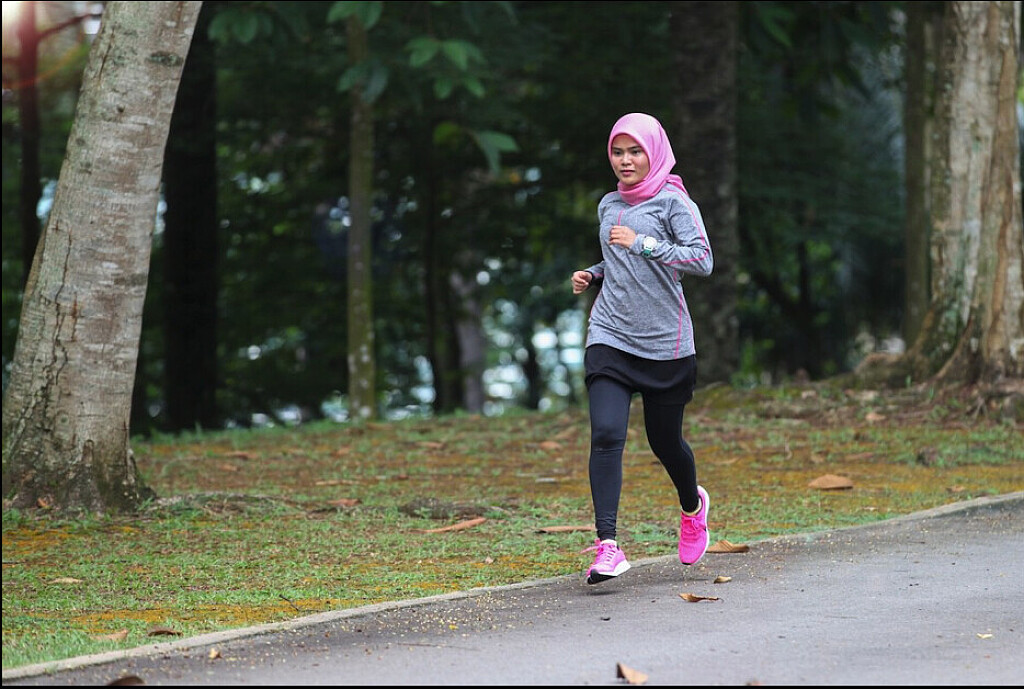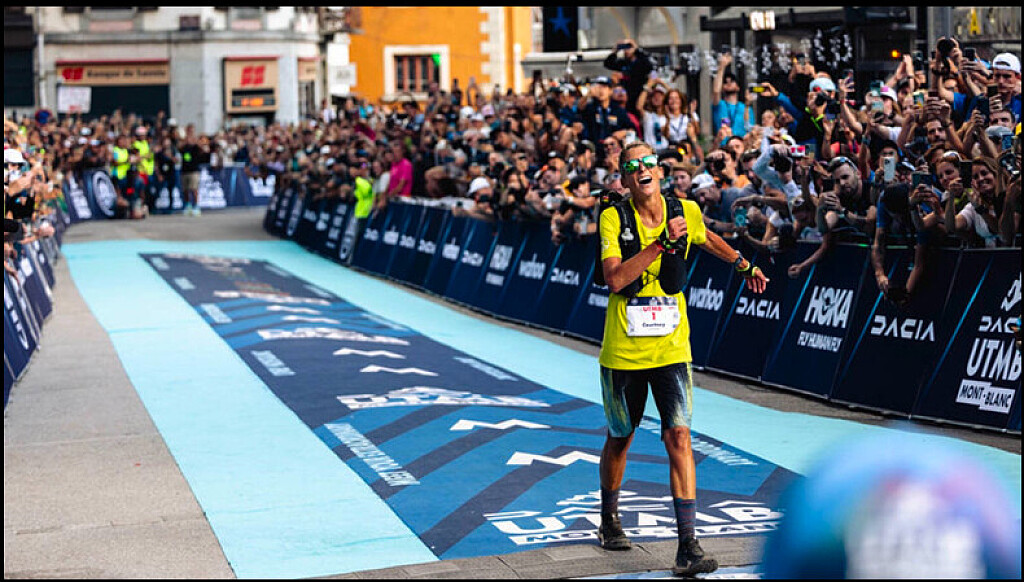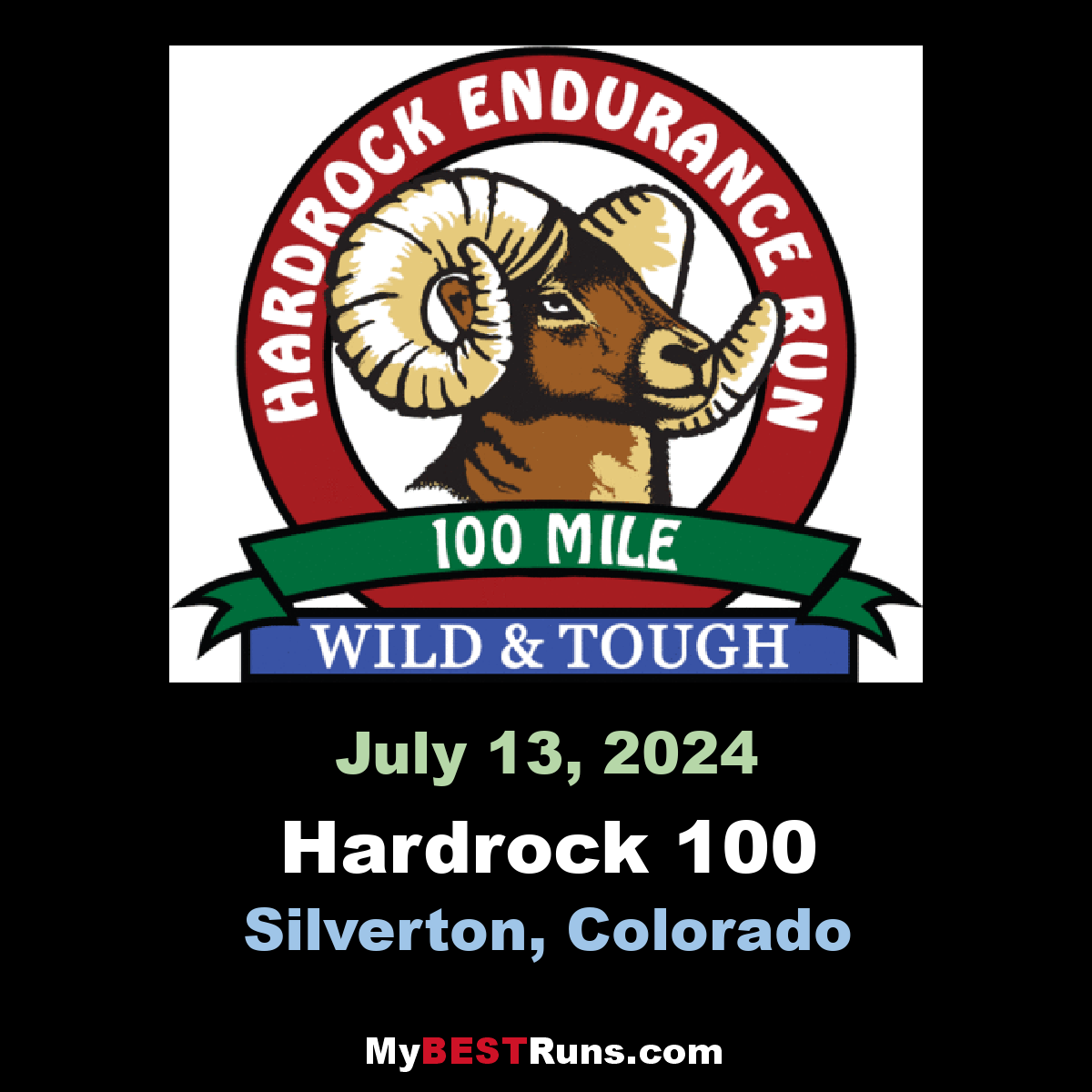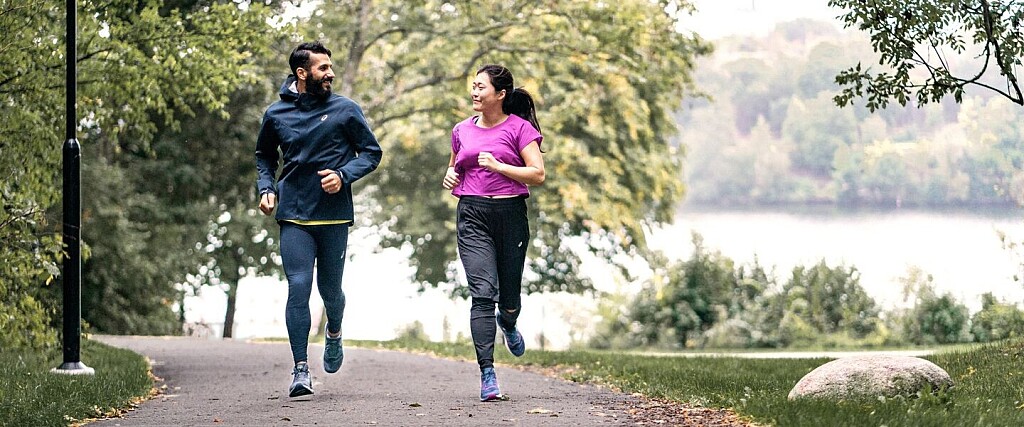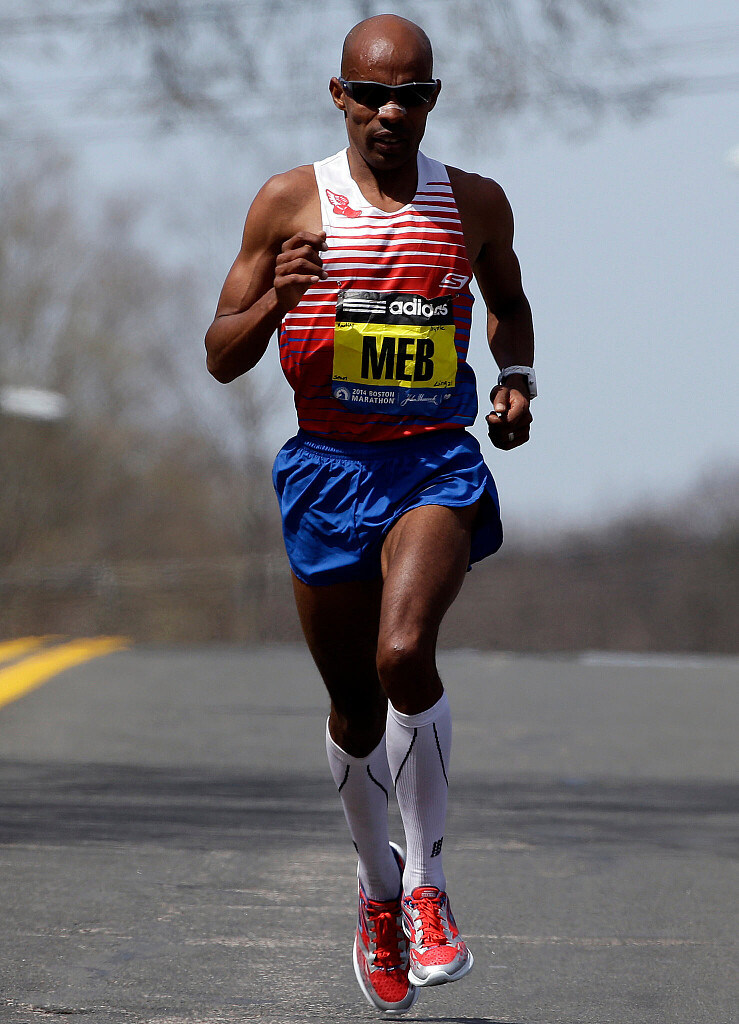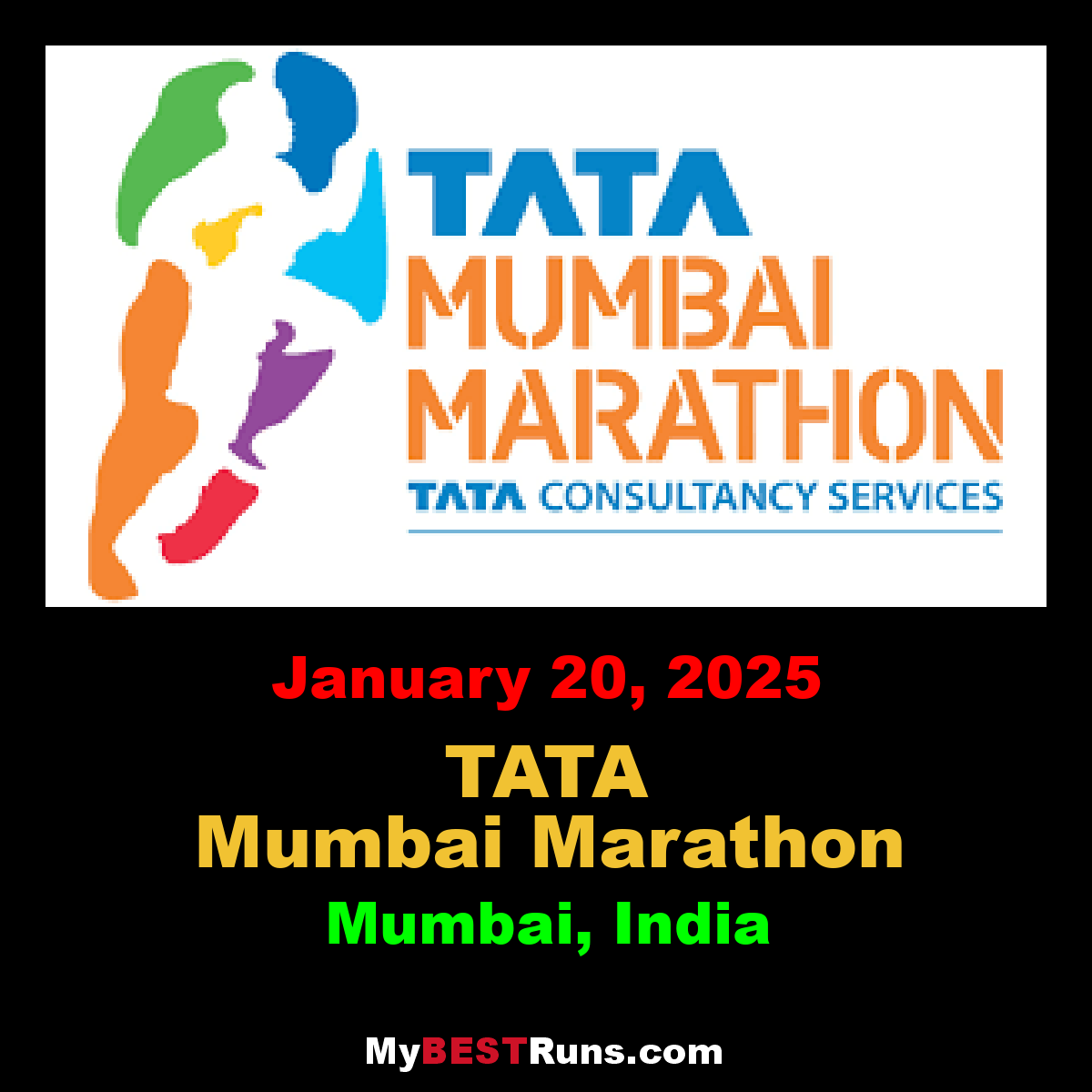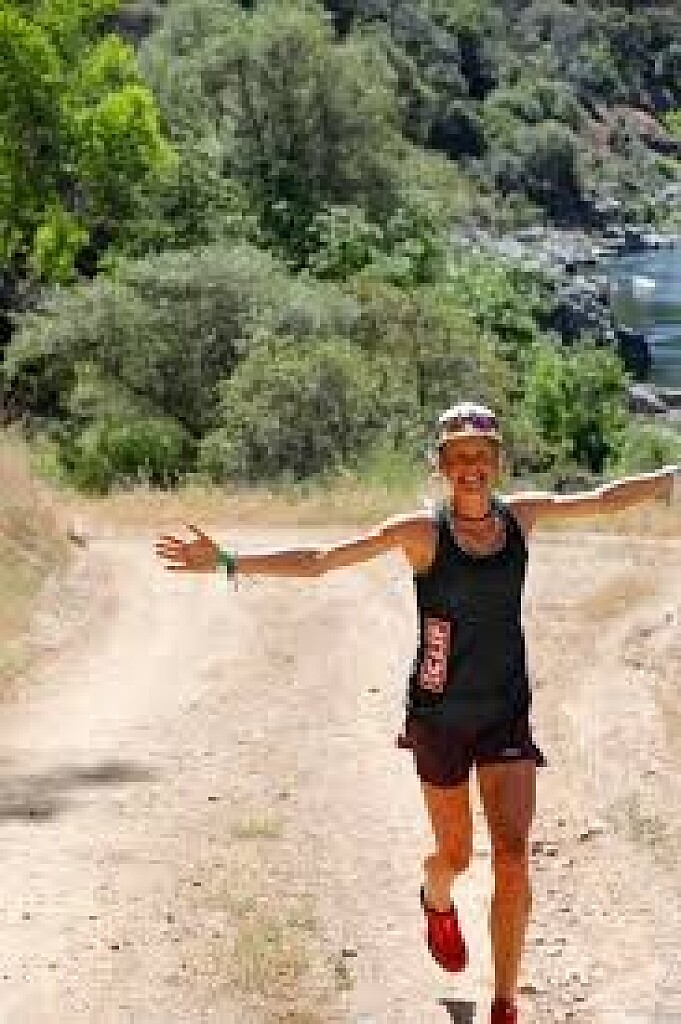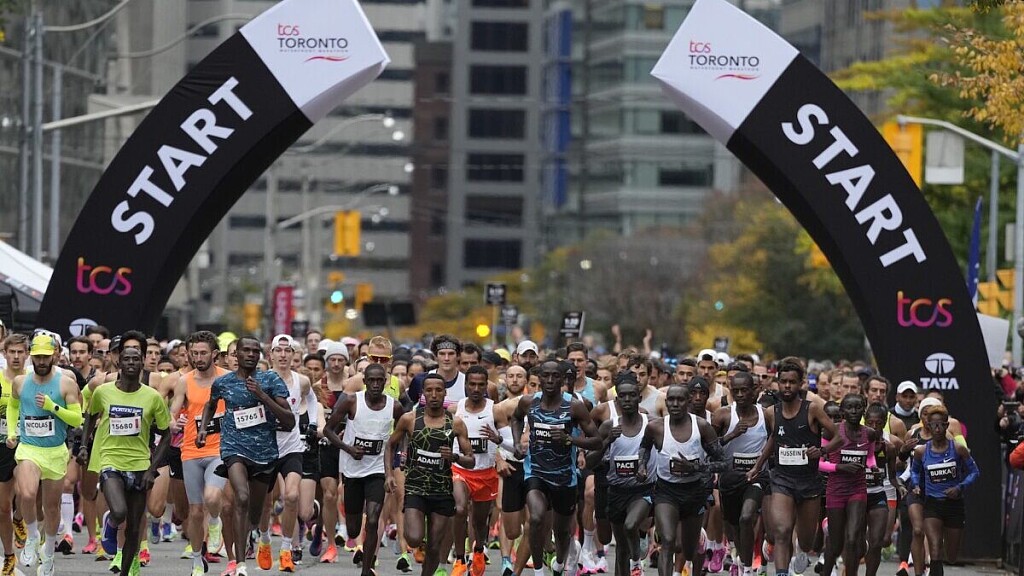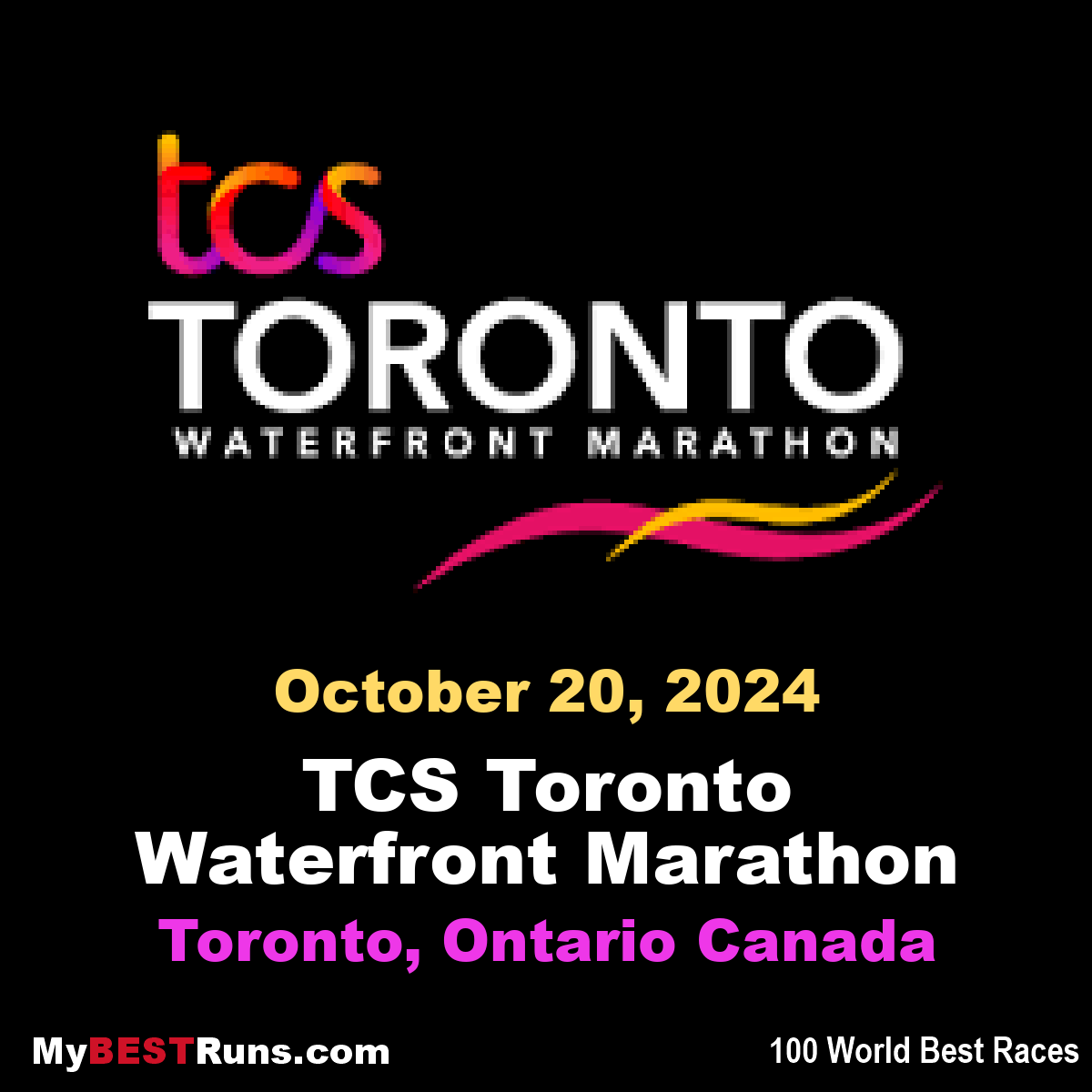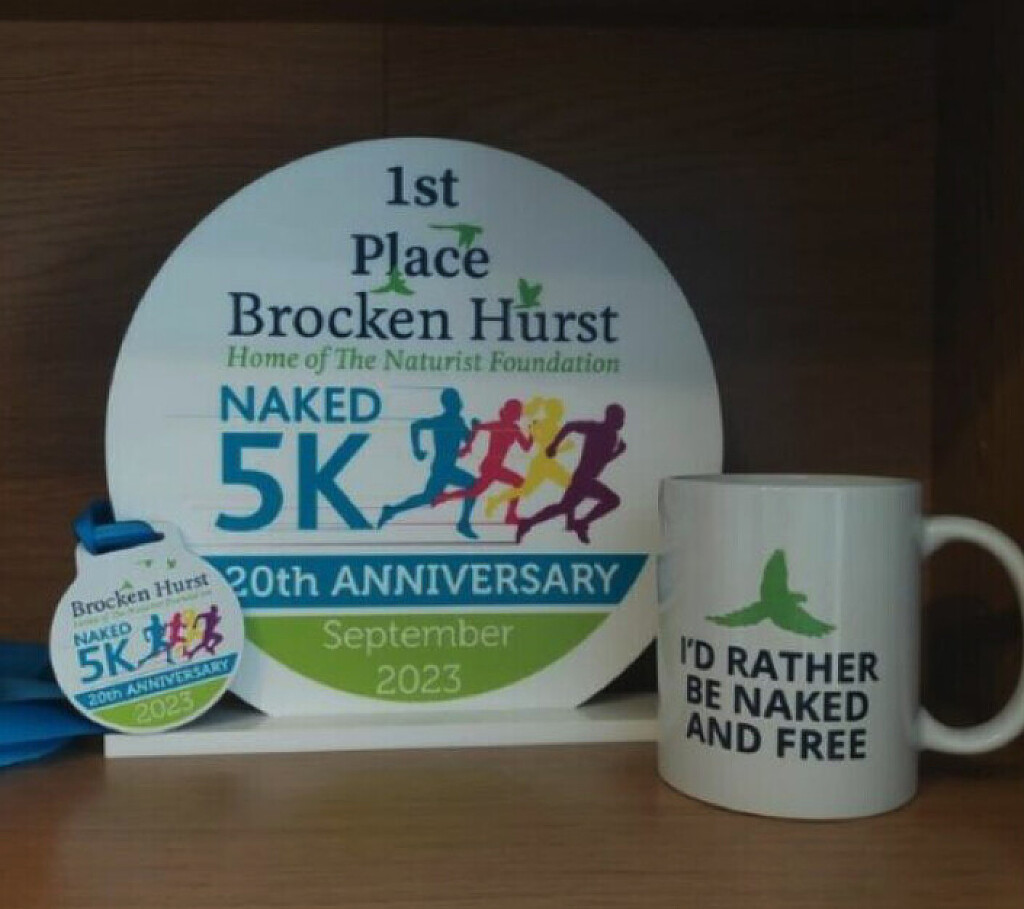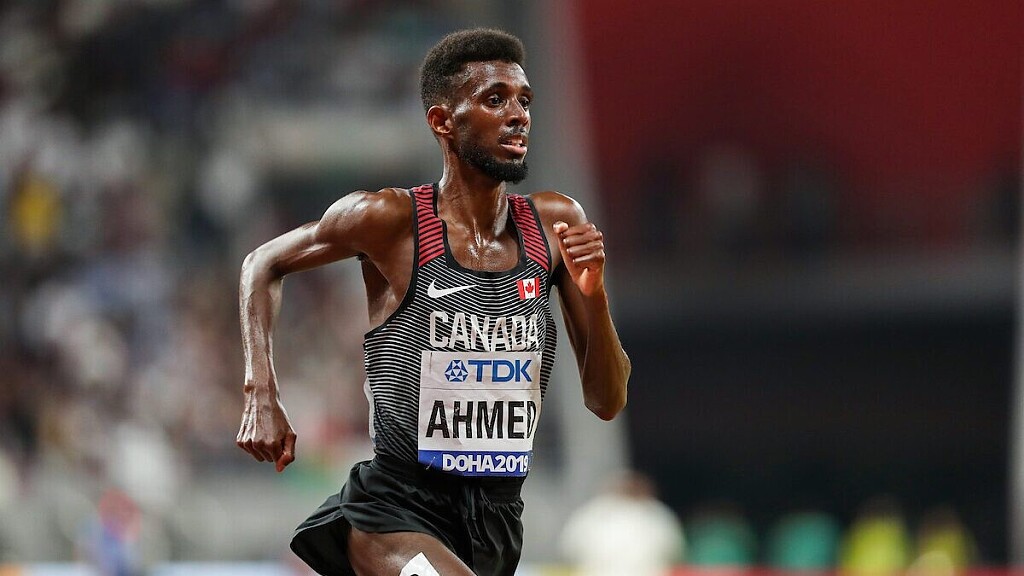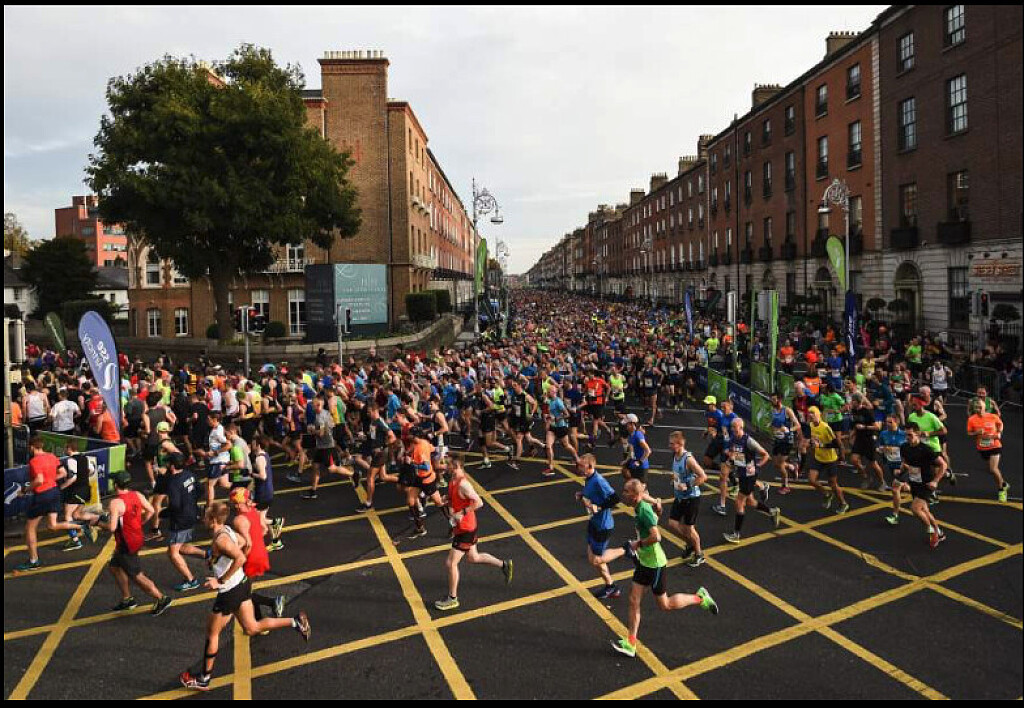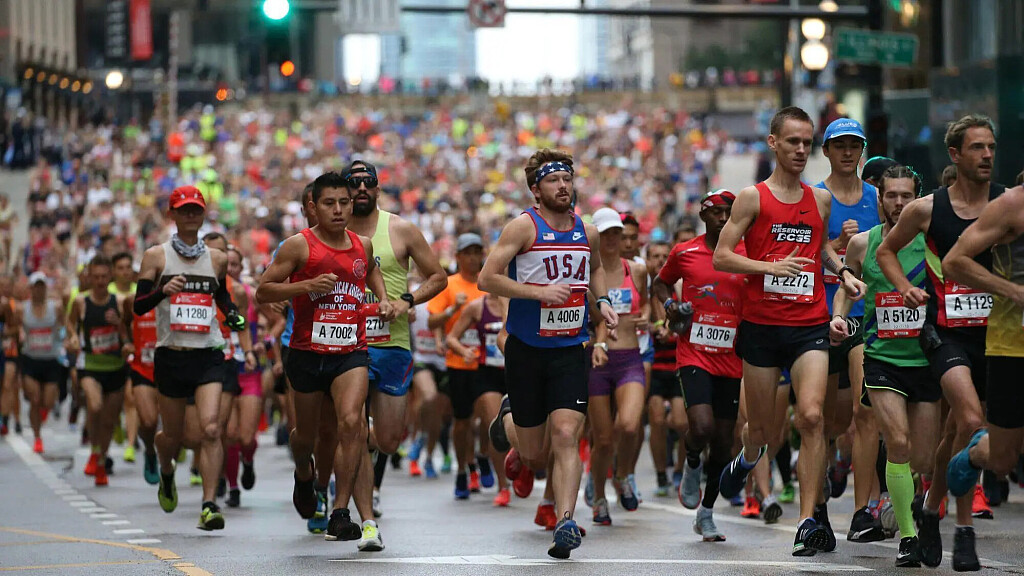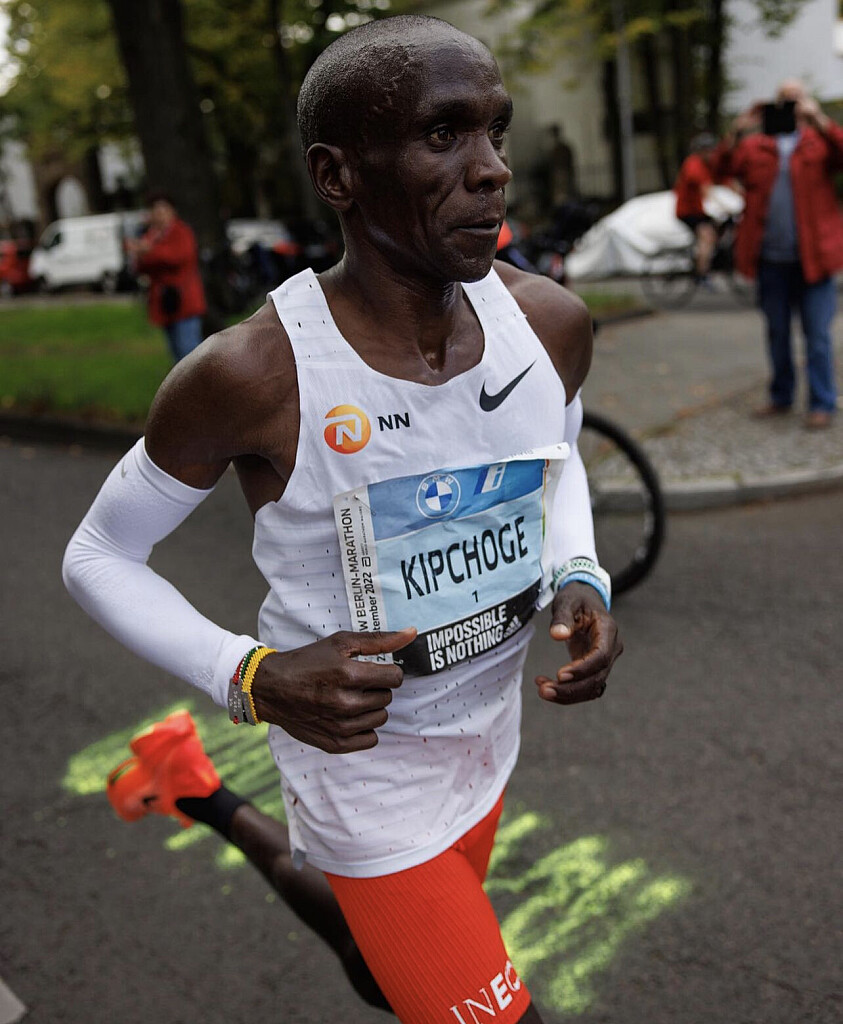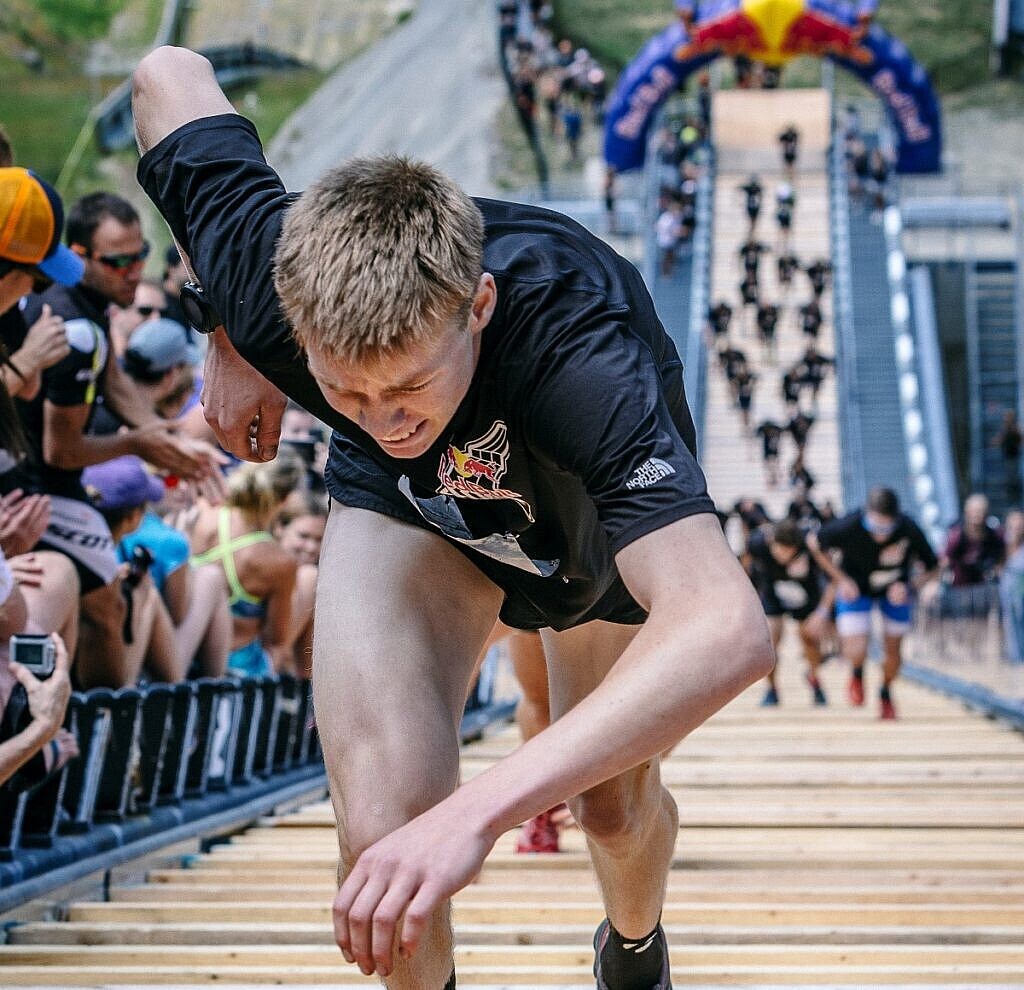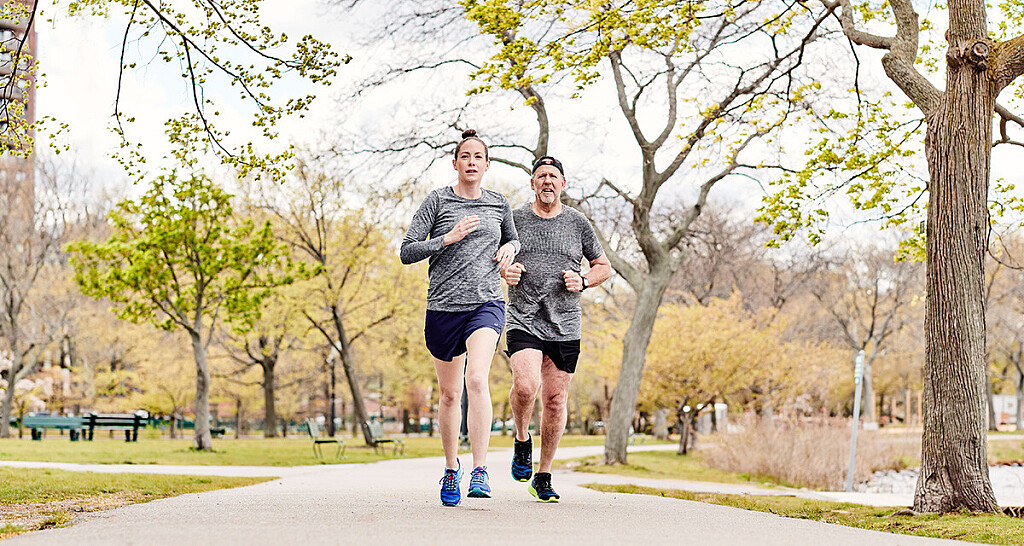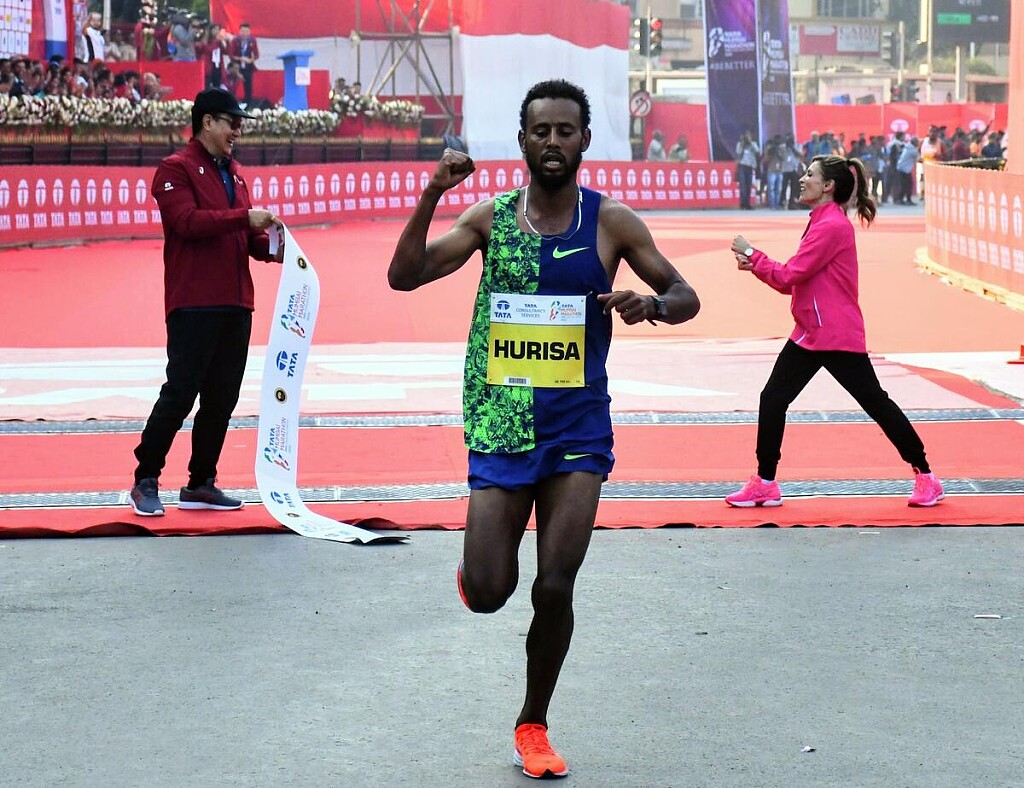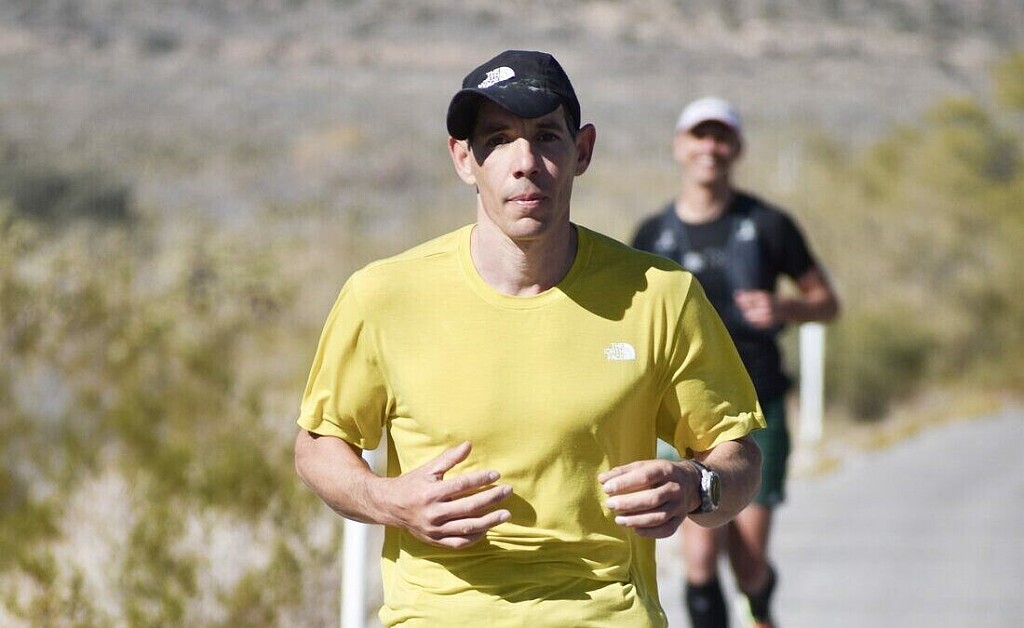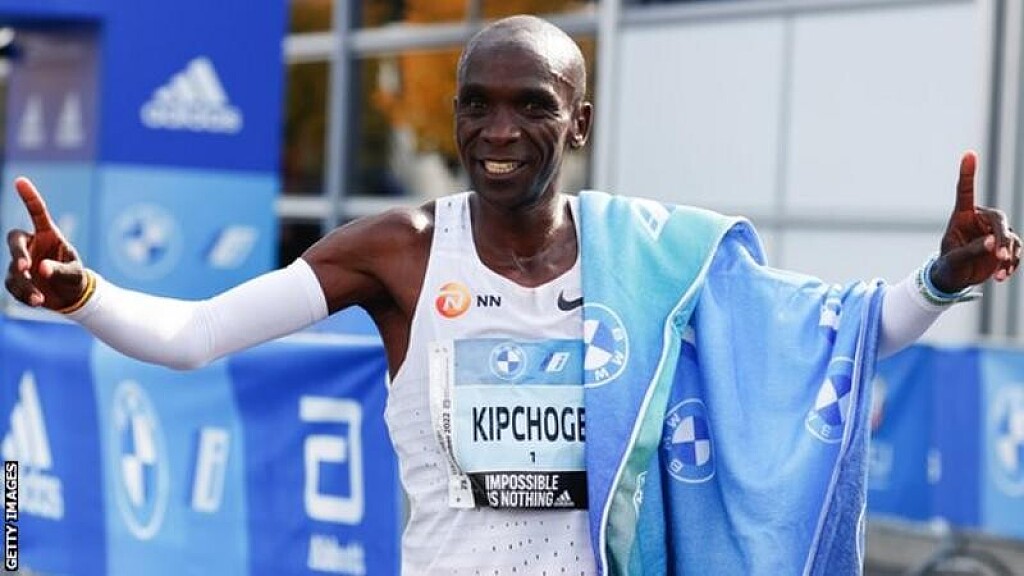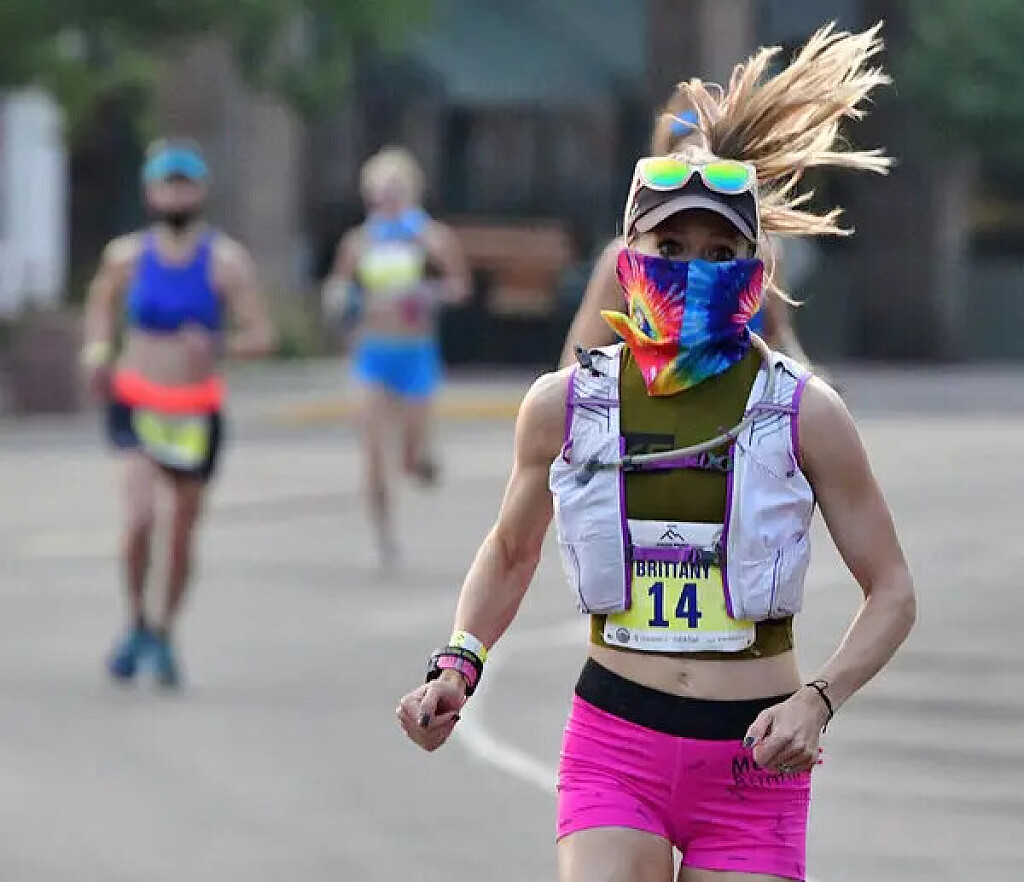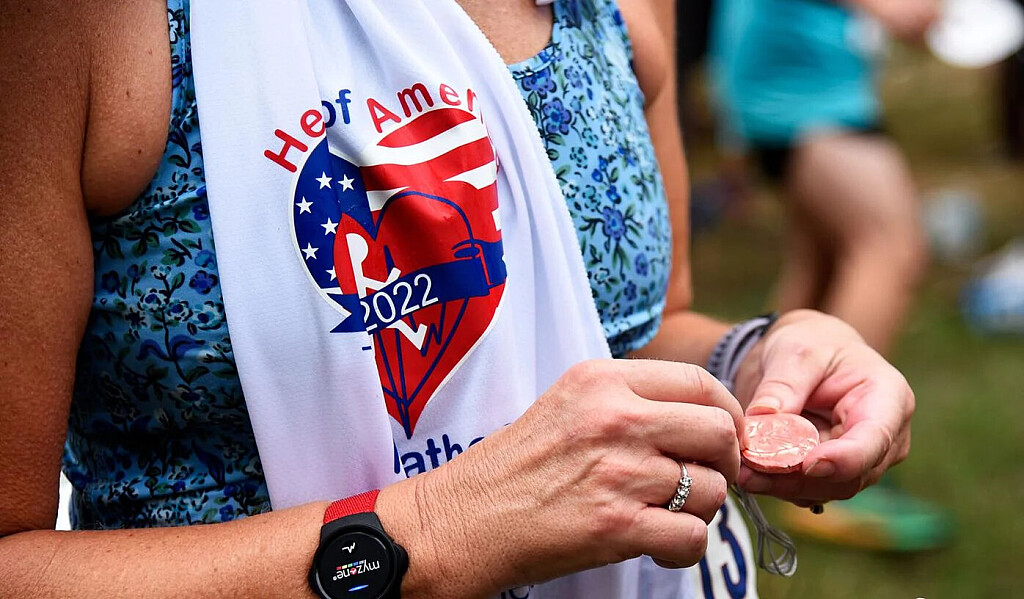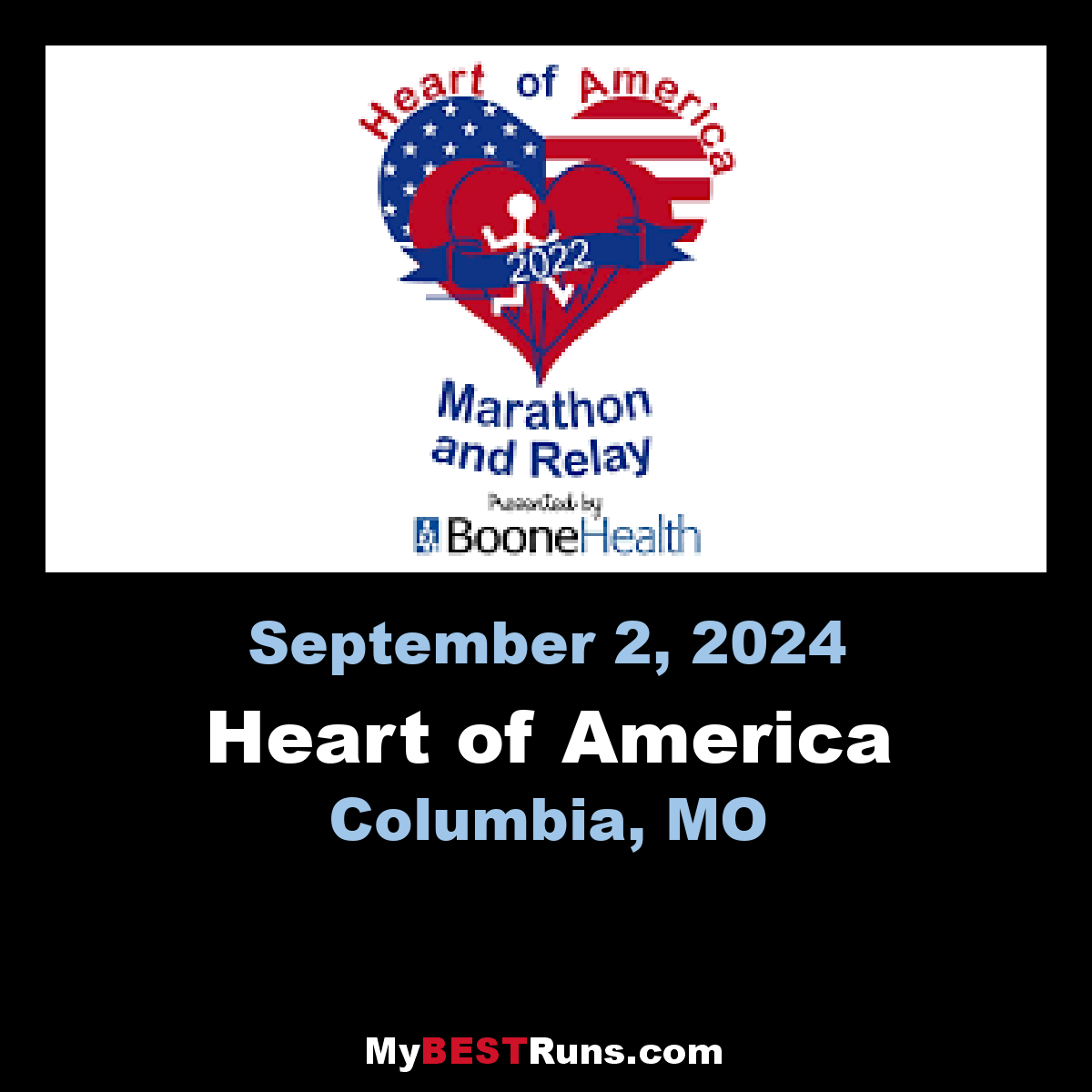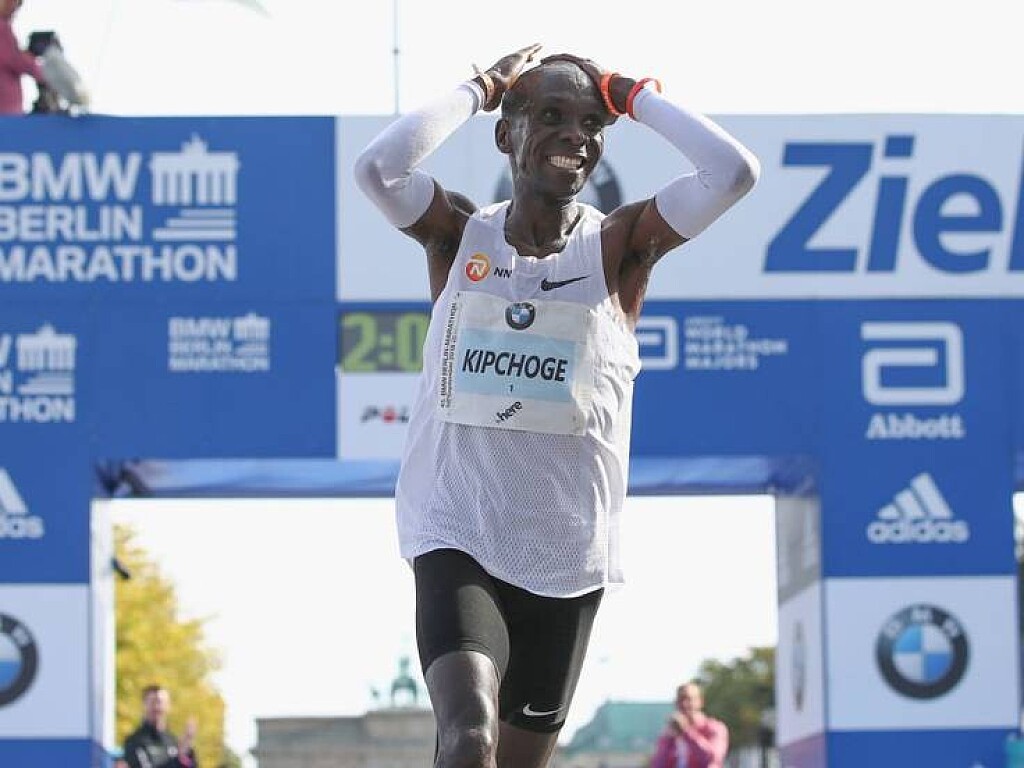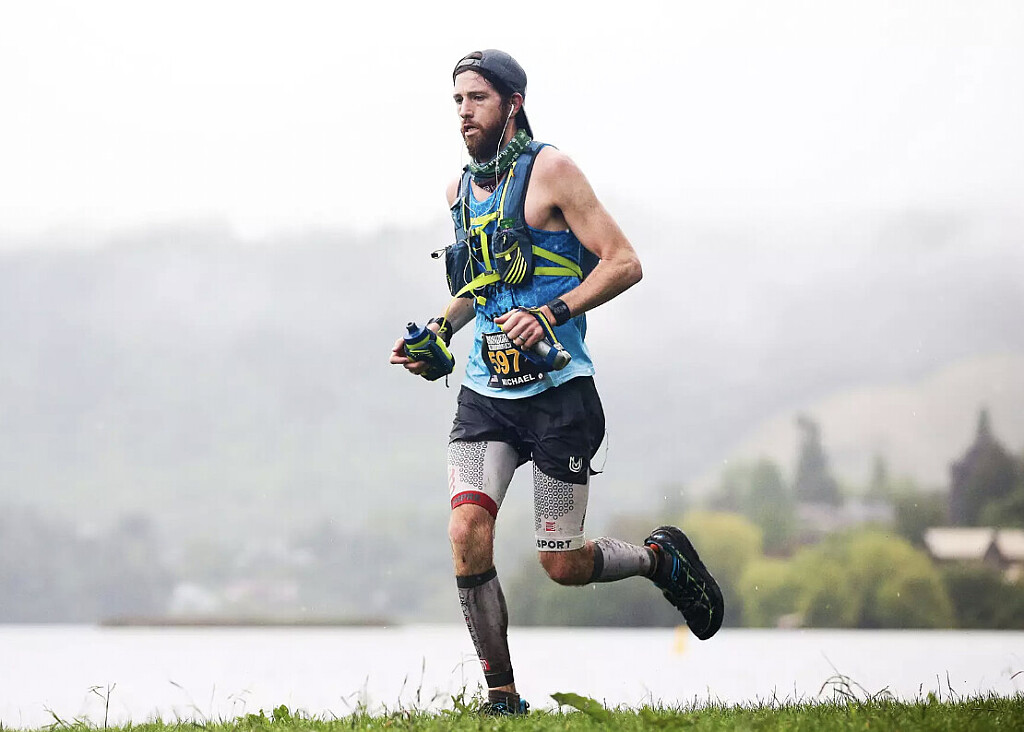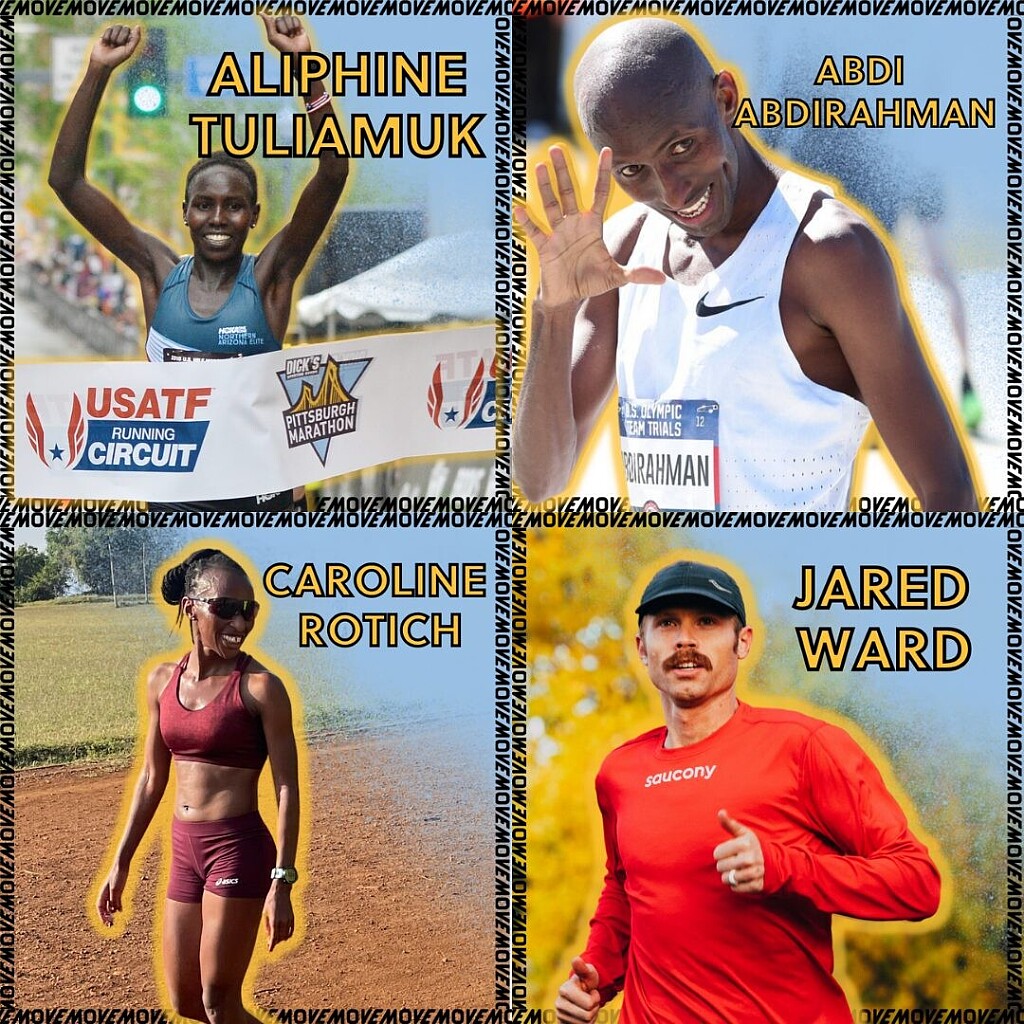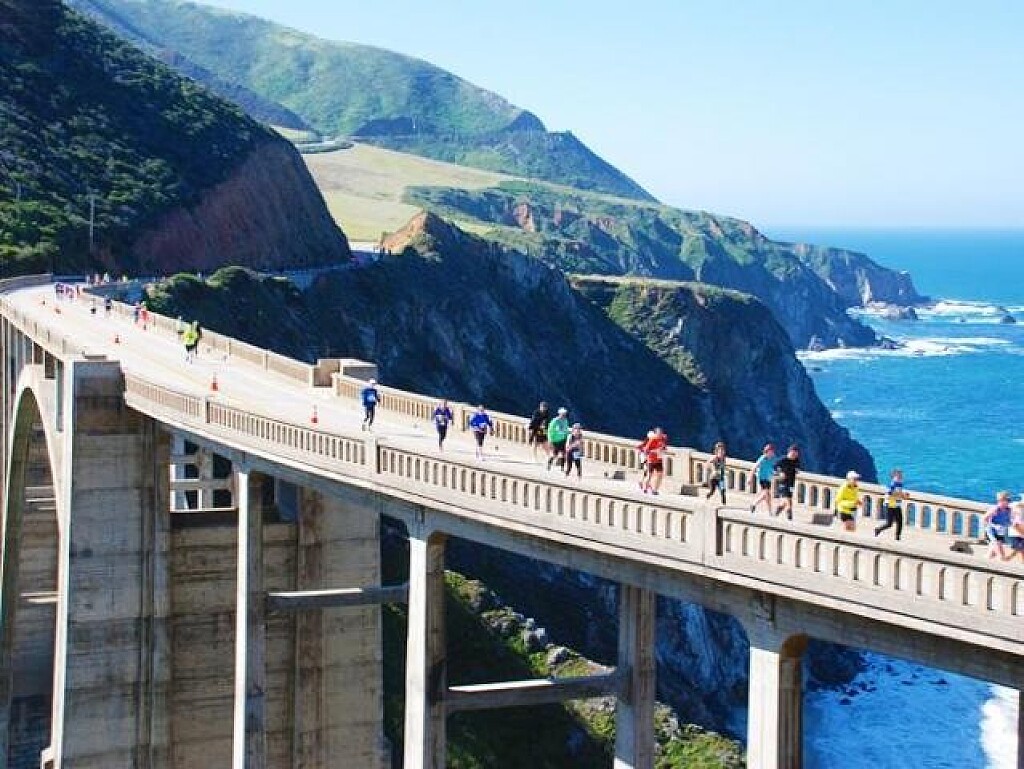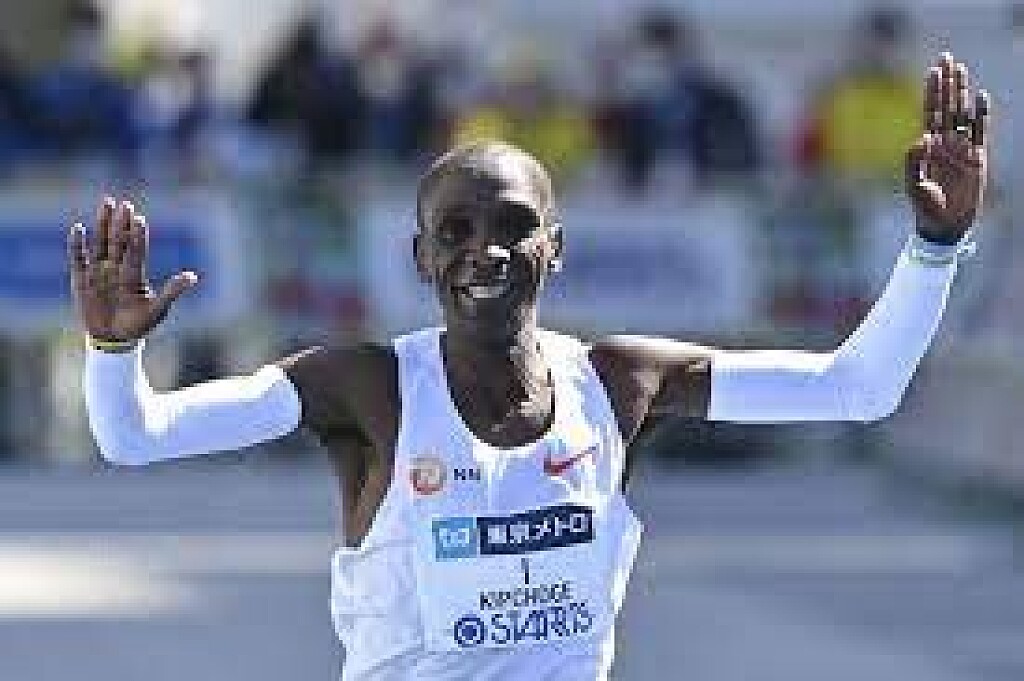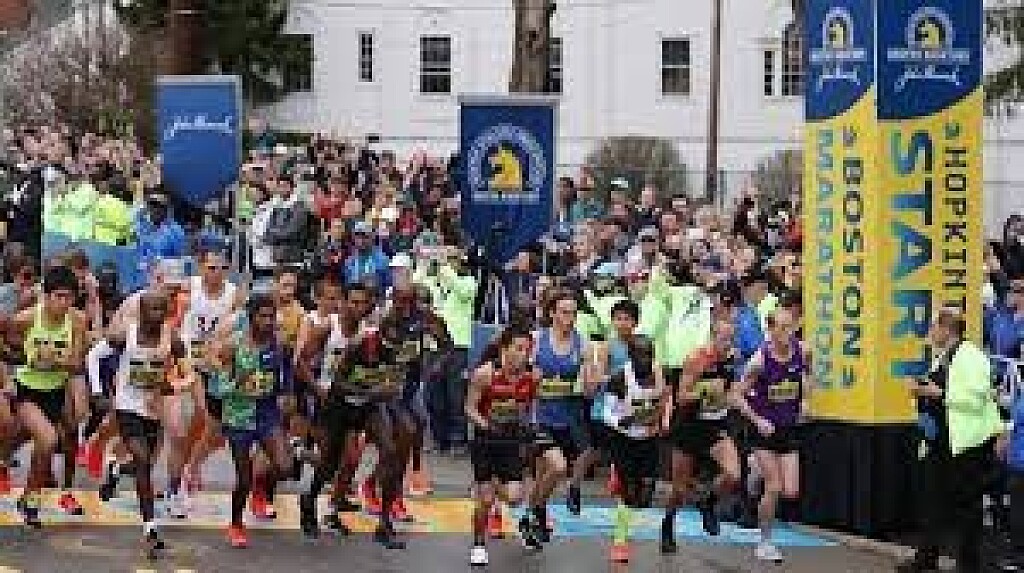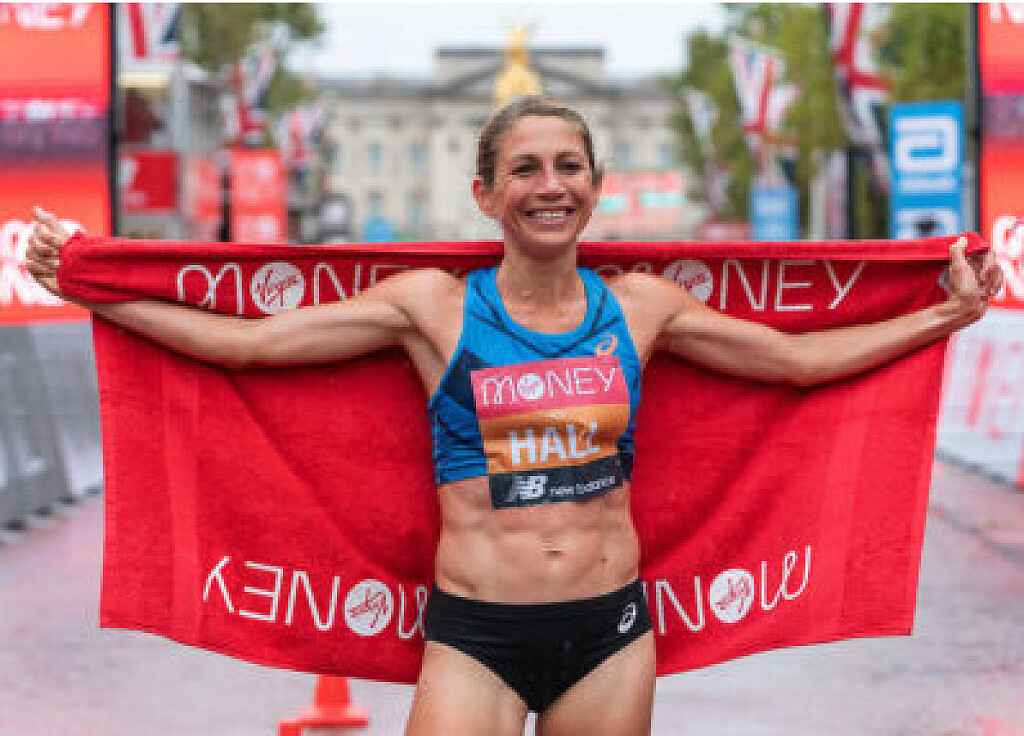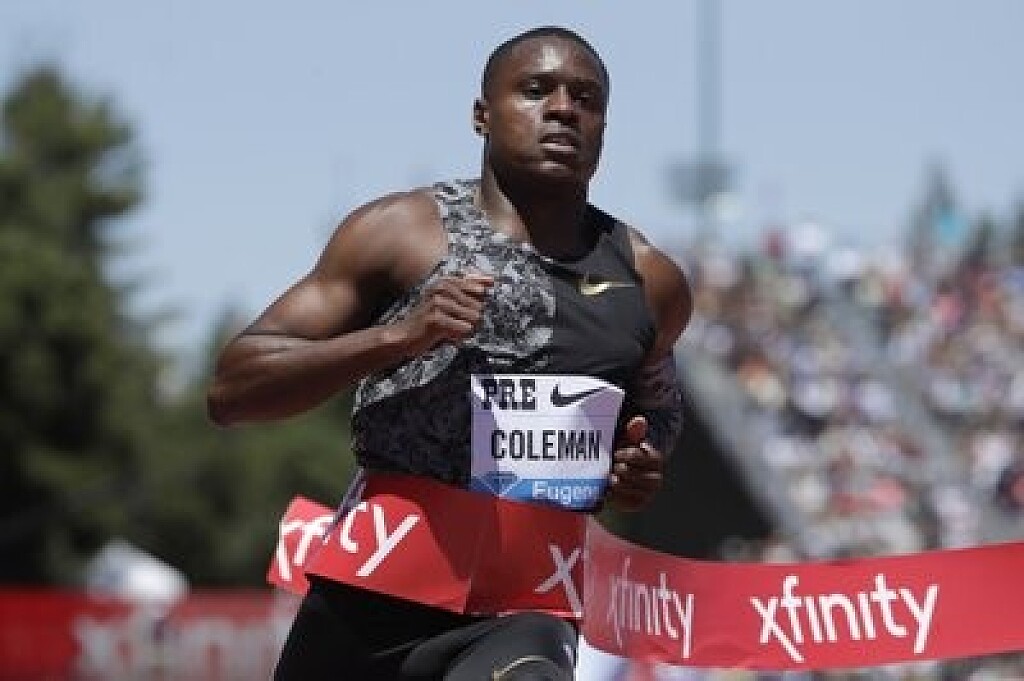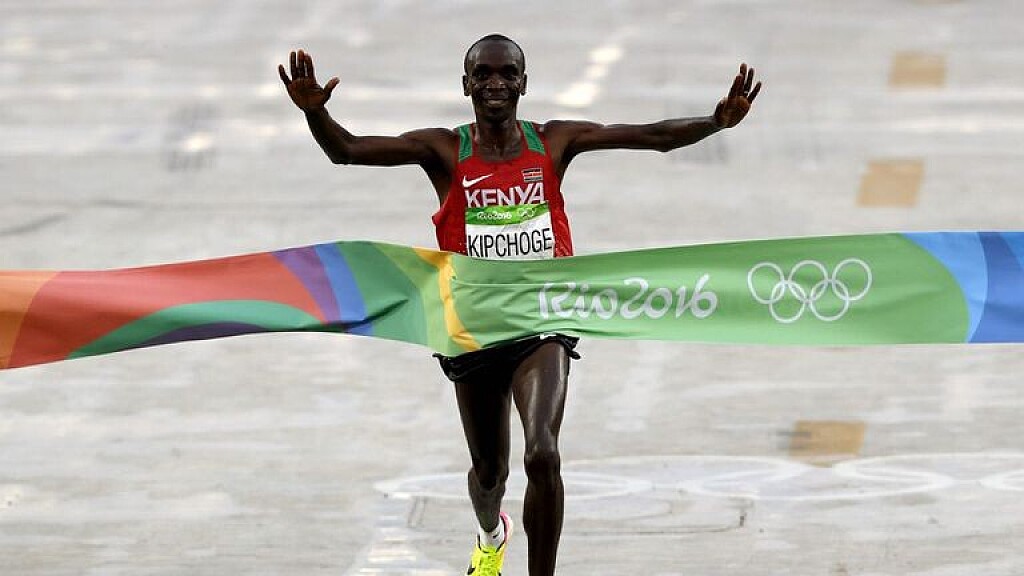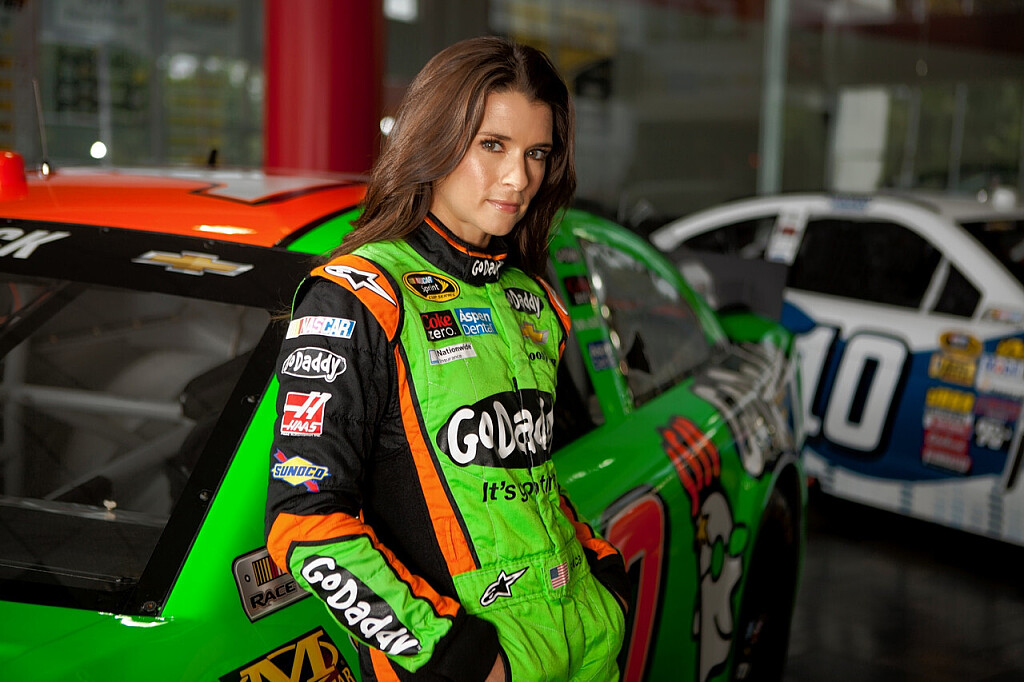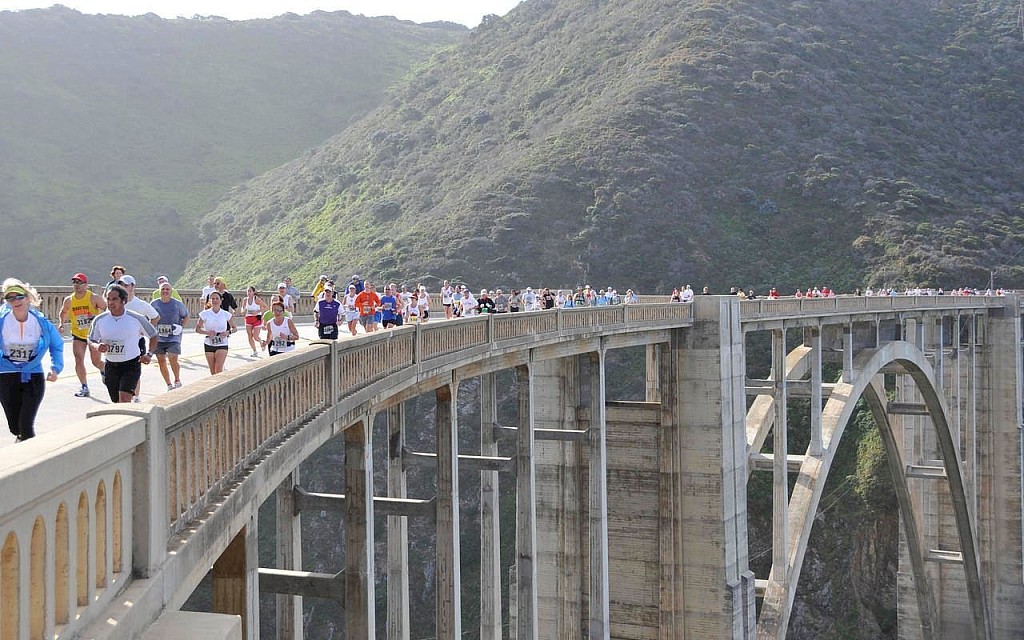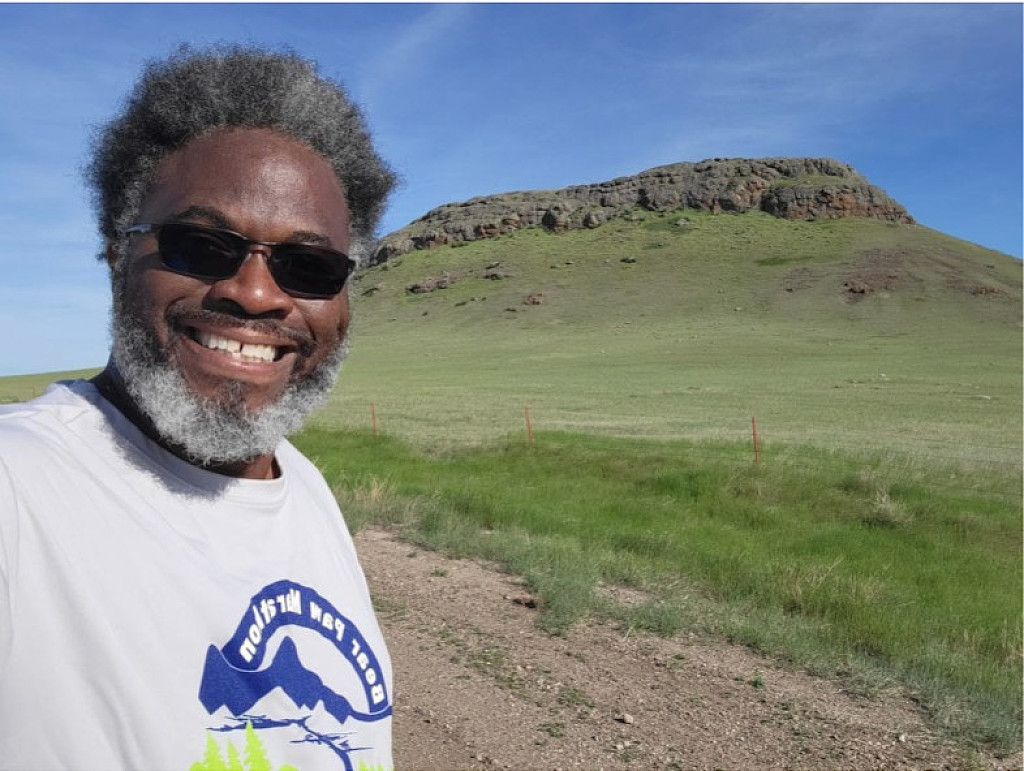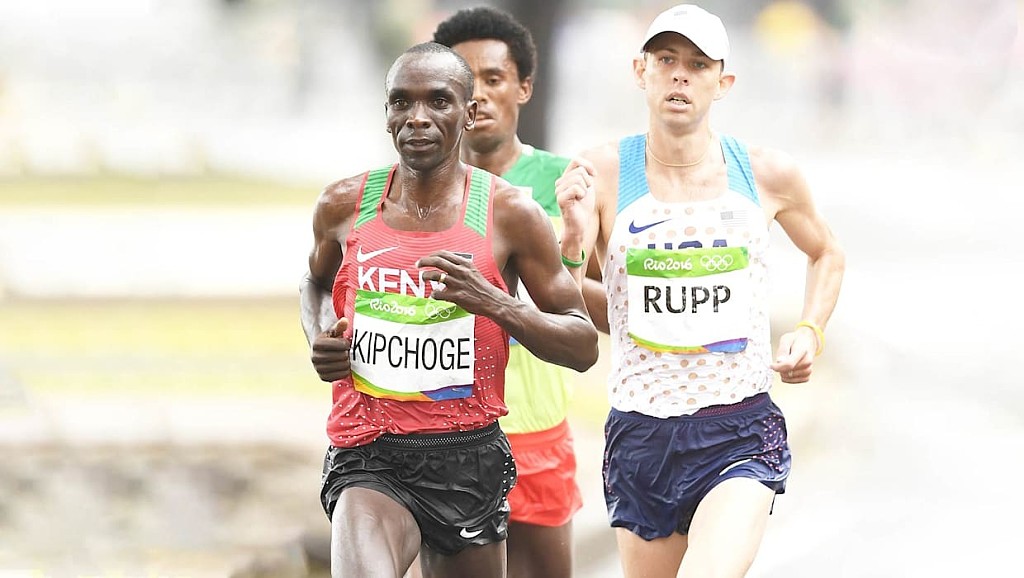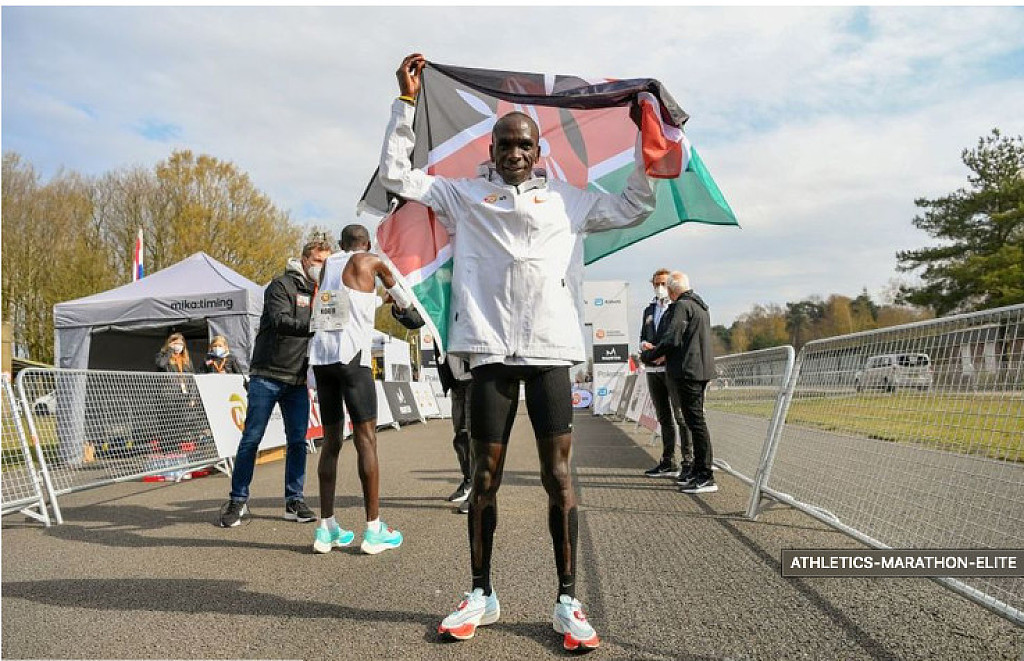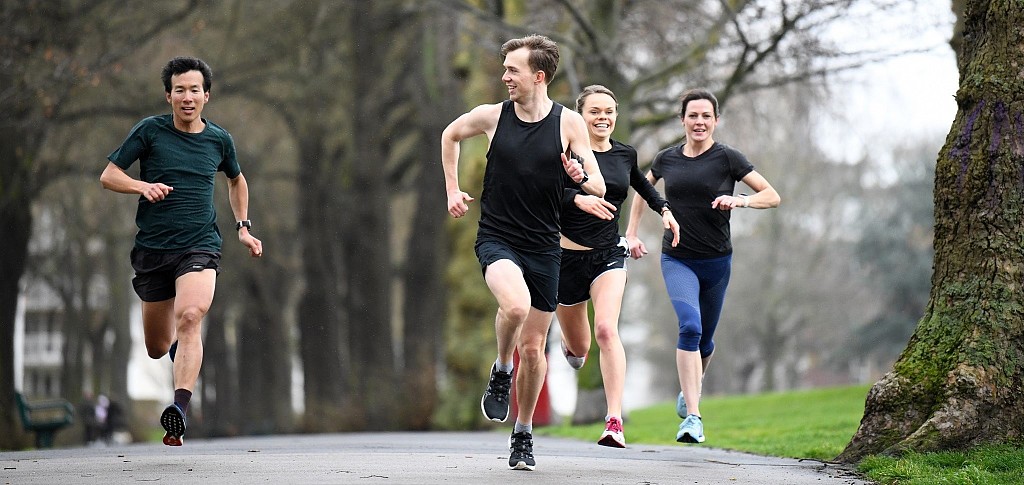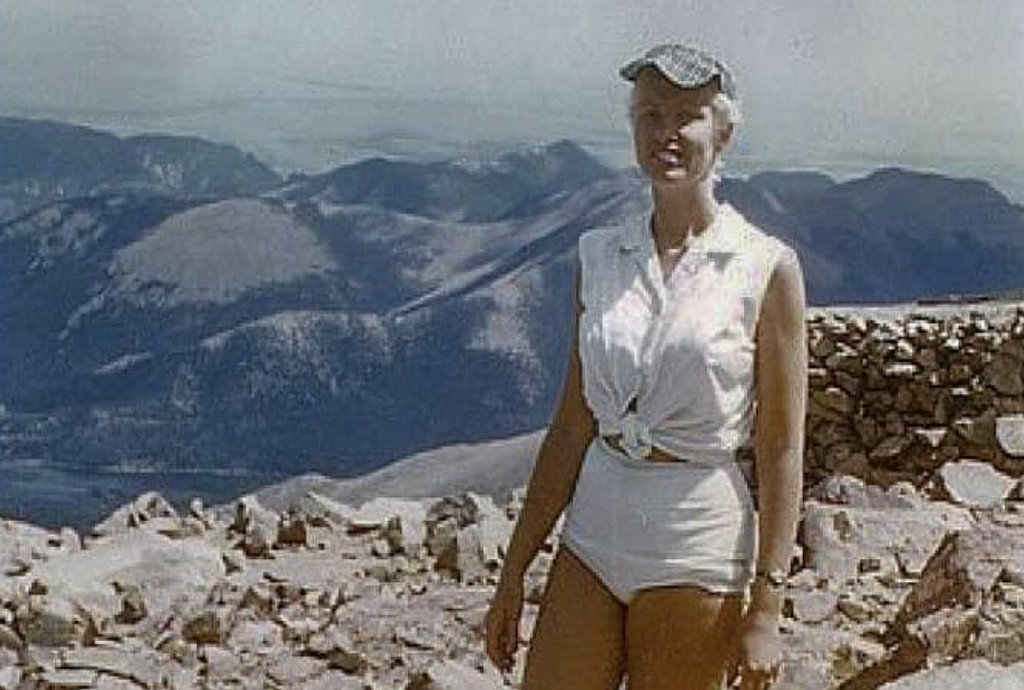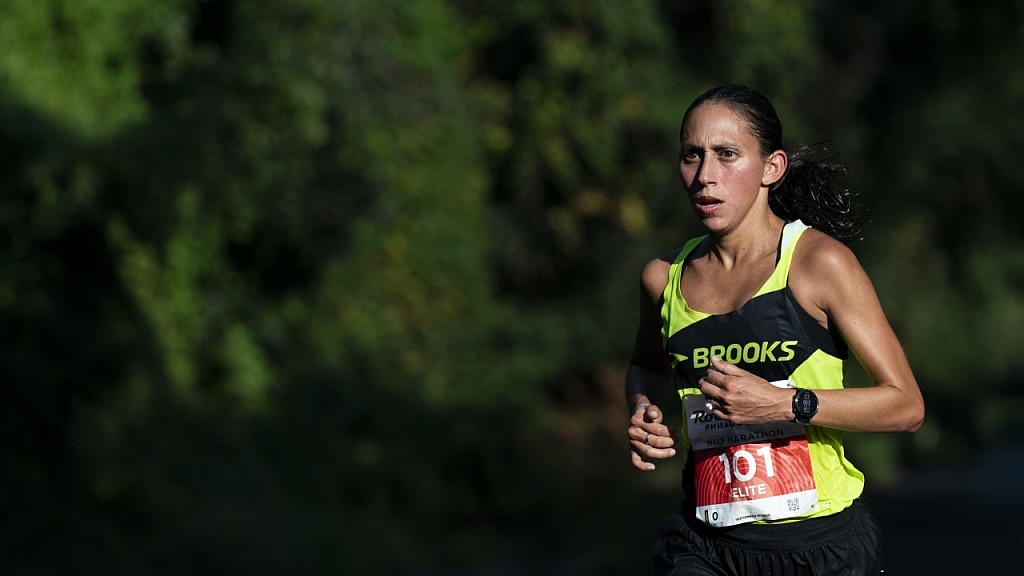Running News Daily
Running News Daily is edited by Bob Anderson. Send your news items to bob@mybestruns.com Advertising opportunities available. Train the Kenyan Way at KATA Kenya and Portugal owned and operated by Bob Anderson. Be sure to catch our movie A Long Run the movie KATA Running Camps and KATA Potato Farms - 31 now open in Kenya! https://kata.ke/
Index to Daily Posts · Sign Up For Updates · Run The World Feed
Articles tagged #Bucket list
Today's Running News
'Life has been good' - Eliud Kipchoge reflects on post-Olympics recovery and future goals
Eliud Kipchoge has embraced life after his Paris Olympics setback, resuming training and focusing on inspiring others while preparing for a strong comeback.
Eliud Kipchoge has already put his Paris Olympic Games setback behind and is working towards becoming a better athlete next year.
The former world marathon record holder revealed that after the Paris Olympic Games, he took a much-needed break and then resumed training. Kipchoge recorded his first-ever ‘did not finish’ in a full marathon at the Paris Olympic Games amid chasing history.
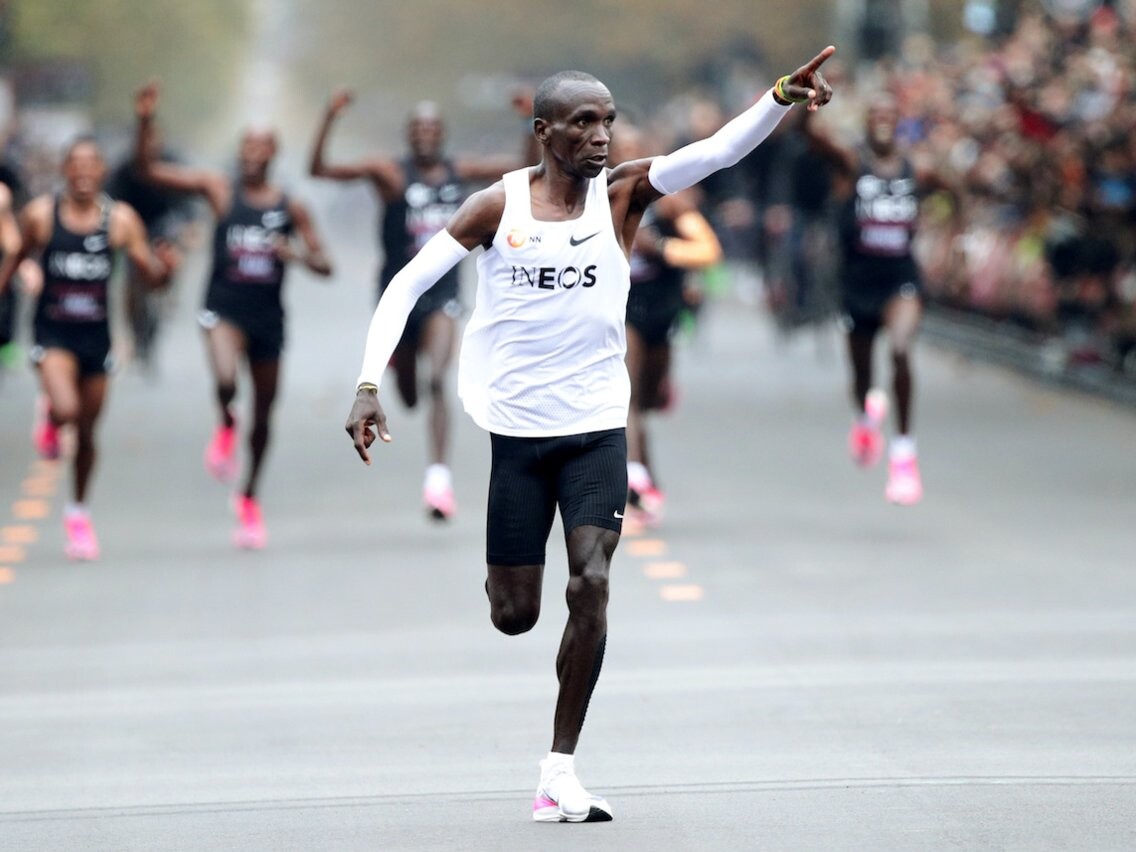
The five-time Berlin Marathon champion was looking to win his third consecutive Olympic title after claiming top honours at the 2016 Rio Olympics and the delayed 2020 Tokyo Olympic Games but could not live up to the billing. However, he is not giving up on his dream as he eyes a strong comeback in 2025.
He revealed that genuinely being interested in the sport has helped him have a smooth landing on his comeback. Eliud Kipchoge added that he wants to continue inspiring the young generation to keep going despite the series of setbacks they are bound to face.
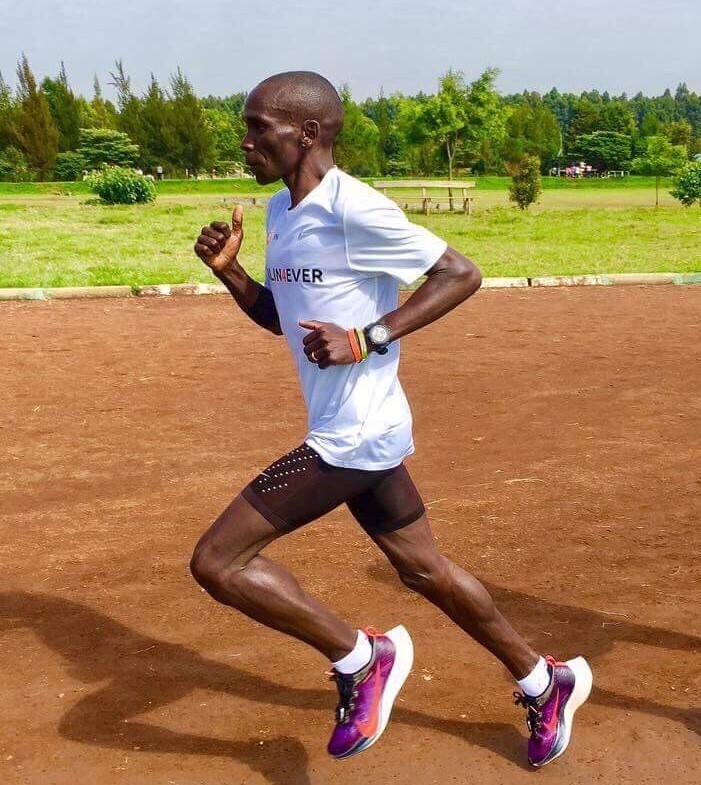
“I took a short break then went back to training…life has been good. Sport is about pushing, pushing and pressing on every day. It’s life…there are things you can’t prevent and what has happened has happened. One way is to convince my mind to try and move on and try to fulfil what has been on my bucket list,” Kipchoge told China Daily.
“The drive is the love of sport and you know the inspiration that I’m still into the general humanity of this world is what makes me wake up early in the morning to go for a run. I’ve been combining the love of sport and you know, the inspiration that I’m still in, we are still together campaigning for the sport.”
The four-time London Marathon champion says that growing up, he always wanted to see where his dream in running would take him and having achieved a lot, his heart is full.
Eliud Kipchoge believes he has accomplished his mission of competing and inspiring others although he still wants to continue pushing.
“That’s my happiness…it was a clear sign of love, the love of running and wanting to go to other countries to showcase my talent. That happened, and then life changes and thinking changes and I got a new thinking and pushing the limits,” he added.
by Abigael Wafula
Login to leave a comment
How to Plan for an International Marathon
AS RUNNING BOOMS and participation rates rise at races everywhere, people are looking to expand beyond their local fun runs for next-level experiences. International marathons in major cities—especially the six “World Majors” of Boston, Tokyo, London, Berlin, Chicago, and New York—have attained bucket list status on par with the most exotic vacation destinations, and more competitors are trying to join in than ever. More than 840,000 people submitted entries to the 2025 London race (for only about 50,0000 bibs), and the recent 2024 Berlin Marathon broke the record for the largest field ever with 54,280 finishers. I was lucky enough to be one of them, thanks to a comped bib from event sponsor Adidas. The atmosphere on the course was electric, and as I legged my way through the streets of the German capital, I couldn’t help thinking that it might be the best way to experience a foreign city.
But gaining entry into one of these races is just the start of a complicated process—and I’m not only talking about the months-long training program (most start at about 16 weeks out) athletes need to prepare for a marathon. The average holiday trip doesn’t involveWhen I set out to run Berlin I had finished three other marathons, but had never raced outside the US. I knew I’d have to take some extra effort, since factors like the time change, language barriers, and even the lack of familiar foods in local stores could throw off my routine right before the big day. But I wasn’t exactly sure about the best way to go about building an itinerary, so I turned to some experts so that my bucket-list race wouldn’t end in disaster. How to Plan for an International Marathon

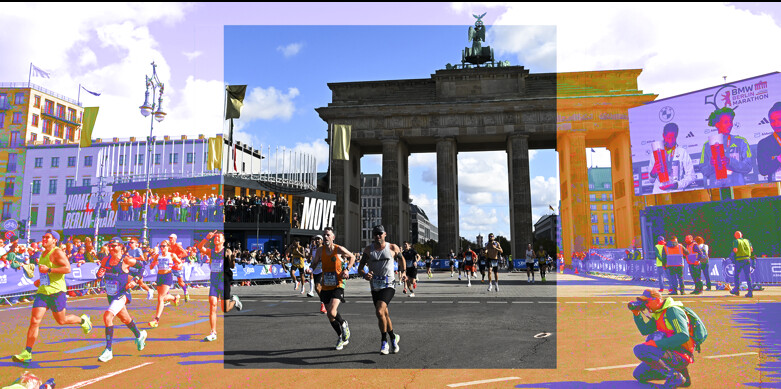
NO MATTER HOW well-prepared you think you are to run a marathon fitness-wise, traveling to another country to compete will be a challenge, says Jessie Zapotechne a NYC-based performance coach and US community leader of Adidas Runners. She has run the Berlin Half and Marathon multiple times since 2012, and says she uses her experience from all those races to counsel runners for their own jetset trips. “To be quite honest, I think about these tips because of all the mistakes I've made over the years,” Zapotechne says. “That helps me to be a better coach from learning the hard way.”
Tommie Runz is a content creator and runner from Detroit. While there are events in his local area, almost all of his races have required travel. “I've done 14 marathons, and only one of them was in my state,” he says. Since we spoke, he added another to that list (Chicago), and he’ll finish out the season with New York City, hitting all six Majors in 2024. He’s also vegan—so he understands the challenges that come while traveling for anyone who has dietary restrictions.
These experts have consideredHaving those extra days will be important to allow you to recover from the flight, adjust to time and climate differences, and set yourself up for a good night’s sleep ahead of the big day. Less practically, an earlier arrival will give you a chance to take part in as much of the marathon experience as you can.Zapotechne also advises that you make one other early booking to avoid last-minute scrambling and high costs: dinner the night before the race. Aim for carb-heavy meals that won't upset your stomach, so resist the urge to try a new type of cuisine, even though you're in a foreign city. “Find a place that's nearby or accessible [to your hotel] so that you're going to have an early dinner and get back to your hotel, get off your feet, and have all your stuff ready,” she says. Aim for a sit-down meal two or three hours before you plan to go to sleep. "You don't want to have a late night dinner before your race," Zapotechne cautions. "You [might still be] digesting it in the morning, or [maybe] you can't go to the bathroom in the morning because you ate too late. And that's never fun."
Race Gear Gets Packing Priority
One of the most common marathon truisms is “nothing new on race day.” You’ll put that to the test if you show up to your destination and your checked bags containing your race day kit don’t. Limit the chances of gear emergencies by making sure yourOnce you’re on the ground at your destination, don’t ditch your bottle so quickly, either. “Definitely carry your water bottle around with you when you are out and about in that city—not every country drinks a lot of water,” Zapotechne notes.
In Berlin, for instance, I was surprised to find that normal still water isn't always easy to find. I constantly found myself making extra requests in restaurants or sorting through bottles of sparkling water to stay hydrated. International races often offer fewer aid stations on the course than American events—every three miles, rather than every mile, according to Zapotechne—so if you’re the type of runner who needs a drink before the three-mile marker, she advises starting the race carrying a bottle, too. Sleep Smart—and Be Ready for the Time Change
Sleep might not be your main concern when you’re trying to enjoy every bit of your time in another country, but you’ll need plenty of it for the long run. Similar to hydration, you should aim to start off your trip on the right foot even before you’ve left. “If you know you're not a great sleeper during travel, try to sleep a lot the week before, so that you're already getting your body ready for wonky travel sleep,” Zapotechne advises. There's no magic number for everyone, but try getting two or three extra hours in the days leading up to the flight if you can.
Along these lines, you’ll have to adjust to a different time zone, which can be jarring especially if you don’t travel often. “You have to almost start being aware of the time change before you even leave,” Runz says. Try going to bed and waking up to match that time zone for a day or two before the trip to acclimate. Then if your flight lines up with night time at your destination, he recommends you use the trip to get extra rest. “Take advantageThe actual number will depend on the person, but she says that range will still allow you to take plenty of time on your feet for stuff you need to do, like visiting the expo to pick up your bib and even for a short shakeout run, since you will need to loosen up after the flight and get acclimated ahead of the race. Just don’t go overboard, and avoid extraneous steps by taking a cab instead of legging it or standing in long lines at tourist traps. “Danger Zone for sure is when you're getting close to 20,000. That's too many steps,” she says.
I was able to go to a Saturday shakeout run within this structure, but skipped out on walking to the Brandenburg Gate before the race when my steps creeped up near the 10K mark. When I wanted to meet a friend for coffee, I rode a bike the mile to the café instead of hoofing it on foot.
If you’re at an impasse and struggling to fit everything you want to do before your race, that might be a sign to plan time for sightseeing after you run. “If you are going to plug inAlongside real-time translation, some apps like Google Translate have features that can use the camera to translate text, so you’ll be able to decipher what exactly is on a nutrition label. You’ll have an easier time getting last-minute fuel without something you can’t eat if you’ve taken the step to download the app (and download your destination’s label for offline use, too) ahead of time. Read the Forecast, But Plan for Anything
Weather can be a challenge anywhere, but you’ll especially need to be mindful of the conditions ahead of your race. “Make sure to check the weather in the city you are traveling to a few days in advance—and prepare that weather can change when you arrive, so pack clothing for all types of weather,” she says. You can get a decent idea what the conditions will be at three or four days out, but even a rough 10-day forecast will be useful if your itinerary is on the longer side. “Also make sure to put a warm or comfortable change of clothes and slides in your checked back for after the race, as you'll want something comfortable to change into after running 26.2,” Zapotechne advises.
Don’t get too distracted by high temps, either. You’ll need to also keep an eye on what the lows are slated to be, especially considering that you’ll probably need to leave for the corral early in the morning when the full heat of the day will still be hours in the future. You’ll likely spend more time outside when it’s colder—while trying to conserve yourThis was especially important in Berlin, and I almost missed my wave because I didn't heed this advice. The race organizers had worked to make it the biggest marathon of all time—and in doing so, the staging area was a madhouse. People were packed in small areas, and signage wasn’t always clear. I arrived at the crush of people 15 minutes ahead of the gun, and found myself pushing through the crowd and climbing over barriers to get to my proper pace group. That took up a lot more energy and effort than I wanted before I was slated to run for three-plus hours.
Ultimately, it’s up to you to get to the starting line. Runz knows there are no hacks once you near zero hour and everyone is raring to go, especially as running has grown so much over the last few years. “Every race is going to be like this—until the streets get bigger,” he says.
by Men’s Health
Login to leave a comment
A cold, hard look at extreme winter races
Winter is when races careen from the cosy, coddling courses of autumn into a forbidding tundra that both terrifies and exhilarates. It’s in this frozen landscape that the most extreme races are forged—competitions that take things to unsettlingly unconventional extremes, like sporting the scariest name or boasting the largest field of hungover revellers.
From a race season positively steeped in superlatives, here’s a sampling of extreme cold-weather races that boast the most—for reasons silly and chillingly serious—and strategies for making the most of them.


THE WILDEST
Polar Bear Marathon
Nov. 23, 2024
Churchill, Man.
Distances: 21.1 km, 42.2 km, 50 km
albertmartens.com
An event where vehicles tail runners in case a polar bear wanders onto the course truly deserves the title of winter’s wildest race. Beginning from Churchill, Man., the course takes participants along the coast of Hudson Bay for a challenge that balances breathtaking beauty with physical and mental rigour.
“A few times there have been polar bears right on the road where they run,” says race director Albert Martens. “However, we do provide safety for the runners, escorting them with a vehicle. Often the Canadian Rangers are out and assist us, as well.”
As challenging as this event is, the joys of the race aren’t to be outdone by the hardships. “One of the highlights of the run is the beautiful sunrise at the start overlooking Hudson Bay, and the post-marathon banquet, where the runners get to know each other better,” says Martens. He adds that one of the “swag bag” items runners receive is a polar bear carved out of soapstone. Although signups for this year’s event were set to close Oct. 1, it’s a race worth keeping in mind
THE BOOZIEST
Santa Will Run for Beer 5K-ish
Dec. 7, 2024
Bethlehem, Pa.
Distance: “5K-ish”
runsignup.com/Race/PA/Bethlehem/SantaWillRunforBeer5Kish
When it comes to combining Santa and suds, this race really raises the bar. Suit up in your best Kris Kringle costume and simultaneously work up and quench your thirst as you race between more than a dozen drinking establishments. The order you hit the bars in is up to you, but you’ve got three hours to stop at them all before raising a celebratory glass with your fellow runners at Molly’s Irish Grille and Sports Pub.
Speed counts—the first 24 runners at each location get a free beer—but so does presentation, so don’t skimp on style when putting together your Santa look. “Don’t go easy on your costume,” suggests Rochelle Romeo Kane, managing director of Run Lehigh Valley, which organizes the race. She also recommends mapping out your “beer strategy” beforehand: “Are you more of a ‘run fast and hit the close bars’ or ‘go for the early long-haul’ kind of runner? Either way, come with your plan and know it will change!” Runners must be at least 21, but it’s a race that
THE JOLLIEST
Santa Shuffle Fun Run & Elf Walk
Dec. 7, 2024
British Columbia: Abbotsford, Chilliwack, Langley
Alberta: Edmonton, Calgary
Saskatchewan: Regina
Manitoba: Winnipeg
Ontario: Hamilton, Kemptville, Kingston, Ottawa, Sudbury, Thunder Bay, Toronto, Whitby
Quebec: Montreal
Prince Edward Island: Charlottetown
Nova Scotia: Halifax
Newfoundland and Labrador: St. John’s
Additional virtual events
Distances: 1 km, 5 km
santashuffle.ca
What started in 1990 as a fundraiser by Running Room members to support Salvation Army programs in Edmonton has become a countrywide celebration of seasonal giving, as legions of speedy Santas are unleashed from start lines coast to coast. Santa Shuffle races, which continue to benefit the Salvation Army, boast the most Santas in Canada’s winter-running scene, but also pull in plenty of reindeer, elves and assorted festive fashionistas. Clever costuming pays at the events, with prizes for the best individual, group and pet get-ups (see the event website for details).
THE PRICIEST
Antarctic Ice Marathon
Dec. 13, 2024
Union Glacier, Antarctica
Distances: 21.1 km, 42.2 km
icemarathon.com
With a registration fee approaching $30,000, the Antarctic Ice Marathon isn’t a race you’ll enter on a whim, but the experience it offers is as rich as its price tag, and it’s sure to earn a spot on many runners’ bucket lists. You’ll be whisked by jet from Punta Arenas, Chile, to Union Glacier in the Antarctica interior, within a few hundred kilometres of the South Pole. Although aid stations, snowmobile support and medical personnel will be available, completing either the event’s marathon or half-marathon will take plenty of self-motivation; as race organizers point out, there won’t be any crowds to cheer you on—not even penguins venture this far south. Runners should also note this race can be as unpredictable as it is unforgettable. “The Antarctic Ice Marathon presents a unique challenge with its extreme cold and unpredictable weather,” says race director Becca Pizzi. “We advise runners to prepare for low temperatures and be ready for sudden shifts in conditions. Proper layering and mental resilience are key to tackling this unforgettable race.”
THE HEAD-POUNDINGEST
The 18th Hangover Hike
Jan. 1, 2025
Dewsbury, England
Distances: 15 km, 27 km, 34 km
ldwa.org.uk/TheIrregulars/W/2112/hangover-hike.html
An event that gives a refreshingly honest nod to the realities of New Year’s revelry, the Hangover Hike in northern England encourages hikers and runners to get an early and (mostly) sober start to 2025. The New Year’s Day run/hike around the rural roadways, hills and hiking trails of the town of Dewsbury (about 15 km south of Leeds) will ease participants into the challenge ahead with tea and toast at registration. The event’s three hikes—15 km with just over 300 m of ascent, 27 km with about 520 m of climb and 34 km with almost 550 m of ascent—start and end at The Leggers Inn. The Irregulars group of the Long Distance Walkers Association, which organizes the event, puts it succinctly: “A brisk walk or run, a breath of fresh air, a wee dram en route and a hair of the dog at The Leggers. What better way to start the new year?”
THE LOOPIEST
Frozen Falcon
Jan. 12, 2025
Falcon Beach, Man.
Distance: As far as you can go in eight hours
ontheedgerunning.com/home/frozenfalcon
Looped courses can help take the sting out of daunting distances by breaking down the kilometres into bite-sized chunks. The Frozen Falcon’s 6.5-km course at Falcon Trails Resort in southeastern Manitoba is the perfect length to keep your run manageable without it becoming monotonous, but be aware of the course’s unique challenges: “This race is run on groomed trails, however, after a few laps the snow can become a little like sugary mashed potatoes,” cautions race director Joel Toews. “Get working on that lower-leg strength! Also, you’re going to head into the yurt each loop, where there is food and a wood stove. It’s pretty cosy, so don’t get sucked into the comfort. Get back out there as soon as possible.”
THE SCARIEST-SOUNDING
Hypothermic Half Marathon
Vancouver: Jan. 19, 2025
Edmonton: Feb. 2, 2025
(A planned second Edmonton event was not confirmed before publication.)
Kelowna, B.C.: Feb. 9, 2025
Halifax: Feb. 16, 2025
Calgary: Feb. 23, 2025
Winnipeg: Feb. 23, 2025
Additional virtual events
Distances: 10 km, 21.1 km
hypothermichalf.com
The Hypothermic Half Marathon is no walk in the park, but this intimidating-sounding series of winter races has a bark that’s worse than its frostbite. That’s due in large part to the warmth and hospitality shown by volunteers and supporters during and after the races. There are other ways to stay toasty at the Hypo Half, however—at last year’s event in Edmonton, local runner David Eliuk sported 120 T-shirts in a bid to set a new world record for the most T-shirts run in a half-marathon. He achieved the feat, but was bested by American Dan Harvey—who donned 127 shirts at an event a few months later—before Eliuk’s record could be ratified.
THE LONGEST
Montane Yukon Arctic Ultra
Feb. 2–14, 2025
Teslin, Yukon
Distances: 340 km, 640 km
arcticultra.de/home
This race could be a contender for the most extreme in several categories—winds whip up with unfathomable force while temperatures can plummet to -40 C—but its length is what really makes it a standout. Starting from the village of Teslin and finishing in the town of Faro, the ultra’s shorter race totals 340 km, while the main event (including a 150-km route out and back from Faro) adds up to an eye-watering 640 km. Competitors can tackle these either on foot or skis or by mountain bike.
“Many races with these kinds of distances are organized in stages,” says race director Robert Pollhammer. “In our race, athletes are on the go day and night, sometimes up to an average of 20 hours per day.” He cautions that sleep deprivation can be dangerous in such an extreme environment and emphasizes the importance of having a strong race strategy.” While cautioning that the race isn’t for everyone, he says, “If you like the cold, the vastness of nature and being in a race with a family-like atmosphere, the
THE LARGEST (LATITUDINALLY)
6633 Arctic Ultra
Feb. 27 to March 8, 2025
Eagle Plains, Yukon
Distances: 120 miles (193 km), 380 miles (612 km)
6633ultra.com
Canada’s most northerly winter foot race, the 6633 Arctic Ultra (named for the latitude of the Arctic Circle in the Yukon—66 degrees, 33 minutes north) tests the ambitious and adventurous in a gruelling trek across two Canadian territories. Beginning in Eagle Plains, Yukon, runners who tough it out will cross the Arctic Circle to finish lines in the Northwest Territories hamlets of Fort McPherson (193 km) and Tuktoyaktuk (612 km).
Blistering wind and cold make the 6633 one of the most physically punishing races on Earth—but the competition’s mental challenge is greater still, according to race co-director Stuart Thornhill. “The mental fatigue experienced and resilience required cannot be underestimated,” Thornhill says. “Our athletes experience long periods of isolation in the dark and extreme cold, leading to extreme hallucinations.” Sticking to script, he says, is key to success at the 6633: “Those who make it through have a plan which they follow, eating when they need to, sleeping when they need to. They don’t get caught up racing someone else and breaking their plan. I have seen people who have been at the back of the pack for most of the race and have come in the top three finishers, because they stuck to what worked best for them.”
THE SPICIEST
Chilly Half Marathon
March 2, 2025
Burlington, Ont.
Distance: 21.1 km
raceroster.com/events/2025/84601/2025-chilly-half-marathon
The Chilly Half Marathon is a cold-weather race that throws some serious heat. While most of the events on this list aren’t really built for racking up personal bests, the course through downtown Burlington and along Lake Ontario’s western shore is perfect for burning rubber. “This will be the 29th year of the fun, fast, flat race that welcomes 4,000 runners to downtown Burlington,” says Kelly Arnott, co-CEO and co-owner of race organizer VR Pro Inc.
An event that marks the start of the spring road-running season in eastern Canada, the Chilly Half is just as popular for its post-race revelry as for its scenic, zippy course. Spectators and runners can shake off the March chill by coming together for a bowl of piping hot chili. “If it is a chilly day, we will warm you up with a bowl of hot Stagg Chili following the great race,” says Arnott.
THE MOST ENDURING
Around the Bay Road Race
March 30, 2025
Hamilton
Distances: 5 km, 10 km, 15 km, 30 km, additional virtual events
bayrace.com
Launched in 1894—three years before the Boston Marathon—Hamilton’s storied Around the Bay Road Race is North America’s oldest long-distance running event. More than a testing ground for generations of runners, Around the Bay is itself something of an endurance feat. Despite some challenging obstacles (in recent years organizers have had to switch up the course due to renovation and construction projects in the city), the 30K run around Hamilton Harbour remains a cultural focal point for the local community and favourite destination race for runners worldwide. Race-day weather has been known to swing wildly from warm and sunny one year to blizzard-like the next, so the best way to prepare is to be consistent in training, suggests race director Anna Lewis. “Keep to your training schedule even on bad weather days, because you never know what the weather will be like on race day,” she says, adding that wisely managing effort is also key to negotiating tougher terrain near the end of the race. “Don’t go out too fast, so
FROZEN FEATS
Here are some extreme winter exploits that have earned a place in the Guinness Book of World Records.
Coldest marathon
By its name alone, the Siberian Ice Marathon seems a convincing contender for the world’s coldest marathon—and it’s not just hype. Temperatures as low as -39 C were recorded at the 2001 race in Omsk, Russia. While it’s the coldest marathon recognized by Guinness, organizers of the Pole of Cold Marathon in Oymyakon (also in Siberia) reported the mercury crashing to -55 C at its most recent event on Jan. 12, 2024.
Fastest half-marathon barefoot on ice/snow
Not content to set this record by running a bone-chilling half-marathon barefoot in 1:50:42, Josef (Joska) Šálek added an extra dash of shivery showmanship by running the distance in nothing but shorts. The Czechian set the record on a course in his home country on Feb. 18, 2024.
Fastest marathon by a female dressed as Santa
From snowmen to ice-cream cones, there’s no end to the cold- and winter-centric costumes runners will don to break records, but most of these attempts are made in spring or fall. Hand it to British runner
WINTER RACE TIPS FOR FIRST-TIMERS
Don’t dress just for the start line
As tempting as it is to bundle up while waiting for your race to start, things can heat up pretty quickly once you’re on the move, and overheating can sap your performance and enjoyment of the race. If temperatures are dry and above freezing, dressing as though it’s 10 C warmer than it really is will keep your engine running cool as you hit your stride. On colder, windier days, dress in layers that can easily be discarded or passed off to a supporter on the sidelines.
Show up fully charged
The energy demands on your body when racing in colder temperatures aren’t significantly different from those of any other time of year, so there’s no need for drastic changes to your pre-race fuelling. The same can’t be said of your running tech, however. Plummeting temperatures can be a big drain on the battery capacity of your watch, headlamp and heart rate monitor, even during shorter races. Make sure the devices you rely on are fully charged; don’t assume the GPS that saw you to the end of a summer 5K on a 15 per cent
Login to leave a comment
How Recreational Runners Get Through UTMB: 'It's All About Digging Deep into Yourself'
Wearing purple shorts, a blue and white tie-dyed T-shirt, a bright pink hat, a light blue Salomon hydration pack, fluorescent yellow-rimmed Oakley sunglasses, and a pair of Hoka Speedgoat 5 shoes, Chaiwen Chou was a vibe as she crossed the finish line of Ultra-Trail du Mont-Blanc (UTMB) on Sunday afternoon in Chamonix, France.
Chou, who had also freshened up the pink and purple tint of her hair before the race, stood out among the numerous other dusty and weary runners clad in more traditionally colored trail garb as they took their final strides in the epic 106-mile race around the Mont Blanc massif.

But what was most remarkable about the 41-year-old software developer from New York City was the huge smile on her face and expression of pure joy that emanated from her. When she arrived at the finish line after 45 hours and 15 minutes of running-about 75 minutes before the cutoff-she was beaming ear to ear and greeted with big hugs from her mom, brother, partner, and a good friend who helped crew her on her journey.

While her interest in running started on a bit of a whim a decade ago, her continued passion and progression have led her to run more than 30 trail running races, including the biggest and most celebrated one in the world. On Sunday, she was one of 95 American runners to complete the grueling UTMB course.
"So when I turned 30, I had this typical New Year's resolution, like, I want to get fit, I want to learn how to run," said Chou, who grew up in Massachusetts. "And then I met a friend who ran, and I started running with him and doing group runs. And then we started running trails, and we specifically entered The North Face Endurance Challenge, and that's where I ran my first marathon, and fell in love with trail running and then learned about ultrarunning and this whole world that I never even knew existed."For many recreational ultrarunners from around the world like Chou, UTMB sits at the top of their lifelong bucket list. It means starting at the same time as the elite professional runners on Friday evening in Chamonix, and maneuvering through the same rugged and aesthetic 106-mile loop with a daunting 32,000-feet plus of climbing and descending. It's historic, and the crowds and the energy around it are unparalleled.
It's also a monumental challenge to complete.
Trail Running's Infectious Buzz
Ultra-trail running is having a moment right now-especially since the end of the Covid pandemic-but it probably started a decade ago as the urge to run beyond the marathon gained mainstream traction and destination races around the world started to become desirable goal races for recreational runners.The North Face Endurance Challenge began as a singular 50-mile championship-style trail race near San Francisco in 2006 with a $30,000 prize purse, but it evolved into a multi-distance race weekend (from 10K to 50 miles) aimed at encouraging runners of all abilities to immerse themselves in the sport. After a few successful years of the event in Mill Valley, California, it expanded to several locations across the U.S.-upstate New York, Madison, Wisconsin, and Washington D.C., among others-and around the world.
Although The North Face pulled the plug on the series in late 2019 with a suggestion that it was going to reimagine the event format, nothing ever materialized after the Covid-19 pandemic temporarily disrupted the world-and specifically running events-in 2020. But those events played a big role in introducing runners and non-runners alike to the unique aspects of trail running, and many of those who caught the bug-like Chou-have continued to chase their passion in global events like the UTMB World Series.
Chou and her friends returned to The North Face Endurance Challenge four years in a row and she upped the ante each time, going from the marathon to the 50K and finally to consecutive finishes in the 50-miler. She competed in the 50-mile race in San Francisco in 2017 and 2019 and then started traveling to other races around the U.S. and eventually around the world. By 2020, she had completed the Madeira Island 115K race in Portugal and the Tarawera Ultramarathon 100-miler in New Zealand.
Once Covid subsided, Chou set her sights on trying to get into UTMB, which she did by collecting running stones and finishing seventh at the Grindstone 100 amid torrential rain storms last September in northwest Virginia. Her training for UTMB was interrupted in February when, just a week after she found out she secured an entry into UTMB through the lottery, she broke her ankle. Then once she got to Chamonix a week before the race, she smashed her left knee on a shakeout run and it swelled up pretty badly.
As such, her UTMB experience was rougher than she had hoped-the 80-degree heat and the 32,000 feet of vertical gain and descent pushed her to her limits-as she had challenges fueling consistently and also got sick several times. But she persevered and reached her primary goal of finishing.
Officially, she was the 1,542nd finisher out of 1,760 runners who completed the full loop. (A total of 1,001 runners started but did not finish.) She did whatever it took and she crossed the finish line.
"So this is the first time I've been in the Alps, and I'm just blown away by how beautiful it is," she said. "Even though I was in pain pretty much the whole race because the climbing and the elevation gain here are insane compared to the East Coast! But it was just so beautiful everywhere. It's pretty crazy. But you get to be out there all day though, so that's fun."Every Runner Has a Story
Becky Convery only started running four years ago in the middle of the Covid lockdown. What started as short, occasional runs turned into a passion for trail running that was fueled, in part, by doing group runs with the Virginia Happy Trails Running Club.
Like Chou, Convery also qualified for UTMB through the Grindstone 100. The 58-year-old Washington D.C. attorney almost quit that race, but she dug deep to finish. During UTMB, Convery dealt with GI issues from early on in the race and couldn't keep any food down. It was so bad, she almost dropped out at the 51.5-mile aid station in Courmayeur, Italy. But then she thought of Wayne Chang, a running buddy from Virginia, who did just that last year and immediately regretted it. With her friend's experience top of mind as she struggled, Convery persevered and finished in 45:27 with an hour to spare."I wanted to quit at Grindtone last fall. I was miserable and just wanted to go to bed, but he wouldn't let me quit," Convery said. "He's like, 'Look, I quit UTMB and I woke up a couple hours later, and I was like, 'Oh my God, what have I done?' So when it got hard out there (during UTMB), I thought of Wayne, and even though I couldn't keep food down, I said to myself, 'What would Wayne do?' He'll kill me if I quit, so I knew I couldn't quit. So I just kept going."
As much as UTMB gets considerable international notoriety for the livestream and media coverage around the elites-and understandably so, it draws many of the world's best runners-at the heart, UTMB is a personal journey of courage, commitment, and hope for most of the 2,800 runners who toe the starting line.
And really, that's what the entire sport of ultra-trail running is all about and what differentiates it from road racing. For many, it's not about racing at all-competing against other runners or even the clock-it's about challenging yourself and the natural terrain in pursuit of a dream that might seem like it's on the realistic edge of your abilities.
"It's all about digging deep into yourself," Convery said. "With this race, it's so international and there are so many nations represented, it's just an amazing time up there. Even though most people don't speak each other's language, everybody gets it. Everyone is pulling for each other. It's a great environment out there. I'm glad I made it."
Going the Distance
That's always been the case for 67-year-old Mike Smith, a retired resident of Santa Fe, New Mexico, who reached the finish line 15 minutes after Convery. It was Smith's second year in a row finishing UTMB, and because he won his age group at the Canyons 100K in April, he'll likely be back next year.
"The best part about it is always the people," Smith says. "But, oh gosh, chasing the time cutoff at that last aid station, that hike up to the La Flegere ski area, that's always a challenge."Smith relishes in those kinds of ultra-trail challenges. By reaching the finish line in Chamonix, he recorded the 224th 100-mile trail race finish of his career dating back to the mid-1990s. According to an ultrarunning history site, he ranks No. 2 in the world in all-time 100-mile finishes and first among 100-mile trail races. (Last year's UTMB was his 205th finish, which means he completed 18 100-mile ultra-trail races in the interim.
"This is always a spectacular finish," said his wife, Sandra, who wrote a book about what it's like to crew her husband at races. "This is one of the most exciting finish lines there is. The finish lines at smaller races are exciting because there's such a close community of people, but here, there are so many people from around the world, and that's just wonderful."
In all, 2,761 runners started this year's UTMB and 1,760 finished, including 95 U.S. runners who reached the finish line (out of 152 American starters) under the cutoff. Frenchman Vincent Bouillard was the overall winner in 19:54:23 on Saturday afternoon, but 20 hours later there were still about 1,000 runners moving toward the finish line and trying to beat the 46.5-hour cutoff on Sunday afternoon. Among the 95 U.S. finishers, 41 completed the course after the 40-hour mark.
Lamont King, 51, a runner from Roseville, California, has watched and been inspired by runners finishing in the golden hour of the Western States 100 as a fan and as a board member of the race for years. So finishing UTMB on his first try in 45:59-about 30 minutes before the cutoff-was a special moment for him.
"The race was very, very tough. We just don't have that kind of vertical in California where I'm from," said King, who has been trail running for 20 years. "But it's just amazing to be in this scenery in the mountains. It's just fantastic, and it makes up for a little bit of pain. I did have to push a little bit more than I probably would've liked, but I got it done. Coming in with all those people cheering for you in that final finish is almost overwhelming. It's just beautiful."
by Trail Runner Magazine
Login to leave a comment
7 Marathons in 7 Days on 7 Continents: Is There Such a Thing as Racing Too Much?
Don’t let your bucket list lead to burnout.
Setting running goals is typically a good thing. Goals keep you engaged and on track. They shape your training with purpose, structure, and accountability. However, sometimes an endless list of goals can backfire. More races. More consecutive events. More miles. It leaves us wondering: How much racing is too much racing?
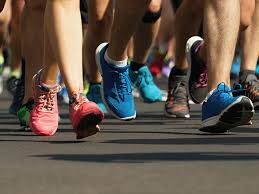
It’s healthy to test your limits and perceived boundaries, but running half marathons and marathons takes a toll—physically, mentally, emotionally, socially, and financially. Finding the sweet spot between your comfort zone and the danger zone is tricky.
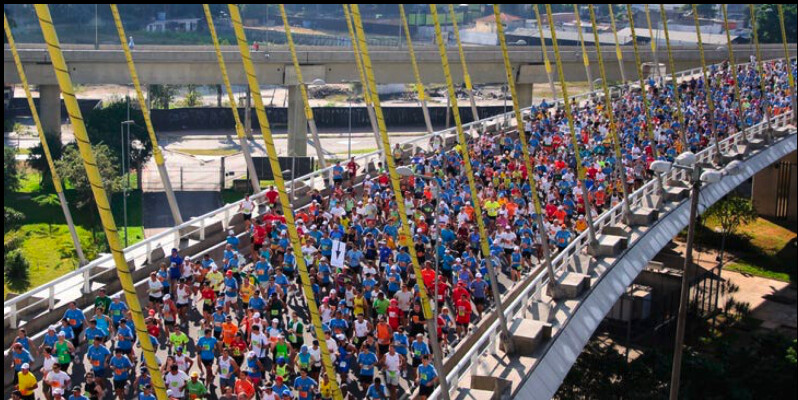
So, we chatted with a few experts on setting values-driven goals, being ambitious but realistic, and using social media for support (beyond that quick hit of dopamine). Before you tackle your racing bucket list, read on.
How much racing is too much racing?
According to the experts, there’s no definitive answer to the “too much racing” question. “It depends on the person and what your short and long-term goals are and your current fitness conditions,” Raj Hathiramani, certified running coach at Mile High Run Club in New York City, tells Runner’s World. Even a series like the World Marathon Challenge, in which participants jet between all seven continents, completing a different marathon every day for one week straight, is doable if you’re prepared.
That said, training for an aggressive racing schedule requires time (for both running and recovery) and resources, like coaching, gym access, and funding to cover travel, race fees, childcare, and other family and household-related support.
“This is where I think a lot of people get it wrong,” Todd Buckingham, Ph.D., exercise physiologist at PTSportsPRO in Grand Rapids, Michigan tells Runner’s World. “They want to do a marathon or an Ironman, but they only have, say, three hours a week to train. That’s not going to be feasible.”
Buckingham points out that your training and race schedule needs to fit into the reality of your life and not the other way around. Otherwise, you risk overextending yourself and heading into events undertrained, which can lead to disappointment and injury.
How do you determine how much to race?
1. Start with your why
Before you start registering for races and scheduling training runs, ask yourself this question: “Why am I doing this?” There’s no right or wrong answer, but if you’re drawing a blank, or the big pay-off is external validation (are you already mentally editing your highlight reel?), you may need to re-evaluate your goals.
That’s because healthy, worthwhile goals should align with your personal values, according to Mike Gross, Psy.D., head of sport psychology services at Princeton University in Princeton, New Jersey. “Let’s get a sense of your ‘why’ and be really clear on that,” he tells Runner’s World. “Why in your heart do you want to do this?” he asks, noting that your why can serve as a compass that guides your actions and keeps you focused and on course in the face of obstacles.
If you don’t understand your reasons for doing something, you’re more likely to give up or follow through just for the sake of getting it done. “That’s when you’re just kind of white-knuckling it through the process. You’re starting to notice there’s no enjoyment in it, and that’s when some of the burnout symptoms start to arise,” Gross says.
For Hathiramani, the motivation to achieve his own “big” goal of running 50 marathons in 50 states was multi-pronged. Before formalizing the goal, he’d organically completed races in 10 states just by registering for events that appealed to him. He realized that participating in a race in each state would allow him to further connect with members of his running community, many of whom shared the same ambition.
Running in different states also gave Hathiramani an opportunity to access and explore parts of the country through the sport that he loves. “I thought it would be a really neat way to see the U.S., run some smaller races, some bigger races, and visit parts of the U.S. I’d never thought I’d be able to, whether it was the Shiprock Indian Reservation in New Mexico or a Christian camp in South Dakota,” he explains.
Keep in mind that not every challenging goal is defined by mileage. One of Hathiramani’s most meaningful goals was committing to strength training for at least 10 minutes twice a week. “That really helped my running, especially as I was getting older and running faster, longer distances. I felt that I needed more muscular endurance,” he says.
Buckingham encourages long-distance-oriented runners seeking a challenge to consider shorter, faster races. “A marathon, from a cardiovascular standpoint, is easy compared to a 5K or 10K,” he says.
2. Don’t race every race
Depending on the number of races you want to do and other personal variables, such as your racing experience and fitness level, you could aim to PR some events and simply finish others, as racing is more demanding and necessitates more recovery.
To that end, Buckingham recommends pursuing no more than two “goal races” a year—one in the fall and one in the spring—particularly if they’re longer, like a half or full marathon. “You want to give yourself several months in between to recover from the last marathon and get ready for the next,” he says, noting that attempting to “carry over” fitness in back-to-back events can backfire with injuries and other symptoms of overtraining.
For runners doing races in quicker succession, it’s key to incorporate recovery strategies in the days (or hours) between.“You can race hard for seven days in a row as long as you are adequately trained for that and adequately recover from it,” Hathiramani says. For example, he has done back-to-back marathons several times, but puts a specific focus on recovery between those finish and starting lines. This includes intentional practices like foam rolling, proper fueling, and quality sleep.
3. Take your time
The experts caution that imposing strict time constraints on your goals can increase your risk of injury, add unnecessary pressure, and take away from your overall enjoyment and satisfaction.
For example, Hathiramani embarked on his 50-marathon goal in 2010 when he was in his mid-20s, knowing that he wanted to finish by the time he was 40 years old. He finished “on time” in early 2024. This realistic timeframe allowed him to relish the experience and navigate unexpected obstacles, like COVID-related race cancellations.
“It was never about trying to achieve that type of goal in a certain amount of time. It was more about enjoying the process of falling in love with running,” Hathiramani says.
4. Be mindful with social media
It’s nearly impossible to escape the influence of the digital platforms that are now integrated into our everyday lives, but thinking about what you might do if you couldn’t share your goals with a wider audience is a useful thought exercise. That’s because it’s not exactly smart to set goals just so you can post about them.
However, social media is part of most runners’ lives, and there are positive aspects to online engagement. “If you put your goals out there by telling your family or friends or working with a coach, you get someone else that can help keep you accountable,” Hathiramini says, noting that the support of his community was instrumental in keeping him motivated to achieve a goal that spanned more than a decade. They not only celebrated his wins but also offered support when he needed it most. “They’re also there to help pick you up from any setbacks, too.”
Finally, with all of this in mind, don’t shy away from a big goal. “I think the mind and the body—the mind, more so—is pretty incredible in that it can expand its limits to what you desire to achieve,” says Hathiramani.
by Runner’s World
Login to leave a comment
Have an Upcoming Race? You Don’t Need To Run the Full Distance During Your Training (Seriously)
I’d been her go-to person for running advice and positive reinforcement during her training block. She didn’t really need me— she was crushing her long runs and felt good about the progress she had made, so her frantic call was unexpected. I asked what was wrong.
“Well, I felt like I needed to do the full 13.1 miles,” she said. “So I did. Now my butt hurts.”

How long should long runs actually be when training for a race? Well, we'd talked about how most training plans didn’t go up to the full race distance and that it was by design. There was no need to go over 10 miles to have the fitness necessary to complete the half marathon.
Christine Conti, running coach and fitness specialist
Katherine Campbell, CPT, DPT, physical therapist, personal trainer, and running coach
So why did my friend go totally against her plan and all practical advice? Her reason: “Just to make sure I could.”
Christine Conti, a running coach and fitness specialist, is familiar with the need to instill confidence in runners throughout the training process and recognizes the fear first-time racers face.
“They're doing their training and they really believe that if they don't try it first, they'll never make it,” she says. “And we're told in life, ‘practice, practice, practice.’ You don't want the first time you do something to be the big show, right? But you really shouldn’t do it.”
When I think back to my first half marathon, I remember the doubt and fear. How can you know you can reach the finish line if your longest long run is only 10 miles?
Well, good news: There's proof you can finish a race without running the full distance first, so you don’t have to try it—and you can avoid a literal pain in the butt.
Why don’t training plans go the full race distance?
Contrary to popular belief, most training plans are designed to go just short of the full mileage of the race you're running, according to Katherine Campbell, CPT, DPT, a physical therapist, personal trainer, and running coach.
“Typically most general half marathon plans only go to 10 to 11 miles because they're made for beginners,” Campbell says. “As a beginner or even intermediate runner, you want to make sure you're recovering enough from your long runs where you can get the aerobic benefits without actually putting too much load through your musculoskeletal system to cause injury.”
This is the same reason your marathon training plan usually only goes up to a 20-mile long run—not the full 26.2 miles.
A more advanced half marathon training plan can go above 13 miles—sometimes up to 16 miles. But the thing is, many runners using this type of plan are faster than beginners who are sometimes running a double-digit-mile long run for the first time and should be conservative with their pace.
“Running faster paces would equal out to the same time on feet as most beginners running 10 to 11 miles,” Campbell says.
That’s the key: time on your feet. Especially when it comes to marathon training where slower runners could potentially be slogging through long runs for hours.
“Anything after a three-hour long run doesn't have a drastic aerobic benefit, but it does drastically increase your risk of injury,” Campbell says. “As a physical therapist and coach, I will usually cut runners off at about 3.5 hours as a peak long run. A typical ‘average’ pace is usually around a 10-minute mile, and 3.5 hours at that pace is usually 20 miles.”
Half marathoners could go up to 13 miles in under three hours, but every mile out there while you’re tired is a chance for your form to break down. Unless you have excelled in your base training and have already tackled seven miles for your long run, it’s not worth going above 10 or 11 miles for your longest long run.
What's the risk of running the full distance before the race?
The more you’re running on tired legs after a log training block, you might subject yourself to overtraining.
“Running a full distance before the race dramatically increases your risk for injury,” Campbell says.
In addition to sore and tired muscles, there are other systems in your body that go a little haywire following 26.2 miles. Your cardiovascular system is amped, your kidneys are working overtime to filter waste from your blood during and after your marathon, and your immune system weakens in the hours following such a long distance.
“There's so much happening on a physiological and musculoskeletal level that if you ran more than 26 miles before the race, you're risking not giving yourself enough time to recover to actually perform on race day,” she says.
You must tell your brain to stop doubting the structure of the plan, according to Conti.
“Beginners might look at these training plans without understanding the science behind it,” she says.
A well-made plan—meaning one made for you by a coach or designed by an expert—will bring you up to your physiological edge to help prepare your body for the aerobic challenge of a long distance and then back off just before race day.
What is ‘tapering’—and how will this strategy help you run your full race distance?
The point is you don’t want to be out on the road for too long lest you get hurt or sick. You might be wondering w
During the taper phase in half marathon and marathon training, your body recovers from the high demand of the training weeks before. By reducing training volume and intensity in the weeks leading up to the race, tapering alleviates accumulated fatigue, repairs muscle damage, and replenishes energy stores. Because you're racing on healed legs, you’re less likely to face injury.
“A nice taper two to three weeks before the race will make your legs fresh,” Campbell says. “Trust that the training, optimal recovery, and fresh legs will get you there.”
How to embrace the unknown of the last few miles
So you don’t want to get hurt. You don’t want to get sick. You’ve decided to follow your plan and have vowed not to go the full distance. But you’re still nervous. Mentally, how should you deal in the weeks leading up to the race?
It’s about trusting yourself and the training you’ve already done. As many old-school coaches will say, “The hay is in the barn.”
“I remind my clients that you should be looking at the amount of miles you run per week,” Campbell says. “You've trained your body to run the distance if you have been averaging over 26 miles per week for a marathon and 12 miles per week for a half marathon.”
If you can convince yourself that you’re physically prepared, you’re mind should settle down.
“For me, my first marathon was a bucket list item. I thought the people who ran these races were superhuman. I had no idea your body could actually run or perform for that amount of time without dying. But I trusted that if I followed the plan, I would do it.”
For her first half marathon, Conti never ran more than a nine-mile long run.
How to mentally preparing for the final stretch of your race
There are some tricks to help the last miles fly by. First, ask other runners about their experiences in the last couple miles of a race. For me, the last two miles of my first half marathon were exhilarating. I celebrated each step I took after the 11-mile mark because every step represented the farthest distance I had run in my life.
My first marathon was a little different. The last three miles were a total pain cave, but there was no freaking way I was going to give up. You’ll feel the same way.
Aside from sheer determination, here are other tactics to pull you to the finish:
1. Use the crowd
At big races, crowds will line the street leading up to the finish. Their cheering will create an electric atmosphere.
“A fun tip I like to give my runners is to have your friends and family scattered throughout the last few miles to give you that extra energy boost, too,” Campbell says.
2. Break up the distance
You might be doing this throughout the race, but it’s especially useful in the last few miles.
“It’s all mental,” Conti says. “Think about it like, ‘Oh my gosh, all I have is a 5K left. I've done this a million times.’ Or ‘I have six miles. That’s two 5Ks. That’s easy.” You're almost done. And if you have to give yourself some grace and walk a little bit, you're still going to make it. You're going to be fine.”
3. Repeat a mantra
Both Conti and Campbell say mantras are a proven way to keep your mind right as you go into the last miles of a race.
“I am all about mantras,” Campbell says. “Find one, practice it, and keep saying it.”
Campbell also suggests writing down one win each week throughout your entire training cycle.
“Read all of them and come up with three positive reasons before your race that remind you that you're prepared for the race,” she says.
Login to leave a comment
The Keys to Courtney Dauwalter’s Continued Dominance
During a recent press conference, Dauwalter dished oUltrarunner extraordinaire Courtney Dauwalter has picked up in 2024 right where she left off last year. After famously winning three of ultrarunning’s most epic races during the span of about nine weeks last summer—Western States 100, Hardrock 100, and Ultra-Trail du Mont-Blanc—the 39-year-old athlete from Leadville, Colorado, defended her Transgrancanaria 126K title in a decisive wire-to-wire win in late February and won the Mount Fuji 100-miler for the second time on April 27, placing third overall.
She’s now gearing up to go for a third straight win at the Hardrock 100 on July 12-13 in Silverton, Colorado. After Hardrock, she’ll be crewing and pacing her husband, Kevin Schmidt, at the Leadville 100 on August 17-18, and then tackling a yet-unannounced trail running project in September.We caught up with Dauwalter to talk about her fueling and training in a virtual press conference, where she announced the May 20 release of her signature flavor of Tailwind Nutrition Endurance Fuel—Dauwaltermelon with Lime—as a permanent part of the brand’s lineup. Since she’s emerged as one of the world’s top trail ultrarunners, she’s been known for having a sound approach to nutrition and fueling, never shying away from eating whatever she wants, admitting her soft spot for candy and pastries, or having a beer every now and then if she feels like it.


COURTNEY DAUWALTER: I am still eating all of my favorite things whenever they sound good in quantities that sound good, and I am not intending to change that part of my life, because it just gives me a lot of joy to live that way. I guess it’s got to be partly my upbringing, and also with Kevin and I, our idea of how we want to live our lives is to enjoy it to its fullest while it’s here. We just want to enjoy food, enjoy meals out, enjoy the cravings that we have, and not worry about it. But I would say in the past couple of years I do more consistently do a recovery drink after a long run or after putting in big efforts, and that’s something that I was a little more lax with originally, so I feel like that’s a step in the right direction.
When I first got into ultrarunning, I had no nutrition plan. I didn’t know what I was doing. My first race was a 50K, and I remember not knowing that these aid stations would be buffets. My mind was blown when I got to them—all the options were overwhelming. I just started filling my pockets with jelly beans. In those first years, I did a lot of mimicking of what the people around me were doing. So if I came to an aid station and someone was grabbing pickles and drinking Mountain Dew, then that’s what I would do. If they were grabbing pretzels and cheese cubes, that’s what I would go for. It was just kind of roulette for me on what I would end up eating—if it would work, or if it wouldn’t work.
Initially, I never had a fueling plan at all. But then in 2017, I went to the Run Rabbit Run 100 in Steamboat Springs, Colorado, and Tailwind was available on course at all of the aid stations. I had a buddy who had started using it that year, and I remember just loving it and suddenly not having all the stomach issues and energy dips that I often had. I was like, ‘Oh, maybe this is what it’s like to have something reliable.
'At this point we’ve gotten pretty dialed on the race nutrition plan for those 10-to 24-hour efforts or the events of 100 miles or below. I’m not a person who has my watch beeping at me ever to remind me to eat. I don’t get those kinds of reminders, and I don’t want to eat every 15 minutes or 30 minutes during a race. I’m going to just slow drip the calories I have as often as possible—basically it’s an eating contest on the move. Now I know my body functions pretty well with about 200 calories per hour during those efforts. So, depending on the distance between aid stations, I can rely solely on a bottle of Tailwind and then supplement with some chews or waffles or gels, because usually I get actually hungry feeling and having something solid helps with that. But mostly, I’m relying on Tailwind as my backbone to the whole plan and generally aiming for that 200-calorie-per-hour benchmark.The past couple years (working with a nutritionist friend), we’ve been better at creating A, B, C and D plans—because sometimes the perfect nutrition plan that you have relied on isn’t going to work. Our approach is that’s fine, and here are some things you can start subbing in during a race that can cover your needs. I view race nutrition like a puzzle piece, and sometimes it fits into the puzzle right where we want it to, and sometimes we have to kind shift things around a little bit. I think one of the reasons a lot of us love ultrarunning is because, when things just aren’t going to plan, we have to problem-solve it.
That’s one thing I’m hoping to focus on a little bit more on in this buildup and this prep for Hardrock, because in the past couple times I’ve run it, I’ve struggled a little bit with taking stuff in. I would love to just try to intentionally train my stomach to be better at taking in those calories while pushing hard at 12,500 feet or 13,000 feet just to see if we can make some strides forward. So stay tuned on if that works or not.
Not specific things. I think I want to just keep finding the challenges that intrigue me and fire me up to keep putting in the work, the training, the time, the effort to go after them. And so whatever that is, there’s not a list of things I want to check off necessarily, but, I’m continuing to pour myself into this sport and see what’s possible while every one of my systems [muscular, digestive, endocrine, cognitive, emotional, etc.] is allowing that to happen. The Leadville 100 is on my short list of races I would love to do as soon as I can, but as far as a bucket list in general or what intrigues me, I’m still very interested in exploring the longer stuff and how our brains and our bodies can work together to take us over 100 miles. What does that look like to move efficiently for 200 miles or 500 miles? So that’s where I am putting a lot of my attention into—just finding ways to test myself on stuff that’s really long.I am interested in trying a road marathon again at some point because that was what led me to ultrarunning.. I didn’t think I could make that distance, but I finished without dying and then wondered, ‘What else is out there that sounds too hard that I could try?’ And then I stumbled into the ultrarunning world. In those first marathons, I was a casual runner.
I ran every day before work because it made me feel better to start the day, but I wasn’t doing huge miles or running quickly. So circling back to run a road marathon would be kind of fun.I definitely didn’t invent it, and I don’t know who did originally, but I know that for me that phrase just became this imagery that I really grabbed onto—as opposed to the struggle bus or the hurt locker or the many other terms. That one for me was visually something I could see, and it was something that I could work with to be productive. Back in high school, I had a cross country skiing coach who was big on the mental side of the sport and would always remind us and believe in our capacity to push past that moment when it feels like you have nothing left. He was huge on just the idea that there’s always one more gear. So I just crank the knob and believe that it can be cranked a little bit more. Having someone who believed in me so wholeheartedly that I could trust to keep pushing was important because it’s hard to do that when you’re any age, but for sure it’s hard to do when you’re a teenager.
The idea that you feel like you’re about to die and yet you’re telling me there’s more to push past that? That’s hard to learn. So I feel really lucky that I had that coach and to learn about that mental side of sports and digging deeper than you think.
That was so special, a highlight of my life for sure. We ran together through the desert in Arizona, side by side the whole time through all the highs and lows, and made it to that finish line. I’ll remember that forever, and that gift that she gave me of doing this thing with me and the sport I love and spending so much time preparing for it. She was training hard back home in Minnesota, trying to learn how to run trails, trying to power hike hills, and learning how to use all of the gear because she had never really run trails before. I think the domino effect is that you can start anything at any age. She was 66 when we ran this race together and 64 when she started this journey into trail running. I had told her my dream was to run an ultra with my mom, and now that she has completed a 100K, she has found a lot of joy in the trails. Even though we don’t have a race on the calendar together yet, she is still just finding that peace that the trails bring her, and it’s something she incorporates into her weekly life. I think that’s really cool, and it’s why I hope more people can find out about trail running—not necessarily even ultrarunning—but just getting out on the trails and exploring a little bit because that feeling of moving with your feet surrounded by nature and feeling so small in a big landscape is really, really cool.
My hope is that people hearing about the stuff that I’m doing or that the ultrarunning community is doing helps them believe they could go after something that sounds too hard or something that sounds crazy. Whether that’s running 100 miles or 200 miles or not. We can all find that thing in our lives that we can go after with a little more gusto and raise the bar for ourselves on what we’re actually aiming for. I also hope I can be a small example that you can work really, really, really hard at something and have a lot of fun doing it. Those things can happen at the same time and there’s no reason to separate them. I never predicted this chapter in my life, but I feel grateful every day for it. I’m just trying to squeeze as much living out of this period of life as I can.
n her approach to nutrition and fueling, early-career bonks, and more.
by Outside Online
Login to leave a comment
The Keys to Courtney Dauwalter’s Continued Dominance
Ultrarunner extraordinaire Courtney Dauwalter has picked up in 2024 right where she left off last year. After famously winning three of ultrarunning’s most epic races during the span of about nine weeks last summer—Western States 100, Hardrock 100, and Ultra-Trail du Mont-Blanc—the 39-year-old athlete from Leadville, Colorado, defended her Transgrancanaria 126K title in a decisive wire-to-wire win in late February and won the Mount Fuji 100-miler for the second time on April 27, placing third overall. She’s now gearing up to go for a third straight win at the Hardrock 100 on July 12-13 in Silverton, Colorado. After Hardrock, she’ll be crewing and pacing her husband, Kevin Schmidt, at the Leadville 100 on August 17-18, and then tackling a yet-unannounced trail running project in September.
We caught up with Dauwalter to talk about her fueling and training in a virtual press conference, where she announced the May 20 release of her signature flavor of Tailwind Nutrition Endurance Fuel—Dauwaltermelon with Lime—as a permanent part of the brand’s lineup. Since she’s emerged as one of the world’s top trail ultrarunners, she’s been known for having a sound approach to nutrition and fueling, never shying away from eating whatever she wants, admitting her soft spot for candy and pastries, or having a beer every now and then if she feels like it.
RUN: How did you develop such a sensible approach to nutrition and fueling, and what, if anything, have you changed?
Courtney Dauwalter: “I am still eating all of my favorite things whenever they sound good in quantities that sound good, and I am not intending to change that part of my life, because it just gives me a lot of joy to live that way. I guess it’s got to be partly my upbringing, and also with Kevin and I, our idea of how we want to live our lives is to enjoy it to its fullest while it’s here. We just want to enjoy food, enjoy meals out, enjoy the cravings that we have, and not worry about it. But I would say in the past couple of years I do more consistently do a recovery drink after a long run or after putting in big efforts, and that’s something that I was a little more lax with originally, so I feel like that’s a step in the right direction.”
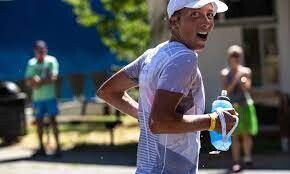
RUN: What was your fueling strategy when you first got into ultrarunning in 2011?
CD: “When I first got into ultrarunning, I had no nutrition plan. I didn’t know what I was doing. My first race was a 50K, and I remember not knowing that these aid stations would be buffets. My mind was blown when I got to them—all the options were overwhelming. I just started filling my pockets with jelly beans. In those first years, I did a lot of mimicking of what the people around me were doing. So if I came to an aid station and someone was grabbing pickles and drinking Mountain Dew, then that’s what I would do. If they were grabbing pretzels and cheese cubes, that’s what I would go for. It was just kind of roulette for me on what I would end up eating—if it would work, or if it wouldn’t work.”
RUN: You have told stories about a few famous bonks early in your career. When did you start to dial-in your fueling strategy?
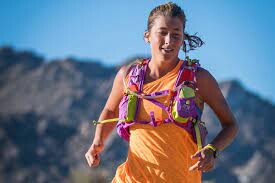
CD: “Initially, I never had a fueling plan at all. But then in 2017, I went to the Run Rabbit Run 100 in Steamboat Springs, Colorado, and Tailwind was available on course at all of the aid stations. I had a buddy who had started using it that year, and I remember just loving it and suddenly not having all the stomach issues and energy dips that I often had. I was like, ‘Oh, maybe this is what it’s like to have something reliable.'”
RUN: What is your current approach to race-day nutrition?
CD: “At this point we’ve gotten pretty dialed on the race nutrition plan for those 10-to 24-hour efforts or the events of 100 miles or below. I’m not a person who has my watch beeping at me ever to remind me to eat. I don’t get those kinds of reminders, and I don’t want to eat every 15 minutes or 30 minutes during a race. I’m going to just slow drip the calories I have as often as possible—basically it’s an eating contest on the move. Now I know my body functions pretty well with about 200 calories per hour during those efforts. So, depending on the distance between aid stations, I can rely solely on a bottle of Tailwind and then supplement with some chews or waffles or gels, because usually I get actually hungry feeling and having something solid helps with that. But mostly, I’m relying on Tailwind as my backbone to the whole plan and generally aiming for that 200-calorie-per-hour benchmark”
RUN: You had to overcome some stomach challenges in UTMB in 2022 and then at last year’s UTMB you seemed as physically challenged as you have ever been. How have you adjusted your fueling in those situations?
CD: “The past couple years (working with a nutritionist friend), we’ve been better at creating A, B, C and D plans—because sometimes the perfect nutrition plan that you have relied on isn’t going to work. Our approach is that’s fine, and here are some things you can start subbing in during a race that can cover your needs. I view race nutrition like a puzzle piece, and sometimes it fits into the puzzle right where we want it to, and sometimes we have to kind shift things around a little bit. I think one of the reasons a lot of us love ultrarunning is because, when things just aren’t going to plan, we have to problem-solve it.”
RUN: You’ll be doing a lot of your pre-Hardrock training in and around Leadville between 11,000 and 14,000 feet above sea level once the spring snow subsides. How are you able to fuel at such high altitudes?
CD: “That’s one thing I’m hoping to focus on a little bit more on in this buildup and this prep for Hardrock, because in the past couple times I’ve run it, I’ve struggled a little bit with taking stuff in. I would love to just try to intentionally train my stomach to be better at taking in those calories while pushing hard at 12,500 feet or 13,000 feet just to see if we can make some strides forward. So stay tuned on if that works or not.”
RUN: Do you have any bucket list events you want to tackle in the coming years?
CD: “Not specific things. I think I want to just keep finding the challenges that intrigue me and fire me up to keep putting in the work, the training, the time, the effort to go after them. And so whatever that is, there’s not a list of things I want to check off necessarily, but, I’m continuing to pour myself into this sport and see what’s possible while every one of my systems [muscular, digestive, endocrine, cognitive, emotional, etc.] is allowing that to happen. The Leadville 100 is on my short list of races I would love to do as soon as I can, but as far as a bucket list in general or what intrigues me, I’m still very interested in exploring the longer stuff and how our brains and our bodies can work together to take us over 100 miles. What does that look like to move efficiently for 200 miles or 500 miles? So that’s where I am putting a lot of my attention into—just finding ways to test myself on stuff that’s really long.”
by Brian Metzler
Login to leave a comment
Hardrock 100
100-mile run with 33,050 feet of climb and 33,050 feet of descent for a total elevation change of 66,100 feet with an average elevation of 11,186 feet - low point 7,680 feet (Ouray) and high point 14,048 feet (Handies Peak). The run starts and ends in Silverton, Colorado and travels through the towns of Telluride, Ouray, and the ghost town...
more...Tips to take your running from zero to marathon
Is your goal of completing a marathon daunting because you’ve never run before? Maybe running a marathon is on the bucket list, you're looking to challenge yourself physically, lose weight, or raise awareness for a charity important to you. Whatever your motivation, the first step is finding that ‘why’ and reminding yourself of it along the way.
Beyond having a reason to keep you going, know the techniques for how to start running and hit the distance in the half-marathon or full marathon with our tips below.

1. SLOW AND STEADY WINS THE RACE
Avoid burning yourself out right from the start by gradually building up your runs. Slowly increasing the time and distance you run by 10-20% each week and you’ll be less prone to suffer an overuse injury and tightness. Many run related injuries are caused by a rapid increase in the amount of running done. Give yourself plenty of time to train - around 6 months is ideal for a first-timer. Consider completing a couch-to-5k or other fun run event as part of your training. It’s hard not to fall in love with running once you get going and the temptation may be to run too far too soon which your body won’t thank you for. Instead, work up to those milestones slowly and bit by bit.

2. INVEST IN YOURSELF WITH THE RIGHT RUNNING SHOES
Finding the right footwear specifically for your running style is paramount to feeling good on your runs and sticking with it. Take the time to visit a Running Expert location near you to be assessed for your foot type and gait pattern. Through this process, you’ll learn the level of stability and support best suited for you. It’s important to have your running shoes dialled in well before race day to break them in and be sure they don’t cause you any pain.
3. PICK A MARATHON TRAINING PLAN
Following along with a training plan will offer a clear approach on how to train for a marathon and is essential to being ready for race day. A structured plan with a variety of runs with help you complete those 42.2km as strong as possible. Check out our half-marathon training plan and full marathon training plan.
It’s recommended you have a base of at least 4-8 weeks of running regularly before starting on a training schedule. Setting the foundation first will ensure you have a solid base to start your marathon training feeling ready to take on longer distances. Use a running app like ASICS Runkeeper to receive guided training, set goals, and track your progress along the way. Seeing incremental improvement will motivate you to keep going.
4. INCORPORATE STRENGTH TRAINING AND REST DAYS
Strengthening the muscles that power your running will give you better stamina and endurance. Helping you to run further distances and feel stronger while doing it. Balance your training by scheduling in days for focusing on strength. Two of the key muscle groups to work on strengthening are your core and glutes. Try simple targeted exercises like the ones highlighted in our article on Stretching and Strength Training for Runners.
Avoid running yourself into the ground by giving yourself dedicated rest days. It’s important to allow your body time to recover and repair itself. Without a rest day, you risk overtraining, burning yourself out, or even causing an injury.
5. FIND THE BEST FUEL FOR YOU
Don’t risk an upset stomach on the day of the race. Identify during your training what works best to fuel your running. Test out different carb-heavy breakfasts a few hours before your bigger run days. For a full rundown on how to dial in your nutrition, read our article from Claire Turnbull. During your runs over 90 minutes, it’s important to aim to consume around 30 to 60 grams of carbs per hour. Test out different on-the-run fuel that’s simple to eat, digest, and carry. Running gels and chews are a good go-to as they’re easy to carry and contain a nice dose of quick carbs. Another part of fueling is hydration. Race organisers often provide the option of dropping personal drink bottles at stations along the way for when you think you may need more than just the cups they hand out.
One last highly important key to running a solid race, don’t try anything new on event day.
by ASICS
Login to leave a comment
Mumbai Marathon 2024: Olympic medalist Meb Keflezighi named brand ambassador
Celebrated long distance runner Meb Keflezighi, who won a silver medal in the 2004 Athens Olympics, has been named brand ambassador of the 19th Tata Mumbai Marathon scheduled to be held on Sunday.
The race is a World Athletics Gold Label event and Procam International is the promoter of the event.
Celebrated long distance runner Meb Keflezighi, who won a silver medal in the 2004 Athens Olympics, has been named brand ambassador of the 19th Tata Mumbai Marathon scheduled to be held on Sunday.

The race is a World Athletics Gold Label event and Procam International is the promoter of the event.
“The Tata Mumbai Marathon has been on my bucket list for the longest time, and finally being able to witness Mumbai’s indomitable spirit, is indeed exciting,” Keflezighi, an Eritrea-born American, was quoted as saying in a press release.

“This event inspired a country to run and changed mindsets, that is the true legacy of a sporting event. Mumbai’s incredible energy and enthusiasm, combined with the dedication of its runners, embodies the universal language of endurance. I will only say this… remember to run with purpose, embrace the journey, and move ahead together. In every stride, find the strength to go the distance and make a difference to what you believe in.”
Keflezighi has several record-breaking accolades in his career.
He scripted history when he became the only runner to win an Olympic medal (2004), the New York City Marathon (2009) and the Boston Marathon (2014).
In 2009, Keflezighi became the first American since 1982 to win the New York City Marathon. He has achieved the feat of being in the top 10 in the New York Marathon for a total of eight times in his career.
In 2015, he set a TCS New York City Marathon masters event record with a timing of 2:13:32sec.
In 2014 he won the Boston Marathon (2:08:37), the first American male to do so since 1983, and the first American since 1985.
Since 1930, Keflezighi has held the record for being the oldest winner of the Boston Marathon as he triumphed there when he was 39 years old.
He is also a former USA National 10,000m track record holder.
The Tata Mumbai Marathon will flag off from the iconic Chhatrapati Shivaji Maharaj Terminus on Sunday.
Login to leave a comment
Tata Mumbai Marathon
Distance running epitomizes the power of one’s dreams and the awareness of one’s abilities to realize those dreams. Unlike other competitive sports, it is an intensely personal experience. The Tata Mumbai Marathon is One of the World's Leading Marathons. The event boasts of fundraising platform which is managed by United Way Mumbai, the official philanthropy partner of the event. Over...
more...30 Hours at Javelina Jundred, the Burning Man of Trail Running
Inside the spectacle of ultrarunning’s most festive top-tier 100-mile race
It’s a hot, sunny Saturday afternoon in the desert northeast of Phoenix, and Lindsay DesRochers is being chased by a dinosaur—as if 85-degree heat, a creaky left knee, and a hot spot on her right big toe aren’t enough to worry about during her first attempt at running 100 miles.
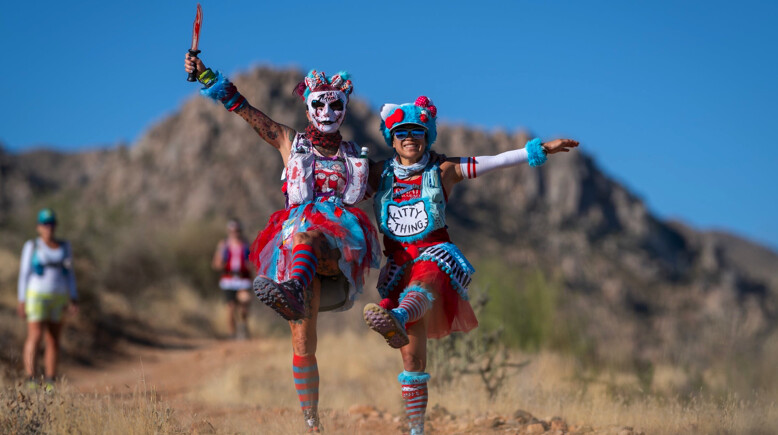
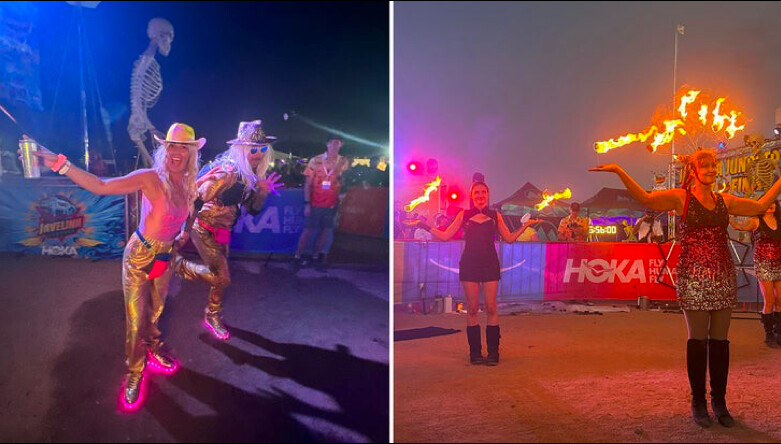
The 44-year-old senior creative recruiter from Scottsdale is 41 miles into the Javelina Jundred, and she also has to contend with a Tyrannosaurus rex who’s making her giggle. The dinosaur is, in fact, local trail running legend, Jerry Bloom, who is sweating and gasping for air inside an inflatable costume that’s kept afloat with a tiny battery-operated fan. He is dressed up as the dino-in-residence and runs alongside DesRochers briefly as she finishes the second loop of the five-lap course before sitting down to refuel and rehydrate in her crew tent.
“The problem with this thing isn’t the heat. It’s just that there’s no oxygen in here. If you run very far, you get oxygen deprivation,” says Bloom, 70, a three-time Western States and Hardrock 100 finisher who’s also run Javelina twice. “For me it’s all in good fun to support Lindsay. I’ve given up trying to be fast a long time ago. But what I’ve learned is that it’s not how far you go and it’s not how fast you go, it’s how you look while you’re doing it.”
Welcome to the Javelina Jundred—the biggest, wildest party in the trail running world.
It’s pretty obvious that the Javelina Jundred is the zaniest event in trail running and, to be frank, nothing even comes close to this dusty desert cavalcade of curiosities. It’s not quite the Burning Man of running, but it might just be better because, first and foremost, it’s a legit ultrarunning event.
More than 850 enthusiastic runners toed the starting line at 6 A.M. to begin the five-lap 100-miler, and about 400 more began the three-lap 100K an hour later. There’s also a single-loop, 19-mile nighttime race called the Jackass Night Trail for about 200 runners that includes a wild DJ’ed party at the Jackass Junction aid station and finishes as the Saturday night revelry is still going strong back at the race compound.
But because Javelina always happens on the weekend before Halloween, there’s a natural party vibe and a non-mandatory-yet-compelling reason for runners, pacers, and support crew to wear costumes. And, let’s face it, Halloween gives everyone license to fly their freak flag, so when you mix that with ultrarunning, just about anything goes. Only here it’s known as Jalloween.
This year’s most popular dress-up themes seem to be tropical and western, but, almost predictably, there are quite a few Barbie and Taylor Swift cosplayers, as well as a few heavy metal rock stars, glow-in-the-dark skeletons, and several very creepy clowns. Dozens more runners race through the desert wearing bunny ears, fox tails, and devil horns.
“This is a safe space for everyone to have fun in their own unique way,” adds Dan Gampon, a Hoka sports marketing representative from Hawaii. “It’s a fun way to give the people a chance to be weird and bring a part of themselves that they might have been wanting to bring out, and give them the opportunity just to have fun anyway they want to.”
Some crew tents are decorated with accouterments to match a particular theme, but most feature colorful holiday twinkle lights, camping chairs, sleeping bags, and coolers full of adult beverages. While there’s a stash of fancy engineered nutrition supplements and electrolyte drinks in every tent, there’s also the widest range of healthy and not-so-healthy snack food you can imagine. (I’m looking at you, guy simultaneously drinking a Red Bull and eating a handful of marshmallow Peeps.)
The Javelina staff and volunteers are fully into the Jalloween theme, too, especially race director Jubilee Paige, who dons several costumes during the 30-hour event—including getups she calls Race Director Barbie, Weird Barbie, The Dude, Cousin Eddie, Chef’s Kiss, and A Macaroni Penguin. She once again ends the event dressed as the Pope—a.k.a., “her Joliness”—because she considers Sunday “Jallelujah Javelina,” a day of celebration.
The Javelina Jundred was founded in 2003 by Phoenix ultrarunner Geri Kilgariff as an irreverent, party-oriented run on a multi-loop course, and gradually gained regional and then national popularity as word spread through the ultrarunning community about how much fun it was. Local ultrarunner Jamil Coury took over as race director in 2008. The next year he started Aravaipa Running, a Phoenix-based company that bought and now owns 75 other running events in Arizona, Colorado, Utah, Nevada, and New Hampshire.
Despite increased popularity and significant growth, Coury, Paige, and the rest of the Aravaipa crew have been able to maintain Javelina’s grassroots experience while growing it to about 1,500 runners in three events with at least that many pacers, crew, and family members hanging around the race compound. In many ways, it represents the best of both where trail running has been, but also where it could be heading.
“The race was born from a fun spirit of running with friends and looping in the desert—shout-out to Geri Kilgariff for her creation of the event in 2003,” Paige says. “But as it’s evolved, we saw opportunities to elevate the race to an ‘event’ experience for runners and crews—an ultra festival—the music and lights and entertainment just enhances that experience. However you experience Javelina, I just want you to have fun!”
As the sun begins to set, several top competitors in the 100-miler are scattered out on the remote sections of the course in hot pursuit of four Golden Ticket entries into next summer’s Western States 100. (Two tickets each for the men’s and women’s races.) That includes Boulder, Colorado, runner Jonathan Rea, who is back after a second-place finish a year ago, and—with newfound confidence from a fourth-place finish at the CCC 100K in Chamonix, France—is tearing up the desert trails on course-record pace. Triathlete-turned-ultrarunner Heather Jackson, who splits time between Bend, Oregon, and Tucson, Arizona, also takes it out hot, hoping to make up for a frustrating fifth-lap fade last year after unbearable quad pain reduced her to a walk and forced her to settle for a fifth-place finish in her 100-mile debut.
Earlier in the day, Denver’s Rajpaul Pannu and San Francisco’s Anna Kacius made quick work of the less-competitive, three-lap 100K race, finishing first and second overall, respectively, and setting new men’s (7:15:53) and women’s (8:13:07) course records in the process, while winning by more than an hour over their nearest competitors.
Ultrarunning GOAT Courtney Dauwalter from Leadville, Colorado, is out there, too, but she’s not racing for the win. She’s running the 100K with her mom, Tracy, a 66-year-old avid trail runner from Edina, Minnesota. They attempted a 50-miler in Minnesota last fall, but were timed out before the finish, so this year they chose the big party race in the desert where Courtney set a course record in 2016 before she became a household name. They’re not in costumes, but they’re running as Team Bucket List and wearing matching white shirts, cactus-themed socks, and olive-green-and-black shorts.
Because runners constantly revolve through the turnaround point at the start/finish area, everyone else is always on the move throughout the race compound. Some are drinking craft beers and mingling as they wait for their runners, while others are watching the race livestream on their phones or from the jumbotron in the Javelina Jeadquarters circus tent. Still others are devouring freshly cooked artisan pizzas made to order in the Freak Brothers Pizza mobile brick wood-fired oven.
Rousing cheers and applause catch everyone’s attention every few moments as an elite runner arrives—including the ever-smiling Jackson, who quickly heads out on her fifth and final lap with a 30-minute lead in the women’s 100-miler.
“Heather is just amazing,” says Troy Brown, 48, a trail runner from Coto de Caza, California. “She’s always smiling. I’m just a fanboy, but I like anyone who can smile that much through pain.”
After Jackson runs out of sight, Brown quickly shifts his focus to getting his feet into an inflatable T-Rex costume so he can participate in the costume contest, an informal event that brings out a sheriff riding an inflatable rooster, Minnie Mouse, a foursome of Teletubbies and, of course, several dinosaurs. There’s also a guy dressed as Aladdin wearing a large golden lamp around his waist who is joined by a scantily clad Jasmine character who not-so-discreetly rubs the lamp in a Not Suitable for Work (NSFW) scene that draws both raucous laughs and shocked gasps from the crowd.
One of the best dressed-up groups of the event is a foursome of women from California’s Healdsburg Running Company: Dominique Chevalier (“Western Barbie”), Krista Kappus (“Alien Barbie”), Saddie Alloway (“Rootin’ Tootin’ Diva Barbie”), and Susan Oh (“Disco Bob Ross”). But the costume contest winners are the Montana Mermaids, a bikini-and-grass-skirt trio from Bozeman—Lena Romeo, Kara Haskell, and Liv Bleskin—who were there to crew and support elite runners Rachael Norfleet of Montana in the 100K and Utah’s Ryan Montgomery in the 100-miler.
The sun begins to set, but the party’s just getting started as DJ Colter Stillwell pumps tracks through the sound system as a full moon rises in the eastern sky. One of the rowdiest dancers is Brendan O’Hara, a Colorado trail runner who’s dressed up in a red-and-white mouse outfit with flashing lights similar to what popular Canadian electronic musician Deadmau5 wears on stage. As lots of energized runners entered in the Jackass race are about to head out into the night, two professional fire dancers perform a mesmerizing routine adjacent to the start line.
Just after dark, Rea comes flying into the finish area, stopping just short of the finish line to pantomime deadlifting a colossal barbell before crossing the line in a new course record of 12:43:10. Seattle runner Blake Slattengren stopped the clock next in 12:58:07 to claim the second Golden Ticket, while Montgomery ran another strong race to take the final podium spot in 13:01:14.
Redeeming herself from last year, Jackson finishes strong to win the women’s race and finish sixth overall, thanks in part to the aggressive pacing of Devon Yanko. Jackson’s time of 14:24:47 is the second-fastest women’s time ever behind Camille Herron’s 14:03:23 course record from 2021. Spain’s Ragna Debats (14:55:27) outran Riley Brady (15:29:17) to earn the second women’s Golden Ticket.
Not long after midnight, the Dauwalters finish, too. Covered in dust, sweat, and even a little bit of blood—Tracy took a tumble on the first lap early the previous morning—they cross the finish line after 17 hours of running with big smiles and hug in a classic mother-daughter moment. Late Sunday morning, DesRochers makes it to the finish line, too, in 27:31:41, battling hard to overcome dehydration, an upset stomach, and nagging hip flexor pain at various points during the race.
“I was prepared for it to be hard, and I knew I was going to hurt. At some point, I was like, Oh, right, this is what running 100 miles feels like,” DesRochers says. “It was difficult, but I kept my positive mental attitude the whole way. I have a buddy who has a saying, ‘Forward is a pace,’ so I kept repeating that and kept putting one foot in front of the other and I didn’t quit.”
Something that’s especially apparent at Javelina is that everyone is celebrated as an equal, regardless of finishing times, trail running experience, athletic ability, age, or any other dissimilar details. The event goes out of its way to create an environment that promotes visibility and inclusion for everyone, and the community of participants seems to embrace it by cheering and encouraging for everyone the same.
It has partnered with Native Women Running, Latinos Run, and Black Men Run each of the past several years to bring their runners to the race, and it was also one of the first ultra events to offer a non-binary category. This year there were six non-binary runners racing over its three races, led by Willow Dolde in the 100-miler (20:01:29), Andreas Anderson in the 100K (13:54:30), and Tasha Hartwig in the Jackass 31K (6:42:07). (Although Brady, a non-binary runner from Boulder, was competing in the women’s division because they were racing for a Golden Ticket, they were also, unofficially, the top non-binary runner in the race.)
As the golden hour comes and goes early Sunday afternoon—and final finishers Holly Sitzmann, Jim Buckley, Brittany Edmiston, and Leslie Astle squeeze under the 30-hour cutoff with help from their pacers and crew—it’s clear that everyone at Javelina is celebrated equally and enthusiastically. That also includes two unofficial finishers—Rayna Rodriguez and Tatiana Orozco—who complete the 100-mile course just outside of the time cutoff, but are welcomed by a scream tunnel of remaining spectators and the adulation of Paige even though neither will receive a finisher’s buckle.
“Javelina is a celebration, and the invitation to run and participate at Javelina extends to everyone,” Paige says. “I want to ultimately show how amazing the community is and that this sport is for everybody and every body—the spirit of ultra is diverse and should be celebrated.”
by Outside online
Login to leave a comment
Australian ultrarunner makes history by racing UTMB and Ironman World champs
Ultrarunner Lucy Bartholomew made running and triathlon history on Sunday, becoming only the second woman ever to finish the 171-kilometre Ultra-Trail du Mont-Blanc (UTMB) as well as the Ironman World Championships in the same year.
Bartholomew ran remarkably well at both events, taking a tenth-place finish at UTMB in 27:39:22, and completing what was only her second Ironman in 10:43:41, with a 3:31 marathon time.
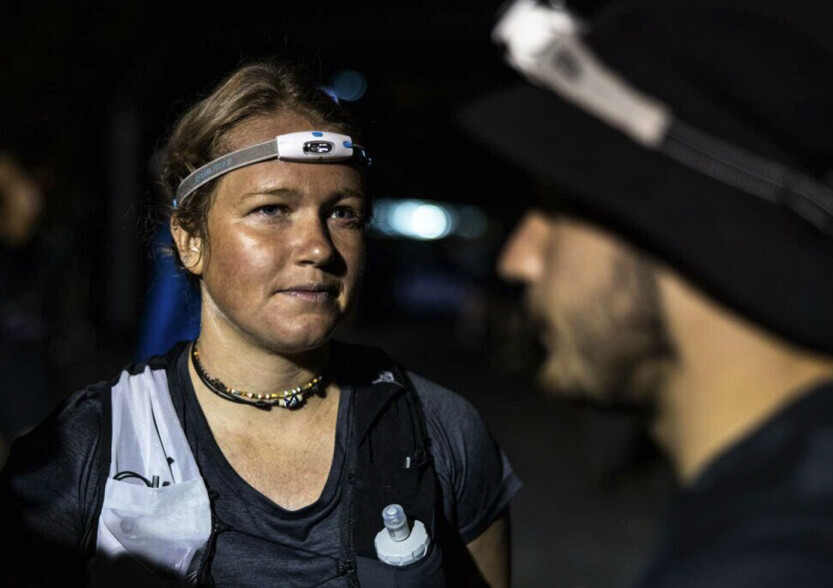
The double–nearly 400 kilometres of challenging racing–has only been conquered by one woman before Bartholomew: Ireland’s Diana Hogan-Murphy, in 2014. Bartholomew is also the fastest person of any gender to have completed both events in the same year.Bartholomew shot to fame in the ultrarunning world in 2018, when she was the third female at the Western States 100. The runner shared on social media that she lost some of the joy in racing in the years following her WSER podium, and after her 2022 race ended in a DNF, she wasn’t sure if she’d race 100 miles again.
“You show up (almost) every day to run so that you can run even more on the race day, finish and not be able to run, only to want to run, and then run to aid in the recovering of the running and to prepare for more running,” Bartholomew explained. “To take myself out of this cycle I decided to tick a bucket list idea to do an IRONMAN triathlon. It was a ‘one day, someday’ objective that I pulled forward to help pull me out of feeling stuck.”Bartholomew’s first Ironman, in Western Australia in December 2022, qualified her for the Kona World Championship event in Hawaii.
While the runner had only planned to complete one Ironman, she felt she couldn’t miss the opportunity to race in Hawaii. “Not being one who steps down from a challenge, it seemed right to go one more,” she said.
“I’ve swum, biked and run my way to fantastic recovery from UTMB and moderate triathlon fitness for Kona,” Bartholomew said pre-race. “It was a fun, fine balance to play with these two big events so close to each other.”
by Running Magazine
Login to leave a comment
TCS Toronto Waterfront Marathon: elite women’s and men’s preview
For the first time in the 34-year history of the TCS Toronto Waterfront Marathon, the race has reached over 25,000 runners. Toronto has established itself as Canada’s premier marathon and has set a precedent in the global running community, with participants coming from 78 countries around the world for the marathon on Sunday, Oct. 15.
The elite field at the 2023 edition of the marathon looks significantly different from last year, and two new champions will be crowned on the men’s and women’s sides, as Ethiopia’s Yihunilign Adane and Kenya’s Antonina Kwamboi will not be returning. The 2023 elite field features up-and-coming stars, along with several American women aiming to achieve the Olympic standard of 2:26:50 ahead of the upcoming U.S. Olympic Trials in February.
The race will also determine two new Canadian marathon champions, with compelling storylines on both the men’s and women’s sides.
Women’s race
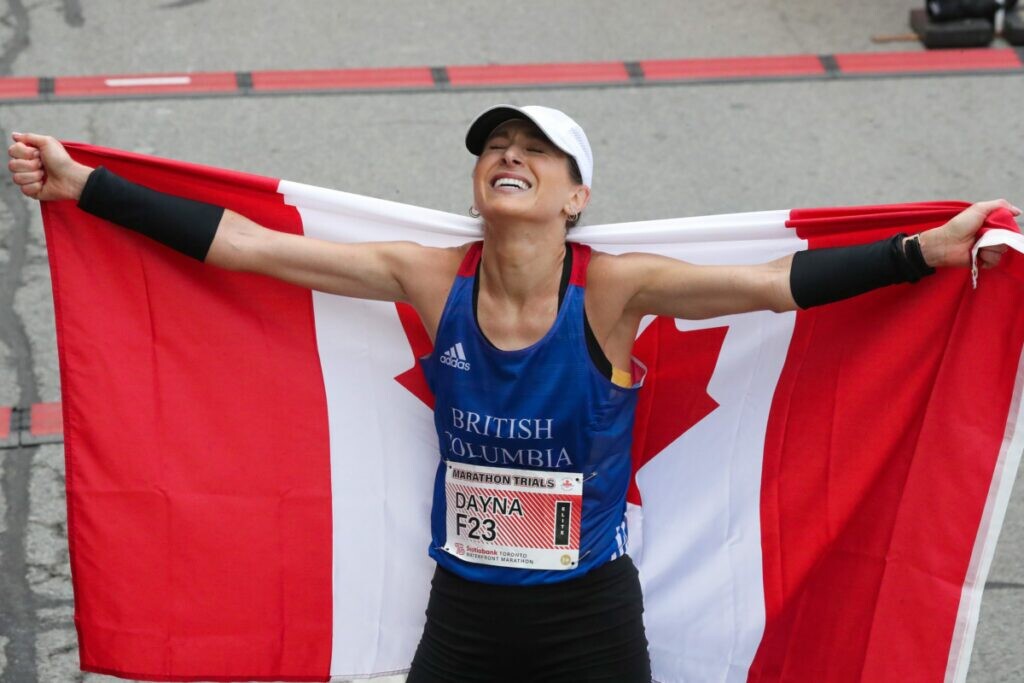
Will we see an American winner?
It has been 22 years since an American woman last won the TCS Toronto Waterfront Marathon (Leslie Gold in 2001) but in this year’s field, two American elites could possibly end the drought. One of them, Emily Durgin, a road racing specialist based out of Flagstaff, Ariz. came to Toronto looking for redemption after a less-than-ideal marathon debut in NYC last year.
Durgin said during Friday’s elite press conference that she felt the pressure to hit times and perform during her debut and ended up dropping out of the race before 30 km. “I learned a lot from New York and my build for Toronto has been different,” said Durgin. “As for a goal time, I want to run in the low 2:20s and be competitive.” The 29-year-old marathoner hopes to use Toronto as a stepping stone for the U.S. Olympic Marathon Trials in February 2024 in Orlando. Durgin was able to qualify for the trials from her time at the 2022 Houston Half Marathon where she finished 6th overall, clocking the seventh-fastest half-marathon in U.S. history with 67:54. “I came to Toronto to be competitive and contend for the the podium, as that’s what it will take to qualify at trials come February,” she said.
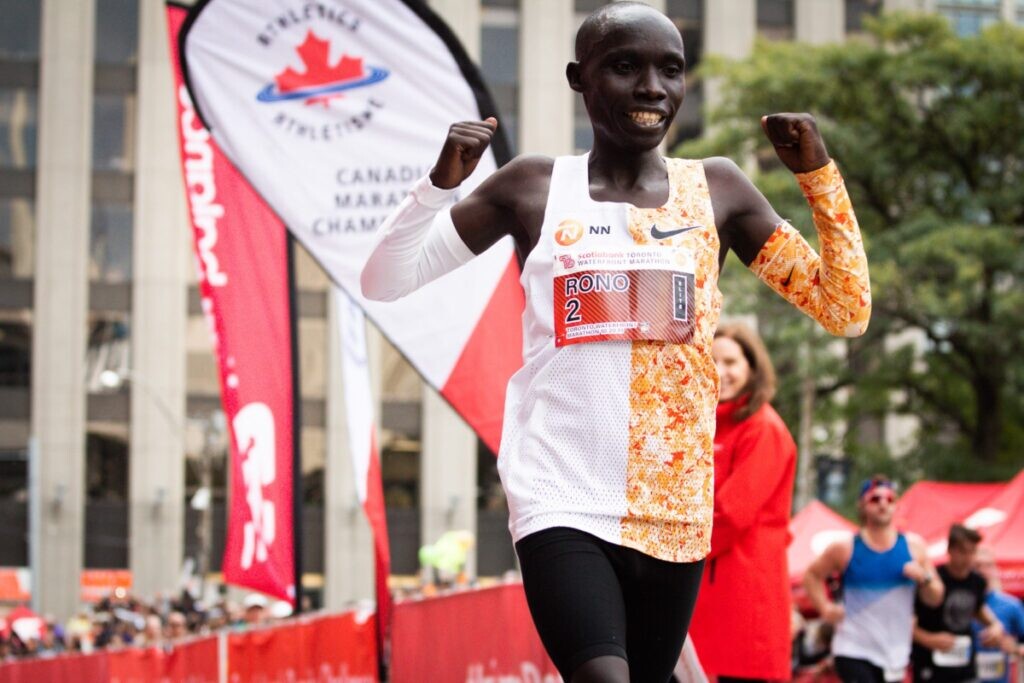
Another U.S. name in the women’s elite field to watch is Molly Grabill, who is running her sixth career marathon in Toronto on Sunday. Grabill told the media that she has similar plans to her compatriot Durgin and hopes to bounce back after, in her words, falling short of her goals in her last marathon in Hamburg earlier this year. Although Grabill ran the second-fastest marathon time of her career in Hamburg, she said she was disappointed as she took a swing and missed, struggling in the second half. “The goal in Toronto is to control the second half of the race better and gain strong momentum heading into the U.S. Olympic Marathon Trials,” said Grabill. The 31-year-old from Boulder, Colo., is coming off a top-15 finish in 69:53 at the inaugural World Athletics Road Running Championships in Riga, Latvia, earlier this month, which she says has given her a lot of confidence for Sunday.
Eyes on the course record?
Outside of the American duo, two other international athletes to watch are the Ethiopian duo of Afera Godfay and 2023 Ottawa Marathon champion Waganesh Mekasha. For Godfay, Toronto is her first marathon in three years after giving birth to her daughter. Her last marathon came in 2020 when she ran 2:26:43 to place third overall at the Xiamen Marathon in China. In her first two races back since becoming a mother, Godfay has run respectable half marathon times of 70 and 71 minutes but has not yet returned to her previous form. She said at Friday’s press conference that she hopes to come through the half mark in 1:11 and feels well-prepared for her marathon return. A glimpse of hope for Godfay is that she currently trains alongside the new women’s world record holder Tigist Assefa in Ethiopia. So, who knows what she is capable of?
The favourite in the women’s race is Mekasha, who is coming off a win in the scorching heat at the 2023 Ottawa Marathon in May. Mekasha is targeting the Canadian all-comers’ women’s marathon record on Sunday of 2:22:16, set four years ago by Kenya’s Magdalyne Masai at this race. Mekasha holds a personal best of 2:22:45 from the 2019 Dubai Marathon and said that she expects around a similar time on Sunday. “If the pacemaker runs a good pace, I hope to break the course record,” says Mekasha.
The Canadian contingent
Two of the top three Canadians from last year’s race have returned to the 2023 field, with Malindi Elmore, the reigning Canadian marathon champion, opting to run Berlin, where she clocked the second-fastest time in Canadian history (2:23:30). Returning are second and third place Canadian finishers Dayna Pidhoresky and Toronto’s own Sasha Gollish. Pidhoresky had an iconic moment here in 2019, when she raced just under the Olympic standard at the Canadian trials, winning in 2:29:03–qualifying her for the marathon at the 2020 Tokyo Olympics. Although the Olympic marathon didn’t go as planned for Pidhoresky, she was able to bounce back at this event last year to place seventh overall (second Canadian) in 2:30:58.
“Growing up in Windsor, Ont., I came to Toronto for so many races,” said Pidhoresky on tackling on her fourth Toronto Waterfront Marathon. “I feel I know the course very well, which is helpful in a marathon, and it’s great to have a high-quality field that’s close to home.” Pidhoresky told the media that this build has not been smooth but she is still confident she can run a personal best Sunday. “This course is advantageous, and I need to be smart and just run my race,” she said.
It is a similar story for Gollish, who is running in her second consecutive TCS Toronto Waterfront Marathon, less than eight weeks after her last marathon at the 2023 World Championships in August. Gollish told Canadian Running at the press conference that she wants to go into this race with a similar mindset that she had in Budapest. “It feels like a privilege to be here, and I am not putting any pressure of a personal best on myself,” says Gollish. “For the longest time, I avoided this race because I felt there would be pressure to perform, but why not run something in your backyard fuelled by a community that has done so much for me?” Last year, Gollish surprised herself with a personal best time of 2:31:40 after a short marathon build. Could she do the same on Sunday?
A few other Canadian marathoners to watch are Emily Setlack, Toronto’s Liza Howard and Kim Krezonoski of Thunder Bay, Ont. It has been four years since Setlack has last touched the marathon, but with a personal best of 2:29:48 from the 2019 edition of this race, her potential to finish as the top Canadian should not be ignored. Setlack has had a quiet 2023 season but has strung together solid performances, winning Toronto’s historic Sporting Life 10K and placing eighth overall at the Canadian 10K Championships in May.
Howard has a personal best of 2:35:29 (Chicago 2022) and was the top Canadian finisher at the 2023 Boston Marathon (37th overall) in cold, wet and windy conditions. Krezonoski moved to Toronto within the last year and has been studying the course thoroughly in the hope of crushing her marathon personal best come Sunday. She ran her personal best of 2:37 at the California International Marathon last year but has dropped her half-marathon PB by nearly four minutes since. The spots on the domestic podium are up for grabs, and each of these three women could break through.
Men’s race
The rise of Elvis
The absence of Adane opens the door for several East African men hoping to establish their marathon careers in Toronto. One of these men is Kenya’s Elvis Kipchoge, who may already lay claim to the title of the best running name. This Kipchoge is a little less well-known than the former world record holder but boasts a faster half marathon personal best of 59:15, which earned him third place at the 2022 Barcelona Half Marathon. However, this Kipchoge has not had much luck in the marathon. At the young age of 27, he ran 2:10:21 at the Vienna Marathon earlier this year. He hopes to turn things around on a fast and flat Toronto course. Kipchoge has ties to the race, training alongside women’s course record holder Magdalyne Masai in Iten, Kenya.
While there is no relation between Elvis and Eliud Kipchoge, besides sharing the same last name and initials, Ethiopian athlete Adugna Bikila hopes to follow in the footsteps of his uncle, Worku Bikila. Worku was a world-class 5,000m runner who finished sixth in the 1992 Olympic 5,000m final in Barcelona and took fourth place at the World Championships the following year. Bikila enters Toronto with the fastest time in the field, holding a personal best of 2:05:52 from the 2022 Seville Marathon, where he finished fourth.
All the East African men will be aiming to break the Canadian all-comers record and course record of 2:05:00, held by Kenya’s Philemon Rono, set in 2019. The weather forecast for Sunday indicates cool and favourable conditions for both the men’s and women’s fields, which should make both course records vulnerable.
Who’s next for Canada?
A new men’s Canadian champion will be crowned Sunday, and for the first time since 2016, their last name will not be Levins or Hofbauer. The 2023 men’s field is full of up-and-coming Canadian talent on the precipice of breaking into the elite scene. Mississauga’s Sergio Raez Villanueva returns to Toronto after a stunning 2:18:04 debut last year, which earned him top-five Canadian honours. Challenging Raez Villanueva is Ottawa’s Blair Morgan, who was the second Canadian at the hot and humid Ottawa Marathon in May, running 2:19:50. Morgan ran his personal best of 2:18:29 at the 2018 Toronto Waterfront Marathon but is looking for a sub-2:18 result this time around.
Challenging Raez Villanueva and Morgan are debutants Thomas Broatch of Vancouver and 4:01 miler Kyle Grieve. Broatch is coming off a win at the Vancouver Eastside 10K where he beat three-time Toronto champion Trevor Hofbauer. “Winning the Eastside 10K was a huge confidence booster for me,” says Broatch. “Whenever you take the start line the objective is to win and run fast.” The 24-year-old software engineer told Canadian Running that he has ambitious goals to run under 2:15 on Sunday and that his marathon build has gone near perfect.
For Grieve, who grew up and still resides in Toronto, this marathon has always been on his bucket list. “I’ve been wanting to try a marathon for a few years and have just kept putting it off,” says Grieve, who got married in the summer. “Canada Running Series is a big reason I am still competing today, so it was never a question of where I wanted to run my first marathon.” His goal is to be competitive against a strong Canadian field and let the time come along with it.
How to watch?
Marathon fans from around the world will have the opportunity to watch the 2023 TCS Toronto Waterfront Marathon live on Sunday, Oct. 15, 2023, beginning at 8:00 a.m. ET with a pre-race introduction followed by the introduction of the elite field. The gun for the men’s and women’s elite field fires at 8:45 a.m. ET. All race action can be followed on torontowaterfrontmarathon.com or CBCsports.ca /CBC Gem or AthleticsCanada.tv.
by Marley Dickinson
Login to leave a comment
TCS Toronto Waterfront Marathon
The Scotiabank Toronto Waterfront Marathon, Half-Marathon & 5k Run / Walk is organized by Canada Running Series Inc., organizers of the Canada Running Series, "A selection of Canada's best runs!" Canada Running Series annually organizes eight events in Montreal, Toronto and Vancouver that vary in distance from the 5k to the marathon. The Scotiabank Toronto Waterfront Marathon and Half-Marathon are...
more...Naked trail race in England brings out running buffs
Scores of runners in England joined in a bold display of raw talent this month, baring all for a 5K trail run in which participants stripped down to their socks.
The Naked 5K took place Sept. 10 near Orpington, a community just southeast of London. The town is home to the Naturist Foundation, an organization dedicated to the “pursuit of personal well-being and wellness through naturist recreational activities,” according to its mission statement. The group’s 53-acre Brocken Hurst property is host to a range of Naturist Foundation events, from concerts and holiday celebrations to this month’s 5K trail run, which was the 20th such race the group has organized.
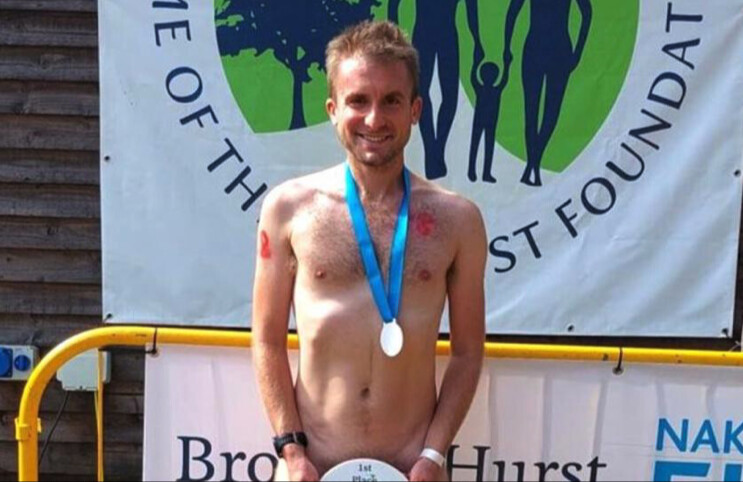
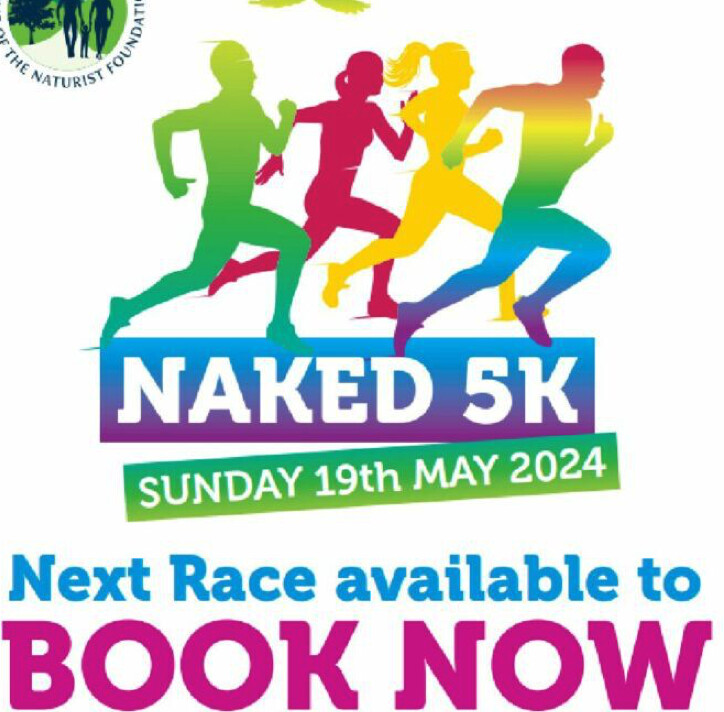
The organization’s milestone event appears to have attracted not just a large crowd, but a fairly speedy one. Leading the pack of 130 runners was Mark Jessett of Llandudno Junction, Wales, who won the race in 18:50. (As the race format would leave runners few options for pinning on a race bib, runners are given lightweight anklets to make chip timing possible.)
In a post on X, formerly known as Twitter, the Nature Foundation featured a shot of Jessett wearing nothing but his winner’s medal. “Congratulations to the winner of yesterday’s #BH5K trail run, with a time of 18m50s,” reads the post. “An impressive feat given the heat, with a high of 30ºC! We had extra water stations and misting sprays, but not surprisingly some DNFs too.”
No matter how liberally Jessett might have applied sunscreen for the race, the blistering rays clearly left an impression on the Welshman. “Scorching conditions!” he wrote in his Strava recap of the Naked 5K, in which he described the race as “basically a trail course through trees with a short section of road.”
In a reply to the Naturist Foundation’s post on X, he wrote: “Thanks everyone and well done to everyone else also! Fantastic day out in lovely (but scorching) conditions surrounded by so many friendly people!”
Others who responded to the post offered Jessett kudos for a strong run given the heat and, at times, challenging terrain, while some were curious about what motivates runners to sign up for the Naked 5K, and what kind of crowds the races attract.
One commenter replied that “some are running club members a bit bored of the regular parkrun and fancy a change. Many are regulars that we only see twice a year. Some are doing it for bucket list or charity reasons. Some do get the naturist bug as a result.”
The Naturist Foundation hosts its next Naked 5K in May.
by Running Magazine
Login to leave a comment
Training Advice from the Greatest Women Masters Marathoners Alive
While Jeannie Rice and Jenny Hitchings are busy setting masters world records, their differences in training are even more instructive than their similarities
The spring marathon season has come and gone, and it didn’t disappoint, producing sensational races and world headlines. This was particularly true in Boston and London. However, you might have heard little or nothing about two of the best marathon performances in those events.
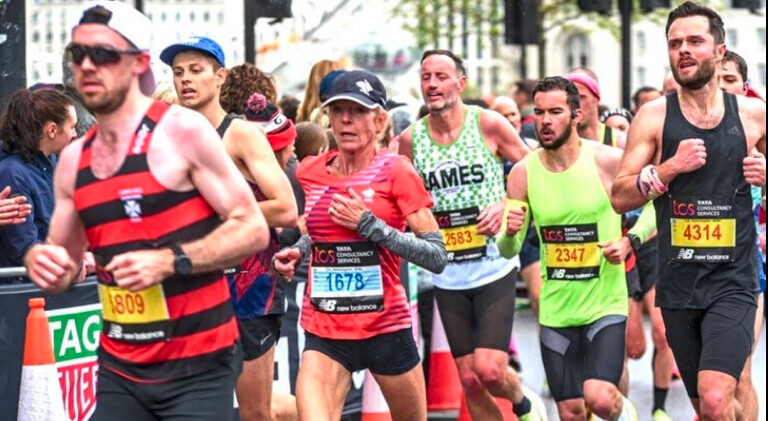
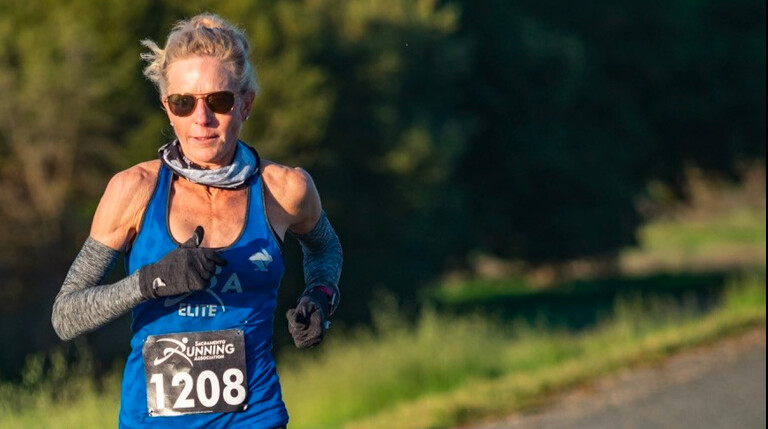
The big media coverage went to seemingly-unbeatable Eliud Kipchoge, who finished sixth at Boston, where Evans Chebet gained his third straight World Marathon Major victory in 12 months. At the London Marathon, Kelvin Kiptum ran 59:45 for the second half, en route to a course record 2:01:27, and Sifan Hassan demonstrated that she can win in the marathon as she has at multiple shorter distances.
But 75-year-old Jeannie Rice and 59-year-old Jenny Hitchings outran them all, on an Age-Gender performance basis, both setting new world records for their age groups. Rice’s 3:33:15 in Boston won’t count, since the Boston course is considered ineligible due to its significant downhill slope and point to point layout, which allows for a tailwind boost. Still, she beat the fastest 75-79 age-group male runner by more than 20 minutes, which has likely never happened before in a global marathon. And five weeks before Boston, at age 74, she ran 3:31:22 in the Tokyo Marathon.
A week after Boston, Hitchings ran 2:45:27 in London—a marathon world record for women in the 55-59 age division. Remarkably, she’s at the high end of that age range, as she’ll turn 60 in early July. Not only that, but it was her personal best marathon in 40 years of running.
Rice was born in South Korea and immigrated to the U.S. in her mid-30s. A retired real estate agent, she now divides her time between south Florida and Cleveland. Hitchings is a longtime resident of Sacramento, California, where she works as a middle-school cross-country coach and a private running coach.
Rice and Hitchings live on opposite coasts, but they have much in common. They’ve both been running for decades, both are extremely consistent in their training, and both log multiple 20-milers in their marathon buildups. Surprisingly, neither makes a particular effort to include hill training, a staple among other top marathon runners. Both are small and lean. Rice stands 5-foot-2 and weighs 96 pounds; Hitchings is 5-foot-4 and 100 pounds.
But Rice and Hitchings also present some stark contrasts. These differences carry an important message: There are many paths to marathon success, and the best senior runners understand this. Through their experience and wisdom, they’ve learned to focus on the positives and jettison the junk.
Here’s a look at some of the major contrasts between master marathon greats Jeannie Rice and Jenny Hitchings.
Both Rice and Hitchings had previously won age-group titles at Boston. Rice chose to return there in April for emotional reasons, as Boston marked her 40th anniversary of marathon running and her 130th marathon. Hitchings selected London for technical reasons. In 2021, she ran 2:45:32 at Boston. It would have been a record except for the point-to-point course prohibition. So this spring she opted for London’s record-eligible course.
Rice: “Boston has always been a special marathon for me,” said Rice. “My preparation wasn’t the best, as I ran the Tokyo Marathon in early March, and then did some traveling. But I wanted to have my Boston celebration, and I had quite a few running friends there with me.”
Hitchings: “London was on my marathon ‘bucket list’ anyway, and it gave me a great opportunity to set an age-group world record,” said Hitchings. “Since my 2:45 at Boston didn’t count, I figured I should take a crack at London while I was still in the age group.” [She will turn 60 in early July.]
Rice has always been self-coached. Hitchings, a running coach herself, has had a longterm coach-athlete relationship with Chicago-based Jenny Spangler. Spangler won the U.S. Olympic Trials Marathon in 1996 and ran a 2:32:39 marathon in 2003, after turning 40.
Rice: “I’ve been approached by people who wanted to coach me, but they seemed expensive and had other demands I didn’t like. I listen to what my friends do and what others are doing in training. I try to run 50 miles most weeks, and a bit more before my marathons. But I don’t actually follow a schedule. Mostly I just train the way I feel. I’m still running strong and beating records, so I must be doing something right.
“I know it’s possible that a coach could help me the way Gene Dykes’s coach helped him, but it’s also possible that things could go wrong. I like to decide my training according to how I feel each day.”
Hitchings: “I coach other runners, and I could certainly coach myself, but you know what they say about doctors who treat themselves: They have a fool for a patient. I think that can also apply to athletes who coach themselves. It’s just smarter to have someone looking over your shoulder, and adding some perspective.
“I’m one of those who’s often guilty of running too fast on my easy days, or getting excited and going too hard when I’m training with friends. Jenny [her coach] holds me accountable for those kinds of things. She has a great personal performance record that I respect a lot, and has been coaching for many years.
“It’s also important to me that she’s a female coach of my own age. She understands what I’m going through and dealing with in terms of female physiology.”
Both runners say they enjoy a relaxed morning cup of coffee before launching into their days. But Rice is up earlier, and often out the door quicker. Hitchings needs more time to be ready for a solid run.
Rice: “I like to get my run done early, so I have the whole day in front of me when I get back home at 7:30 A.M. or so. I’m usually running by 6 A.M. In Florida, where I spend my winters, that can be important for the cooler weather.
“But on days when I’m going 20 to 23 miles, I’ll get up at 3:30 A.M. and begin running at 4:30 A.M. I’ll go two hours on my own, and then join a local training group for their morning loop, which gives me another hour or so.”
Hitchings: “I coach a number of people who can roll right out of bed and start running. I’m not one of those. My favorite time to run is about 8 A.M. or 8:30 A.M. in the morning. I like my coffee first, and the morning newspaper, and I always make sure to get a light breakfast in my stomach. Since my favorite place to run is the American River Parkway, that gives me another 15 minutes of drive time before I get going.
“There have been times when I had to be a noontime runner, and that was OK, too. But 4 P.M. or 5 P.M.? That’s not going to happen. By that time of day, I’m too tired or depleted.”
This one is easy for Rice, who has never been injured except for a fall (and banged-up knee) in 2021 that cost her several weeks of running. Hitchings also considers herself relatively injury-free, but she has encountered an assortment of typical runner injuries through the years: Achilles tendinitis, piriformis pain, and surgery for Haglund’s deformity (a bony growth at the back of the heel resulting from mostly genetic causes).
Rice: “I go to the gym three times a week for a light strength workout, some pushups, and some stretching. But it’s not a serious session at all. I also golf for fun; I really enjoy golfing.”
Hitchings: “I try to do light weight work as much as I can, and I ride my bike 20-30 miles a week outdoors, and do Peloton indoors. Recently, I added Pilates once a week to improve my strength and mobility.
“Also, Jenny and I have agreed to take one hard running day out of my weekly schedule. I used to do speed work of some kind on Tuesday and Thursday, and a long weekend run. Now I’m down to speed on Wednesday, and a weekend long run that often has some tempo-pace segments.”
While both are clearly fit, Rice and Hitchings say they enjoy a wide variety of foods, and have no particular restrictions in their diets. Both enjoy wine drinking. Hitchings admits to a sweet tooth, too, but desserts are not a problem for Rice.
Rice: “Breakfast is usually oatmeal with fruit and nuts. At lunch and dinner, I enjoy a green salad with some sort of seafood or fish on top. I’ve never liked sweets and don’t crave them, but I love cheese and nuts. That’s my big downfall—cheese and nuts. The only supplements I take are calcium with vitamin D, B-12, and magnesium.”
Hitchings: “I eat ‘clean,’ a well-balanced diet with an emphasis on carbs. I simply don’t feel good if I eat heavy, creamy, or fried foods. I get most of my vitamins and minerals from real foods, though recently I’ve added Athletic Greens to my routine.
“When I’m in heavy marathon training, I find it hard to maintain my weight, so I’ll have some protein shakes and maybe one chocolate bar, muffin, or pastry per day. I’ve got a drawer full of vitamins, calcium, collagen, and iron supplements, but I never seem to stick with any for long. It’s just too much.”
While realistic about their futures, neither Rice nor Hitchings sound the least bit intimidated by the unwritten future. Despite aging, both are driven to perform. They hope to keep running hard and fast, and chasing age-group records. Both plan to run the Chicago Marathon on October 8, as it will be the site of this year’s Abbott World Marathon Majors Wanda Age Group Championships.
Rice: “Getting faster at 75 is almost impossible, but this year I’m going to run a few road miles to work on my speed. I’ve won my age group in every World Marathon Major but London, so I want to get back to London in the next several years. I want to run the Sydney Marathon, the Ho Chi Minh City Marathon, and, of course, I must run the Seoul Marathon in the country where I was born.”
Hitchings: “I’m running faster at 60 than I’ve ever run in my life. My time in London was literally my lifetime best, and I’ve been running a long time. Sometimes I get asked, ‘When are you going to stop running?’ My answer is always: ‘Why would I stop?’ I’m still getting faster, and I’m still enjoying it.”
Rice, though 15 years older, feels the same. It’s fun winning major marathons, of course, especially when she beats most men her age. In local and regional races, she challenges herself to finish as high as possible in the masters division against females three decades younger (and sometimes wins outright).
“I love competition,” she says. “I’m motivated to train hard, and I’m excited about setting more records as long as I can. Maybe into my 80s.”
Running is about finish times, sure, but it’s even more about attitude. Find the goal that’s right for you, and go after it. This is the approach both Rice and Hitchings have followed successfully, and neither plans to change course now, no matter how many candles adorn their next birthday cake.
Both are on a shared mission, and they’d like others to join them. As Hitchings says: “I think if we keep a positive attitude and motivation, we can go out there and do much more than people think. It’s important to show others that we can defy the way aging has been defined for us for so long.”
by Outside Online
Login to leave a comment
Moh Ahmed, Cam Levins to face off at Ottawa 10K
Two of the fastest distance runners in Canadian history will go head-to-head.
Tamarack Ottawa Race Weekend will once again host the Canadian 10K Championships in 2023, and as always, this is an event that no runner or fan will want to miss. Two of the best distance runners in Canadian history, Cam Levins and Moh Ahmed, will headline the men’s race alongside former national champions. And four of the top five women from last year’s championships are returning, making the Ottawa 10K one of the most anticipated races on the 2023 event calendar.
It’s an equally fun and exciting race for non-elites, as the 10K follows a beautiful course through Ottawa, one of Canada’s most beautiful cities. The 2023 Tamarack Ottawa Race Weekend is set for May 27 and 28.
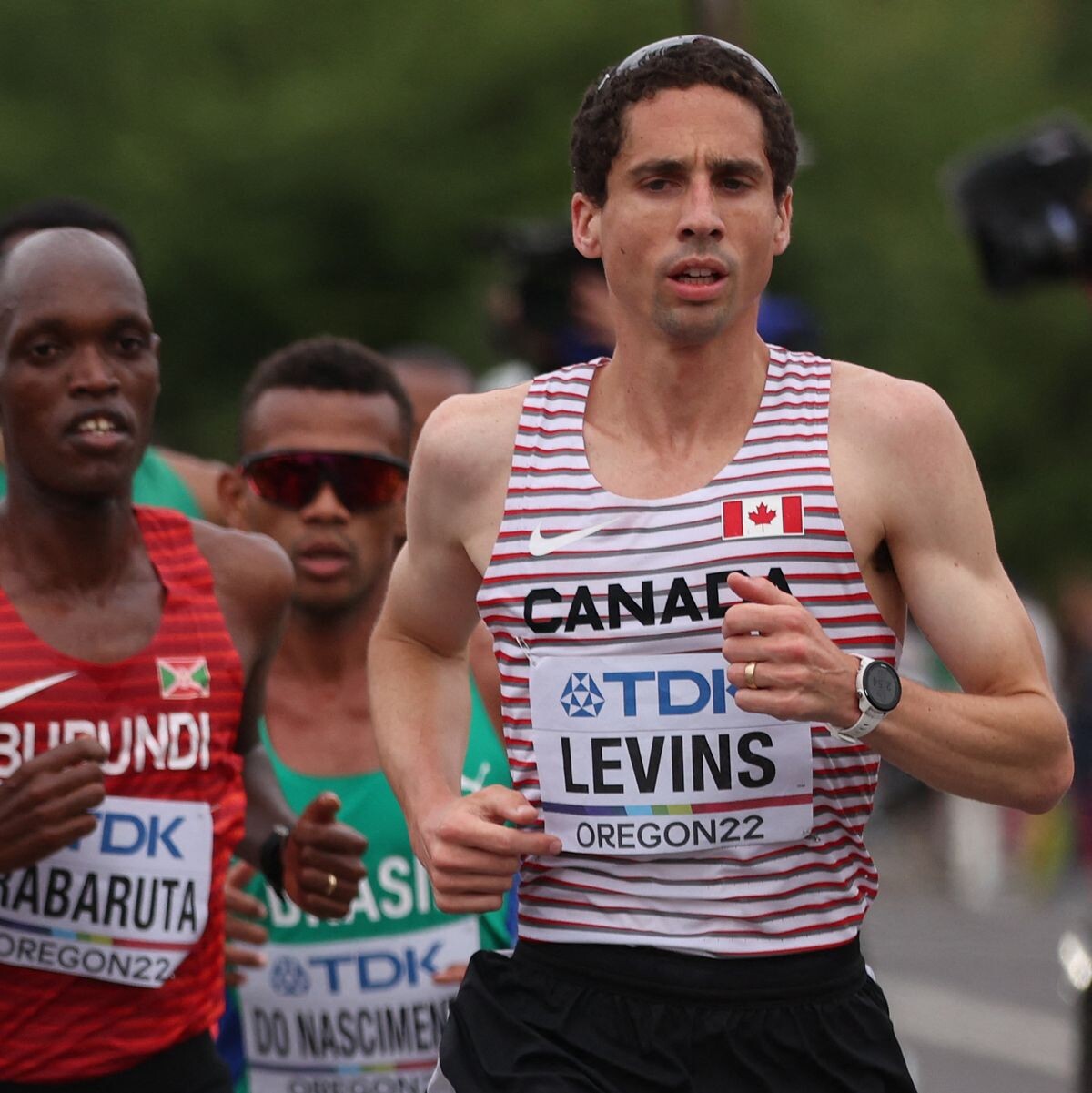
The elite fields
Canadian Olympic marathoner Dylan Wykes has been the elite athlete co-ordinator at Run Ottawa for four years, but due to the pandemic, the 2023 race weekend will mark only the second in-person edition of the event he has worked on since taking over the role in early 2020. Wykes says this year’s race will be a special one, as “the best 10K runners in the country will be hitting the streets of Ottawa.”

Headlining the event are Levins and Ahmed, neither of whom have ever competed at Ottawa Race Weekend. Ahmed, a 2020 Olympic medallist in the 5,000m, holds the Canadian record for 10,000m (26:34.14 on the track), but has not yet raced on the roads in his professional career. Ahmed is amped about the opportunity to kick off his 2023 season at the Ottawa 10K and make his road-racing debut.
Levins told race organizers he’s eager to check the Ottawa 10K off his bucket list. “The opportunity to run in such a competitive field in Canada is really great,” Levins said. “Ottawa has always been an event at which I’ve wanted to race.” Joining Ahmed and Levins in the men’s field are 2:10 marathoner Tristan Woodfine, U Sports cross-country champion Max Turek, Canadian cross-country champion Connor Black and others.
The women’s field is equally stacked, with four of the top five women from the 2022 Ottawa 10K returning to this year’s championship race. Natasha Wodak, who won last year’s race, will not be back to defend her title, but second-place Leslie Sexton, third-place Sasha Gollish, fourth-place Emily Setlack and fifth-place Cleo Boyd are all in the lineup and ready to fight for the win. “It’s a really great group of women,” Wykes says, pointing out that the field spans more than 15 years in age. “All these women have great stories and are an inspiration.
“This is a great opportunity for fans of the sport to see [these athletes] in action,” Wykes continues, pointing to Ahmed and Levins, who headline the men’s 10K field. “Levins is performing incredibly well right now, as well as any Canadian ever has on the roads at the world level, so it’s an exciting opportunity for fans of the sport to get to see him compete on home soil.”
Wykes adds that the 10K isn’t the only spectacle for fans who will be in Ottawa on May 27 and 28. “The entire weekend is a great opportunity to see some of the world’s best runners,” he says. “Our marathon is a World Athletics Elite Label event and will have athletes from three of the best marathoning nations in the world: Ethiopia, Kenya and Japan.”
The race
For runners who aren’t looking to go sub-30 at the Ottawa 10K, this is still a great race. One detail Wykes points out that makes it unique is the race’s start time. “I think it is special because it is an evening race,” he says. “Most road races are held in the morning, so there is definitely a bit of a different feel to things when the race is in the evening.”
Wykes says fans are “a bit rowdier” than they might be at the crack of dawn, and he says there’s “a bit more of a party atmosphere.” This all adds up to a great night of adrenaline, fast racing and post-race fun.
The race starts on Elgin Street, not far from Parliament Hill, and takes runners down to the Rideau Canal. “Elgin Street is lined with patios and restaurants,” Wykes says, so there are plenty of people to cheer runners on as they kick off the race. Once at the Rideau Canal, runners follow the water all the way to Dows Lake, then cross a bridge and head for the finish on the other side.
“The final mile of the race is packed with fans along the Pretoria Bridge and Colonel By Drive,” Wykes says. “I’m getting excited now, just thinking about it.”
Login to leave a comment
Ottawa 10K
Ottawa's course is fast, scenic and few elevation changes. Considered to be an excellent course for first timers and should provide an environment conducive to setting a PR. The Ottawa 10K is the only IAAF Gold Label 10K event in Canada and one of only four IAAF Gold Label 10Ks in the world. The Ottawa 10K attracts one of the...
more...Are You Ready To Run A Half Marathon?
So, one minute you've just taken up running and the next, you find yourself entering a half marathon! Whether it's for charity or simply a personal goal, a half marathon is on the bucket list of many runners.
One of the biggest mistakes that many people make when they step up to the half is that they fail to respect the distance and as a result, don't prepare properly. Of course we'd all like more time to train and to get fitter before any race and you certainly don't have to reach the training volume of an elite athlete. However, if you do want a positive experience, you will need to ensure that you've done your groundwork. So, how do you know if you're ready to run 13.1 miles (21.1km)?
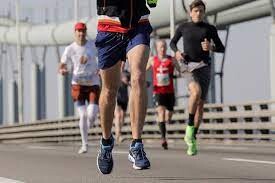
You can run for 90 minutes or more without stopping
You probably don't need reminding that 13.1 miles (21.1 km) is a very long way! The volume of your training will of course be dictated by your experience and your aspirations. You don't necessarily have to have covered the half marathon distance beforehand in training but you're more likely to feel more physically and mentally comfortable if you're able to run for a substantial amount of time continuously.

If there is one type of training session that you're going to do when training for a half marathon make it a weekly long run.
If there is one type of training session that you're going to do when training for a half marathon make it a weekly long run. The long run should be the bedrock of any distance runner’s training programme and is definitely bread and butter for half marathoners. Running long causes a number of physiological adaptations to your aerobic metabolism, including improving your body's ability to store glycogen (carbohydrate) and to burn fat for fuel.
If you're new to running then it's best to start with blocks of running, interspersed with blocks of walking. As the weeks go by you should aim to gradually increase the length of the running segments and reduce the length of the walking segments, with the aim of being able to build up to completing a continuous run. Once you can run for 90 minutes continuously you should be half marathon ready.
You've trained consistently
You don't have to rack up the miles of an elite runner or subject yourself to a brutal training regime before entering your first half marathon, but it's certainly a good idea to have some consistent training under your belt. The amount of preparation you'll need obviously depends on your fitness levels, your goals and your running history.
If you're new to running, you'll generally need at least 16 weeks of training, ideally 2-3 times a week, before hitting your first half.
However, if you're new to running, you'll generally need at least 16 weeks of training, ideally 2-3 times a week, before hitting your first half. It's important to remember that your training doesn't have to be record-breaking it just has to be consistent with no lengthy breaks due to illness or injury. If you can achieve that, it will stand you in good stead, leaving you physically and psychologically ready to tackle a half marathon.
You've done some training on the roads
In order to condition your legs to the impact of the road, it's a good idea to hit the roads for some of your training so that you don't experience any unnecessary muscle cramping during the later stages of the race. However too much road running too soon can pose an additional injury risk so be sure to build this into your training gradually and ensure that your shoes have the appropriate level of cushioning.
You have some race experience
A half marathon is kind of a big deal so it's a good idea to try and gain some race experience over a shorter distance, such as a 5k or a 10k beforehand. Not only will this give you an indication of your current fitness levels and your potential over the half marathon distance, thus providing guidance when deciding upon a time goal, but it will also allow you to practice key aspects of your pre-race routine. Good luck and happy half marathoning!
by Louise Damen
Login to leave a comment
Five reasons to try a marathon
For many runners, the marathon is high on their race bucket list. There are a lot of runners out there, however, who couldn’t care less about the marathon. If you’re one of those people, it’s totally fine to stick to half-marathons and 10Ks, but it’s worth trying the full marathon distance at least once.
New mental challenges
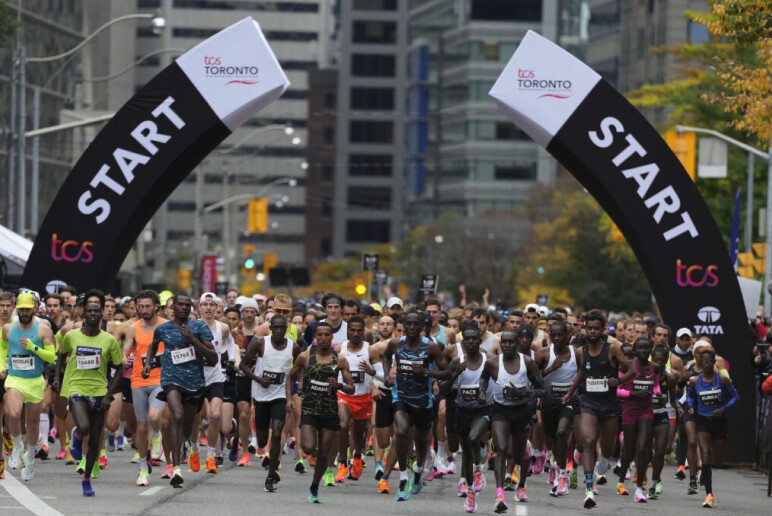

No matter the race, you’re going to experience a mental battle at some point. Unlike a 5K, which is over relatively quickly, in the marathon, you can hit the wall with more than an hour left of running, which means you’ll have a lot of time on the race course trying to convince yourself to keep pushing. This is when the race shifts from a physical battle to a mental one, and while it’ll be tough, it will also be incredibly rewarding to grind through those dark moments.
Confidence boost
Even if you don’t do another marathon, knowing you conquered such a massive race will definitely boost your confidence. Shorter races will still be hard, but when things get tough in those runs, you’ll be able to draw on your experience in the marathon and remind yourself that you’ve gone much farther and pushed through more exhaustion before.
Trying new things
It’s easy to stay inside your comfort zone, but it’s incredibly valuable to venture outside it from time to time. Doing a marathon is scary, there’s no doubt about it, but you’ll grow as a runner if you take that leap and give it a try. Also, you might love it. If you never try a marathon, though, you’ll never find out if it’s the distance for you.
You can do it
If you’ve run other races, you can complete a marathon. It’s definitely a commitment–you’ll need to train properly and prepare well for the race (plan on devoting about four months to your “build”), but, as any marathoner will tell you, it’s be worth it for the fitness and endurance you’ll be creating, and for the sense of accomplishment that comes with completing a marathon.
The marathon is ‘the’ race
Rightly or wrongly, the marathon is considered the ultimate running event. Everyone knows about this race, and, when the topic of running comes up, runners and non-runners alike are always going to ask you if you’ve done a marathon. We don’t agree that the marathon is the most important event out there, but you might as well do at least one so you can answer yes when people inevitably ask you that question.
by Running Magazine
Login to leave a comment
every runner should try the marathon at least once in their career
For many runners, the marathon is high on their race bucket list. There are a lot of runners out there, however, who couldn’t care less about the marathon. If you’re one of those people, it’s totally fine to stick to half-marathons and 10Ks, but it’s worth trying the full marathon distance at least once. We know you’re probably tired of hearing people tell you that you should run a marathon, and we’re not saying you have to become a marathon runner for life, but here are a few reasons to consider trying it out.
New mental challenges
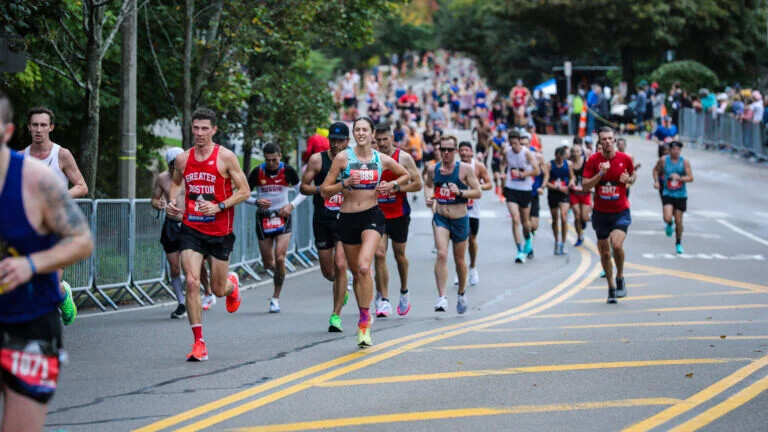
No matter the race, you’re going to experience a mental battle at some point. Unlike a 5K, which is over relatively quickly, in the marathon, you can hit the wall with over an hour left of running, which means you’ll have a lot of time on the race course trying to convince yourself to keep pushing. This is when the race shifts from a physical battle to a mental one, and while it’ll be tough, it will also be incredibly rewarding to grind through those dark moments.
Confidence boost
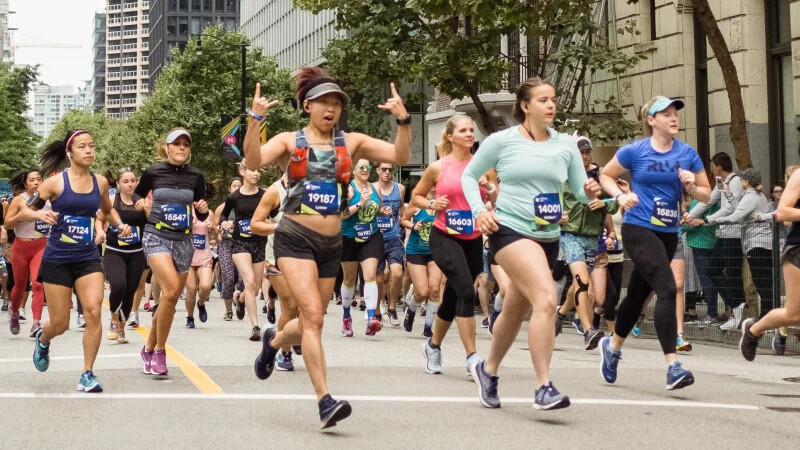
Even if you don’t do another marathon, knowing you conquered such a massive race will definitely boost your confidence moving forward. Shorter races will still be hard, but when things get tough in those runs, you’ll be able to draw on your experience in the marathon and remind yourself that you’ve gone much farther and pushed through more exhaustion before.
Trying new things
It’s easy to stay inside your comfort zone, but it’s incredibly valuable to venture outside it from time to time. Doing a marathon is scary, there’s no doubt about it, but you’ll grow as a runner if you take that leap and give it a try. Also, you might love it. If you never try a marathon, though, you’ll never find out if it’s the race for you.
You can do it
If you’ve run other races, you can complete a marathon. You’ll need to train properly and prepare well for the race, but it’ll be worth it. You’re capable of running a marathon, so why not do it?
The marathon is ‘the’ race
Whether you like it or not, the marathon is considered the ultimate running event. Everyone knows about this race, and runners and non-runners alike are always going to ask you if you’ve done a marathon when the topic of running comes up. We don’t agree that the marathon is the most important event out there, but you might as well do at least one so you can answer yes when people inevitably ask you that question.
by Ben Snider-McGrath
Login to leave a comment
Sifan Hassan is set to make her marathon debut at London
Sifan Hassan’s 2023 London Marathon challenge: “I’m going to finish the distance or the distance is going to finish me” the Netherlands’ Sifan Hassan said in February when announcing she would race in 23 April’s London Marathon.
While the words were delivered with a customary laugh, there’s a real element of the unknown about Hassan’s jump from the 10,000m on track to a distance of over four times that where many runners' dreams have been scuppered.
Heck, even the marathon race itself is based on the legend of an ancient Greek messenger who drops stone cold dead after running it.
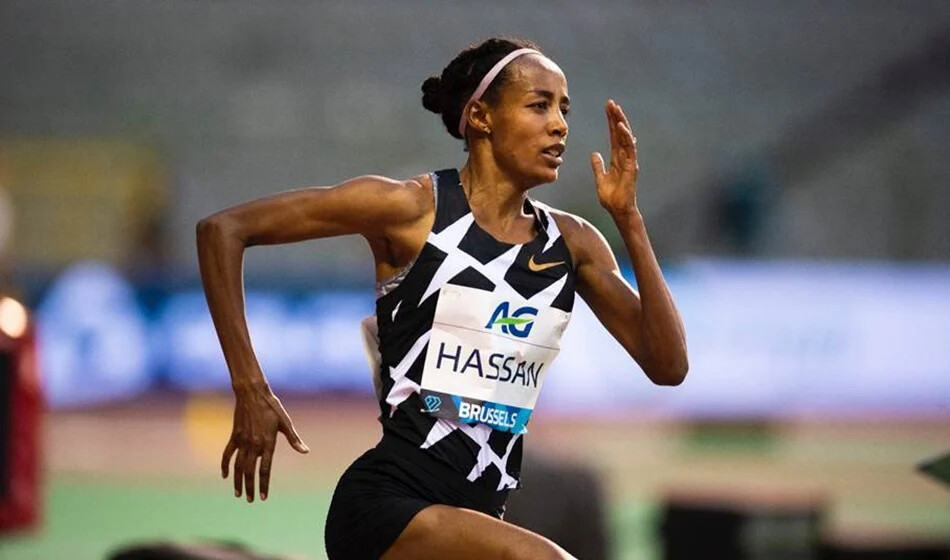
But if there’s one thing Hassan is known for above anything else, it’s her love of a challenge.
“Many people say I’m crazy,” she said of her previous big challenge of racing in three distances at the Tokyo 2020 Olympics that took place in 2021. “Believe me, I think I’m crazy too.”
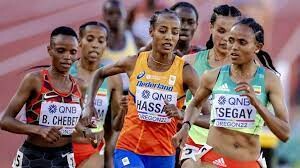
Sifan Hassan: From refugee to the elite athletics star with energy to burn
In many ways, Hassan’s decision to run the London Marathon is reminiscent of her first big distance race in Eindhoven in 2011.
Just three years after arriving in the Netherlands as a refugee from Ethiopia, she told her coach, Ton van Hoesel, that she wanted to run a half marathon - even though she hadn’t trained for the race.
“I told her OK but do not start too fanatically because you might get injured. Well, she won the race!” recalled Van Hoesel in an interview with thenationalnews.com.
With the London Marathon, Hassan will once again be stepping into the unknown. However, this is an athlete who has faced and overcome fierce challenges both in running and in life.
While Hassan doesn’t talk about the reasons she left Ethiopia as a teenager, her experience after arriving in the Netherlands, which included being housed in a centre for minors for eight months in Zuidlaren where she “cried every day”, was one of the hardest challenges of her life.
Soon after, her introduction to the world of athletics gave her a new focus. After borrowing used spikes and kits from her local club, she began a journey that would take her to even more challenges - one of which is among the most breathtaking in Olympic history.
The London Marathon 2023: Hassan steps into the unknown
Hassan’s attitude to life so often mirrors her success in running - and she’ll need to draw upon her own mantras more than ever when she takes on her first-ever marathon in London.
“I tell people, when life is hard you will see yourself like you never imagined,” she said after her history-making showing in Tokyo. “Never give up.”
There is a playful curiosity about Hassan, who seems to peek over at new challenges and ask herself the question, “why not?” when so many others would get stuck on the “why”.
“I just want to see what I can do in the marathon,” Hassan said when announcing she would race in London, as if ticking off another item on a whimsical bucket list.
While the London Marathon doesn’t mark a permanent transition to the longer distance for the 29-year-old, who has said she plans to return to the track in time for Paris 2024, it does open up yet more possibilities for someone who is once again pushing the boundaries of track & field.
This is an athlete whose satisfaction comes from achieving the extraordinary. Even when some, including herself, think that borders on the preposterous.
As she herself said in Tokyo: “The last two weeks, sometimes I woke up from a nightmare and I asked: ‘Why do I have to make myself so stressed? But something inside me said to keep on going. I think I was kind of crazy, but now I am really happy."
by Sean McAlister
Login to leave a comment
TCS London Marathon
The London Marathon was first run on March 29, 1981 and has been held in the spring of every year since 2010. It is sponsored by Virgin Money and was founded by the former Olympic champion and journalist Chris Brasher and Welsh athlete John Disley. It is organized by Hugh Brasher (son of Chris) as Race Director and Nick Bitel...
more...Eliud Kipchoge: Three down, three to go
“I want to not only compete in all six but to do so and win. These are two different targets. What’s more, I have added another challenge of getting course records for the other half of the races,” Kipchoge said in a recent interview with NN Running Team, setting out a new goal for an athlete who has achieved almost every target put in front of him.
Already a two-time Olympic champion, reigning world record holder and the only man to run a marathon in under two hours, it would be easy to forgive Kipchoge for wanting to rest on his considerable laurels after a career in which he has won 15 of the 17 marathons he has run.
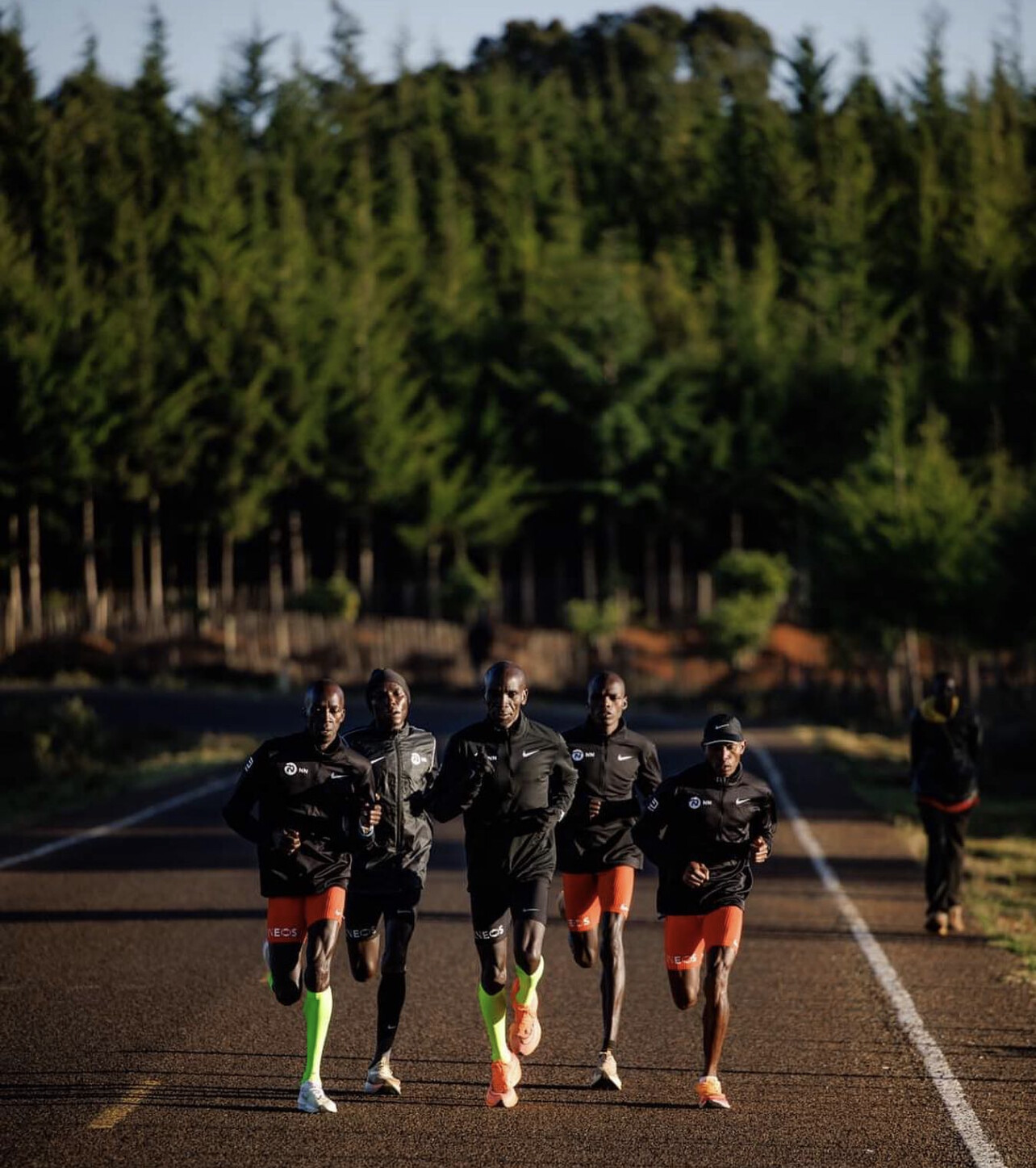
But the man who is a living personification of his catchphrase “No human is limited” is on a mission to change the face of history by winning the six most prestigious marathon races on the planet in record time.
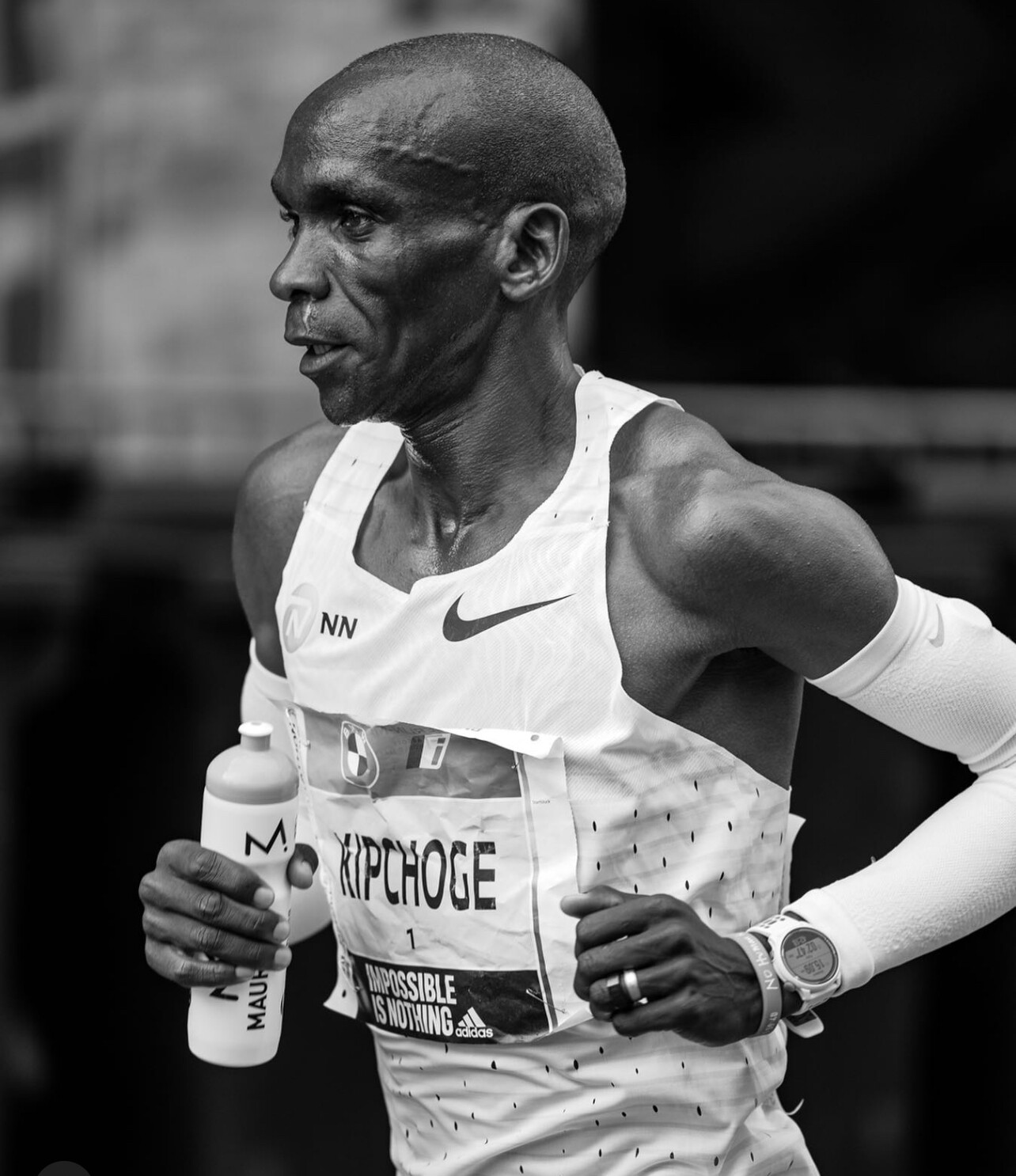
He currently owns the course record in three marathons, London (2:02:37) set in 2019, Tokyo (2:02:40) set in 2022 and Berlin, the current world record of 2:01:09 also set in 2022.
That leaves three left on his bucket list, starting with the Boston Marathon, which takes place on April 17 2023.
Login to leave a comment
Boston Marathon
Among the nation’s oldest athletic clubs, the B.A.A. was established in 1887, and, in 1896, more than half of the U.S. Olympic Team at the first modern games was composed of B.A.A. club members. The Olympic Games provided the inspiration for the first Boston Marathon, which culminated the B.A.A. Games on April 19, 1897. John J. McDermott emerged from a...
more...Five unusual races to add to your running bucket list
If you’ve run a lot of road races, you may feel that they’re all pretty similar. Whether you’re racing in Tokyo or Boston, South Africa or the U.K., you’ll probably be running a classic distance on a typical course. There’s nothing wrong with sticking to these kinds of runs, but if you’re looking for a new, think-outside-the-box race, here are a few you should check out.
1.- Défi Escaliers

The Défi Escaliers is a super cool (and extremely difficult) race in Quebec City that takes runners up and down the historic city’s many staircases and features three distance options—9K, 13K and 19K. If you enter the 9K race, you’ll face 1,250 steps between the start and finish. Despite being only 4 km longer, you run double that stair tally in the 13K, hitting 2,500 steps. Finally, in the 19K race, you’ll run up or down all 40 staircases connecting Quebec City’s Lower Town and Upper Town for a grand total of 2,828 steps. This is not a race for the faint of heart, but it is sure to be a fun time, and you couldn’t ask to run it in a cooler city.
2.- Red Bull 400
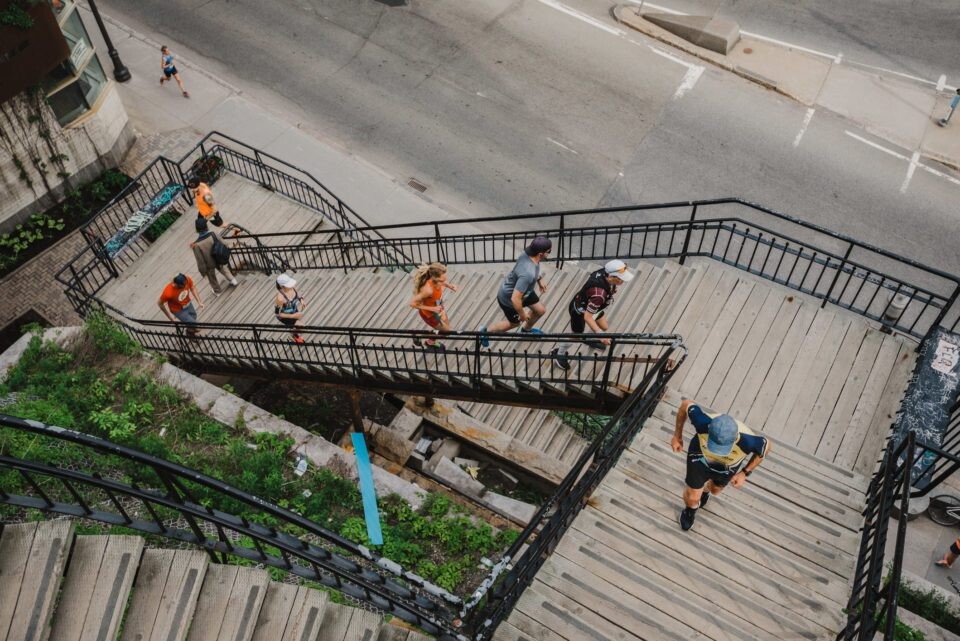
The Red Bull 400 is a race series with events held around the world. These races are 400m in length, which would be pretty easy if they didn’t go up Olympic ski jumps. Runners who are brave enough to take on this challenge will face a whopping 140 metres of elevation gain in the quarter-mile race.
Your legs and lungs will be screaming at you if you give this run a shot, but once you make it to the finish, you’ll be glad you went for it. OK, it might actually take a few hours before you stop hating yourself for putting your body through such a brutal race, but we promise that eventually, you’ll be proud of your accomplishment. (Until the pandemic, there was a Red Bull 400 event in Whistler, B.C., but it has yet to return since the pandemic cancellation. However, there are other Red Bull 400 events held around the world, e.g., Japan, Bosnia and Austria), so if you ever get the chance to run one, you should consider it.
3.- CN Tower Climb
We know, we know–there are way too many races on this list with a focus on running up, but runners love challenging themselves, and running uphill or up stairs will never not be tough. The CN Tower Climb for Nature is yet another brutal challenge that takes place in Toronto every year. Participants in this run will climb 1,776 steps, but unlike the Défi Escaliers, you won’t have flat sections of road between staircases for some mid-run recovery. Not that you need another reason to run the CN Tower Climb, but it’s also a fundraiser for the World Wildlife Fund Canada, and the proceeds will go toward restoring and protecting Canada’s ecosystems. This year’s race goes on April 15 and 16. (Note: there is also a CN Tower Climb sponsored by United Way; this year’s race is Oct. 21 and 22.)
4.- Great Wall Marathon
If you’re looking for an international destination race, the Great Wall Marathon in China is an amazing option. Once again, it involves climbing a lot of steps (more than 5,000), but the views, the atmosphere and the fact that you’re running on the Great Wall of China make it well worth the effort. The race has been around since 1999, and it is extremely popular, so if you’re interested, you should register well in advance.
5.- Wings for Life World Run
Finally, a race on this list that doesn’t necessarily involve stairs or steep inclines. The Wings for Life World Run is another Red Bull event, and anyone can do it, no matter where in the world you live. There are in-person Wings for Life runs, but the entire event is app-based, so there’s no need to travel to an actual course. What makes it unique is the fact that you run until you either want to stop or you get caught by the “Catcher Car,” a virtual car that starts behind all the runners and slowly catches up to every participating runner. This is another fundraising event, and Red Bull donates all proceeds to spinal cord research.
Login to leave a comment
Great Wall Marathon
Since its inception in 1999, the Great Wall Marathon has become revered as one of the world's most challenging marathons. Run the most challenging marathon of your life along one of mankind's greatest monuments. Since the inaugural Great Wall Marathon in 1999, the field has grown steadily to a sellout event with...
more...Five tips to help new runners find success
When you first start running, it’s easy to fall into the trap of thinking that the sport is simple. You just have to run, right? Well, just because the sport itself isn’t incredibly complex doesn’t mean that there isn’t a lot to learn. We can’t get into teaching you everything you need to know as a new runner right here and now, but we do have a few tips that will help you find success in running if you follow them.
1.- Do your warmups and cooldowns
Please don’t skip these. We know you want to, but don’t. If you always force yourself to warm up and cool down properly you will greatly lower your chances of getting hurt. We know that as a new runner you may not be running all that far each workout, and because of that, adding 10 or 15 minutes to either end of the session will seem like a lot, but it’s so important that you do it. Plus, if you get into the habit now and warm up and cool down every workout, it won’t feel like as much of a chore as you progress in the sport since it’s what you’ve always done.
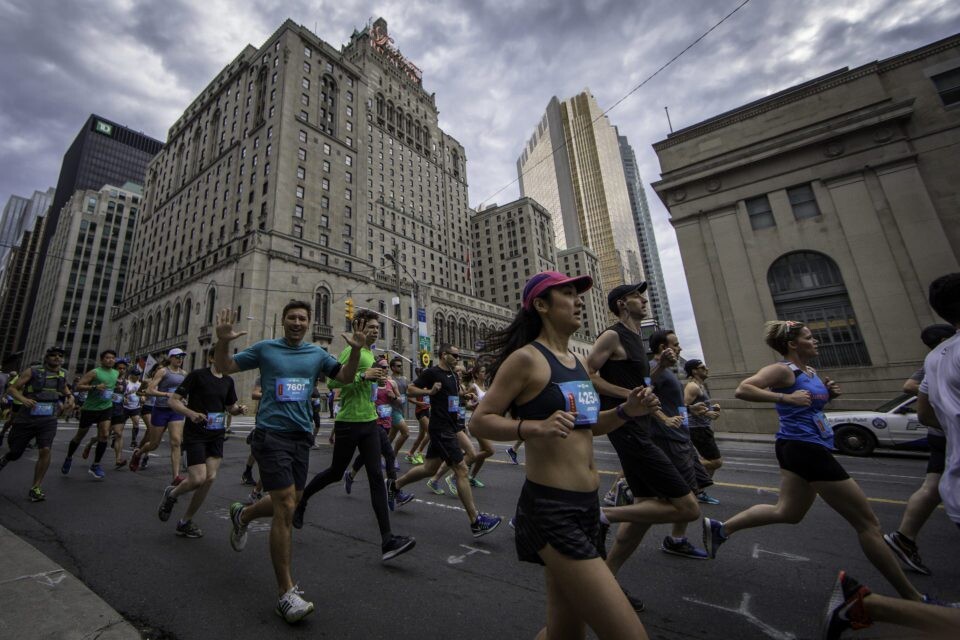
2.- No pressure
Don’t put too much pressure on yourself. We know that you want to get faster and perform well in workouts and at races, but try to remind yourself that your times and results aren’t that important in the grand scheme of things. By all means, set goals for yourself, but don’t stress if you fail to reach them. The great thing about running is that there will always be another workout and another race for you to enter, so it’s no big deal if you fall short every now and then.

3.- Find your gang
Run with other people. Whether you get a single running buddy or join a running club, finding other runners to hit the road, trails and track with you will make things way more enjoyable. However, you shouldn’t feel pressured to run with someone else all the time. Save some days for solo runs (if that’s what you want) and dedicate a few to your running buddy or group.
4.- Enter a race
Most runners are probably keen to race, but there are some people out there who only want to run for fitness. That’s great, but trust us, it’s way more fun to race. Even if you think racing isn’t for you, just give it a try. Enter a local 5K and get a feel for it. If you really don’t enjoy the experience, you can check it off your bucket list and leave racing in the past, but we’re willing to bet that you will fall in love with the atmosphere and the competition.
5.- Listen to your body
It’s easy to get caught up in training and convince yourself that all of your hard work will go to waste if you miss too many workouts. That’s not the case, and if you feel like your body needs a break, it’s best to give it one. If you ignore the signals your body sends to you and push onward, you’re apt to get injured (at which point your progress in training really will disappear). Don’t be afraid to take some days off.
by Ben Snider-McGrath
Login to leave a comment
Ethiopian Derara Hurisa to defend crown at 2023 Tata Mumbai Marathon
Ethiopia’s Derara Hurisa returns to defend his crown at Asia’s most prestigious Tata Mumbai Marathon on January 15, 2023, in a competitive Elite men’s field, with a dozen runners holding personal bests under the 2:08:09 course record he set in 2020.
The 18th edition of the USD 405,000 prize fund World Athletics Gold Label Road Race takes place after a two-year pandemic-forced break and will also witness over 55,000 amateurs across six categories on its much-awaited return.
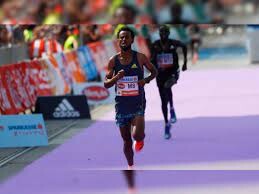
The elite men’s and women’s winners will take home USD 45,000 each. The runners will be
further incentivized by a Course Record Bonus of USD 15,000.
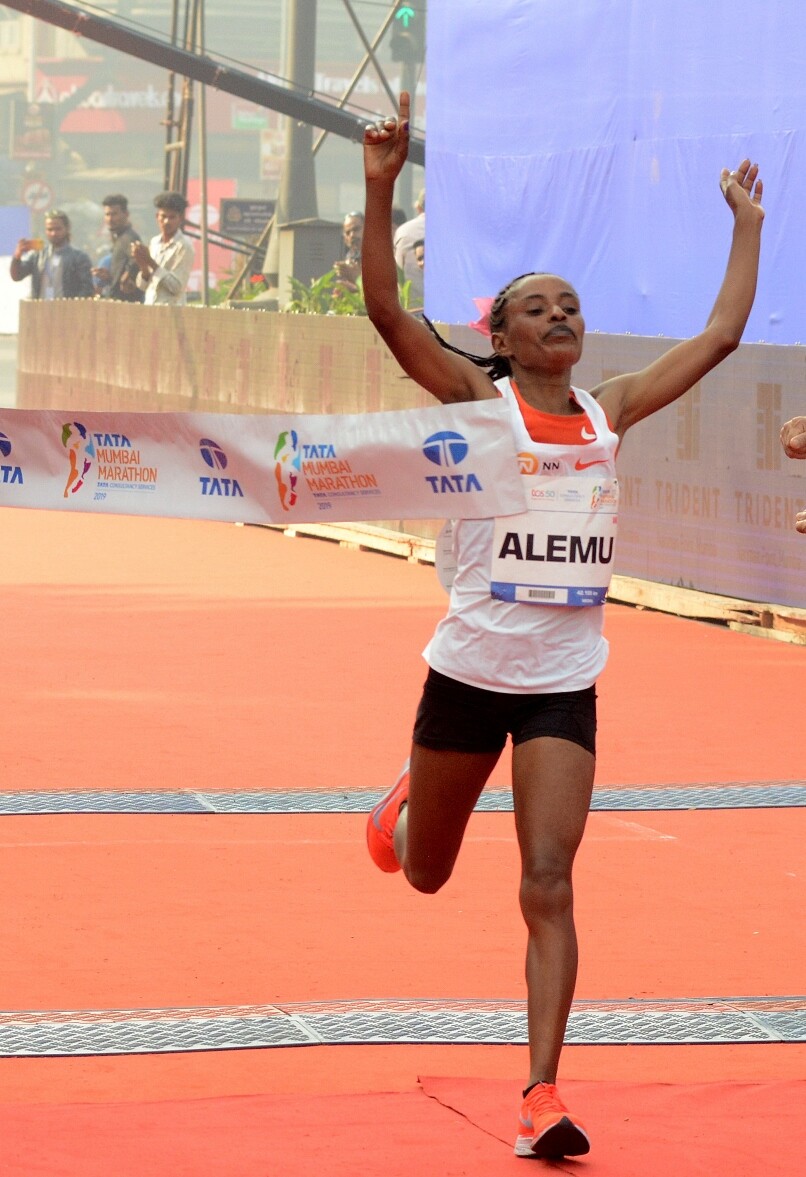
“I’m up for the challenge and have set my sights on the title,” said Hurisa, who clinched the 2021 Guadalajara Marathon in Mexico in a time of 2:12:28.
Toeing the start line in the men’s section are also Hurisa’s compatriots Ayele Abshero and
Hayle Lemi and Kenya’s Philemon Rono, a training partner of the legendary Eliud Kipchoge.
Abshero was runner-up here in 2020, 11 seconds adrift of Hurisa, on an AIMS-certified course that is widely regarded as challenging. Abshero, who finished 10th at the 2022 Linz Marathon in Austria in 2:09:37, has a personal best of 2:04:23, which makes him the fastest in the field.
With a personal best of 2:04:33, Lemi is the second fastest in the group.
“I’m excited about my first Tata Mumbai Marathon. I’ve heard it’s a tough course,” said Lemi, winner of seven marathons, including the Boston Marathon in 2016 and Dubai in 2015. “It’s a tremendous field and is going to be close,” added the Ethiopian, a.k.a. Lemi Berhanu, who was runner-up in the 2021 Boston Marathon.
Rono finished an impressive sixth at the 2019 Boston Marathon and won the Toronto Marathon the same year in 2:05:00. He recorded sixth-place finishes at the 2021 Abu Dubai Marathon and the 2022 Seoul Marathon.
Chepkech, the dark horse
In the women’s field, seven runners hold personal bests under the course record of 2:24:33 set by Valentine Kipketer in 2013, with Dera Dida (Ethiopia), Sharon Cherop (Kenya) and Rahma Tusa (Ethiopia) leading the charge on their debut here.
Silver medalist at the 2019 World Cross Country Championships, Dida won bronze in 10,000m at the 2019 African Games. In 2022, she won the Bejaia Half Marathon in 71:17 and finished eighth at the Great Ethiopian Run 10K.
“The Tata Mumbai Marathon has been on my running bucket list for some time. I’ve heard the people of Mumbai and India are very passionate about the running festival, and I look forward to this experience,” Dida said.
Cherop won marathon bronze at the 2011 World Championships and emerged victorious at the 2012 Boston Marathon. In 2022, she finished third at the Nairobi Marathon and the Buenos Aires Marathon.
Tusa took fourth place at the 2022 Sydney Marathon in 2:26:30 and the 2021 Valencia Marathon (in 2:23:20). She was fifth at the 2018 New York Marathon and won in Rome the same year.
Kenya’s Sheila Chepkech, also a first-timer in Mumbai, is the dark horse here. She won the 2022 Nairobi Marathon in 02:27:04. Previously, she finished second at the 2018 Milan Marathon and the 2017 Kosice Marathon. Also in the fray is the 2019 winner Worknesh Alemu of Ethiopia.
Vivek Singh, Jt MD, race promoter Procam International, said: “A truly world-class field will descend in Mumbai for the Tata Mumbai Marathon, a reflection of the event’s stature as one of the top 10 marathons in the world. The TMM returns bigger and better, and the spirit of #HarDilMumbai will burst to life come race day, with runners taking part across six categories.”
International Elite field:
Men:
Derara Hurisa (ETH) 2.08.09 (Course Record holder)
Ayele Abshero (ETH) 2.04.23
Hayle Lemi (ETH) 2.04.33
Philemon Rono (KEN) 2.05.00
Kebede Wami (ETH) 2.06.03
Aychew Bantie (ETH) 2.06.23
Hailu Zewdu (ETH) 2.06.31
Merhawi Kesete (ERI) 2:06:36
Masresha Bere (ETH) 2.06.44
Okubay Tsegay (ERI) 2.06.46
Reuben Kerio (KEN) 2.07.00
Hosea Kiplimo (KEN) 2.07.39
Abdela Godana (ETH) 2.08.06
John Langat (KEN) 2.09.46
Abida Ezamzamil (MOR) 2.09.52
Mesfin Nigusu (ETH) 2.09.53
Augustine Choge (KEN) 2.20.53
Women:
Dera Dida (ETH) 2.21.45
Sharon Cherop (KEN) 2.22.28
Rahma Tusa (ETH) 2.23.20
Sifan Melaku (ETH) 2.23.49
Adanech Anbesa (ETH) 2:24:07
Zinah Senbeta (ETH) 2.24.21
Ayantu Kumela (ETH) 2.24.29
Worknesh Alemu (ETH) 2.24.42
Letebrhan Haylay (ETH) 2.24.47
Zenebu Fikadu (ETH) 2.25.11
Rodah Tanui (KEN) 2.25.46
Kumeshi Sichala (ETH) 2.26.01
Lemeneh Kasu Bitew (ETH) 2.26.18
Sheila Chepkech (KEN) 2.27.04
Beshadu Birbirsa (ETH) 2.30.03
Gode Chala (ETH) 2.33.22
Anchalem Haymanot (ETH) Debut.
by Sports Africa
Login to leave a comment
Tata Mumbai Marathon
Distance running epitomizes the power of one’s dreams and the awareness of one’s abilities to realize those dreams. Unlike other competitive sports, it is an intensely personal experience. The Tata Mumbai Marathon is One of the World's Leading Marathons. The event boasts of fundraising platform which is managed by United Way Mumbai, the official philanthropy partner of the event. Over...
more...Legendary climber Alex Honnold is also a ninja ultrarunner
On Saturday, world-renowned climber Alex Honnold surprised runners and fans when he hopped into the Red Rock Canyon 50K Ultra, just outside of Las Vegas, running to sixth place in five hours and twenty-three minutes. Honnold, 37, has a home in Nevada with his wife, Sanni McCandless, and their daughter June.
Ultrasignup shows Honnold as having completed one other ultra in 2011, but he’s also flown under the radar with some running accomplishments, including a casual R2R2R (Rim to Rim to Rim) of the Grand Canyon in 2021–an endurance challenge that is on many runners’ bucket lists.
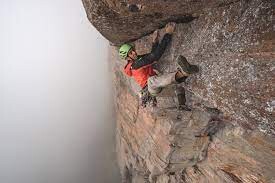
In 2017, Honnold became the first climber to ascend Yosemite’s El Capitan without ropes, documented in the popular film Free Solo, and holds numerous speed-climbing records. He’s also known for long traverses–in October he established a roughly 60-kilometre traverse that included 14 Red Rock multi-pitch routes, hiking and scrambling for well over 7,000 metres of vertical in a 32-hour push. He called the traverse Honnold’s Ultimate Red Rock Traverse or HURT.
While an ultra may seem like a natural extension of those long traverses, Honnold did share some thoughts on trail running back in 2016 with Trailrunner Mag, when he explained that he felt running wasn’t particularly beneficial to climbing.
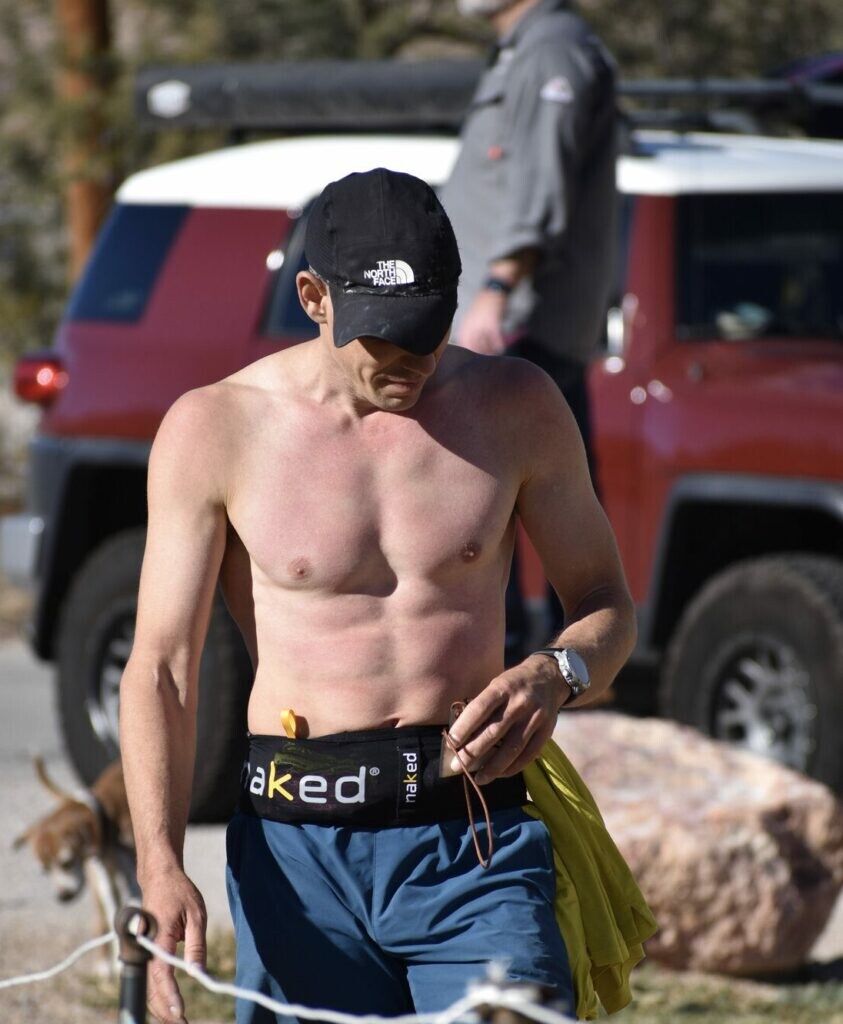
“It uses energy that could better be used doing my actual sport. But at the same time, I like running around and seeing new trails,” Honnold said. “I just enjoy moving quickly through new areas outside. I really like new trails and hills. I like seeing new things.”
“Sometimes it’s just nice to run,” he shared. “Like a kid.”
While most of us can’t comprehend summitting a steep rock face without a rope, the joy of running like a kid is something we can all relate to. It’s unlikely we’ll see Honnold challenging Jim Walmsley to a run-off any time soon, but the accomplished athlete may pop up in an ultra near you, ninja-like. You never know.
by Keeley Milne
Login to leave a comment
Eliud Kipchoge can go faster 'in near future'
Marathon runner Eliud Kipchoge believes he can get even closer to a possible sub-two hour marathon after narrowing the gap by 30 seconds when setting his recent world record in Berlin last month.
The 37-year-old ran a time of two hours, one minute and nine seconds to beat his previous benchmark, which had stood since 2018.
"I believe that I still have time to show the world how to push limits," the Kenyan told the BBC World Service.
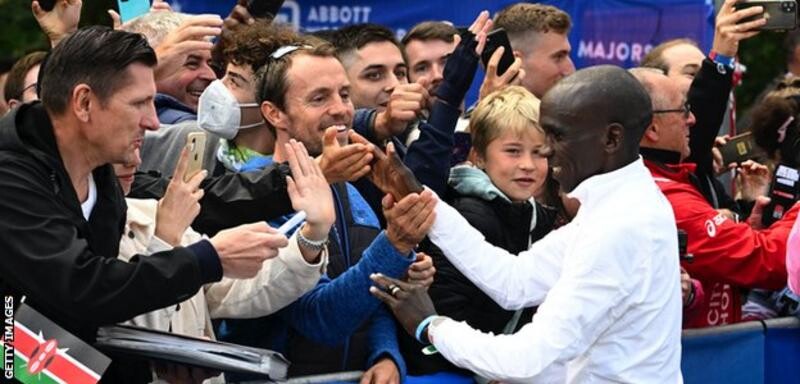
"I can still run my personal best in the near future. I can still try again."
Four years ago, Kipchoge took 78 seconds off compatriot Dennis Kimetto's 2014 record of 2:02.57.
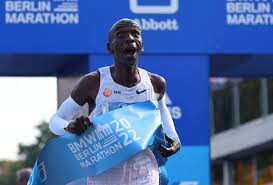
He then became the first man to run a marathon in under two hours in 2019, yet the time in Vienna could not be an official world record since it was not in open competition and he used a team of rotating pacemakers, among other measures.
Kipchoge ran the first half of late September's race in Berlin in 59 minutes and 51 seconds, prompting thoughts that he may become the first runner to break the two-hour mark in an official race.
He had played down his chances of a world record in the build-up, but admits lowering his time had been his stated aim in the German capital.
"My plan was not to run under two hours, my plan was to break a world record," he said.
"I realise that we are fast enough to run under an hour in a half-marathon, which was really motivating for me.
"And it's a good sign also that the future is clear. I'm showing the people that you can [go] as fast as you can for the half-marathon and still do something good at the end of it."
Kipchoge turns 38 next month and now says winning the Olympic marathon at the Paris Games in 2024 is on his "bucket list".
He was won the past two Olympic titles - becoming just the third person to defend a marathon title when he crossed the line in Tokyo - and a third successive triumph would be a first for a man or woman.
"I trust that all things will carry me well up to 2024 to present myself at the starting line," he said.
"What I like is history. To be the first human being to run back-to-back-to-back for three times and win Olympic marathon gold medal, it's my bucket list.
"It's there in my mind. I don't know what will happen but still, for now, I want to concentrate on recovering my body."
Paris victory would be 'phenomenal'
Former women's marathon world record holder Paula Radcliffe says she is "in awe" of Kipchoge's continued "stunning performances".
"I think we all thought that if anybody was in shape right now to take down that world record, it would be him," the 48-year-old Briton told the BBC World Service.
"Each year as he gets a year older, the odds are against him a little bit more - and he still manages to defy them.
"He doesn't put limits on himself. And I think that really helps his mind set. He loves setting himself those targets just to get better, to try and move things forward to move the bar that little bit higher all the time.
"If he gets that balance perfectly right between the first and second half, he can maybe take it (the world record) down even further."
Already regarded as the greatest marathon runner of all time, Radcliffe says that if Kipchoge were to win a third Olympic gold in Paris it would rank along his sub-two hour marathon as his greatest achievement.
"I think even to get it right for two marathons in a row is hugely impressive, especially given the way the goalposts moved with the Tokyo Olympics," she said.
"To put it in perspective, it's getting it right one day every four years, for 12 years. And history shows that that's extremely difficult to do.
"If anybody can do it, he can do it. But it will be a phenomenal achievement that perhaps would put him on the level with having gone through that two-hour barrier."
by BBC Sport
Login to leave a comment
Paris 2024 Olympic Games
For this historic event, the City of Light is thinking big! Visitors will be able to watch events at top sporting venues in Paris and the Paris region, as well as at emblematic monuments in the capital visited by several millions of tourists each year. The promise of exceptional moments to experience in an exceptional setting! A great way to...
more...Some races are down since the pandemic took charge of road racing for a couple of years but there is some good news
Even marquee events have seen declines of 25 percent or more between 2019 and 2022.
Across the country, many road races are returning after the COVID-19 pandemic forced them into a two-year hiatus. But runners haven’t yet come back to those events in the same numbers as they were turning out in 2019.
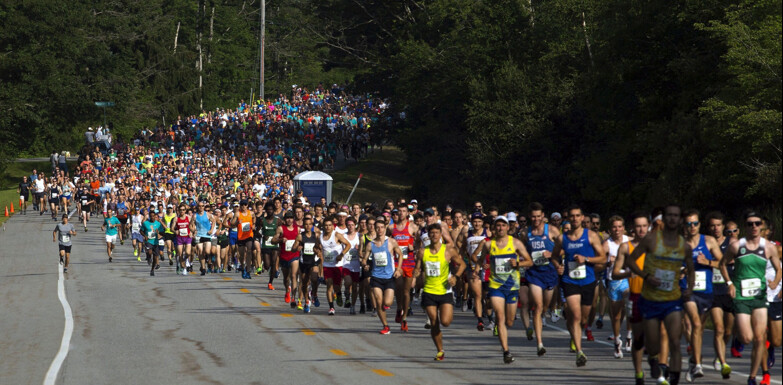
A few examples from the first eight months of 2022:
The BAA 10K in June had 5,144 finishers, down from 8,003 in 2019, a decrease of 35 percent.

The Utica Boilermaker 15K in July had 5,848 finishers, which was up from 2021, when it had 3,480, but down from the 2019 tally of 11,194, for a three-year decrease of 47 percent.
In Colorado, the Cherry Creek Sneak, a 5K, 5-miler, and 10-miler in Denver, had its final running in 2022 after 40 years. Combined participation in the three events had already been falling before the pandemic, and it fell an additional 38 percent between 2019 and 2022 (from 3,390 finishers to 2,092).
Larger, well-known events haven’t been immune from the declines. The Cherry Blossom Ten Mile Run in April in Washington, D.C., had 2,700 fewer runners, for a decline of 15 percent.
The Falmouth Road Race in Massachusetts and the Beach to Beacon 10K in Cape Elizabeth, Maine, two popular destination summer road races, saw declines of 24 percent and 16 percent, respectively. The town of Falmouth reduced the field size of the race to 10,000 runners this year (from its usual 12,800) but only 8,610 finishers appear in the results.
Jean Knaack, CEO of the nonprofit Road Runners Club of America, wrote in an email to Runner’s World, “We are seeing a slow recovery in 2022, and we are tracking with participation data showing about 84 percent return.”
Why aren’t runners coming back to events? Industry experts cited many theories:
The economy: “I think inflation will be a factor for 2023 as events plan and people pick what events they can afford to run,” wrote Knaack. The cost of travel to races—for flights, hotels, rental cars, gas—has gone up. So, too, have race entry fees for many events, especially for runners who wait until the last minute to register.
Competing events: Long-postponed weddings are back on. So are family vacations. The annual road race might need to take a back seat this year.
COVID concerns: Many runners worry about contracting COVID at a race, or they get sick at an inopportune time, keeping them from the starting line.
Shifting priorities: Erin Vandenberg, 42, for years raced at least monthly, often more, at distances from 5K to the marathon. Running a race with coworkers and then getting drinks after in downtown Chicago was a common occurrence. But she always felt a certain pressure to be training hard and performing well, worried what the time read on the clock at the finish.
Since the pandemic, she has taken a new approach to running. “I want to enjoy it; not stress myself out about it,” she said. “I don’t know that getting up at 5 a.m. to hit a certain pace and worry whether I’m fueling correctly is how I want to spend my time.”
Vandenberg has run three races in 2022—including one with her dog.
Not every race is down. Michelle La Sala, president of race management company Blistering Pace, says two of the events her company works on—the Big Sur Marathon and the Napa Marathon—have emerged largely unscathed from the pandemic. Big Sur was down only 240 runners (6.8 percent) and registration is tracking strongly for 2023. Same for Napa, which “should grow significantly this year,” La Sala said.
The bigger “bucket list” marathons, with a few exceptions, are not having any problems at all, she said, while smaller, regional races, without a compelling point of differentiation, are “on the struggle bus.”
Grandma’s Marathon along Lake Superior in Minnesota was off only 6.4 percent in 2022 from its 2019 tally, and well up from 2021. The Eugene Marathon, in May in Oregon, and the Missoula Marathon, in June in Montana, were both well ahead in finisher numbers, although many might have been deferred entries from the cancellations of 2020 and 2021. Vandenberg has a deferred entry from the Chicago Marathon in 2020, and she plans to use it in 2023.
John Mortimer, owner and founder of Millennium Running in Bedford, New Hampshire, sounded an optimistic note as well. Millennium has 30 of its own events of varying distances, manages and times others, and it has a running store. Sales are strong at the retail location, showing him that people continue to walk and run, even those who took it up during the pandemic.
And race participation in Millennium events continues to be robust, in part, because the company developed a time trial start system during the pandemic as an alternative to a mass start race. For many months, they had the only events happening in New England.
The company kept in frequent contact with runners and tried to make the race experience safe and convenient for them. They continue to offer the option to make any race a virtual race, up until the last minute, if runners would otherwise have to be a no-show at an event—thereby ensuring the runners would at least be mailed their tee shirts and medals.
That policy will continue, Mortimer said. “Every week we’re shipping out apparel and medals and bibs,” he said. “We’re trying to make it easy for the participant to be a part of the running community.”
The effort aimed at keeping relevant has paid off, Mortimer said, and registrations for most of the company’s events haven’t declined. The same can’t be said, he knows, for races that have been off for two years.
For them, “It’s out of sight, out of mind,” he said. “People have moved on.”
by Runner’s World
Login to leave a comment
Heart of America Marathon celebrated 63rd annual year
Boone County’s Heart of America Marathon celebrated its 63rd annual race year Monday morning, making it the second oldest continuously running marathon in the United States.
The race director Kathy Lee said the Labor Day marathon put on by The Columbia Track Club is rooted in history.

“It’s been going every year since 1960 starting right here in Columbia,” Lee said.
Lee said people travel far and wide to race in the Heart of American Marathon. She said in previous years, they’ve had runners from overseas. However, this year, the farthest runner was from Alaska.
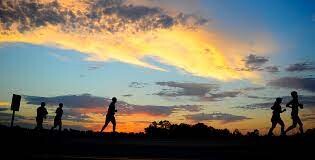
She said the challenge is what brings people from all over to the mid-Missouri marathon.
“This is a bucket list marathon, it really is,” Lee said. “Because we advertise heat, hills and humidity, it’s tough. It was rated on RavesReviews as one of the toughest marathons in the country. Some people like the challenge,”
Thomas Sinnott is a Pennsylvania native who made the journey to Columbia to take part in the 26.2 miles.
“Well, I’m a 50-stater. There’s a few of us that try to run marathons in as many states as possible,” Sinnott said.
Missouri is Sinnott’s 32nd state in his journey to 50.
He said he was most looking forward to the race, seeing a new part of the country and meeting like-minded runners.
However, mid-Missouri offers humidity Sinnott wasn’t particularly looking forward to.
“The thing I dread honestly, this is a humid part of the world. So, without too much detail, sometimes it’s the chaffing and the grinding, that makes for an unpleasant rest of the day,” Sinnott said.
Sinnott was joined by almost 250 fellow runners taking part in the Heart of America Marathon.
Lee said there is a ton of preparation that goes into each year’s race.
“In fact, we’ll start on Tuesday to prepare for next year’s marathon,” Lee said. “It takes months.”
At the finish line, there was a pizza party for runners and volunteers, a masseuse and a chiropractor for the runners, and all participants received a medal.
by Elise Person
Login to leave a comment
Heart of America Marathon
This annual Labor Day race takes runners through the city of Columbia, Missouri. Our awards: Framed posters to overall male & female winners; running shoes to overall winners and first age 40+ male and female; plaques to first 3 males and females in age groups 0-24, 25-29, 30-34, 35-39, 40-49, 50-54, 55-59, 60+; medallions and T-shirts to all finishers. ...
more...Eliud Kipchoge picks his next marathon he will be racing the Berlin Marathon for a fifth time on Sept. 25
Eliud Kipchoge will race the Berlin Marathon for a fifth time on Sept. 25, returning to the German capital event for the first time since he broke the world record there in 2018.
“Berlin is the fastest course, it’s where a human being can showcase its potential to push the limits,” he said in a press release.
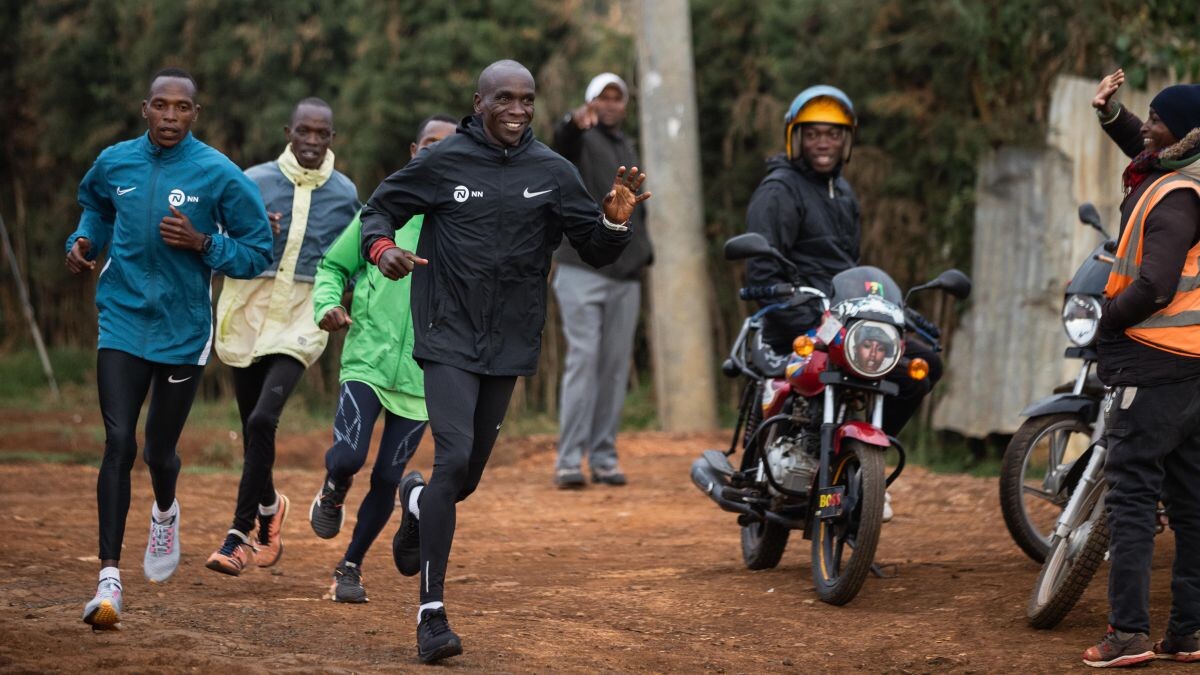
Kipchoge has the greatest marathon record of any man, winning 14 of his 16 starts and becoming the first and so far only person to run 26.2 miles in under two hours (doing so in a non-record-eligible event).
Kipchoge, 37, chose Berlin over London, his other usual marathon, and the other fall major marathons, Chicago (which he raced once in 2014) and New York City (which he has never raced).
London, usually in April, will be held in the fall for a third consecutive year due to the pandemic before returning to its spring date in 2023.
Kipchoge called it a “really hard” decision to go with Berlin over the others, speaking in a virtual press conference from training in Kaptagat in his native Kenya.
Kipchoge has said that he hopes to run all of the World Marathon Majors, which would require making his debuts in Boston, which is contested every April, and New York City, which is in November.
So far, Kipchoge has primarily run London every April and Berlin every September, never doing more than two marathons in a year.
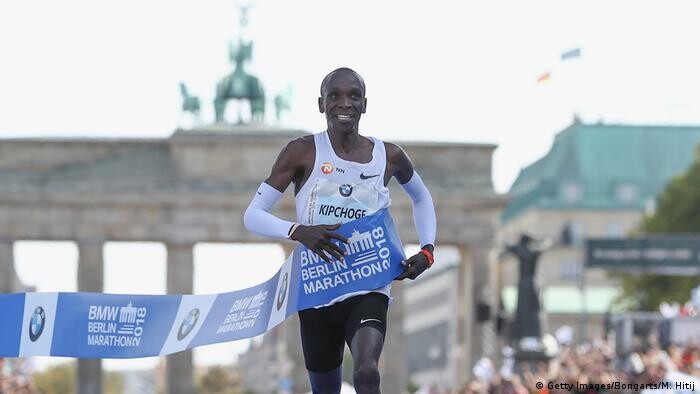
He said Friday that Boston and New York City remain targets, and when asked specifically about Boston, said it was on his bucket list.
Kipchoge is expected to race the 2024 Paris Olympics, where he could become the first marathoner to win three gold medals (or three medals of any color).
He has never raced a fall marathon in an Olympic year, so if he doesn’t race New York City in 2023, he may not do so until, at the earliest, 2025, when he will be three days she of turning 41 years old.
Kipchoge said Friday he may continue racing after the 2024 Olympics and into his 40s. He plans to focus on major city marathons rather than specialty races, such as his 2017 and 2019 attempts to break two hours for a marathon in non-record-eligible events.
He ran 2:00:25 on a Formula One track in Italy in 2017 and 1:59:40 in Vienna in 2019.
In Berlin, he has three victories and a runner-up. In 2018, he broke countryman Dennis Kimetto‘s world record, lowering it from 2:02:57 to 2:01.39. The next year, Ethiopian legend Kenenisa Bekele won Berlin in 2:01:41 with Kipchoge not in the field.
Kipchoge and Bekele, 40, have not gone head-to-head since then. Bekele, who hasn’t broken 2:06 since Berlin 2019, signed up for London on Oct. 2.
The other headliner in Berlin is defending champion Guye Adola of Ethiopia.
In 2017 in Berlin, an unknown Adola came out of nowhere to finish 14 seconds behind Kipchoge in the then-fastest-ever marathon debut on a record-eligible course, sticking with Kipchoge until the last mile. Adola didn’t know he was running until four days before the race and wasn’t meant to start with the elite group.
Adola said he hopes to break 2:03 this year.
by OlympicTalk
Login to leave a comment
BMW Berlin Marathon
The story of the BERLIN-MARATHON is a story of the development of road running. When the first BERLIN-MARATHON was started on 13th October 1974 on a minor road next to the stadium of the organisers‘ club SC Charlottenburg Berlin 286 athletes had entered. The first winners were runners from Berlin: Günter Hallas (2:44:53), who still runs the BERLIN-MARATHON today, and...
more...Ultramarathoner Michael Wardian Runs Across the U.S. in 62 Days: 'I Feel Like I Was Made to Do This'
Wardian ran roughly 50 miles every day to complete the cross-country adventure in under 75 days
Move aside Forrest Gump: Michael Wardian, a 48-year-old man from Arlington, Virginia, ran more than 3,200 miles to cross the U.S. in 62 days, finishing on Friday.
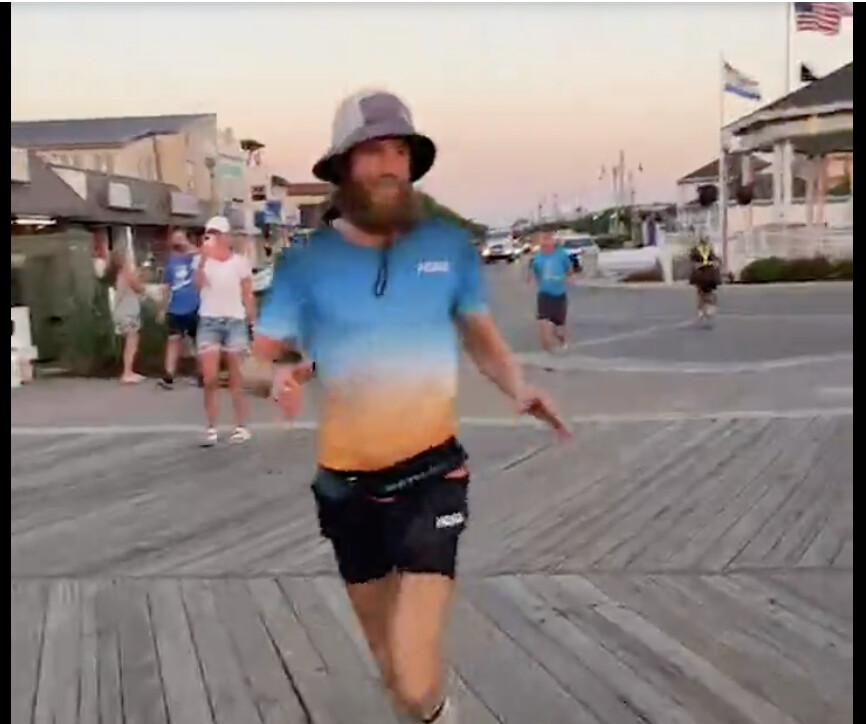
Wardian is a former Michigan State lacrosse player who has since turned his athletic focus to running, and ultramarathons in particular. "Starting on May 1st, 2022, I will be running across the entire continental USA, starting in San Francisco, CA, and ending at my home in Rehoboth Beach, DE," Wardian wrote.
"This will be my longest run ever," said Wardian.
The ambitious athlete planned to run primarily along Route 50, with a goal of completing the journey in 75 days or less. Wardian ultimately finished ahead of schedule, arriving at Delaware's Dewey Beach on July 1, 62 days after he departed from San Francisco, California.A video of Wardian's big finish can be seen on his Instagram account. He celebrated by running through the finish line and straight into the ocean for a swim.
"Every day I'm seeing new things, getting to have new experiences," he told reporter Tom Schad of USA Today on day 59 of his adventure.
"I feel like I was made to do this," Wardian said. "This is my jam, for sure."
According to USA Today, Wardian has previously tackled other monumental runs, including doing seven marathons on seven continents in just seven days. He also once held the world records for fastest marathons on a treadmill and while pushing a stroller.
The outlet reported that Wardian's average time running per day was between 11 and 15 hours. At night, Wardian joined crew chief Eric Belz who drove an RV along the runner's route.
"It takes a lot of grit and a lot of passion," Belz told USA Today.
The Forrest Gump inspired journey had been on Wardian's bucket list for years, but when he started dealing with health issues — Wardian has what's known as athlete's heart, where the heart is enlarged — the runner knew it was now or never.
It was really humbling," Wardian said of his health concerns. "You always think you have more time."
Wardian had the support of his wife, Jennifer and teenage sons on his journey. What's more, Wardian's cross-country trip raised over $107,000 for World Vision's clean water work around the globe, for children and families to have access to clean and safe drinking water.
Login to leave a comment
Aliphine Tuliamuk, Jared Ward, Caroline Rotich and Abdi Abdirahman are ready to race the streets of Pittsburgh
Aliphine Tuliamuk, Jared Ward and Abdi Abdirahman are ready to race the streets of Pittsburgh in the UPMC Health Plan Pittsburgh Half Marathon, scheduled for Sunday, May 1. Each of the members of this talented trio have a special connection to the City of the Champions and will embrace the city’s renowned sports fans and spectators to help them shine on race day.
Men’s Division
Ward and Abdirahman lead a talented field of top international and American runners who will be competing for the $10,000 top prize. Abdirahman, who is a 5-time Olympian, has never been to Pittsburgh but is a big fan of the city.
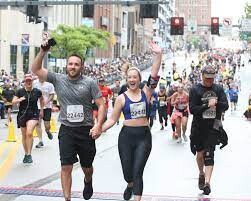
“It has been a dream of mine to race in Pittsburgh,” Abdirahman said. “It will be my first time in the city, and I am a big Steelers fan. I am looking forward to running the Pittsburgh Half Marathon. Training has been going great leading to this race, and I am excited to test my fitness.”
Ward will finally make his Pittsburgh racing debut after planning to run in 2020 and 2021 before the in-person events were canceled both years. He is excited to return to the city, which he hasn’t visited since he spent two years on Mormon mission after high school.
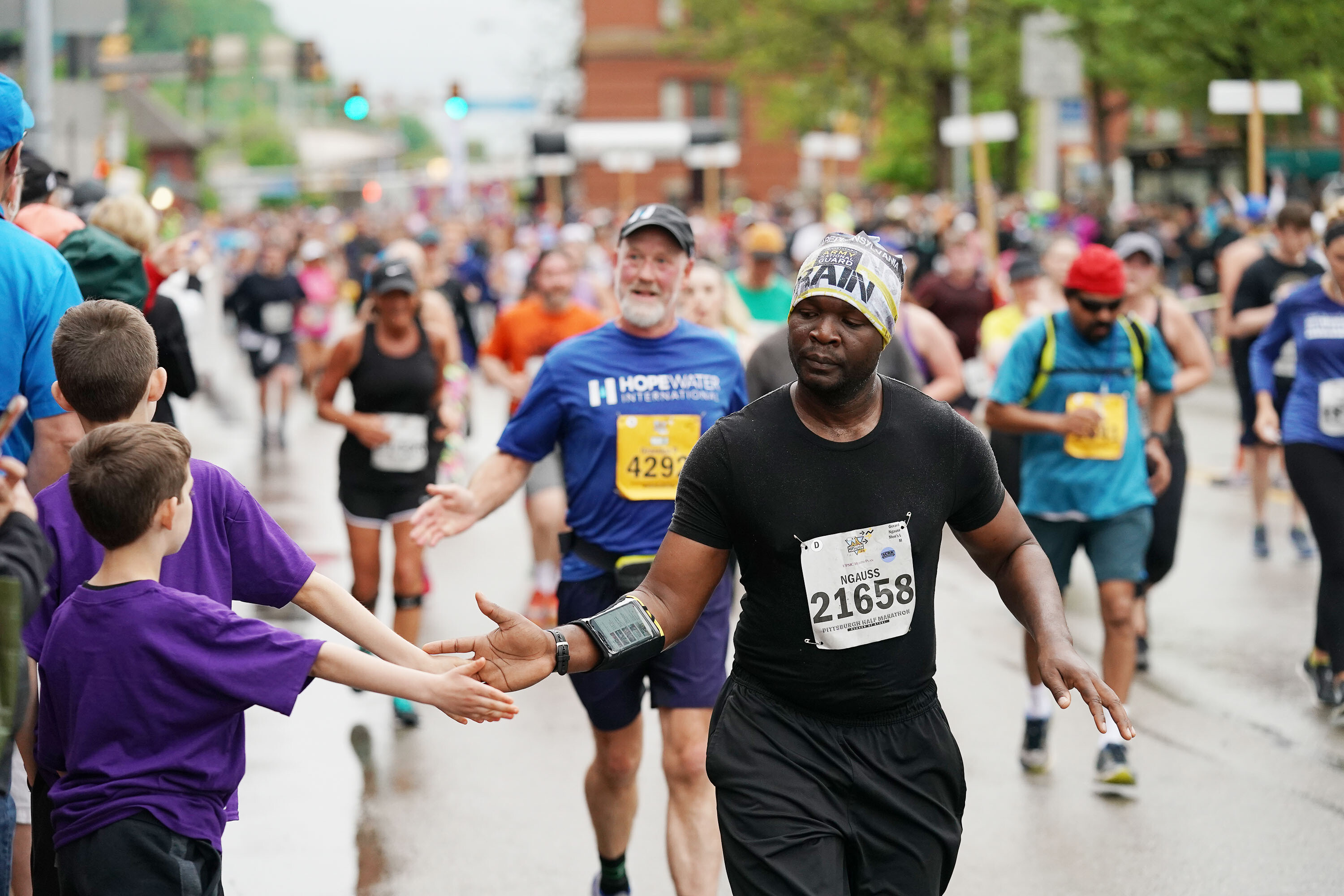
“I’m beyond excited to return to Pittsburgh,” Ward said. “I feel like I grew up here, while serving a mission for the Church of Jesus Christ of Latter-day Saints. I look forward to seeing friends and touring around ‘dahntahn’ – this time on the streets as a runner.”
Joining Abdirahman and Ward in the men’s race is James Ngandu of Kenya, who earlier this year won the Houston Marathon, and American Lawi Lalang, an eight-time NCAA champion who holds a half-marathon personal best of 1:02:49. Wesley Kiptoo, who was the 2021 NCAA Indoor National Champion at 5,000 meters, will also make his half-marathon debut at the event. Local runners Colin Martin, who holds a personal record of 1:05:19, and Nick Wolk, who won the 2021 Richard S. Caliguiri City of Pittsburgh Great Race 5K and 10K, will also race.
Women’s Division
Aliphine Tuliamuk is excited to return to Pittsburgh to run her first race since the Tokyo Olympics. In 2015, she ran her first marathon at the DICK’S Sporting Goods Pittsburgh Marathon, finishing in second in 2:34:44. She returned in 2018 to win the USA Half Marathon Championships.
“Pittsburgh has become a special city for me,” Tuliamuk said. “It’s where I learned that the marathon was painful but worth the struggle. Winning the 2018 USATF Half Marathon Championship gave me much needed confidence as I built toward the 2020 U.S. Olympic Trials. This year I am hoping for the same competitive atmosphere that Pittsburgh always brings. It will be my first race in a while, and I wanted to come to a place where I feel comfortable.”
Her speed will be tested against Caroline Rotich, who won the 2015 Boston Marathon and has a half-marathon personal best of 1:08:53.
“This will be my first time coming to Pittsburgh,” Rotich said. “It’s always exciting to travel to new places and Pittsburgh has been on my bucket list. I’m motivated to capitalize on my training this spring, rather than refocus on another marathon. I am feeling fit and ready to run fast in Pittsburgh.”
The field also includes Jordan Hasay, who is the fourth fastest U.S. women’s marathoner of all-time and Canadian cross-country skier and Olympian Anne Marie Comeau. Local Pittsburgh runner Margo Malone, who ran in the 2020 U.S. Marathon Olympic Team Trials, will also compete.
This year’s UPMC Health Plan Pittsburgh Half Marathon offers a prize of $58,000, including $10,000 each for the top men’s and women’s finishers. For the first time, the event has been awarded a World Athletics Road Race Label. Only five other U.S. races carry a label from World Athletics.
About the DICK’S Sporting Goods Pittsburgh Marathon Weekend of Events
The Pittsburgh Marathon was held annually from 1985-2003. After a five-year hiatus, the DICK’S Sporting Goods Pittsburgh Marathon was relaunched in 2009 and debuted with a sold-out field of 10,000 participants. It has grown each year since, evolving from a single race day into a weekend of events for the whole family that annually attracts nearly 40,000 runners.
For more information about the 2022 DICK’S Sporting Goods Pittsburgh Marathon Weekend of Events, visit www.thePittsburghMarathon.com.
by Running USA
Login to leave a comment
Dick's Sporting Good Pittsburgh Marathon
This race is your game - however you decide to play it. As a competitor. A fund raiser. An enthusiast. A veteran. A team player. It's whatever you want it to be. It's whatever you make it. It's YOUR game..... Run it. Play it. Own it. Love it. Runners will race on the North Shore of Pittsburgh, cross each of...
more...Big Sur International Marathon makes its return Sunday
Three years is a long time to wait at the starting line. But the Big Sur International Marathon is raring to go.
Canceled in both 2020 and 2021 because of COVID-19 safety concerns, the world-renowned race returns this weekend, where a sold out slate of about 9,800 entrants will take part.
“It feels good to be back,” said Doug Thurston, race director and executive director of the Big Sur Marathon Foundation, which organizes both the Big Sur International Marathon and Monterey Bay Half-Marathon each year. “Runners have responded well, and we’re ready for a great race.”
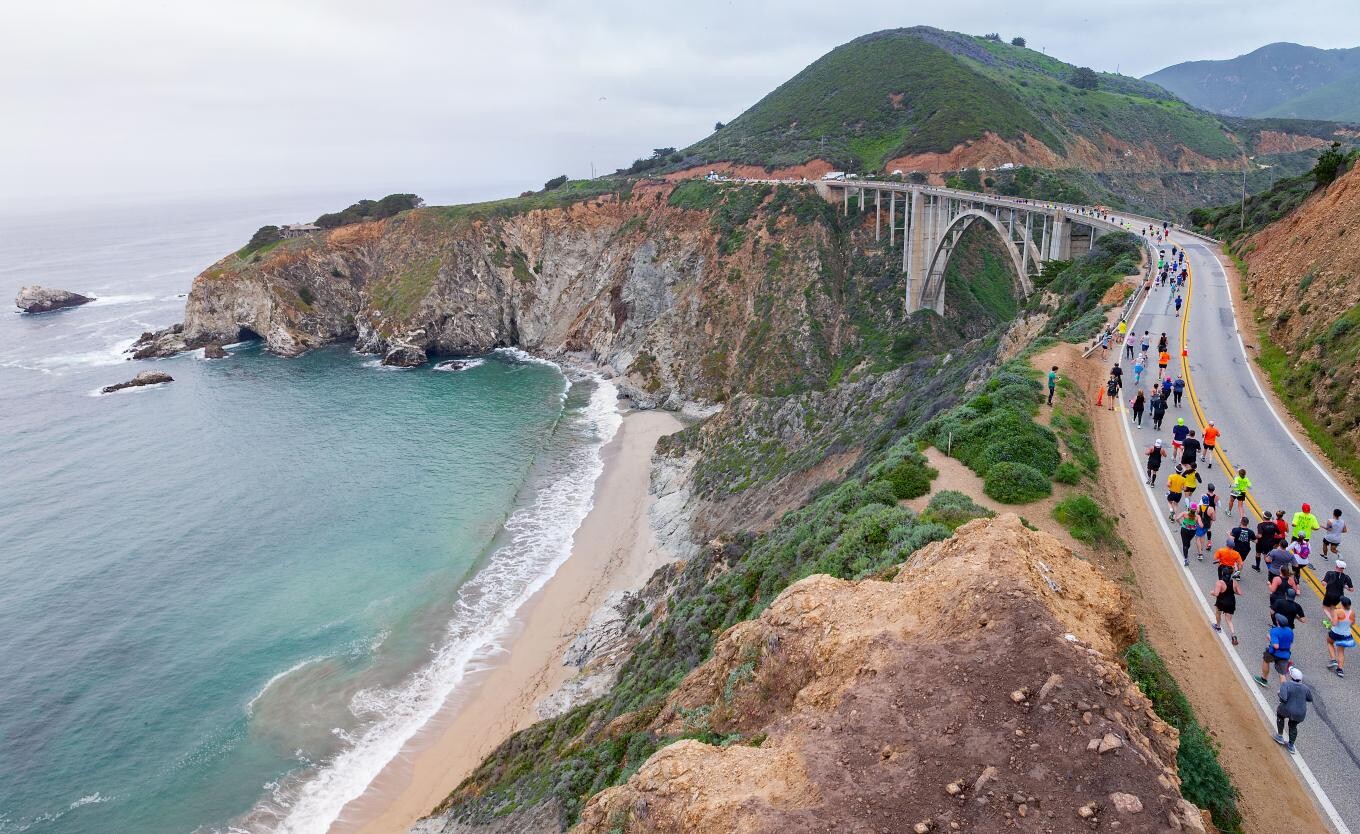
Speaking to an unabated enthusiasm for the event, Thurston explained that racing slots filled as quickly – if not quicker – than they “ever had before.” The Big Sur International Marathon has sold out in each of the past 10 years it has been held. To the excitement of Thurston, the Big Sur Marathon Foundation, and a more than 100-person organizing committee that manages the event year-round, 2022 proved to be no different.
“It’s a great testament to our volunteers and the community,” said Thurston. “The scenery can’t be beat, but good scenery doesn’t mean a great race. Great volunteers and community support for more than 30 years speaks volumes to how important the race is. (And) they’re anxious to provide a world-class experience to people this weekend.”
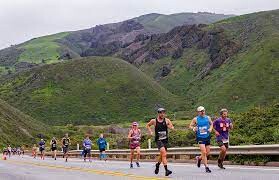
The much-anticipated affair will kick off early Sunday morning, with marathoners taking their mark at Big Sur Station at 6:35 a.m. Beyond the 26-mile, 365-yard scenic stretch along Highway 1, runners are set to take part in a host of other races happening alongside the big distance, including a 21-miler, 11-miler, 12K and 5K. All are set to commence before 8 a.m. Sunday.
Though years have passed since runners were last invited to skirt the Big Sur coastline, Thurston said the course itself is reminiscent of previous races, barring a few recent upgrades meant to render routes safer. Those include a freshly paved roadway and a revamped starting line process, Thurston said.
Yet, what may bring an added element of notoriety to this year’s slate of races – apart from the anticipation of their return – is an enhanced backdrop, Thurston continued, even if topping the peak of picturesque is hard to imagine.
“I think these mid-spring rains that we had last weekend and are anticipating over the next couple of days will make this one of the most green and most spectacular races for runners to enjoy,” he explained. “There’s going to be some special color along hills with wildflowers and things. … It’s going to be beautiful.”
Entrants set to relish in the panoramic trek include five-time Big Sur International Marathon men’s champion Adam Roach, defending 2019 men’s champion Jordan Tropf and elite runner Ben Bruce. Between the three, Thurston is anticipating an “interesting” race, particularly among Tropf and Bruce, who both just competed in the Boston Marathon Monday.
The Big Sur International Marathon includes a special category for those runners determined enough to take on both events: Boston 2 Big Sur. Attracting 400 of the world’s fittest athletes, the challenge combines Boston and Big Sur chip times and awards participants for their pace across the two marathons. This year, the races are less than six days apart. That’s more than 52 miles of running in the span of a week.
Besides those poised to push racing limits, Thurston said he’s particularly looking forward to a group of runners he dubs the “grizzled veterans,” who have participated in every Big Sur International Marathon since it started in 1986.
Still, Thurston said well over a majority – more than 80% – of entrants in the races each year are first and only timers to the event.
“For thousands and thousands of runners, this is their one opportunity to experience something like this,” he said.
That desire to check off the Big Sur International Marathon on a larger running bucket list, Thurston added, is a factor in why 30% of runners previously entered in the canceled 2020 event returned this year to finally satisfy their ambition. These already listed entrants had priority coming into the 2022 race. Thurston is glad to see some retain their racing plans two years later.
“People had invested time and energy in preparing for the race,” he said. “Nobody knew in the summer of 2019 when folks registered that there would be a pandemic in late winter of 2020. …But it was canceled five to six weeks before they could participate. Now they can look forward to doing it again.”
For non-runners looking to watch, the only spectating opportunity will be at the finish line at Rio Road in Carmel. There will be no points to watch at the start or along the course. Non-official bicycles are likewise not allowed Sunday. While the marathon goes on – which is bound to a six-hour course limit – Highway 1 will be closed to traffic. It will reopen at 1 p.m. Sunday.
While proof of vaccination or recent negative test will not be required to attend the event per current county guidelines, organizers are strongly encouraging all entrants and attendees to arrive fully vaccinated or be tested for COVID within 48 hours of their visit if unvaccinated. Thurston also noted that masks will be worn on buses carting runners to the starting line. Those taking part in Friday and Saturday’s pre-race Health and Fitness Expo at the Monterey Conference Center will also be asked to wear masks, Thurston said.
More information about this weekend’s Big Sur International Marathon can be found at https://www.bigsurmarathon.org/.
by Tess Kenny
Login to leave a comment
Big Sur Marathon
The Big Sur Marathon follows the most beautiful coastline in the world and, for runners, one of the most challenging. The athletes who participate may draw inspiration from the spectacular views, but it takes major discipline to conquer the hills of Highway One on the way to the finish line. Named "Best Marathon in North America" by The Ultimate Guide...
more...The secrets behind Eliud Kipchoge's winning mentality
The world's fastest marathoner Eliud Kipchoge admits that he’s had to dig deep to find the strength to keep going.
Kenya's Double Olympic men's marathon champion says he often turns to the millions who have been inspired by his runs, his grandeur achievements, and his motivating quotes.
“I struggle with motivation, but I try all the time to get inspired by fans messages around the world,” Kipchoge said on Wednesday (April 6) during a webinar organized by his NN Running Team to mark five years of the athletics management group.
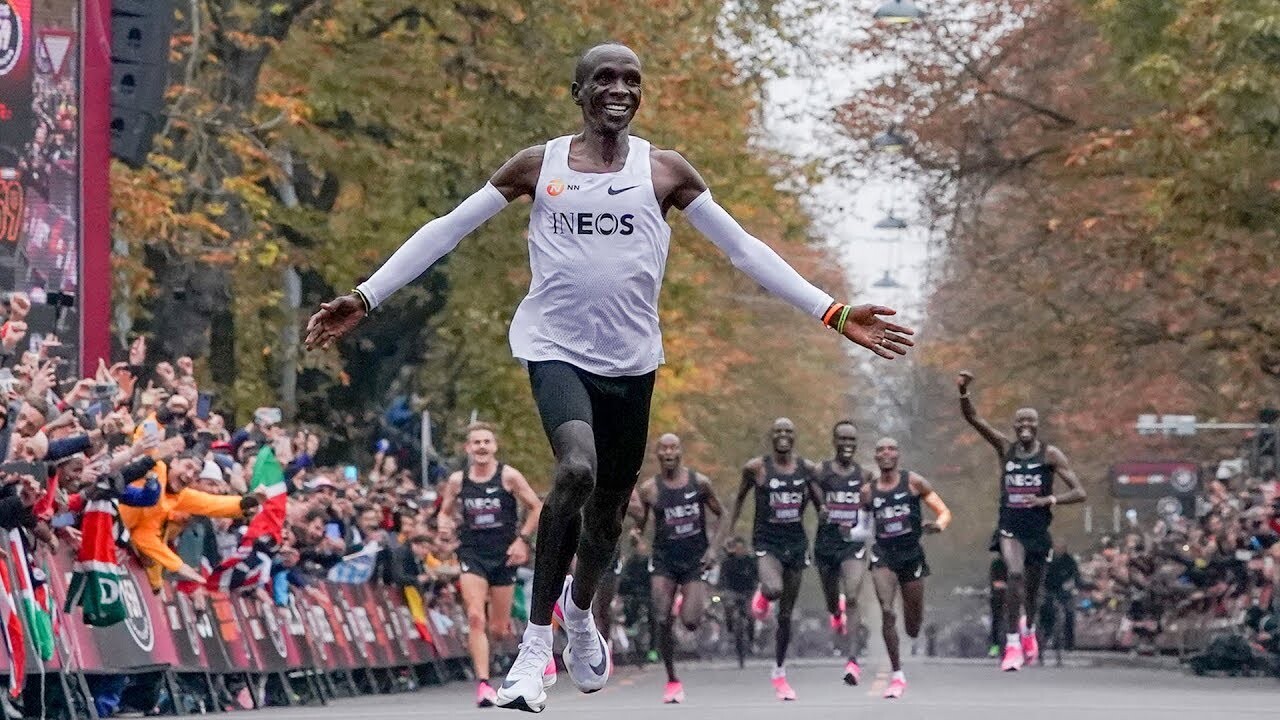
“I have been inspiring people around the world and [the thought of this] is what sometimes gives me the energy to jump out of bed and do the necessary.”
As amazing as his athletic accomplishments are, the world record holder has always been forthright on how much sometimes his passion hurts.
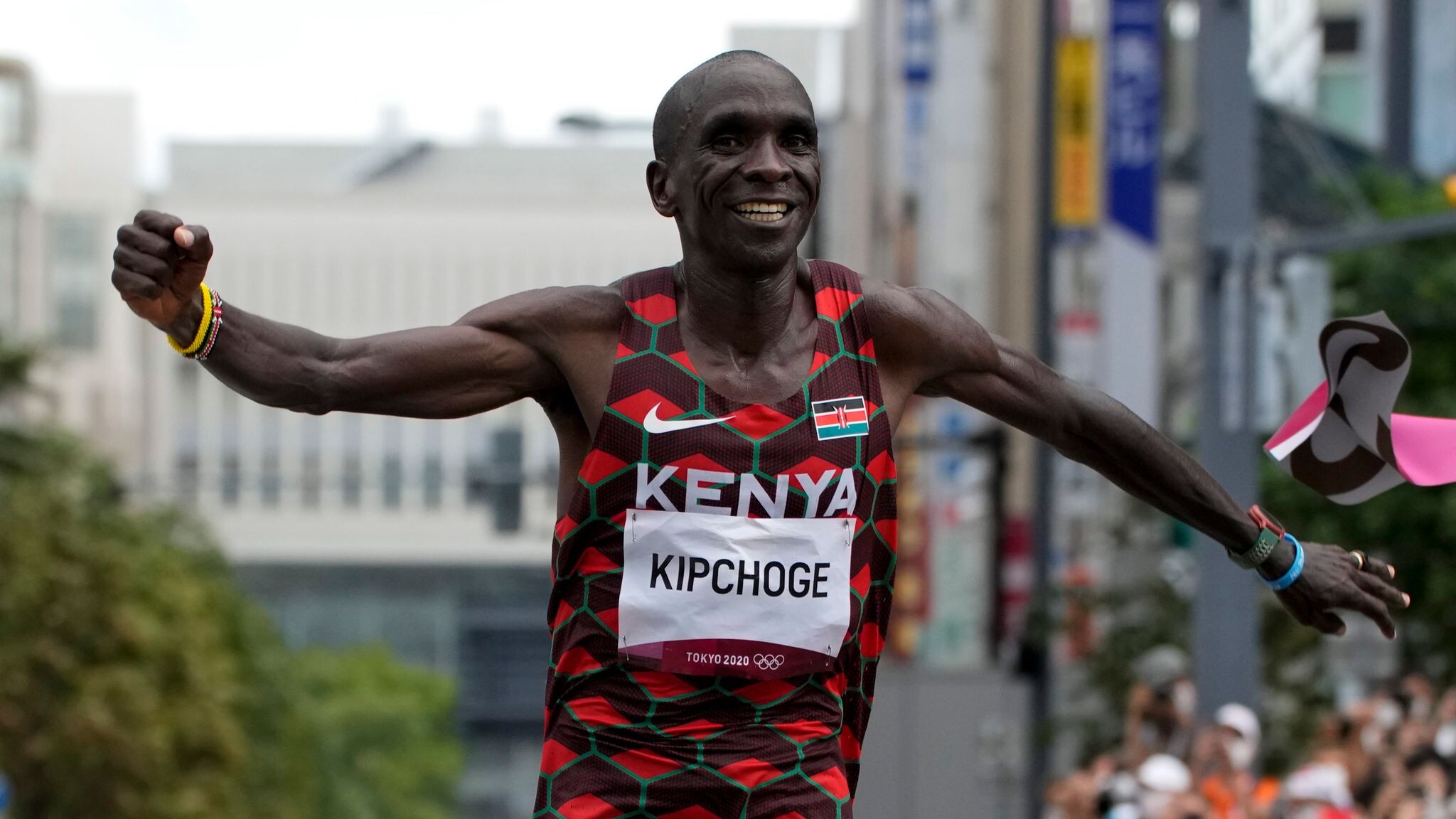
“In the journey of life, there [are] ups and downs. In marathon, there [are] a lot of challenges, ups and downs. There is pain in training, pain in running,” he shared on the documentary titled Kipchoge: The Last Milestone that focused on his successful attempt to become the first person to run a marathon in under two hours.
The 37-year-old champion cemented his position as the greatest distance runner of all time, by becoming the first man in 40 years to win marathon gold at successive Olympic Games, when he won at Tokyo 2020 in 2021.
And, as he targets an unprecedented third Olympic marathon title at Paris 2024, Kipchoge gave a sneak peak on how he manages to stay focused on his staggering racing goals.
“[When I am running] Many things are always crossing my mind from West to North, East to South, but I try to block them and concentrate fully on the road, concentrate fully on the task ahead and finishing the race,” the Kenyan, who enjoys his long runs, offered.
“After training for four months [for a race] I know that the only way to block what’s in my mind and concentrate fully is by making my mind easy and block any [distracting] messages coming in.”
During the hour-long webinar, the NN Running Team shared insights from the their management, physiotherapist, nutritionist, and Patrick Sang, the lead coach at the simple Kaptagat training camp.
“Running is a team sport. It is no longer an individual event as people think," four-time Olympic medalist Kipchoge said.
"When NN formed the running team we discovered that the team is especially important especially in marathon running, helping each other both physically and mentally.”
That team was formed in April 2017 by Jos Hermens, who assembled the some of the best distance runners in the world, led by the two fastest marathoners, Ethiopia’s triple Olympic champion Kenenisa Bekele, and Kipchoge, to train in structured training camps.
It's a concept that the man who has won 14 of the 16 major marathons in his career claims has made him a better runner. Kipchoge also explained that during the pandemic he found it difficult to go back to training alone due to lockdown restrictions.
What next for Eliud Kipchoge in 2022
Kipchoge He opened his season on March 6 running the fastest time ever in Japan of 2:02:40 to win the Tokyo Marathon.
Since then, he has tapered down his training, focusing more on the gym sessions despite not ‘liking the weightlifting’ bit, but he’s enjoying working on his core muscles.
The huge Kelly Clarkson fan has not yet decided if he will do a marathon towards the end of the year, but has just added a new sport on his bucket list.
“I am bad at swimming. I don’t know how to swim…that’s on my bucket list…”
by Evelyn Watta
Login to leave a comment
How to Qualify for the Boston Marathon
So you want to qualify for the Boston Marathon? You’re not alone. As an age-group or recreational runner, it’s one of the noblest (and most common) goals to set your sights on.
The history and prestige of the Boston Marathon are unparalleled in the world of running, which is why getting the opportunity to run the famed 26.2-mile route from the start in Hopkinton to the finish line on Boylston Street in downtown Boston is a top-shelf bucket list goal for many runners.
And rightly so. With the challenge it requires to qualify, the experience of running Boston is all that and more.
6 Tips on Qualifying for Boston
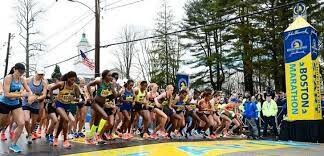
For most age-group runners, qualifying for Boston isn’t a simple task. Every athlete’s journey to trying to earn a Boston-qualifying time (BQ) is unique, and your approach needs to be specifically catered to who you are as a runner. And, like with all things running, there are no shortcuts for earning a BQ—but there are some key points to consider on your quest.
1. State Your Intention.
If you’re truly interested in qualifying for Boston, it’s a good idea to make it one of your primary goals (both in running and in life) so you can focus as much energy as possible toward it and take a smart and healthy approach to achieving it. That doesn’t mean you have to post it on Instagram, but it’s something you should share with your significant other, family members, and running buddies to generate long-term excitement and support as well as keeping you accountable on your journey.
Every age group has a different qualifying time that needs to be attained in a two-year window prior to registration opening in the fall prior to the next race the following April. For women, the age groups and times are:
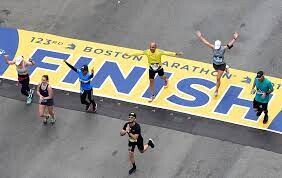
18–34: 3:30.00 (3 hours, 30 minutes, and zero seconds)
35–39: 3:35.00
40–44: 3:40.00
45–49: 3:50.00
50–54: 3:55.00
55–59: 4:05.00
60–64: 4:20.00
65–69: 4:35.00
70–74: 4:50.00
75–79: 5:05.00
80 and over: 5:20.00
Men
18-34: 3 hrs 00 min 00 sec
35-39: 3 hrs 5 min 00 sec
40-44: 3 hrs 10 min 00 sec
45-49: 3 hrs 20 min 00 sec
50-54: 3 hrs 25 min 00 sec
55-59: 3 hrs 35 min 00 sec
60-64: 3 hrs 50 min 00 sec
65-69: 4 hrs 5 min 00 sec
70-74: 4 hrs 20 min 00 sec
75-79: 4 hrs 35 min 00 sec
80 & over: 4 hrs 50 min 00 sec
There’s also the added complication that just hitting the time doesn’t guarantee entry to the race. Runners typically need to also meet faster cut-off times if registration exceeds the race capacity (see tip #6).
“It’s a great goal and a very relevant goal for a lot of a marathoners,” says New York City–based running coach Elizabeth Corkum. “When it’s your first Boston, it’s a big deal and definitely something you should be excited about.”
2. Set a Realistic Goal
For many runners, it takes a full year or two—or maybe even five or more—to develop the aerobic strength and overall fitness to be in position to reach the qualifying time in your age group.
The first step: Understand that the path to running fast enough to earn a BQ standard isn’t a quick process of instant gratification.
“A lot of runners will come to me and say I want to qualify for Boston this year because a lot of runners are always eager to do it now, but the reality is that it might take a few years,” says Chicago-area coach Jenny Spangler, who won the 1996 U.S. Olympic Trials Marathon. “It’s a great goal for many people, but it’s a commitment and you have to be realistic about where you are and where you need to get. For some runners, it will take a while. Sometimes I’ll have runners aim for running a fast half marathon first and then next year start to focus on a fast marathon.”
If you’re serious about qualifying for Boston, it’s best to connect with a coach or local training group that has a history of helping runners achieve a BQ. You’ll want to find a coach who will take into consideration both your history as a runner and as an athlete as well as your current fitness level, previous races, monthly mileage volume, injury history, and, perhaps most important, your ability to commit to a complicated training program amid your work-life balance.
“You don’t like to discourage anyone, but a Boston qualifying time is hard,” Spangler says. “So for people who can’t commit the time for training or maybe just don’t enjoy running or don’t want to put in the mileage, it might not be possible. It’s a commitment and it’s just not for everybody.”
3. Pick a Qualifying Race
One of the keys to qualifying for Boston is running a fast, USATF-certified course with a high probability of running your goal time. Typically, the races with the most qualifiers are the New York City Marathon and the Chicago Marathon, and, of course, Boston itself, but that’s largely based on the volume of runners in those races. However, those marathons can be hard to get into, so unless you already secured an entry, you should plan on another race with a high propensity of Boston-qualifying times.
One of the best options is the California International Marathon (CIM), where 25 to 35 percent of the field typically earns a BQ. The only challenge about qualifying at CIM is that it’s held the first Sunday in December, so you’ll have to wait and enter for the next Boston Marathon 16 months later.
Another great option among mid-sized races is the mid-June Grandma’s Marathon in Duluth, Minnesota, which typically has both a large number of qualifiers and a relatively high percentage of BQers. In 2019, 1,108 of its finishers (18.2 percent) earned BQ qualifiers. From 2010-2021, an average of 15.8 percent of Grandma’s finishers earned BQ times.
“Usually when people come to me, they already know which race they want to run,” says Nell Rojas, a Boulder, Colorado–based professional runner for Adidas who also coaches age-group runners. “But if not, I usually recommend California International Marathon or Grandma’s Marathon, which are fast marathons that are easy to get into with a lot of people that will be running their same speed. And that’s key because that means there will be people to run with at the pace you want to run the whole way.”
Since 2017, some of most prevalent qualifying races have been “last chance” races designed to get runners qualified right before the opening of Boston registration in mid-September. The Last Chance BQ.2 race in Grand Rapids, Michigan, has had an average of about 60 percent BQ’ers every year since 2015, while its sister event, Last Chance BQ.2 race in Geneva, Illinois, has typically had at least 50 percent of its field qualify. But both of those races are small, usually 350 runners, and registration fills up fast every spring. (The Geneva race added a spring race in 2018 and it has also typically had a 50 percent qualifying rate.)
Other small, early September races with high BQ percentages include the Erie Marathon at Presque Isle (Erie, Pennsylvania), Via Marathon (Allentown, Pennsylvania), and Tunnel Light Marathon (North Bend, Washington). A few key marathons with downhill profiles and high qualifying percentages are the St. George Marathon (St. George, Utah), Revel Big Bear Marathon (Big Bear, California), and Mountains 2 Beach Marathon (Ojai, California). Cities with mid-sized marathons that are known to have good courses for qualifying: Philadelphia; Indianapolis; Houston; Eugene, Oregon; and Santa Rosa, California.
4. Get Some Super Shoes
If you’re interested in maximizing your race-day performance, then you should consider investing in a pair of shoes enhanced with carbon-fiber plates. Yes, they’re expensive, ranging in price from $180 to $275, but the technology works—and can give you 3 to 6 percent advantage over shoes with typical foam midsoles. Nike, Adidas, Skechers, ASICS, On Brooks, HOKA, New Balance, and Saucony all make super shoes, and some of their models are among the best. But each fits and feels slightly different, so visit a local running store, if possible, and try on several pairs before buying.
“Super shoes definitely allow you to run faster,” says ASICS-sponsored pro Emma Bates, who was second at the 2021 Chicago Marathon in 2:24:20 wearing a pair of ASICS Metaspeed Sky. “I love them because they’re so comfortable, but the biggest thing is that I feel that I can recover so much quicker after a workout or a race. After Chicago, I felt like I could do a workout the next weekend. That’s insane. I love the shoes and would never imagine running in anything else ever again.”
5. Train Methodically and Consistently
Going through significant training adaptations is a key part of the process for most runners, especially if they’re new to the sport or don’t have a lot of experience with the various types of workouts in most marathon build-ups. Progress occurs based on how well you handle training volume, how much you recover, and how much time and focus you put toward non-running elements like strength work, nutrition, and rest.
“All of those things factor into how you’re going to direct someone to get to that goal, and it’s different for everyone, for sure,” Corkum says. “Some people have all the time in the world to train and that’s fantastic because we can probably stress their bodies a little bit more with training, knowing that they can rebound. But someone who is only able to sleep four hours a night and has a newborn at home, they already have that additional stress so they have to be careful about adding training stimulus so they don’t get injured or burn out.”
Most coaches recommend going through a 16-week training plan to build up to a marathon, though it could be shorter if you’re already pretty fit or longer if you need more time to get used to the rigors of high-mileage running. A good plan will include periodized segments that include two to three weeks of gradual building of aerobic fitness followed by a slightly relaxed week to allow for recovery and the training adaptations to take place.
Depending on your background and fitness, you’re likely going to be running between 50 and 80 miles per week during the peak weeks of your training plan, Rojas says. While pro runners run between 100 and 120 miles per week, she warns that excessive running volume for age-group runners can lead to fatigue, burnout, and injuries.
A training plan should include a once-a-week long run, one or two faster workouts like a tempo run or an interval session, and several recovery runs. As the training plan progresses, there will be a greater emphasis on up-tempo workouts and your long runs will approach 18 to 22 miles and start getting faster.
But even if you’re following a plan that’s the same or very similar to your running partner’s, your quest to reach a Boston qualifying time will be an individual one.
“Runners come from all different levels of fitness,” Rojas says. “It all depends on what a runner can handle, what their strengths are, what their weaknesses are.”
Spangler says most age-group runners who come to her for help in achieving a Boston qualifier typically need more mileage than intensity in their training, but sometimes it’s both. In addition to ramping up mileage gradually, she’ll sprinkle in spicier workouts like fartlek intervals or hill repeat sessions—as much as she thinks an athlete can handle.
She’ll also prescribe periodic longer tempo runs of 8 to 10 miles at marathon race pace and often have them race a half marathon midway through their training program as a way to gauge a runner’s fitness and boost confidence.
“You can just kind of see how they’re starting to handle workload hitting the paces of the workouts they’re doing and feeling good doing it,” Spangler says. “That’s when you start to get a sense that they’re going to be ready, and that’s when I start getting confident they’re ready to handle the marathon at that pace.”
6. Don’t Get Discouraged
Even if you’re well trained and in the best shape of your life, you need everything to go right on a race day to run your best. Achieving a Boston Marathon–qualifying time can take several years and, if you miss it once or twice, it can start to feel like a never-ending process. Unfortunately, even when you achieve the time, you still might not be able to run the race. Because of field size limitations and increased interest, runners usually need to also meet faster cut-off times than the time listed in tip #1 to get in.
While every runner who applied for the 2022 race was granted entry—likely because of a downturn in interest because of the still-lingering COVID-19 pandemic—in the previous 10 years runners needed to be 1 minute, 2 seconds to 7 minutes, 47 seconds faster than their qualifying time to get in. Depending on the year and the volume of qualified runners, that’s meant that the BAA has had to reject between 1,947 and 9,215 qualified runners.
“It’s such a tough thing and to recreational runners, I think it’s a bit jarring because they’re not used to that,” Corkum says. “One of the beautiful things about Boston is that it’s one of those few marathons where you can’t just send in your credit card number and know that you have it on your calendar. You have to earn it. But the other side of that is the emotional investment and highs and lows that you’re accepting along with it.”
Developing an indefatigable sense of optimism and a love for running will be helpful in your quest to qualify for the Boston Marathon and eventually running it. There will be plenty of hiccups along the way (missed workouts, injuries, life events) so it’s best to make it part of the fabric of your life and not merely a box to check off, Corkum says.
“Running is a patient person’s sport and I think that’s why you really have to love it,” Corkum says. “I think some people might not necessarily love running but they love the idea of achieving ‘that thing,’ and you have to realize there are so many hours and steps that go into making it a lifelong thing, and for a lot of us it becomes that.”
by Brian Metzler
Login to leave a comment
Boston Marathon
Among the nation’s oldest athletic clubs, the B.A.A. was established in 1887, and, in 1896, more than half of the U.S. Olympic Team at the first modern games was composed of B.A.A. club members. The Olympic Games provided the inspiration for the first Boston Marathon, which culminated the B.A.A. Games on April 19, 1897. John J. McDermott emerged from a...
more...Sara Hall on Tokyo Marathon, Her Busy Schedule, & What’s Written on Her Bathroom Mirror Right Now
Few professional runners will have a busier first seven months of 2022 than Sara Hall. The 38-year-old American kicked off the year by running 67:15 to break the American half marathon record in Houston on January 16 and on March 6 ventured to Tokyo in an attempt to break the American record in the marathon. While Hall was on record pace through halfway (69:29), she faded over the second half but still ran 2:22:56 to finish 8th overall in the Japanese capital.
Hall is not resting on her laurels, however, as she will race the NYC Half on Sunday before tackling the Boston Marathon on April 18 and the World Championships marathon in Eugene on July 18. LetsRun.com caught up with Hall after she returned home from Tokyo last week to discuss her racing schedule, how she keeps improving deep into her 30s, how much faster she thinks Americans can run with the supershoes, and what goals she has written on her bathroom mirror.

You ran the Tokyo Marathon over the weekend. I assume you’re back stateside at this point. How are you feeling, and how is your body feeling after the race?
It feels pretty good. I would say pretty similar to other flat marathons I’ve done, maybe a little bit more sore on my right side, just with my knee, I think it’s been pulling a little more weight. But thankfully the knee came out of it really well and that was the main concern going in. And so I’m really excited to regroup toward the NYC Half and Boston, assuming I can stay healthy and have good training.
I emailed Ryan (Hall’s husband and coach) before the race and he mentioned that you fell and injured that knee in training a few weeks ago. How much did it affect your preparations for Tokyo, and how much, if at all, did it affect you during the race?
It didn’t affect me at all in the race. I didn’t feel it at all, thankfully. But it was one of those weird things where it just kind of dragged on. I didn’t expect it to be as much of an issue as it was but it was a pretty big setback at a pretty important time. It was hard to quantify how much it affected [my buildup] but I didn’t get in as much in the fourth and third weeks before the race.
With 10 days out from the race, I was feeling really good and it was finally responding really well to training. So I felt really good going into the race and was optimistic that all the training I had done prior to the knee was still in me and I’d be okay and I still wanted to stick to my original goal and stuff. But unfortunately, I wasn’t quite able to hold the pace I thought I would be capable of out there.
You just ran Tokyo and you’ve got a pretty busy schedule in 2022. You’ve got the NYC Half next weekend and then Boston and then the Worlds in July. You didn’t have to run Boston, but you are running it, so what made you want to run that race?
Well because it’s Boston. I’ve only gotten to run Boston once, it was absolutely incredible as an American out there and [a race where] I really saw Ryan come alive running in his career, probably his favorite spot. The one time I ran it, it was off really limited training off a stress fracture, so I didn’t really get the full experience because I crashed and burned pretty hard. But yeah, I think also having the chance to compete in a marathon, I definitely want some more opportunities for that. I really loved London [in 2020, when Hall finished 2nd] where I just got to compete out there and time was out the window. I think [ahead of] Worlds, [Boston] gives me another opportunity to do that. But really it’s just for the fun of it. I just love racing marathons and am really excited to experience it out there.
Your best marathons so far have come on flat courses. You mentioned you didn’t run as well as you liked in Boston (in 2019, when Hall was 15th), that was also coming off of injury. Do you think you’re a better flat runner than hill runner? And do you expect you might be able to do better on the hills this time around? Have you changed anything that you think might be able to help you succeed on the hills in Boston?
I feel good about the uphills. I do need some more downhill training between now and then, especially because I was starting to do that right when the knee happened, and then that was the absolute worst thing for the knee at the time so I definitely feel a little behind on that, and I think that’s a big factor in Boston to handle the pounding early on of the downhills. It’s a net downhill course. So looking to continue that, and I’m going to really need to stay on top of my recovery, my protein intake with the MuscleTech Pure Series because that eccentric load just really beats you up, so it’s just a fine balance with that. But I’m hoping also the supershoes factor will help, just because it’s my first hilly marathon in a super-cushioned shoe and that, I know from training, helps with the pounding component.
You turn 39 a few days before the Boston Marathon, but you’re not really slowing down very much – you just ran an American record in the half marathon in January. How much longer do you think you can keep going at this level?
It’s a good question. It is kind of surreal to think I’m going to be a masters [athlete] in a year. [laughs] I would have never thought I’d still be competing as a masters. It’s something I try not to think about – I learned this from Terrence Mahon, one of my coaches early on. Deena [Kastor] was joking about being old and he was like, “Deena, once you start saying you’re old, you start the clock.”
I was only, like, 23 at the time, but for some reason that stuck with me, that what you speak about yourself and expect makes a big difference. So I’ve just tried to be really intentional about not joking about that or expecting to slow down. My body’s still handling training really well, I’m finding ways to train smarter because I can’t really train harder or necessarily do more than I’m doing. Obviously my therapist John Ball in Phoenix has helped me so much with staying injury-free. That’s really the biggest limiter. Later in life, you can keep building aerobic capacity for a lot of years, but it’s really just can you stay healthy? So that’s a big focus. Recovering from training, obviously protein intake with MuscleTech, the recovery part is just an art that I’ve continued to try to perfect over the years. So I’m optimistic that my best marathons are still ahead.
You mentioned training smarter because there’s a limit to how hard you can train. Can you give me an example of something that you feel has helped you in that area to train smarter?
There’s some outside-the-box-stuff I do that I don’t really talk about because they’re my secret weapons. But I feel like those things are really what has allowed me to have the realistic jump I had in Berlin (in 2019 when Hall lowered her pb from 2:26 to 2:22) and I’ve really continued to do more and more of that type of training. They’re kind of secret, but I think what’s helped me is getting outside the groupthink of marathon training in the US. And that goes back to running Boston and Worlds and all these races. There’s a culture of we do things a certain way, but for me, I’ve been able to train in Kenya and Ethiopia and I’m just a curious person. I like to come up with outside-the-box stuff and Ryan’s similar. So I think some of that has really benefited me, having different perspectives and trying different things.
Since the supershoes came along a few years ago, we’ve seen the half marathon and marathon world records have drop quite precipitously. Recently, we’ve also seen the American records in those events have been lowered in those events, but not quite as much. How much lower do you think those records can go? Now that pretty much every American has access to some form of supershoe, what kind of times do you think Americans can run in those events?
That’s a good question. I think how I felt in Houston after that (where Hall ran 67:15 to break the AR in the half and Keira D’Amato ran 2:19:12 to break the AR in the marathon), and this sounds ambitious, but Josh [Cox, her agent] and Ryan and I are like, maybe breaking 2:18, that might be possible at some point. I’m not there yet, but thinking if you can just keep chipping away little bits. Definitely, the later stages of the marathon, [the shoes] just save your legs. And I think if I can do that, definitely some of these other people – Keira, the people that are running well – can do that too.
As far as the half, I think I can break 67:00. I’m sure other people can too. So we’ll see. Probably under 66:00 eventually, which sounds nuts.
Maybe not as nuts now that the world record is 62:52, right?
Correct, yeah.
You’ve run all of the World Marathon Majors. You’re running the World Championships this year. I know you’d like to run the Olympics one day. Are there any other races on your bucket list that you haven’t gotten to do yet?
Really it’s the Olympics at this point for me. I’d like to podium at a major in the US, but I’ve gotten to experience them all. NYC Half is one that surprisingly I’ve never run and I’ve won all the marquee New York races like the Fifth Avenue Mile and Millrose Games and Mini 10K and Dash to the Finish 5K. And obviously, the marathon is the hardest one to win, so that one and the Half, that would be amazing to go for those at some point. But just to experience the Half will be fun next weekend.
I have one more question. You’re famous for writing your goals on your bathroom mirror. So I’ve got to ask you: what’s written there right now?
Well my Tokyo goals got erased. So now I just have Boston and a picture of a medal and Worlds and a picture of a medal there right now. Those are really gonna be really insanely hard goals. And I think my personality is one where going into Tokyo, it wasn’t an ideal buildup but I’m still gonna just go out there and go for it.
And that has its hard parts with that personality, because you struggle with disappointment a lot. Medalling in those races, that’s a really big ask. But at the same time, you do have those moments where it does come together like those Houston days or the London Marathon days, so I’m going to keep taking big swings and having fun with the process.
by Let’s Run
Login to leave a comment
What are the Fastest Marathons in the UK?
The marathon distance is something that many runners aspire to. It’s a lot more taxing than a half marathon and requires serious mental and physical resilience to complete. Most people can run a 5k or 10k without a lot of training. It’s even possible to get around a half marathon on minimal training, although it won’t be a pleasant experience! But if you want to bag a coveted marathon medal, you’ll need to train hard and long.
Chasing a PB
Completing a marathon isn’t enough for some runners, since they are intent on chasing a personal best. If you fall into this category, a fast marathon course is essential. After all, you have zero chance of achieving a PB if you enter the Snowdonia Marathon, which includes 1,685 metres of ascent. You’re also likely to end up with very sore calves and quads!
Luckily, there are a few flat marathons for runners hoping to smash their personal records over a 26.2-mile course. And if you can’t face the idea of all that training, visit OnlineCasinos and find an online casino where you can place a bet on one of the pro athletes who will be out to break a record or two. OnlineCasinos lists casinos with the best welcome bonuses and rates them too.
Read on to discover which marathon races are the flattest, with the best PB potential.
Edinburgh Marathon

Edinburgh has a flat and very fast course and Runners World voted it the fastest marathon in the UK. If you are chasing a PB, this is the race for you.
Edinburgh Marathon is extremely popular, with both casual runners and elite runners. It attracts more than 30,000 runners each year and is the second-largest marathon after London, so it is a good idea to get your entry in early if you want to compete.
One of the great things about Edinburgh is that the support is excellent. Some less popular marathons have large sections with few spectators, which makes it hard for any runners who are struggling. In a typical year, tens of thousands of people line the route to cheer runners on, and it makes a big difference!
Another reason to sign-up for Edinburgh is that the course is very scenic and takes in a lot of the most famous parts of the Old Town. You will pass Greyfriars Bobby, run along the Royal Mile, and go through the Prince’s Street Gardens. It’s a fantastic course!

Manchester Marathon
Manchester Marathon has a fantastic reputation for being fast, flat, and very well supported. This one takes place in the spring and is an excellent race to target if you don’t get a place at London. In 2015, Manchester Marathon was voted the Best Marathon in the UK for the second time, which goes to show just how amazing this race is. It’s also the fourth most popular marathon in Europe, in a strong field that contains the Rome Marathon, Paris Marathon, and Berlin Marathon.
Why is Manchester so popular? Aside from the speed of the course, with no horrific hills to sap your will to live, there is entertainment around the course, with bands and singers there to keep tired legs going. In addition, the race finishes in Man United’s home at Trafford Park, which is sure to appeal to footy fans.
If you do enter Manchester, keep an eye out for Olympians, as the course usually attracts some of the world’s best elite runners.
Blackpool Marathon
The seaside resort town of Blackpool is famous for its promenade light displays, but it is equally famous for the annual Blackpool Marathon. The course is fast and flat, and you can score a PB running down the iconic promenade.
The Blackpool Marathon is a two-lap course, which might not appeal to everyone. But it attracts thousands of runners and there is lots of support along the course. You get to run along the famous Golden Mile, with amusement arcades on one side and the sea on the other. The course then takes runners out to Lytham St Annes, where there is a turnaround point, all the way back through Blackpool to Cleveleys, before heading back into town again.
Enter this race if you fancy making a weekend of it. You can run the marathon while the rest of your family chills on the beach or blow their pocket money in the arcades.
Milton Keynes Marathon
MK Marathon starts in the city centre, but soon winds out into the countryside. It’s a great race for novices new to the marathon distance, but equally, because the course is fast and flat, the Milton Keynes marathon also attracts more experienced runners.
As well as lovely scenery along the route, which takes runners through country parks, woodland, and past lakes, you can look forward to a fantastic stadium finish. The race is limited to 3,000 runners, so the route won’t be too crowded if you dislike having to fight through the crowds, but there is still plenty of atmosphere to keep runners motivated.
This event is also a qualifier for London and Boston if that’s important to you.
Yorkshire Marathon
The Yorkshire Marathon is one of the newer full-distance races on the racing calendar, with the first event taking place in 2013. Not surprisingly, thanks to a fast course, this marathon has proven popular and each year, the event grows bigger and more prestigious.
The route is very scenic. It winds through some historic parts of York before meandering out into the adjacent villages, along pretty country lanes. There is plenty of entertainment and support along the route, which will distract you from the pain of the last six miles.
If the Yorkshire Marathon is on your bucket list, make sure you enter early, as places usually sell out quickly.
Other flat marathons for PB chasers include Chester Marathon, Abingdon Marathon, and the most iconic of them all, London Marathon. And if a marathon is a step too far, why not enter a half-marathon instead?
Login to leave a comment
Tips for getting ready for your first marathon
Have you signed up for a marathon? Signing up to run a marathon is a challenge most people aspire to overcome. Some join a marathon for health and fitness goals. Some join marathons to test their limits and improve them. Others join a marathon for charity or raise awareness, while others accompany a friend who made them sign up. However, after all, the excitement of signing up has died down. The overwhelming fear of whether you are ready for the marathon creeps in.
You need to prepare yourself to run the entire 26.2 miles, and this is not something you can wake up and do. It would be best to prepare your body to strengthen your body train and even eat right to be ready.
If you are about to participate in a marathon for the first time, worry not. Here are some awesome tips you can take to help you get ready for the day.
Focus on your nutrition

When getting ready for your first marathon, you don’t only focus on training, but also you need to have a solid nutrition plan. Ensure you calculate how much you will be running during training and how many calories you burn.
If you are not practicing for longer than two hours a day, you don’t need to increase your calorie intake that much. The essential thing is to listen to your body. If you get hungry, you should eat. When training and you feel sluggish, try to figure out why. Maybe you are not getting enough nutrients or eating the wrong foods.

The food you eat on the days leading up to the marathon matter a lot because it will determine if your body is stocked up on enough fuel, you will need for the run.
It’s essential to load up on healthy and clean foods so that your body’s metabolism is working at peak levels—stock up on carbohydrates, foods rich in proteins, and complex sugars. Eating a healthy balanced diet will work as stored energy that will come in handy during the race.
For extra added fuel, you can also reach out for an electrolyte drink from Tailwind nutrition which can offer energy during training and the marathon day.
Come up with an effective training plan.
You can’t just wake one day and run a 26.2-mile marathon. It would be best if you came up with a plan that will aid your body build tolerance, endurance, and mileage while resting enough to avoid injuries.
Your plan should consider your sporting background, if you are an athlete or not. Creating a plan is essential in building your strength and endurance gradually and carefully to meet the demands of the race.
If you want to build endurance, start running a few miles per day, increasing your limits every day. Once in your training, you must run the entire 26 miles to see how you perform.
It’s not a must you train every day of the week to ensure you have ample time to rest and allow your body to recover from the training. Remember two weeks to D-day to decrease your level of training. You can also include strength training in your daily runs to increase your body’s endurance. This will help your body heal and have a fresh start on enough fuel for the day of the marathon.
Prepare yourself mentally
The confidence and mindset you have on how you will perform on the day of the marathon will significantly influence the overall results of the race.
One way to improve your mental preparedness is to have awesome results during your training sessions. This will enhance your confidence significantly.
You can start by studying the course you will use for the marathon, checking maps, or going physically. This way, you will avoid any surprises and train for it. Mental preparedness will increase your confidence, and you will be more relaxed during the race, which will increase your chances of successful results and completing the race.
Ensure you have the right running shoes
When choosing your running shoes, ensure you get a light, comfortable, and flexible pair. Numerous stores sell sports attire, and you can try on different pairs to get a feel of how they fit. Even specific stores will let you run in the shoes and give you the right pair of shoes that fit right for your foot.
During training, ensure you change your running shoes every 400 miles. This is because they lose their ability to cushion the strain and weight of your body.
Remember also to get high-quality socks when buying your running shoes. The socks should be protective and also comfortable. During the marathon or just before you wear your shoes before running, apply a thin layer of Vaseline on your feet to avoid blisters.
Bonus tip: Never wear new shoes on the day of the marathon. This means that you should have new shoes that have to go a few miles during training but are still fresh and comfortable to be worn during the marathon day.
Get a medical checkup.
Talk to your doctor to ensure your body can endure the strains and stress of running a marathon. If you have a preexisting condition, your doctor will help you with what to do during the race and check if it’s safe for you to participate.
Your doctor will also be of great help by giving you nutrition tips to ensure your body is well prepared for the marathon and that you are eating right.
It is essential to have a complete physical and get a clean bill of health during the marathon day so that you don’t have any accidents or risk an attack or worsening your condition.
The few days leading up to D-day will undoubtedly be the most nerve-racking days. Getting through these days in the best mental, physical and emotional health will help prepare you for the stresses of the marathon and will determine whether you succeed or not. Whether the marathon is something on your bucket list, doing it for charity, or reaching your fitness goals, it is essential to prepare well. Follow the above strategies to ensure you succeed your first-time running a marathon.
by Colorado Runner
Login to leave a comment
World 100 meters champion Christian Coleman to make his return from 18 months suspension at Millrose Games
Christian Coleman, who served an 18-month ban for breaching anti-doping whereabouts rules, plans to race for the first time in nearly two years at New York's Millrose Games, the American told Reuters.
Millrose Gemes will be his first since February 2020 after the COVID-19 pandemic and the anti-doping suspension curtailed the 25-year-old's career.
"I think it will be emotional to get out there and finally display my talents again," the indoor 60m world record holder said by telephone from Lexington, Kentucky, where he trains.
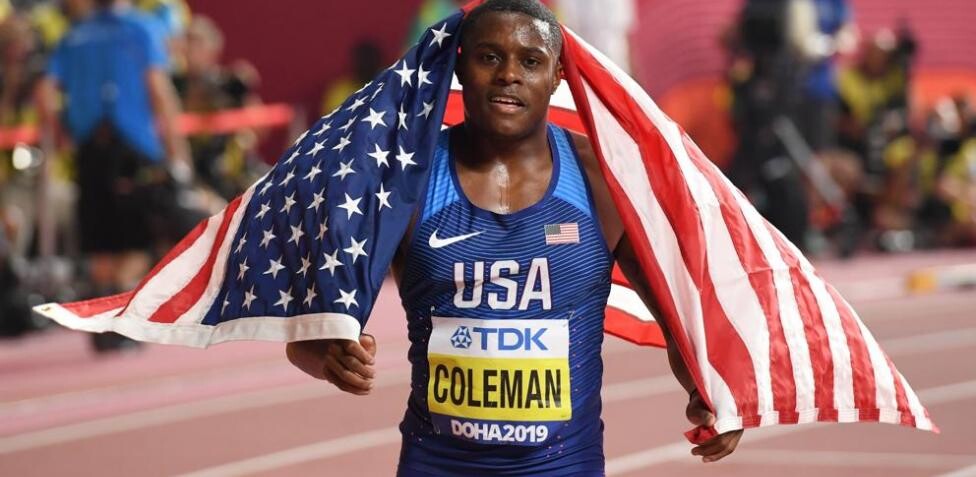
The Atlanta sprinter had been given a two-year suspension by an independent tribunal of track and field's Athletics Integrity Unit (AIU) before it was reduced to 18 months by the Court of Arbitration for Sport (CAS).
Under the so-called whereabouts rule, elite athletes must make themselves available for random out-of-competition testing and state a location and one-hour window where they can be found on any given day.
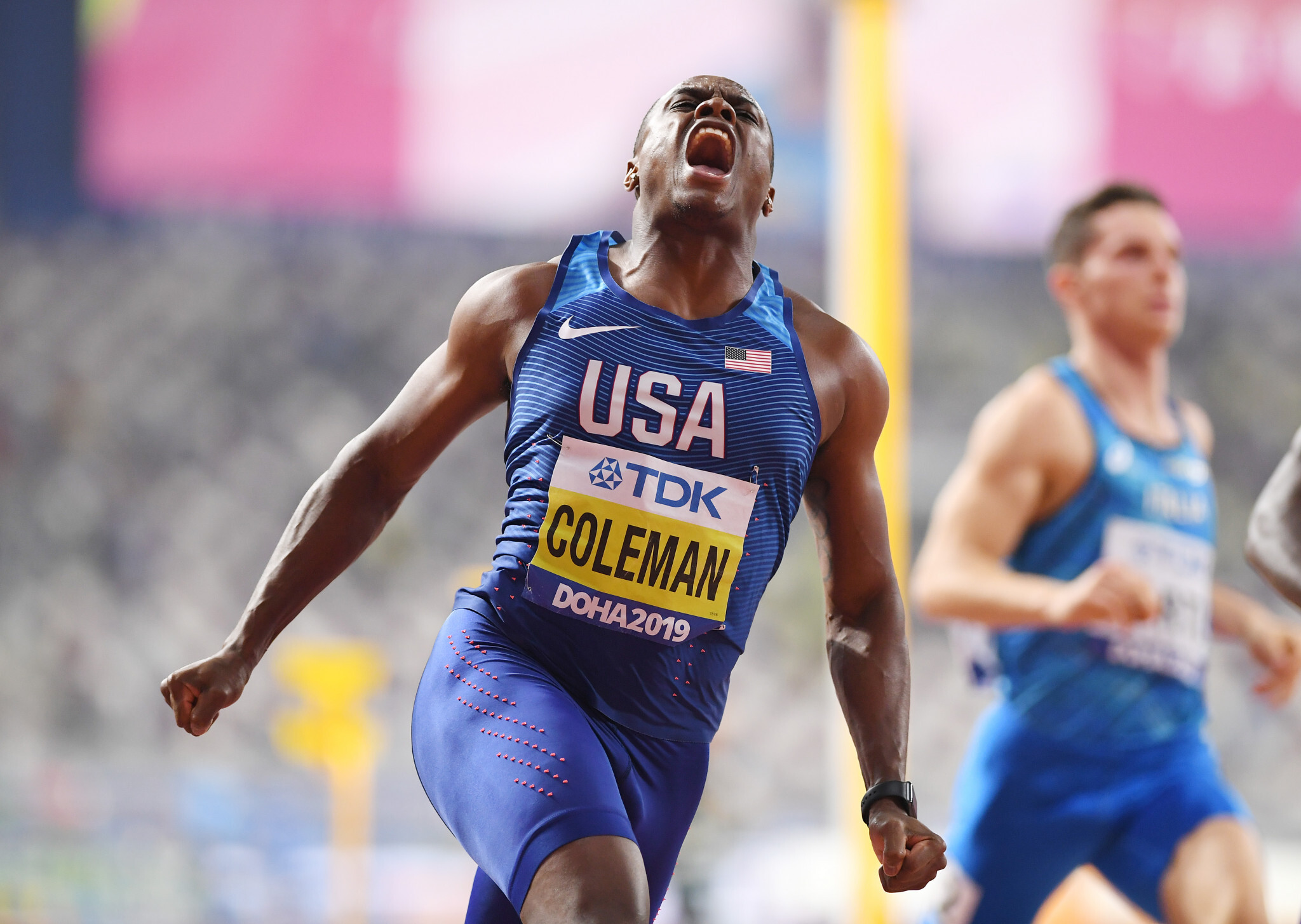
"I think it comes down to being more responsible," said Coleman, 25, who has never failed a doping test but was suspended after three failures to be at a location provided to anti-doping officials.
"Those are the rules and I just have to do better."
An alarm on his phone that reminds him to update his schedule daily and a new doorbell that alerts him to visitors are helping to prepare for testers, he said.
Training continued throughout most of the suspension, which ended in November, and he had begun speed work, Coleman said.
He does not see Millrose as just a trial run.
"I want to win," said Coleman. "I think I have a higher standard for myself than just being back out there and being average."
He said he would see how his body feels before determining his indoor season, though defending his world indoor 60m title in March in Belgrade is definitely on his schedule.
"The ultimate goal is to be ready for the world (outdoor) championships" said Coleman.
That meet in Eugene, Oregon in July will be the first World Championships held in the United States.
Whether Coleman will just defend his 100m title or add the 200 remains to be seen but he plans to run both during the regular season.
While he said he had "come to terms" with missing the Tokyo Games because of his suspension he wants to compete in Paris in 2024 and Los Angeles four years later.
Beyond that, Usain Bolt's 100m world record of 9.58 seconds remains on his bucket list.
"As time goes on, I think it is possible," said the American, who ran a personal best of 9.76 in winning the 2019 world championships.
Coleman said he wanted to be remembered as "one of the great competitors in sport".
"I want people to think of me as one of the legends, one of the great sprinters who have come through the USA ranks," he added.
by Gene Cherry
Login to leave a comment
NYRR Millrose Games
The Pinnacle of Indoor Track & Field The NYRR Millrose Games, first held in 1908, remains the premier indoor track and field competition in the United States. The 2025 edition will once again bring the world’s top professional, collegiate, and high school athletes to New York City for a day of thrilling competition. Hosted at the New Balance Track &...
more...How one runner made a bucket list trail running trip into reality - The Dream: Running Hut-to-Hut in the Dolomites
By Andy COCHRANE
I was no more than 8 years old when I saw my first photo of someone running in the Dolomites. Red windbreaker, dark shorts, storm brewing over a line of jagged peaks. I cut it out of the magazine (don’t tell my mom) and still have it in my wallet today. For years, trail running in the Italian Alps wasn’t on my bucket list; it was my bucket list.

This fall, I finally got to check it off. Along with two friends and my coach Magda Boulet, I flew to Venice and drove north into the Dolomites. We spent a week running from hut to hut, meandering 20 miles each day, stopping for cappuccinos and strudel and staying at small, family-run rifugios high up in the mountains.
It was a trip of hearty laughs, long meals, stout climbs, loose descents and a handful of exposed ledges to tiptoe across. But the top of the long list of highlights was the people we met. The kindness and care we received from total strangers was unlike anything I’d ever experienced.
Route & Rifugios
We worked with a local guiding company, Dolomite Mountains, that made our planning easy. They offered suggestions on trails, places to sleep and peaks to climb. Our route took us 100 miles from San Candido to Compatsch, along a few of the major thoroughfares. We ran through the Sesto subgroup of mountains, on the border of Italy’s German-speaking South Tyrol and the Italian Veneto region, which was the frontier of Austria and Italy in World War I.
Many of the trails here were developed by soldiers– old trenches, defensive barricades and forts are still visible in many places. On our first day we ran under Tre Cime, a trio of peaks that reminded me of home in the Tetons. We continued through remote valleys and high passes in Fanes-Sennes-Braies Nature Park, through the iconic Alta Badia valley, past Puez Nature Park to Val Gardena, through a beautiful alpine meadow called Alpe di Siusi, then summited Plattkofel and climbed up Rosszahnscharte, our last major pass, before running all the way down to Compatsch.
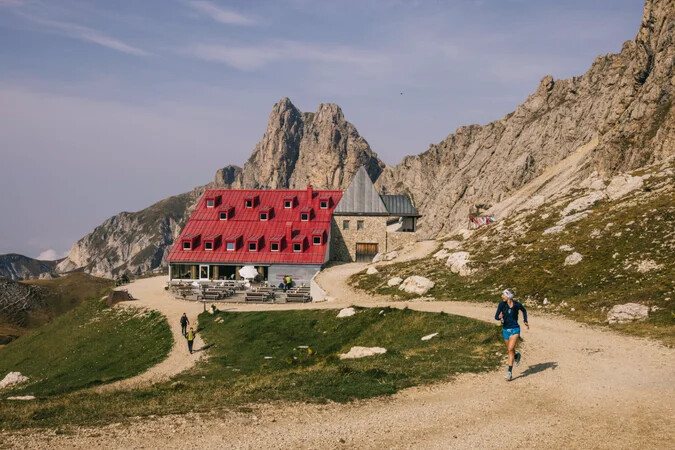
For the first two days we were led by Paolo Posocco, a local runner and incredibly knowledgeable guide, who offered a steady buffet of insights on the ecology, history and trails of the area. After two days with Paolo, we were sad to see him go– and still stay in touch to this day.
There are dozens of bucolic rifugios, but a few stand out from the rest. Drei Zinnen Blick is in a valley adjacent to a beautiful lake, close to Tre Cime. Rifugio Fodara Vedla is perched high in the range, with no cell service and warm and friendly hosts that make you feel like family. Rifugio Sassopiatto has some of the best views, perched on a ridgeline. Gostner Schwaige, a small restaurant near the very end of our run, was hands down the best food we had all trip.
Weather & Seasons
We spent the last week of September in the Dolomites, which is squarely in the fringe season. With cool temperatures (we had more than one frosty morning), leaves changing color and admittedly fickle weather, I think it was the perfect time to visit. There were considerably fewer tourists than during the peak seasons, making trails more fun to run. Midday rifugio stops were quieter and we had a lot more options for places to stay, making our interactions with hosts and immersion into local culture that much more intimate.
Gear We Used & Loved
Outdoor Voices Exercise Dress– OV only recently started making gear for the running scene and hit the mark with this dress. Breathable fabric, adjustable straps, two pockets and a built-in liner make it great for long days in the mountains.
Outdoor Voices Fast Track Shortsleeve– Less is often more. This running tee is comfortable, breathes well and is lightweight, everything I ask for in a good running base layer.
Stio Fremont Stretch Fleece Jogger– We had a lot of cold mornings when shorts wouldn’t quite cut it. These breathable fleece tights move with you and are some of the comfiest tights we’ve ever tested.
Stio Alpiner Hooded Jacket– A must-have layer for any high-output alpine missions, the Alpiner rarely overheats even when you’re sweaty. Stretchy and water resistant, it was perfect for our cool, misty days.
Tracksmith Brighton Base Layer– One of the brand’s most popular pieces for a reason. With a Merino wool mesh that’s more open around the core, it keeps your extremities warm while not overheating the rest of you. Plus it’s odor resistant, which is a huge bonus on a week-long trip.
Tracksmith Off Road Shorts– Designed for long days on the trail, these 2-in-1 shorts have a light outer layer with compression shorts underneath, a back belt for carrying an extra layer, two waist pockets for snacks and liner pockets for your phone or keys.
Ciele ALZCap– The newest iteration of the widely popular GOCap, it has more mesh coverage to maximize breathability and a more fitted, low profile look than previous versions.
Skida Nordic Hat– The brand’s first product hasn’t changed in years, for good reason. Originally designed for cross country skiing, we found the Nordic hat to be perfect for fall running. It wicks moisture while keeping you comfy and warm, and is easy to stow when not in use.
Brooks Catamount Trail Shoe– The trails in the Dolomites are rocky and rough, which means a shoe with good traction is key. With a unique rubber grip, foam cushioning and a protective midsole layer, the Catamount helped us get up and down half a dozen mountain passes.
Coros Apex Pro Watch– With an incredibly long battery life, accurate tracking and well-designed mapping features, the Apex Pro played a key role in keeping us on route and on time.
by Trail Runner Magazine
Login to leave a comment
Eliud Kipchoge would like to become first athlete to three-peat in the Olympic marathon
World Athletics sat down with the marathon world record holder and double Olympic marathon champion Eliud Kipchoge, to reflect on his great career. Kipchoge cited his previous Abbott World Major Marathon wins, his world record and running the first sub-two-hour marathon (unofficially) as things he joyfully looks back on.
When asked about his future goals, he said he wants to become the first athlete ever to win three straight Olympic gold medals in the marathon.
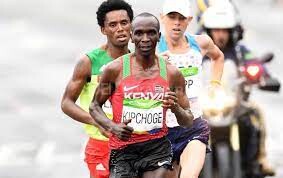
“My goal going into the 2020 games was to win back-to-back Olympic golds, and I’d like to win the third one,” Kipchoge said to World Athletics. He also mentioned other goals on his running bucket list, such as running all six Abbott World Marathon Majors and lowering his half marathon personal best.
If Kipchoge defends his title at the 2024 Paris Olympics, he would become the first-ever athlete to three-peat. Currently, he is in an exclusive club of three, the other two athletes being Abebe Bikila of Ethiopia (who won gold at both the 1960 and 1964 Games) and Waldemar Cierpinski of East Germany (who won gold at the 1976 and 1980 games, but it’s been highly speculated that he was part of East Germany’s state-sponsored doping program during the 1970s).
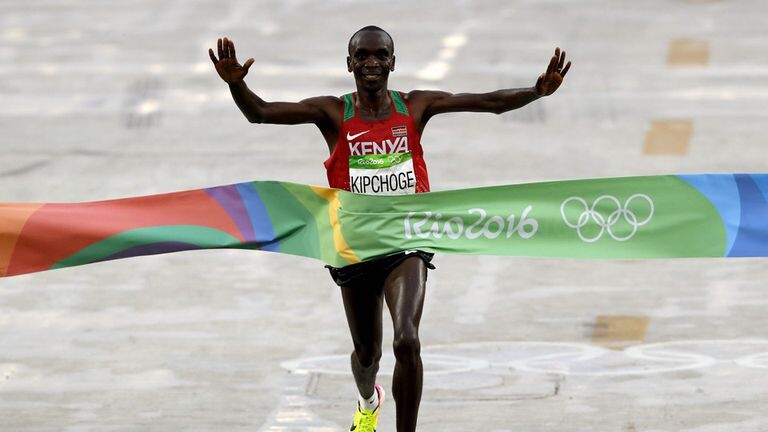
When he was asked about giving the world record another shot, Kipchoge said, “There are many people who could break my marathon world record. I think Geoffrey Kamworor will one day break the world record. Joshua Cheptegei will also make his mark in the marathon, and Kenenisa Bekele is still there.”
As his 2021 season comes to an end, Kipchoge isn’t sure of his 2022 race plans. “I always strive to improve my fitness, and I approach it like education. For example, if you have an exam in two years, you have to plan carefully for it to have success.”
by Marley Dickinson
Login to leave a comment
Paris 2024 Olympic Games
For this historic event, the City of Light is thinking big! Visitors will be able to watch events at top sporting venues in Paris and the Paris region, as well as at emblematic monuments in the capital visited by several millions of tourists each year. The promise of exceptional moments to experience in an exceptional setting! A great way to...
more...Top mistakes beginner runners make
Running isn’t easy, and there are many myths about how beginners can improve. If you are a new runner or someone who’s considering trying out the sport, take a look at these mistakes runners make before heading out the door, so you can avoid them.
Overtraining
Many runners go from doing nothing to high-volume training in a short period. This is an injury waiting to happen, as there is no better way to shock your body than going from nothing to running five days a week. Running more distance needs to be done gradually. Some runners follow the 10 per cent rule, which follows a slight increase in mileage each week.
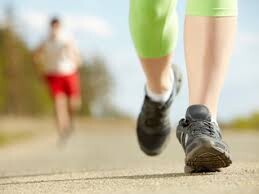
Running the same route at the same pace
It is great to have favourite routes, but running the same distance at the same pace on the same route won’t help if you are looking to improve. Try mixing up the route and adding a bit of distance to your current route. You can drop down the pace if you are feeling good that day. If you are wanting to run further or improve your endurance, you will need to make time each week for a longer run. Speed workouts are also important once or twice a week for runners looking to improve their speed. Try this speed workout for all levels.

Running hard on easy runs
Newsflash: unless it’s a race, no one on Strava cares about the pace of your easy run. This mistake goes hand and hand with overtraining. The point of easy runs is to keep your heart rate low recover from faster efforts. Your body will take longer to recover if you are doing hard effort after hard effort. You should be able to engage in conversation on your easy runs. If you can’t, it’s a sign that you are going too fast.
Choosing your running shoes by the way they look
The most important consideration should be comfort, not colour The point of buying running shoes is to have a pair that can get you from point A to point B without pain or discomfort. When buying shoes, it’s important to find the right pair. Be open to the shoes that are recommended for your feet and check out online reviews.
Many new runners fall victim to the hype and hysteria of “bucket list” type achievements like running the marathon. While certainly an achievable goal for most, marathons require a lot of time and training. Runners are better off starting with reasonable short-term goals over a month or two. Those new to running should also complete shorter benchmark races and distances such as the 5K, 10K and half-marathon before moving on to the marathon. Don’t try to run before you can walk – racing shorter distances will build up your confidence and running experience.
Ignoring your body
Don’t feel like you have to run. No one has to run, especially if you’re injured or tired. It’s important to listen to your body when you are starting. Don’t make running harder than it should be.
by Marley Dickinson
Login to leave a comment
Retired american auto race driver Danica Patrick preparing for first Boston Marathon
Three years after she retired from professional auto racing, Danica Patrick is preparing to take on the Boston Marathon.
The 39-year-old is the most successful woman in the history of American open-wheel car racing. Boston will be her very first marathon. She said it’s something that has been on her bucket list.
“I didn’t put much thought to it other than I want to run a marathon, but when the opportunity came up to run Boston, that was like a for sure yes,” Patrick said. “It wasn’t a put it off another year kind of thing, that was like let’s go.”
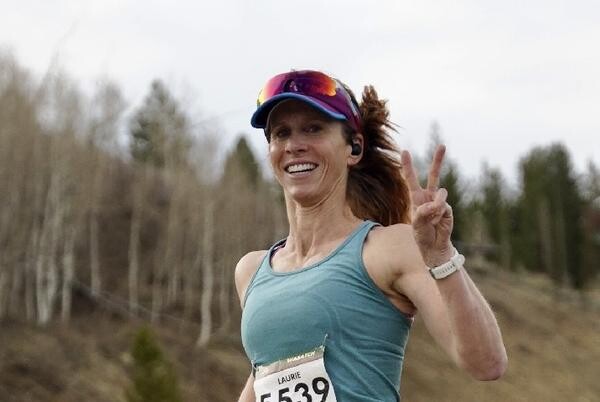
At the beginning, Patrick said she wasn’t sure if she wanted to train for the marathon.
“Part of it was kind of wanting an excuse if it didn’t go well maybe, but then the other part of it was, I just like running,” she said. “So, I thought I’ll be able to do this. It will be hard but I think I could go do it mentally tomorrow, because I’m strong mentally, but that was kind of that turning point where after those 16 and 18 mile runs, I was like, whoa I better put the miles in.”

Since her racing career ended, she said she has found herself doing lots of things out of her comfort zone including skydiving, bungee jumping and snowboarding.
“I realized I really enjoyed putting myself in those uncomfortable positions to really test myself,” she said.
Patrick is running as the captain of the Light Foundation marathon team.
Login to leave a comment
Boston Marathon
Among the nation’s oldest athletic clubs, the B.A.A. was established in 1887, and, in 1896, more than half of the U.S. Olympic Team at the first modern games was composed of B.A.A. club members. The Olympic Games provided the inspiration for the first Boston Marathon, which culminated the B.A.A. Games on April 19, 1897. John J. McDermott emerged from a...
more...Big Sur Marathon will return in 2022
The absence of the world-renowned Big Sur International Marathon for the past two years has left a void for the local running community. But while normalcy remains in the distance, organizers from the Big Sur Marathon Foundation have announced the event is returning on April 24, 2022.
“That’s our goal,” said Doug Thurston, race director and executive director of the Big Sur Marathon Foundation.
Registration for the race will begin Monday.
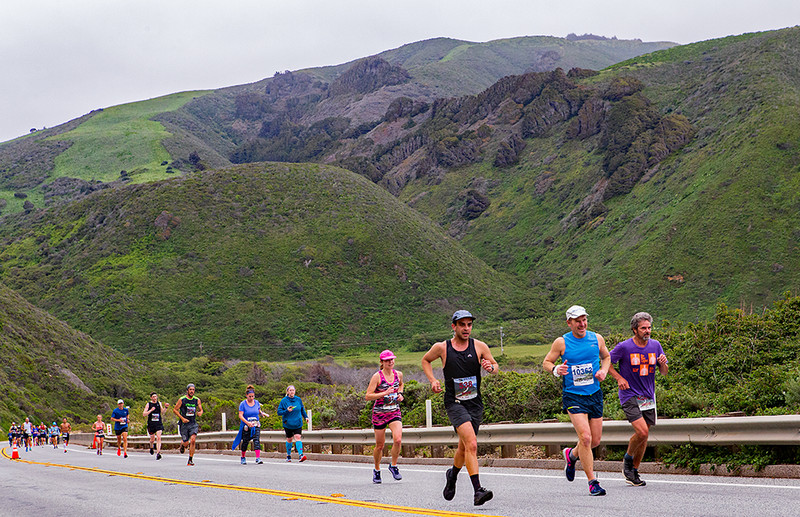
The decision to bring back the marathon was made with input from a health advisory committee the Big Sur Marathon Foundation formed in navigating through the pandemic.
“We looked at the current and projected data,” Thurston said. “We felt by April the pandemic would be a little more settled, and more importantly, the rate of vaccination use will be high enough for runners and volunteers to feel safe.”
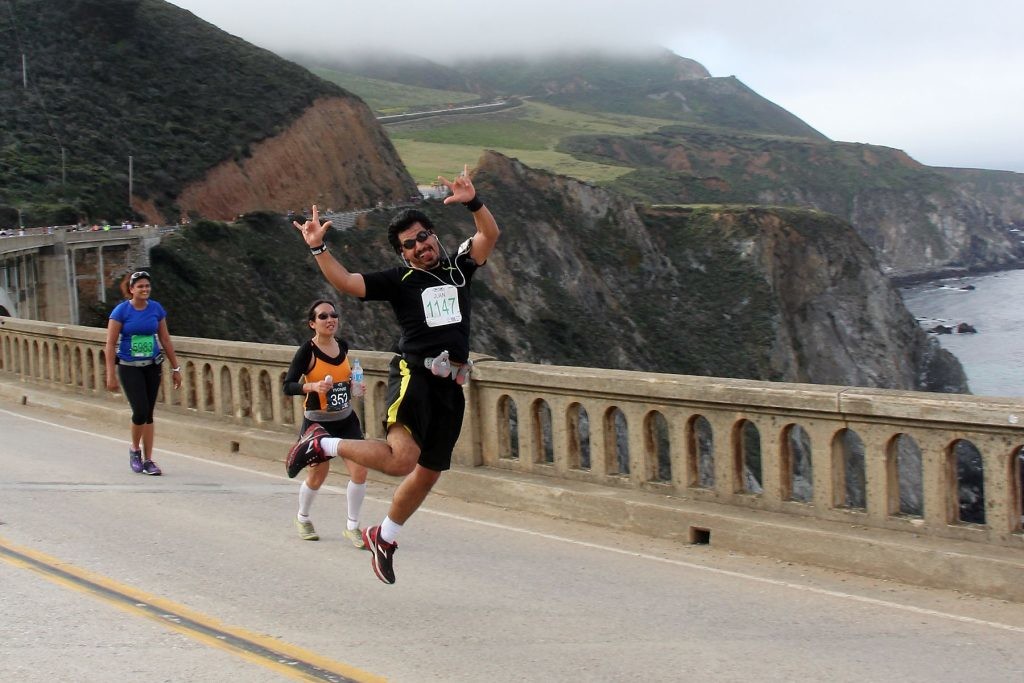
The event has sold out in each of the past 10 years it has been held, bringing thousands of runners from all over the world to take part in one of the more grueling, but picturesque races on the globe.
“It is a bucket list event,” Thurston said. “More than 80 percent of our marathon competitors do it one time.”
All of next April’s events could come with strings attached. While nothing has been decided, it’s likely that proof of vaccination or a negative test for COVID will be required to compete.
“What we are saying at this point is runners and volunteers should all anticipate that they’ll need to show proof of vaccination or have a negative test three days before the race,” Thurston said.
Because priority for the marathon race will go to entrants from the canceled 2020 race, availability to the general public could mean fewer spots in 2022.
“We have not reduced capacity as much as we are providing priority to those that signed up in 2020,” Thurston said. “We don’t know how many of those 2020 entrants will return. But we think the number of available spots for the general public will be fewer.”
While there are several other shorter races going on along Highway 1 simultaneously during the marathon, the maximum entrees for the 26-mile, 385-yard event is limited to 5,000.
“Based on the interest we’ve gathered, we anticipated all the races to sell out,” Thurston said.
There will be another registration date in late November that will be called a second chance drawing, according to Thurston.
Because the Big Sur Marathon Committee doesn’t know how many spots will open up, it will have just two drawings this year.
“We have a supply and demand situation,” Thurston said. “Historically, we have more people that want to get in than we have space. So we’ve gone to a random drawing this year.”
The Monterey Bay Half Marathon, which is also organized by the Big Sur Marathon Committe and has traditionally been run in November, has been canceled the past two years because of the pandemic.
Thurston said the two annual races often raise more than $400,000 for 100 non-profit organizations in the county,
“We’re a nonprofit organization raising money for other nonprofit organizations,” Thurston said. “It’s been trying times for our organization to not give grants to the community. It’s why we put these races on.”
While the past 18 months have been challenging for the Big Sur Marathon Committee, Thurston said that the organization is looking forward, not backward.
“In some ways, it went real slow,” Thurston said. “But here we are getting ready for April, 2022. As the pandemic has taught us over and over again, it makes its own rules. Most of the plans you make are subjective to whatever is happening with the pandemic.”
Because the race day experience is primarily outdoors, Thurston is confident that the event can be held in a safe and healthy manner as runners flood scenic Highway 1, where often the only sounds are the shoes slapping pavement, the wind howling off Hurricane Point and the ocean waves crashing against the rocks below.
“We will follow whatever the federal, state and county health departments provide,” Thurston said. “We are a health and fitness organization. We feel April 24 will be a viable date to host the race.”
by John Devine
Login to leave a comment
Big Sur Marathon
The Big Sur Marathon follows the most beautiful coastline in the world and, for runners, one of the most challenging. The athletes who participate may draw inspiration from the spectacular views, but it takes major discipline to conquer the hills of Highway One on the way to the finish line. Named "Best Marathon in North America" by The Ultimate Guide...
more...Meet the Texas man running 50 marathons in 50 weeks in 50 states
In November 2015, Houston’s Aaron Burros was shot five times. He was at work when he heard a commotion and went to help whoever was in distress. Burros did help, distracting the enraged individual while everyone in danger got away, but he was not so lucky. Lying on the ground after tackling one of the assailants, Burros stared up at another man, who was ready to shoot him. He now says everything slowed down in those moments, giving him a chance to wonder if he was going to die.
Fortunately, the gunman misfired his first shot, which only grazed Burros’s torso, giving him just enough time to get up and run away. As he fled, he was hit in both glutes, but he managed to get to safety without being shot fatally. Almost six years later, Burros is still plagued by the terrifying memories of that day, and a bullet fragment left in his right glute is a physical reminder of the attack, still sending shots of pain up and down his leg with each step. Despite all of this pain, both physical and mental, he continues to run, which he says gives him purpose, even in his darkest moments.
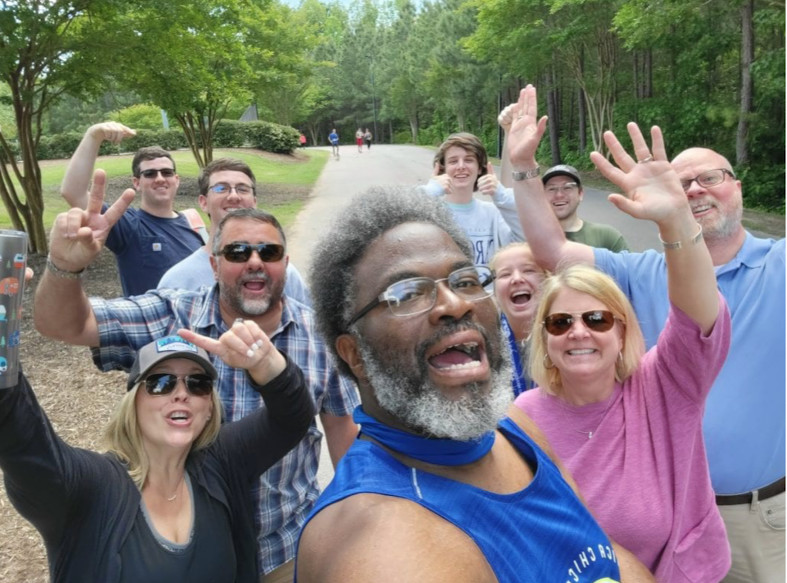
Today, Burros is in the middle of a year-long running challenge in which he is looking to run 50 marathons in 50 weeks in the 50 U.S. states, all as a celebration for his 50th birthday. He’s using the challenge as a way to fundraise for St. Jude Children’s Research Hospital in Tennessee, with the hope of raising a grand total of $50,000.
So far, Burros has completed 24 races this year, leaving him a little behind his goal of close to one per week. He has missed a few races, for various reasons, but he has made it to the start line of most of them, and he’s continuing to work toward his ultimate goal of raising $50,000.
Burros’s running journey
In 2010, years before he was attacked, Burros weighed close to 400 pounds. Looking to lose weight, he began running, slowly at first and only for 15 minutes or so each day. As any runner knows, though, with persistence comes fitness, and after a year, Burros had lost 100 pounds and gotten much better at running. By 2015, he was a seasoned marathoner, and he signed up for a 50-miler.
“That was set for two weeks after I got shot,” Burros says now. After undergoing surgery to have the bullets removed from his glutes, Burros asked his doctor if he could still run the race. His doctor told him that it would be a brutal run, but he wouldn’t cause any further damage, so Burros decided to go for it.
“I played sports my whole life,” Burros says. “My threshold for pain was high, so I just went out and tried to do the ultra.” He made it to about the 40-mile mark, but then he started falling down over and over again. He wasn’t tripping on anything, but he simply couldn’t stay on his feet. “There was this medic there who kept asking if I was OK. He told me to walk.”
Burros took the advice and slowed down, but not even a mile later, he was hit with an anxiety attack. “That was when my PTSD kicked in,” he says. “The anxiety, the depression, the crying spells. I couldn’t even walk in a straight line.” Burros didn’t make it to the finish that day, and he required assistance to get off the course. Going into the race, he had figured that the only obstacles he would face would be physical, and while he encountered his fair share of those challenges, it was the mental injury he suffered that forced him to pull out of that race.
“I had no clue what I was going through at that point,” he says. “I was facing all kinds of emotional battles.” For the next four years, Burros saw a number of specialists to help him work through the trauma, but he says his mental state only continued to worsen. It got to the point where he stopped doing pretty much everything, including running.
“I would wake up, sit at Starbucks all day, then go home and go to sleep,” he says. “I did that for four years. Unless I was going to my appointments, that was it, I didn’t go anywhere else. I didn’t know how to function.” In that time, he regained much of the weight he had lost before he was shot, until the scale eventually said 299.
“I told my psychiatrist I had to do something, that I wasn’t going back to the 300 club,” Burros says. “For me, gaining weight back was just as damaging as being shot.” He got back into running, setting a big goal for himself: to run each of the six World Marathon Majors (WMMs). In 2019, Burros checked four of those races off his list, running in London, Berlin, Chicago and New York City.
He had plans to run the Tokyo and Boston marathons in 2020 and complete his goal in just one year, but both mass participation events were cancelled due to COVID-19. This year, he will run the Boston Marathon, and he hopes to check Tokyo off his list in 2023. (Organizers of the Tokyo Marathon have closed the race to international runners this year and next, meaning anyone like Burros has to wait until at least 2023 to cross the event off his bucket list.)
Coming into 2021, Burros decided to celebrate his 50th birthday with a goal even more audacious than his plan to run all six WMMs. “I was turning 50 and I wanted to do something meaningful, to have some hope,” he says. “I know what running means to me, so I chose to do something with my running.”
50 in 50 in 50
Burros billed his event as running 50 marathons, and while most races he’ll run this year are 42.2K, he has mixed in a few 5Ks, 10Ks, half-marathons and even some ultras. Running 50 races in 50 weeks in all 50 states is a big goal, and it has taken its toll on Burros. “It’s been challenging, frustrating and overwhelming at times,” he says. But he has held onto hope throughout the journey, and managed to push through tough times. Two of his driving forces come in the form of children: Aiden and Gabby.
Aiden is a boy Burros met at the Chicago Marathon in 2019. He suffers from multiple illnesses, and Burros began to pray for him, but he didn’t think that was enough, and he decided to take action. After researching different causes, Burros decided to raise funds for St. Jude Children’s Research Hospital.
“I know medical costs can break a family, so I wanted to do something to help them and honour Aiden and Gabby,” he says. Burros only met Aiden briefly, but he has a close connection to Gabby, who is his grand-niece. Just before starting his 50 in 50 in 50 challenge, Burros heard from his brother, Gabby’s grandfather, that Gabby had been diagnosed with kidney cancer. Her kidney was successfully removed, but doctors found tumours in her skull.
Burros has had a tough time with his running challenge so far, and understandably so, but he uses Aiden and Gabby as inspiration to keep going. He knows he may miss a few weeks along the way, but the number of races he runs isn’t his priority, and instead, his main goal is to help as many children in similar positions to Aiden’s and Gabby’s as possible. To learn more about Burros’s journey and to follow along, click here, and to donate to the cause, click here.
by Running Magazine
Login to leave a comment
Eliud Kipchoge will be attempting to become only the third man to win back-to-back Olympic marathon gold medals
Eliud Kipchoge will be a man on a mission on August 8, 2021 when the Tokyo 2020 Olympic Games men's marathon takes place in Sapporo.
No defending Olympic champion has won a second straight marathon gold medal since Waldemar Cierpinski did so at Moscow 1980 as the reigning champion from 1976.
Now, more than 40 years later, Kenya's Kipchoge will attempt to become just the third person, after Cierpinski and Ethiopian legend Abebe Bikila (1960, 1964) to win back-to-back Olympic marathon titles.
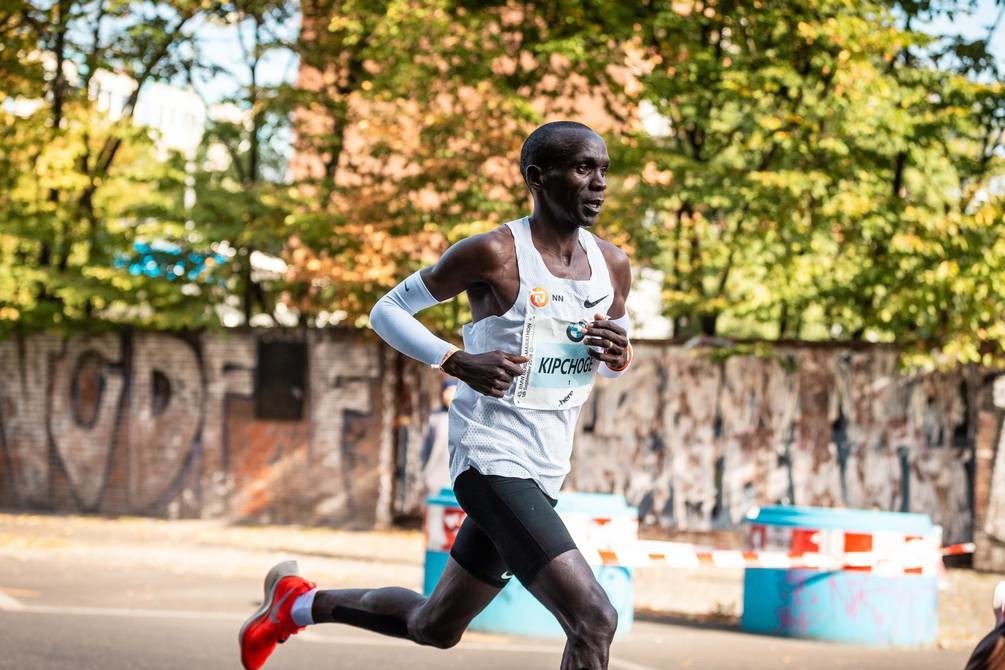
The effort will come nearly two years after becoming the first man to run a marathon distance under two hours, when he completed the INEOS 1:59 Challenge in Vienna in 1:59:40.
That particular achievement will be celebrated in August with the release of a new documentary, titled Kipchoge: The Last Milestone.
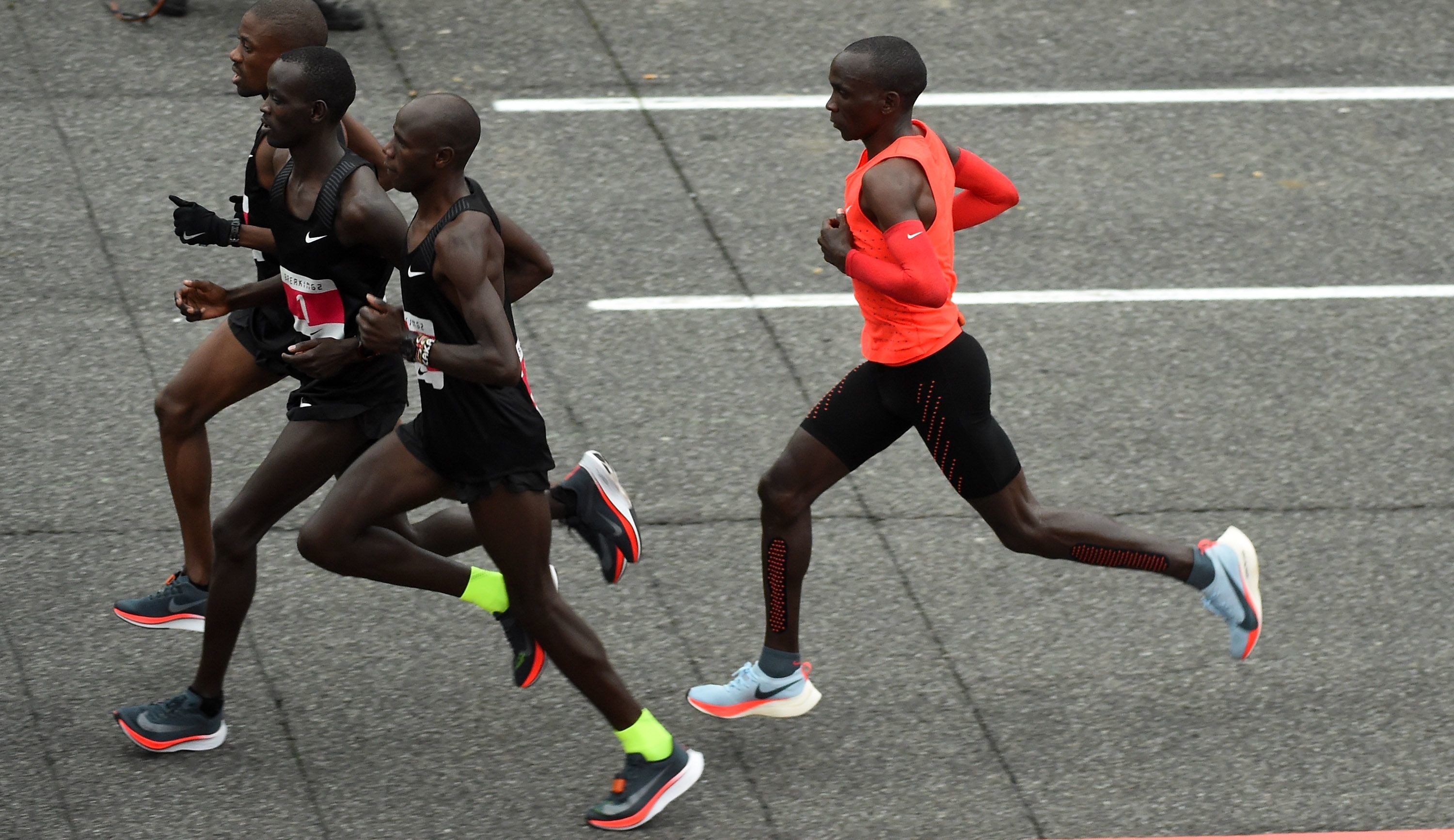
Eliud Kipchoge 1:59 documentary
The trailer for the Kenyan's new film has just been released, with Kipchoge writing on social media: "I hope by watching this film you will also feel inspired to run."
In the trailer, the 38-year-old says: "In the journey of life, there [are] ups and downs. In marathon, there [are] a lot of challenges, ups and downs. There is pain in training, pain in running, and joy at the end of the marathon."
The documentary will tell the story of how Kipchoge prepared for the monumental task.
Ridley Scott Creative Group, the documentary's producers, said in a statement that the film offers "unprecedented access to Eliud […] ahead of his attempt to achieve the seemingly impossible," including "footage from his home in Kenya, interviews with those closest to him, details of the daily rituals of his life and the dynamics within his team and community."
Kipchoge's training routine and how Covid affected it
The Kenyan has always been one who prefers training in a group.
He once said: "You cannot train alone and expect to run a fast time. There is a formula: 100% of me is nothing compared to 1% of the whole team."
However, the Covid-19 pandemic changed that. Suddenly, Kipchoge was forced to run alone on his training sessions due to lockdown restrictions.
"It was really hard to go training and not mix with people to fight the virus," he said in March ahead of the NN Mission Marathon, originally scheduled for Hamburg before being moved to Twente Airport, the Netherlands.
"I am happy to have since resumed training with the team, but we continue to make sure we do so safely within the protocols because the virus is still with us.
"Life has been hard but that is the way of the world – we need to get through it but I think we are on the right track to a brighter future.
"Life cannot stop, it does not stop for a single second. But what everyone should know is, the pandemic is just one of life’s challenges. Marathons are just like life, there are ups and downs every kilometre. Every mile there is a challenge.
"We should all be prepared to accommodate challenges in life but above all enjoy and embrace the challenges."
Kipchoge was vaccinated against Covid-19 at the end of April.
What next for Kipchoge? The star's future plans
The immediate future for Kipchoge consists of the Tokyo 2020 Olympic marathon in Sapporo, but beyond that, the 38-year-old has a "bucket list" of items he wants to check off.
Speaking recently to the Flotrack podcast, Kipchoge revealed that he wants to have competed in every World Marathon Major.
Kipchoge has competed in the Olympic Games, World Championships, London, Berlin, and Chicago Marathons, leaving him with the Boston, New York, and Tokyo Marathons.
He also admitted that he would like to run even longer distances, beyond the marathon's 42.195km.
"I would love to try 80km, 60km. I need to go to California and hike for six hours," he told Flotrack.
by ZK Goh
Login to leave a comment
Tokyo 2020 Olympic Games
Fifty-six years after having organized the Olympic Games, the Japanese capital will be hosting a Summer edition for the second time, originally scheduled from July 24 to August 9, 2020, the games were postponed due to coronavirus outbreak, the postponed Tokyo Olympics will be held from July 23 to August 8 in 2021, according to the International Olympic Committee decision. ...
more...Eliud Kipchoge wants to run ‘all major marathons’
Boston, New York, and Tokyo are on the GOAT marathoner's bucket list
Eliud Kipchoge has revealed he would like to run “all major marathons” in the remainder of his career.
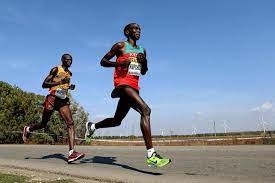
Speaking to Gordon Mack on the Flotrack podcast, the GOAT marathoner said because he has already run Berlin, London, and Chicago, the remaining major marathons on his “bucket list” were Boston, New York, and Tokyo.
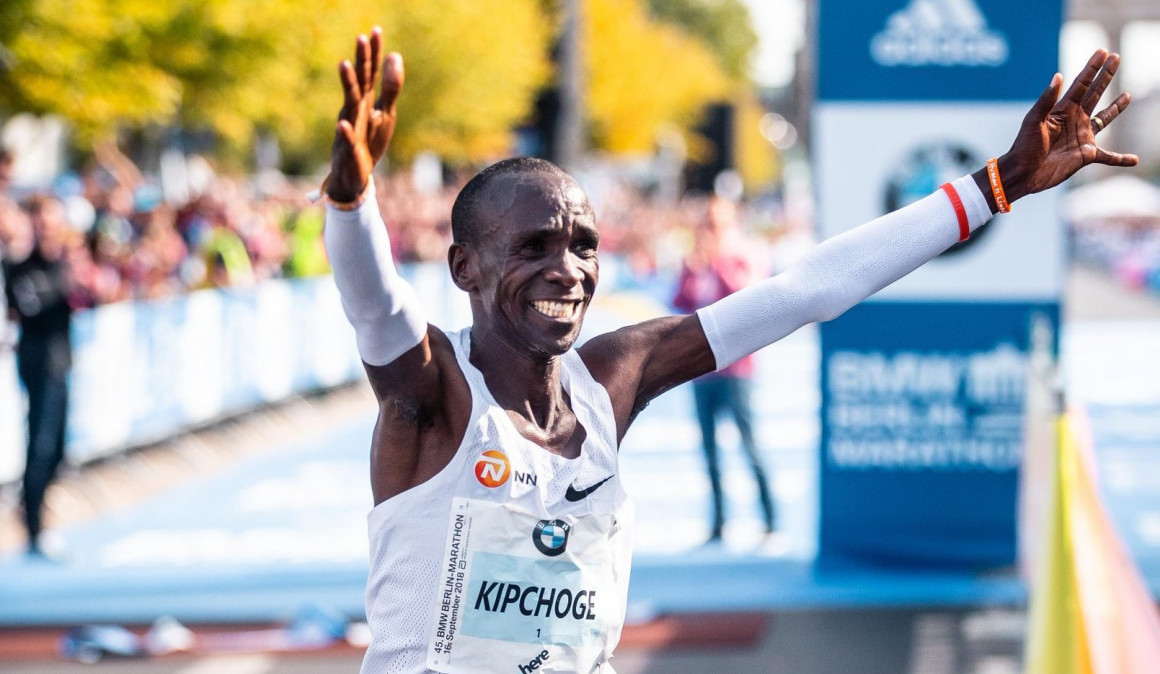
He said because he plans to focus firstly on the Tokyo Olympics this summer, before a busy autumn of marathons, he would “close” his bucket list before “jumping in” again on January 1 2022.
Kipchoge also suggested he might be interested in dabbling in ultrarunning for a fresh challenge.
“I would love to try 80km, 60km. I need to go to California and hike for six hours," he said. He added that he was looking forward to the next phase of his running after his professional career is over: “I’m really excited to approach life in another dimension,” he said, “to go up the mountains with different people, with different lifestyles.”
He said, “I’m really excited to instil inspiration in the youth of the whole world. To travel along the big cities, in every country if possible, to send positive vibes.”
Kipchoge was speaking to Flotrack ahead of taking part in NN Running’s MA RA TH ON virtual marathon relay this weekend. Like others taking part in the virtual race, he will run a 10.5km relay on May 22-23 which will be added to the efforts of three teammates to make up the full marathon distance.
by Runner’s World
Login to leave a comment
TCS London Marathon
The London Marathon was first run on March 29, 1981 and has been held in the spring of every year since 2010. It is sponsored by Virgin Money and was founded by the former Olympic champion and journalist Chris Brasher and Welsh athlete John Disley. It is organized by Hugh Brasher (son of Chris) as Race Director and Nick Bitel...
more...Ultra-Marathoners Share Their Top Tips for Every Kind of Runner
Here are their tips to help you achieve your running goals.
Schedule time to run
It might sound silly, but practically every athlete recommended setting time aside in your schedule. “The less I have to decide, the easier it is to get out,” explains Bradley. “I stick to a similar run plan week to week and month to month, so I don’t have to even think about getting out the door, I just do it.”
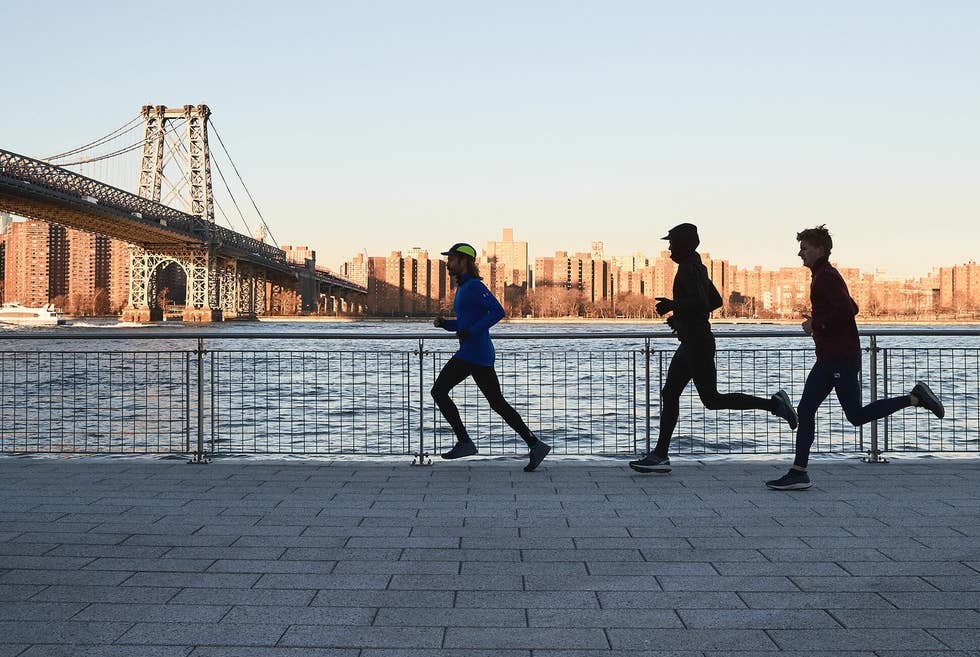
Sharman, the Leadville 100 Trail Champion in 2017, agrees: “Create a routine and stick to it unless you have genuine reasons not to. After a couple of weeks, the routine will become the norm and will be much more self-reinforcing.”

Even when you’re traveling, carve out some time for yourself to run
“For me that involves morning runs/activity to get me out the door and to kickstart my day,” Allen says. “When I travel and don’t know where I’m going, it can seem overwhelming, but if I’m committed to [it], I can have a general plan to explore and it usually works out in the end.”
Sign up for a race
“Find an event to sign up for that is just a little bit outside of your comfort zone,” suggests Boulet. “It will help motivate you to get out and train if you’ve paid your entry fee and declared to your friends and family (some of whom will hopefully join you!) that you will do this event.”
It helps if the race is in a beautiful place or somewhere you’ve had on your bucket list for ages, adds Bradley. “It makes it a lot easier to stick with it when everything starts to fall apart when you are in love with the project, race or goal.”
Hire a coach
While a few of these athletes are paid to run (and do it full time), many juggle full-time jobs with their passion for running. One commonality is the insight a coach can provide. “Not only does it take a lot of the strategic guesswork off my plate, but it also gives me another person to be accountable to,” Bowman says.
If a coach is out of the question, look for support in running groups
Coaches can be expensive, and that might be out of the question for you. There are other options to hold yourself accountable. When Boulet doesn’t feel like running, she reaches out to her network. “I have an extra cup of coffee and call a friend to schedule a running date,” she says. “Making a commitment to meet someone always works for me.”
Get out the door
Mental toughness is something that these athletes have in spades. They head out on practice runs that dwarf my measly 20- to 30-mile weeks. But if you don’t feel you have it, don’t fret. “Toughness is not something you’re born with, it’s a skill you can gain with practice,” Boulet says. “Practice being tough in regular training or it won’t be there on race day,” Sharman adds.
If you don’t feel an urge to get up and run every single day, that’s okay. “I like to get out the door even if I’m feeling tired,” Allen says. “I tell myself to see how I feel for the first ten minutes and I go from there.”
No matter what your training day looks like, remember to listen to your body
Sometimes you’ll jump up out of bed and hit the road. Other days, you might feel lazy and not want to go. Do it for your mental health, or bargain with yourself. “I remind myself how much better I feel after running than I did before,” Boulet says.
But remember to take rest days, too. “A common mistake for newer ultra and trail runners isn’t that they aren’t training hard enough, it’s that they aren’t training smart enough and respecting rest and recovery,” says Krar. “Remember that a single run or single race does not define you. There will be bumps along the way and they’re to be expected. Most importantly, run with a purpose. Show up and do your best.”
A little mental prep goes a long way
Everyone needs a little help to get through a long-distance race. The monotony of one foot in front of the other can use a spike. “I’ve used mediation apps like Headspace and Calm,” says Bowman. “These apps cultivate mental and emotional poise, so when adversity inevitably arises, I’m less likely to be overwhelmed by it.”
Running is a journey (literally), so “don’t aim for the stars, aim for the trees,” Bosio says. “Make resolutions that are reasonably attainable. Don’t beat yourself up if you don’t stick with it 100 percent. Tomorrow is always another day!”
by Meg Lappe
Login to leave a comment
Pro Runner Rebecca Mehra Dances Her Way to $5,000 on Ellen DeGeneres’s Game Show
On March 28, Mehra, 26, who runs for Oiselle’s Littlewings Athletics, appeared on Ellen DeGeneres’s gameshow, called Ellen’s Game of Games. On the show, contestants participate in four different preliminary games; the four winners then advance to a semifinal and final round for a chance to win $100,000. The middle-distance runner, who based in Bend, Oregon, filmed the episode in August and September.
The Ellen DeGeneres Show reached out to Mehra after she tweeted about helping an elderly couple get groceries at the start of the pandemic, and her experience went viral. Celebrities, including DeGeneres, retweeted Mehra’s tweet. Because of pandemic-induced uncertainty, Mehra didn’t go on DeGeneres’s talk show, but she was instead recommended for the game show.

“I actually grew up watching game shows,” Mehra told Runner’s World. “Game Show Network was on all the time at my house. I don’t want to call this a bucket list iteme because I didn’t know it was on my bucket list. When would I get a chance to meet Ellen, compete on a gameshow, and get into my pro athlete mindset in musical chairs again?”
After a few practice games via Zoom and a quarantine at a Los Angeles hotel, Mehra was whisked away when it was her time to compete. Masked up until the moment before they started filming, Mehra walked in and awaited her fate in front of an empty studio audience.
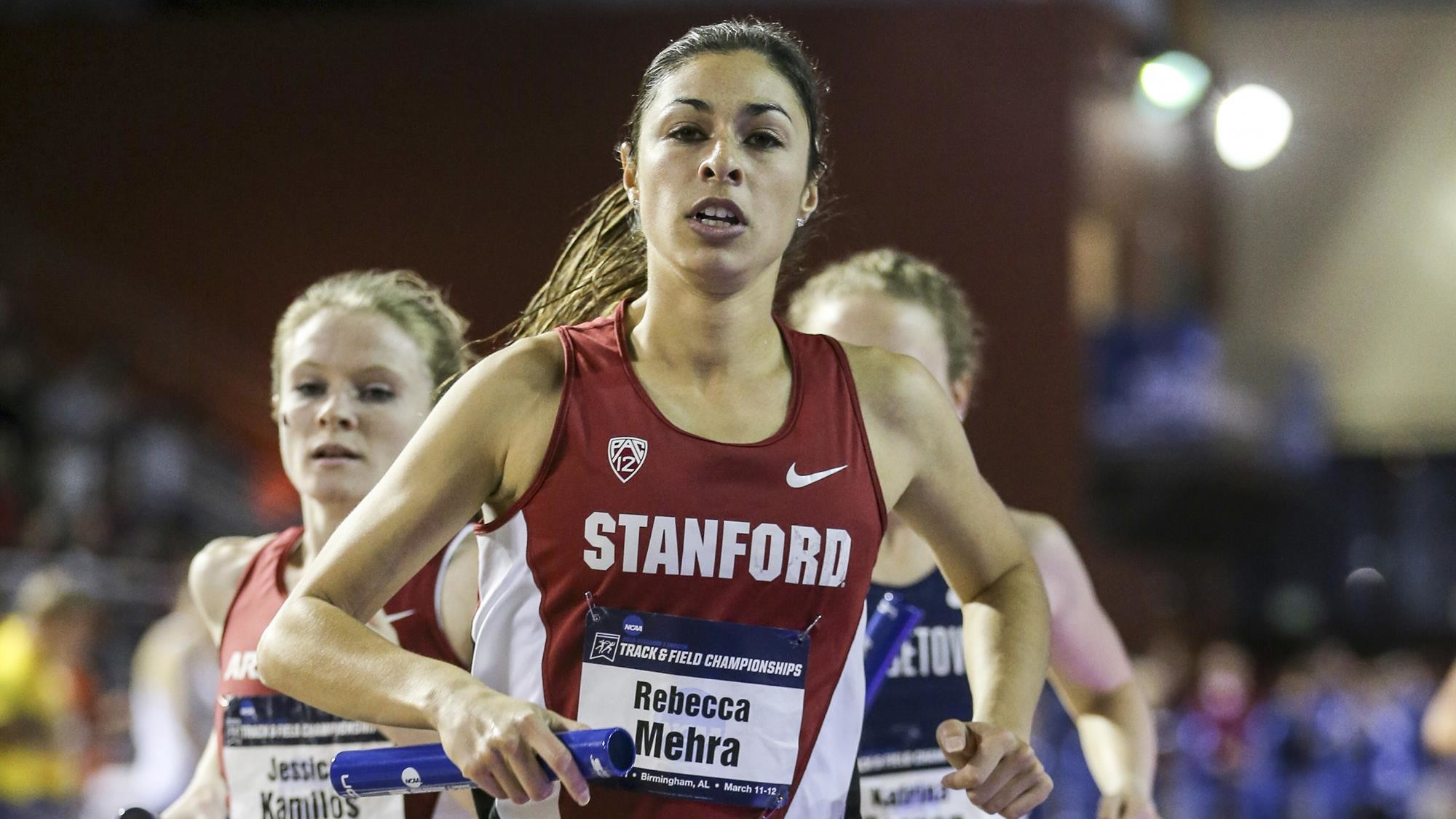
“Watching it live on Sunday, they did a good job making it feel like people were there,” Mehra said. “It was so quiet when it was going on and on TV it seems like a big party.”
This was noticeable in Mehra’s first challenge: Blindfolded Musical Chairs. Music really did play, but it was actually silent as she crawled, rolled, and boogied her way into a spot in the next round.
“You have to commit and go with it,” Mehra said about her blindfolded dance moves. “Do the dance, crawl on the floor. It looks sillier if you don’t. I went with it, and I got to give Ellen a hug, so it was a once-in-a-lifetime experience.”
In the semifinals, she and three competitors had to answer a question correctly, or endure what looked like a pretty terrifying fall through a trap door.
Winning on the question, “Where were gummy bears invented” (spoiler alert: Germany), Mehra advanced to the finals. (You can watch this round below.)
“In the show, they cut out two to three questions,” Mehra said. “It was a smart group of people, and we went several rounds before people dropped. I got lucky knowing the answers I did, and within 10 minutes, we were filming the last round.”
Mehra’s final challenge was a speed-question round; each correct answer would increase her winnings. While she struggled to get into a rhythm, she was able to walk away with $5,000. On the show, she stated she hoped to donate a portion of her winnings to Littlewings Athletics, which is giving more opportunities to up-and-coming women in the sport. She plans to follow through on that promise.
Also, Mehra presented DeGeneres with a Oiselle goodie bag.
If you are interested in checking out the full episode, and to see Mehra’s dance moves, you can find it (with commercials) here.
This isn’t the first time we’ve seen pros on our regularly scheduled TV programs. Back in February 2020, Tatyana McFadden and Scout Bassett appeared on an episode of Project Runway. 

by Runner's World
Login to leave a comment
Pikes Peak Marathon legend Arlene Pieper Stine, the first woman to run a sanctioned marathon, has died
Eight years before Kathrine Switzer shocked the world by running the Boston Marathon, Arlene Pieper Stine did her 26 miles in the Pikes Peak Marathon, with a 9-year-old daughter in tow
Arlene Pieper Stine got into the Pikes Peak Marathon in 1959 as a stunt to market her Colorado Springs health club. When she finished, the 29-year-old mother of three was in the record books as the first woman to finish a sanctioned marathon. Unlike the Boston Marathon, the Pikes Peak race never had a prohibition on women participating.
One of Colorado mountain running’s most beloved heroes used to climb up the ladder next to the sign draped across the town of Manitou Springs’s main drag — “Welcome, Pikes Peak Runners” — so that she could send off the hundreds of runners who had packed the narrow street to head off for the summit of the 14,115-foot mountain more than 13 miles and 7,800 of vertical gain in the distance. Then they would turn around for the return trip.
“Runners, ready,” she said into the microphone in the absolute still morning of sun, rain, or even snow of late August. “Go!” said Arlene Pieper Stine.
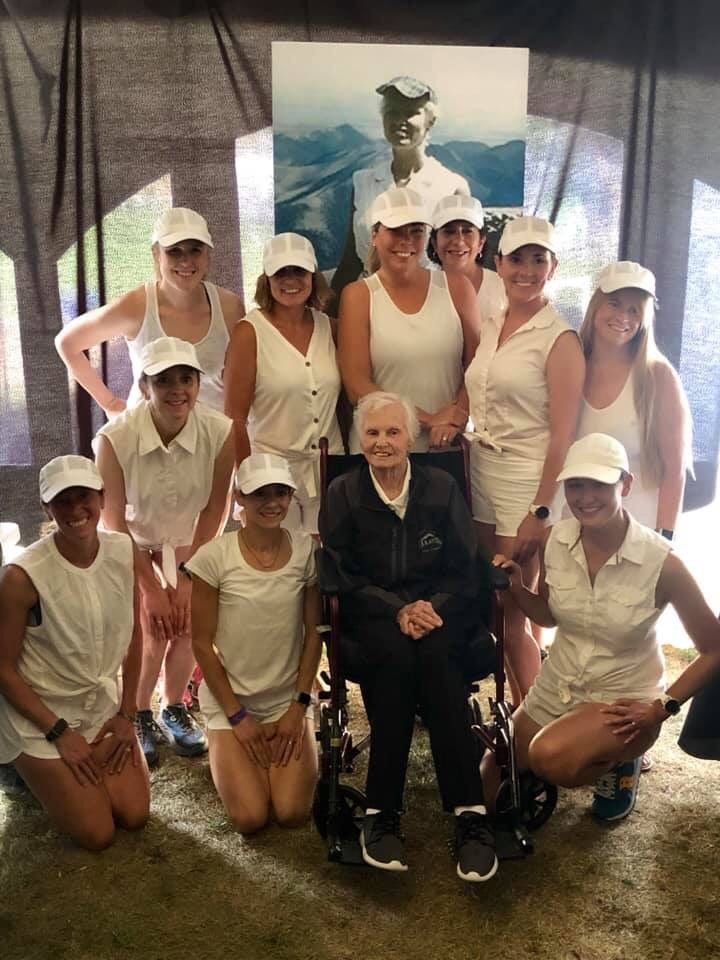
Pieper Stine became the race’s folk hero in 2009 when race officials went looking for the former Colorado Springs resident and health club owner so that they could bring her back to her hometown with some news: Not only had she been the first woman to complete the Pikes Peak Marathon — the punishing switchbacks, rocky single-track, and finally, the last few miles above timberline at over 12,000 feet — but she was the first woman to complete any sanctioned marathon, eight years before Kathrine Switzer became the first woman to complete the Boston Marathon in 1967.
Fifty years after she finished the full “out and back,” as Peak marathon veterans refer to the course, with a time of 9 hours and 16 minutes, Pieper Stine was once again at the start line.
Pieper Stine died Feb. 11, 2021, a month shy of her 91st birthday, as she was trying to build up her strength after battling COVID-19, her daughter Kathy Pieper said.
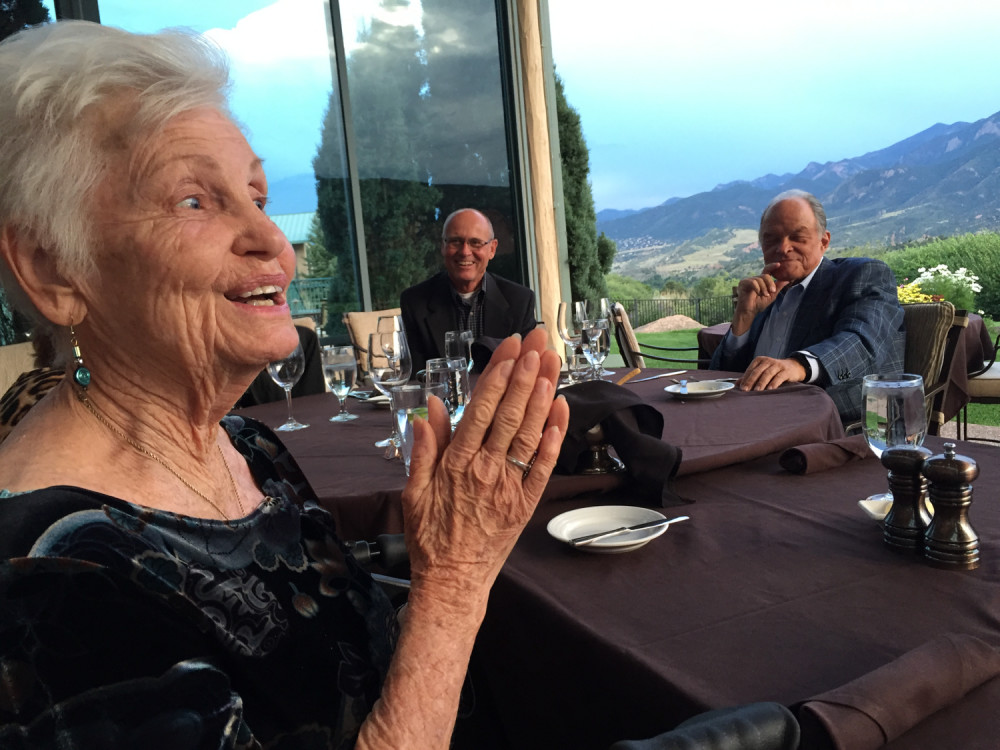
“She got cards and letters from runners and it meant so much to her,” Pieper said. “And I was able to go into her assisted living facility — all covered up — to see her. She ran such a good race.”
She became a role model and inspiration for women runners who looked to her for her boldness and independent spirit — a wife, mother, business owner, and runner who hiked and ran on Pikes Peak with her family in the 1950s, dressed for the race in white sleeveless blouse, white shorts, white headwrap, and tennis shoes from Woolworths.
“We didn’t carry water or have aid stations in those days,” she said in a 2014 interview. “I still remember it like it was yesterday. You can be a wonderful wife and mother, but it showed me that if there’s something you really want to do, you should go for it.”
Year after year, Pieper Stine was as much a part of the race as the unpredictable weather, the friendliness and camaraderie of the runners whether elite or there for a bucket list challenge, or because life wouldn’t be the same without that weekend in late August that turned Manitou Springs into an excited, nervous, and glad-to-be alive running party.
“If I can do it, so can you,” she told the runners who thronged around her in Memorial Park at the Race Expo, at the pre-race spaghetti dinners, or on the streets of town.
From the first time that she and Pieper returned to Manitou Springs in 2009 for the 50th anniversary celebration of the race that they had run together — Arlene at age 29 and Kathy at age 9 — Pieper Stine became living reminders of the beauty and challenge of running the Peak.
“‘It’s a beautiful day for a race,’ I remember her saying as we passed runners that day,” Pieper said of the race she did with her mother in 1959. “And she kept that same attitude every year. She never could believe that runners would come up to her and say ‘Can you just touch my hand for luck?’ or ‘It’s so good to see you again.’ She remembered everyone and had wanted to say something to them all. She could barely walk 10 paces down the sidewalk and people would say, ‘Can I get your picture? Can I get your autograph?’ It was just the thrill of her life when [race organizers] found her.”
In 2019, to mark the 60th anniversary of Pieper Stine’s marathon step for woman runners everywhere, a group of women runners dressed in white sleeveless blouses, white shorts, and headscarves and hats gathered to run up Pikes Peak to mark the occasion. And like the rock star of the trail running world she was for women, Pieper Stine showed up for the celebration.
Four years earlier, in 2015, I had the opportunity to celebrate Pieper Stine myself. The night before the marathon, I joined the Peak Busters gathering at the Manitou Springs City Hall and was reassured by Arlene, as I had come to know her. I had come back from falls and injuries like everyone else on the peak, since my first marathon on the mountain, in 2004.
At that time, Arlene was using a wheelchair after hip surgery. It was my second out and back and I was eager but nervous. “Good luck,” she said. “You’ll have a great time!” I bent down and she took her hand in mine. “OK,” I said, feeling tears about to come, feeling a part of history of this mountain that had both tested me and rewarding my training — or had spit me out during a few memorable Ascents and my first marathon. But I could always count on feeling inspired by the women who had come before me, especially Arlene.
The next morning, she was at the start, shaking hands, giving hugs, and talking to racers through the speakers, to get ready and GO!
“Without pioneering efforts like Arlene’s, we would have no history nor legacy in our sport,” said Nancy Hobbs, executive director of the American Trail Running Association. “Many women — young and old — have been inspired by her.
That includes Pieper, who is planning to train for the Ascent along with one of Pieper Stine’s grandsons, Kyle, 29, who wants to train and qualify for the marathon. She also is survived by daughters Karen, 67, and Linda, 57, and her son, Karl, 66; three other grandchildren and four great-grandchildren.
“Mom wanted to sprinkle some of her ashes on Pikes Peak,” Pieper said. “And I thought, ‘I’d like to go back 60 years later and see if I can do the Ascent.’ Maybe I can finish it, maybe not even do it as a race. And then maybe I could keep her legacy going.”
by Jill Rothenberg
Login to leave a comment
Pike's Peak Marathon
A Journey to the Top and Perhaps Back The Pikes Peak Ascent® and Pikes Peak Marathon® will redefine what you call running. Sure, they start out like a lot of races on Any Street, USA. But your first left turn will have you turning in the direction of up! During the next 10 miles, as you gain almost 6,000...
more...Des Linden will be looking to break the 50K world record next month
Boston Marathon champ Des Linden is officially entering the world of ultramarathoning, as she has announced that she will attempt to break the 50K world record next month.
In mid-April at an undisclosed location (details are intentionally vague because of pandemic concerns), she will take a crack at U.K. runner Aly Dixon‘s record of 3:07:20, which she set in 2019.
In October, Linden invited runners to participate in a challenge she called Run Destober, in which each day, participants ran the number of kilometers (or miles) that corresponded to the date. For example, on October 1 participants ran one kilometer, and on October 31 they ran 31. In total, the challenge worked out to be either 496K or 496 miles.
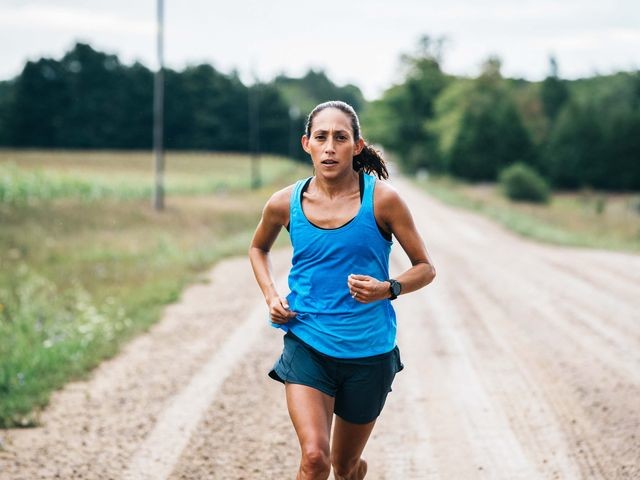
While this was a great way to engage the running community, it was also an effective way for Linden to slowly ramp up her weekly mileage and see how her body responded to the increased volume.
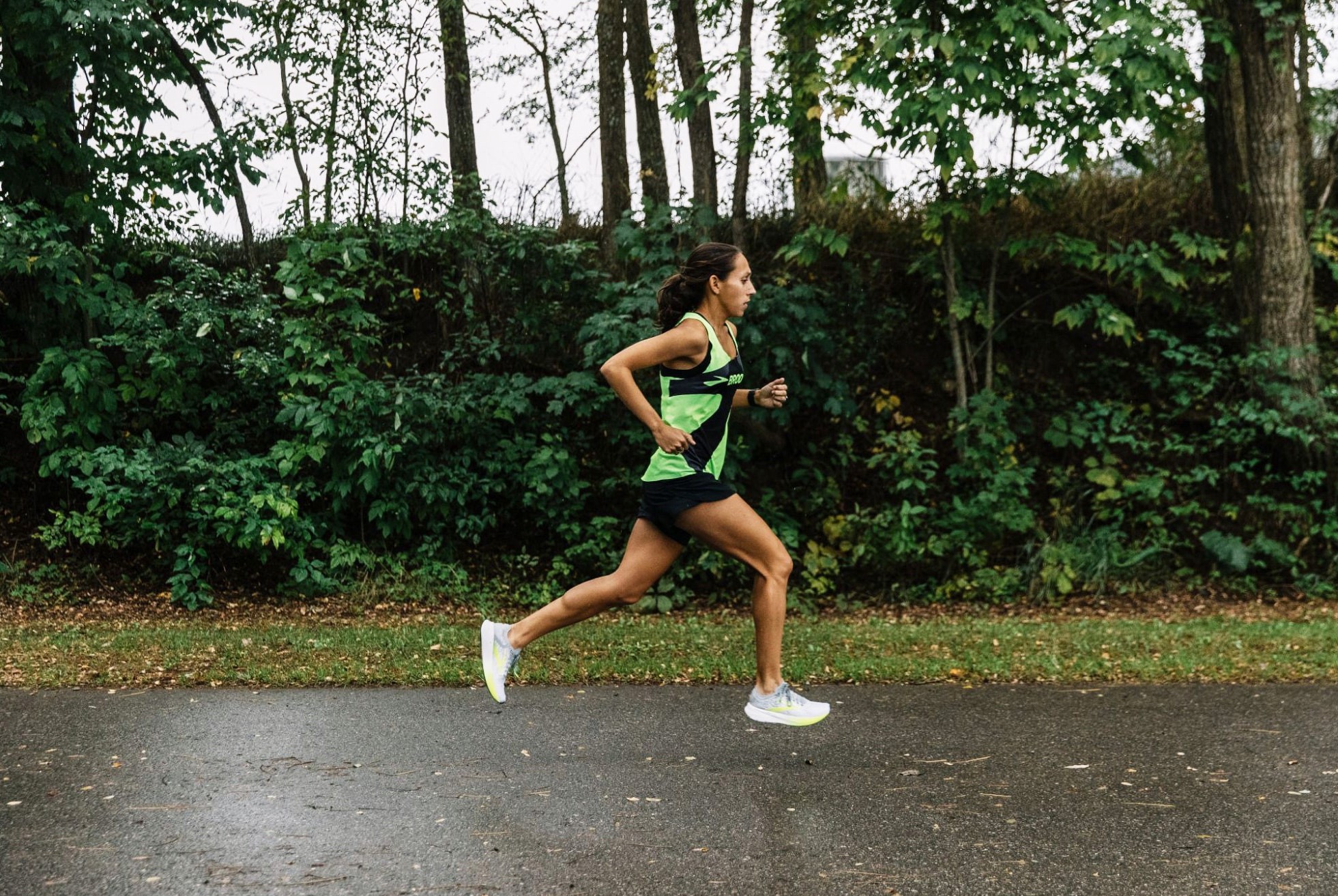
Back in August, Linden also expressed interest in ultramarathoning when she said in an interview that the Comrades Marathon and UTMB were on her bucket list. It is unclear whether this run will take place on the road or the trails, but either way, her result next month will be a good indicator of how she’ll fare when she finally decides to tackle the trails.
The headphone company Jaybird is supporting Linden during her record-breaking attempt, and the official announcement was made on their Instagram page on Tuesday. In order to beat Dixon’s time, Linden will need to maintain a pace of 3:44 per kilometer.
Given that she ran approximately 3:22 per kilometer for her marathon personal best of 2:22:38, this pace doesn’t seem unattainable, but of course, in a 50K race, it’s hard to say what could happen in the last 8K. We will be waiting for her result in April, and if she accomplishes her goal we expect to see Linden attempt more ultras in the future.
by Brittany Hambleton
Login to leave a comment


